

Big Australia Bucket List
Absolutely EVERYTHING to see, do and experience in Australia
25+ ESSENTIAL Travel Tips for Australia (Know Before You Go!)
Australia, or the “Land Down Under”, is one of the most coveted tourist destinations in the world – with its fine balance between wildlife and environment conservation and cosmopolitan modern-day living.
Both a country and a continent, Australia definitely has a lot in store for repeat and first-time travellers alike! Witness kangaroos and koalas right before your eyes, dip in pristine ocean waters, soak up the summer heat and the tingling sensation of the sun onto your skin, and enjoy scenic views of bustling cities and breathtaking nature throughout your travels!
Be sure to read this guide to our most essential travel tips for Australia before packing your bags and preparing for this once-in-a-lifetime trip! It’s the only list of Australia travel tips you will ever need and it’s everything you need to know before you go!
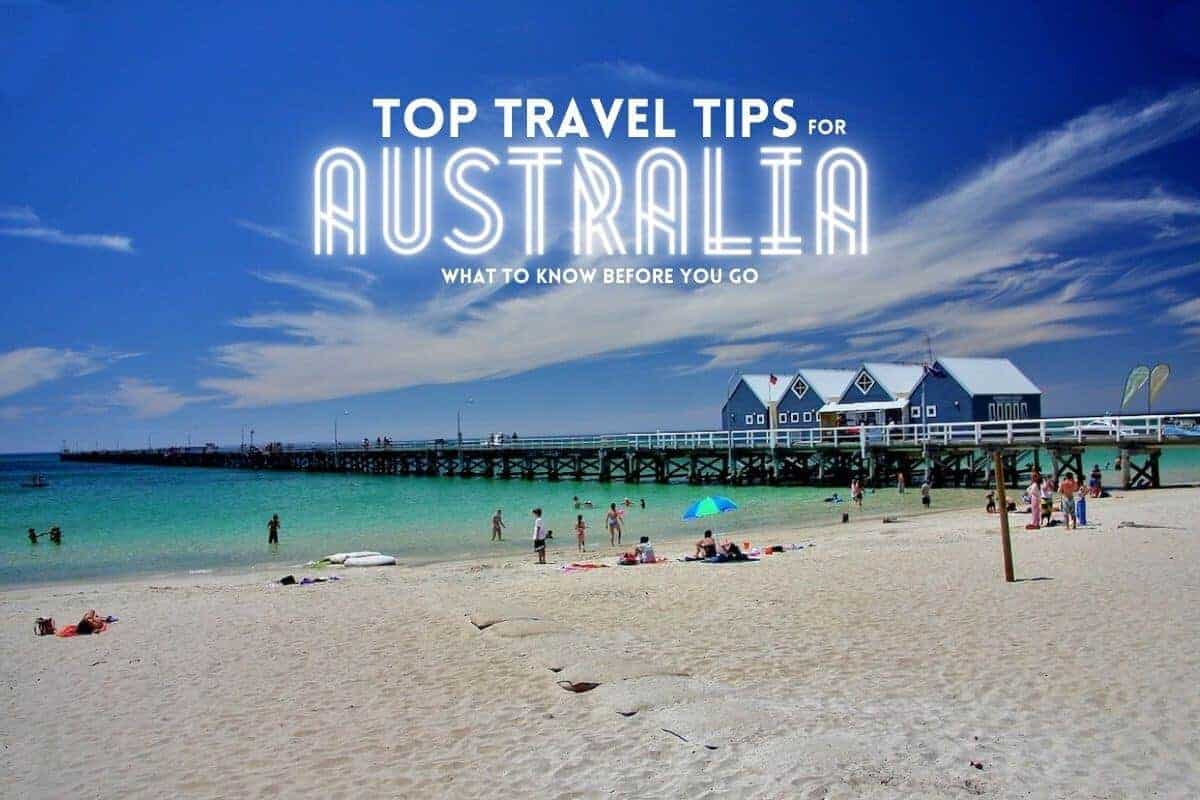
Table of Contents
- 1.1 The Best Time To Visit Australia
- 1.2 Australia is HUGE
- 1.3.1 By plane
- 1.3.2 By bus
- 1.3.3 By train
- 1.3.4 By Ferry
- 1.3.5 By car
- 1.4 Public WiFi Availability in Australia
- 1.5 The Emergency number in Australia
- 1.6 Swim Between The Flags
- 1.7 You have to try local beer, coffee & wine in Australia
- 1.8 Kangaroos and koalas are not that common in Australia
- 1.9 Aussies use Australian English
- 1.10 (Outside of a Pub) You Buy Alcohol either from a Warehouse or A Drive Through Bottle Shop
- 1.11 Is Australia Safe for Solo Female Travelers?
- 2.1 Where are the Best Places to Visit in Australia
- 2.2 How To Plan Your Budget for your visit to Australia
- 2.3 Our Money Looks like Monopoly Money
- 3.1 Australian border control is very strict
- 3.2 Free walking apps for cities in Australia
- 3.3.1 Money changing
- 3.3.2 Credit card skimming
- 3.3.3 Tours from unreliable guides or websites
- 3.4 Learn the Lingo: Basic Language Tips for Australia
- 3.5 Tipping Culture in Australia
- 3.6 Pre-book popular attractions in Australia
- 4 5 Quick Australian Dos and Don’ts
GENERAL TRAVEL INFO FOR VISITORS TO AUSTRALIA
Visa: Unless you are an Australian or New Zealand Citizen or Permanent Resident, or identify as a Torres Strait Island – practically everyone else needs a travel visa to enter Australia. Folks from the USA, UK and several other European countries are eligible for the free Visitor which allows visitors to stay for up to 3 months for each entry in a 12 month period.
That’s plenty of time to explore – but if you want to stay longer, there are other visas available too. Use the Australian Governments (free) visa finder tool to find the right one for you.
Currency: The official currency in Australia is the Australian Dollar ($, AUD). You can withdraw currency from ATMs using your local bank card or a designated travel card. If you are visiting from another country, be sure to check any fees and charges from your bank prior to using it and carry a second source of payment/cash in case your primary card gets ‘eaten’ by an ATM.
Language: English (Although Australia has no ‘official’ langauge, English is the most common language and is spoken throughout the country.) Almost 80% of all residents speak English at home, with Mandarin (2.5%) and Arabic (1.4%) spoken at home in small percentages.
WiFi/Internet Access: Depending on your length of stay and in what country, you can either purchase a local sim card (in advance or on arrival) – to swap out with the one in your own phone to avoid roaming charges. OR, grab a pay as you go portable Wifi Devices which means you can keep your sim active and connect wirelessly. Just remember to turn off data roaming so you don’t incur any hefty charges.
Essential Travel Tips for Australia for First Time Visitors: The Practical Stuff
The best time to visit australia.
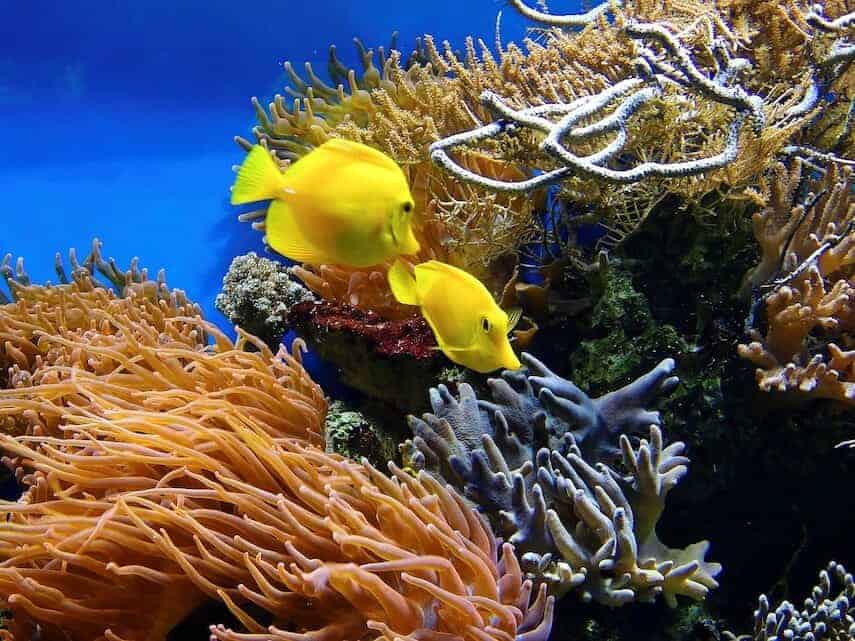
If you’re in it for the most perfect time to visit – specifically when the weather’s not too hot nor cold and when flights are relatively cheap – you must go between March-May and September-November.
If you’re the “always in for summer” type of traveler, you must visit from December to February. During this season, the average temperature can be anywhere between 15-30 degrees. So, be sure to bring a water bottle and hydrate!
If you’re in it for a lot of food and wine thrills, you have to plan your visit from March to May (a.k.a. the Autumn season). You have to brace yourself, though! This particular period is the busiest of all. Expect big crowds, busier places, and jam-packed tourist destinations.
If you fancy an all-white season and game for an intense snow skiing sesh, head for the mountains in Victoria, Southern New South Wales, and Tasmania sometime during the winter. The Winter season in Australia begins in June and extends up until August.

If you want to try diving, surfing, kayaking, canoeing, and other water-related activities and experiences, time your visit for between September to November and head to the North East coast. Remember to pack your sunblock and sunglasses along with you!
TOP TIP: Wear sunblock. Even on a cloudy day. The sun is very strong in Australia and it is easy to get burnt. Don’t stand out as a tourist by turning bright red!
Australia is HUGE
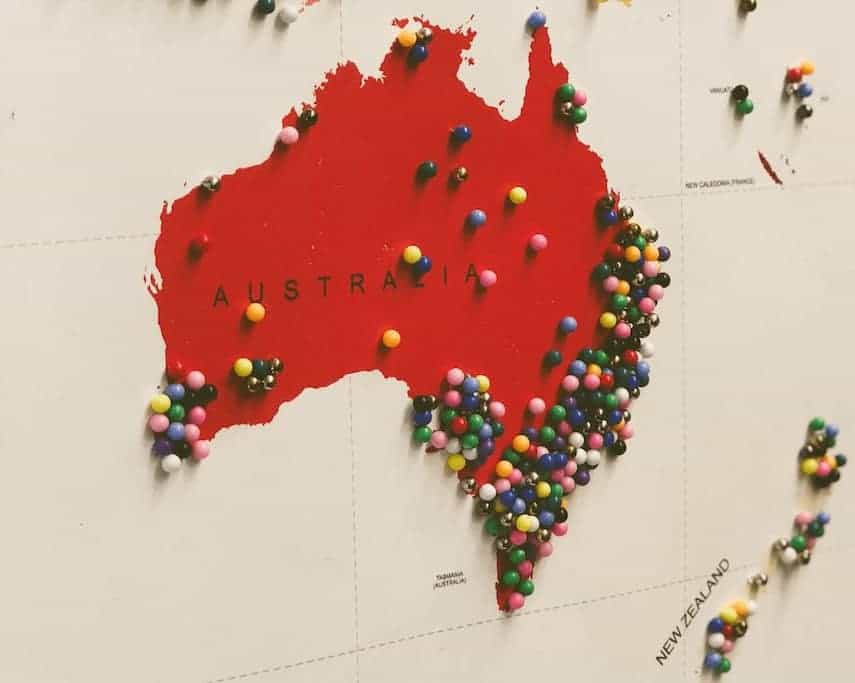
How To Get Around Australia
Australia sure is a BIG country to explore. But, would you believe it if I tell you it’s very easy to go around in it? Australia has a lot of transport systems made readily available and accessible for all types of travellers out there!

Australia has a bunch of domestic airlines to save you in travelling around large distances. You may start getting yourself familiar with the following: Qantas, Virgin Australia, Jetstar, Tiger Airways, and Rex. Knowing about their routes might give you a headstart in planning for your very own itinerary, as well as your budget!
If you’re one who enjoys travelling the long way to explore whatever you can, taking the bus in Australia is perfect for you to cover longer distances. Be comforted to know that coach and bus travel in the country is not only comfortable but also efficient and reasonably priced given their amenities. Enjoy free Wi-Fi, reading lights, and airconditioning throughout!
If you want to witness Australia in the most scenic yet convenient way possible, opt for the trains. Believe me when I say the train is the way to go.
- TrainLink: It runs from Sydney through New South Wales, down through Canberra to Melbourne and North to Brisbane in Queensland.
- V-Line: It connects Melbourne with regional hubs located in Victoria.
- Queensland Rail: It covers the entirety of Queensland.
- TransWA: It has services through Western Australia.
- The Ghan Train and Indian Pacific: Both generally sweep through the country. The Ghan specifically travels to and from Adelaide and Darwin, Red Centre, and the Top End. The Indian Pacific, on the other hand, runs between Sydney and Perth, through Broken Hill, Adelaide, and Kalgoorlie.

If you want to experience everything Australia offers, you also have to try getting on board on a ferry (and depending on where that is, you may need to have the stomach for it, as well!).
- Spirit of Tasmania: It operates a nightly passenger and vehicle ferry service from Melbourne (Victoria) and Devonport (Tasmania) – and is a notoriously bumpy crossing.
- SeaLink: Connects Cape Jervis (South Australia) and Kangaroo Island multiple times a day.
- Other ferry services: Other ferry services also operate that connect suburbs to capital cities such as those that run in and around Sydney Harbour, or those on the Swan River in Perth or on the Brisbane River.

Travelling in a car in Australia will give you comfort and the best road trip experience there is in the world! In case you didn’t know, the country boasts of its network of well-maintained roads.
Public WiFi Availability in Australia
Yup, don’t worry. We understand the need to connect to the internet, especially when traveling abroad. If you don’t have a local sim card and/or a portable WiFi device, lucky for you — we searched for this complete list of free WiFi hotspots around Australia . Just remember to be cautious, though. Hackers can easily have access to your personal information when you connect to these.
The Emergency number in Australia
Although we’re hoping you won’t ever have a need for this number, it’s always better to be prepared than sorry. Dial 000 (triple zero) when you encounter an emergency and are requiring the assistance of the police, fire, or ambulance departments.
Swim Between The Flags
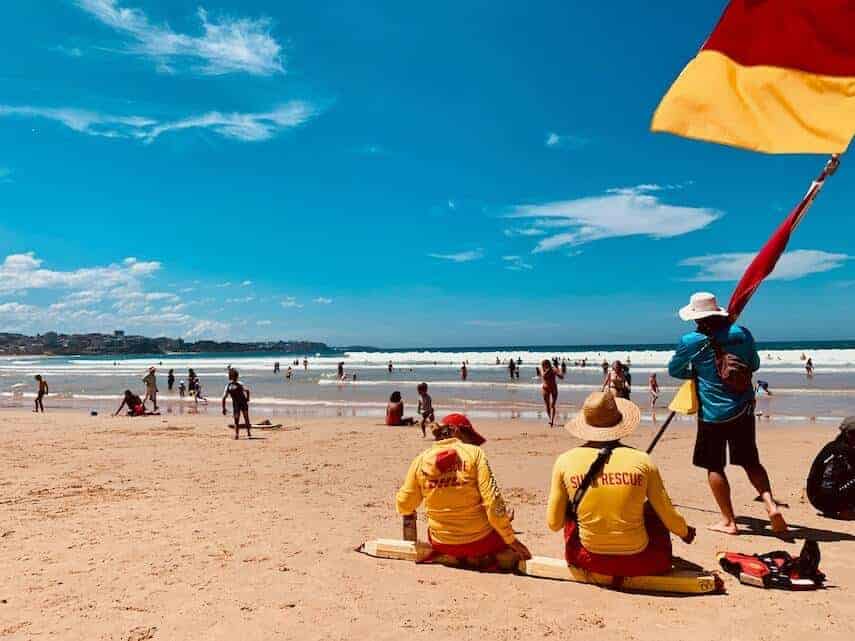
While spending a day on the sand and frolicking in the water sounds like a great idea – a lot of beaches have lifeguards present for a reason. The rips around Australia can be life-threatening and must be respected. If there is a lifeguard on duty on the beach you find yourself on, be sure to swim between the flags they have set up. They are there to show you the safest point on the beach for swimming.
You have to try local beer, coffee & wine in Australia

In case you didn’t know, Aussies invented the Flat White. And if you are a coffee drinker, you have to try one in Melbourne – where coffee culture is practically a religion!
Aside from coffee, you may also want to spend some time enjoying the Australian craft beer scene, and having a glass ( or bottle ) or two of some of the worlds best wines. From Margaret River to the Yarra Valley, Hunter Valley to the Barossa – there is no shortage of incredible wine in this country.
Just remember to be a responsible drinker – and absolutely DO NOT drink and drive.
Kangaroos and koalas are not that common in Australia

There are plenty of places to see them though. From numerous national parks and wildlife sanctuaries to secluded spots out in the country. Read our complete guide to Australian animals here to find out more. Also, not all Aussie animals are trying to kill you. Just around 75% of them!
Aussies use Australian English
Australian English is relatively different from American English or any other English for the matter – specifically in spelling, pronunciation, slang and shortening of some words. Oh and swearing is pretty common among friends in day to day conversation.
‘Mate’ is used universally – whether you’re the friend of a person or a complete stranger. It is a uniquely Aussie phenomenon which when used implies a sense of shared experience, mutual respect and unconditional assistance.
Nicknames, and the shortening of most words – often ends in -O, -A or -Y/-IE: Stevo (name), Arvo (afternoon), Straya (Australia), Barbie (BBQ) Footy (Football – Australian, not English), Accadacca (AC/DC), Tinny (can of beer), Servo (Petrol/Service Station), Bottle-O (The equivalent of a British ‘Off-Licence’ where alcohol is purchased for consumption off the premises, etc)
This might take a little bit of getting used to and may need a bit of translation from a local from time to time (but scroll down – we have included a few basic words below to give you a head start!)
(Outside of a Pub) You Buy Alcohol either from a Warehouse or A Drive Through Bottle Shop
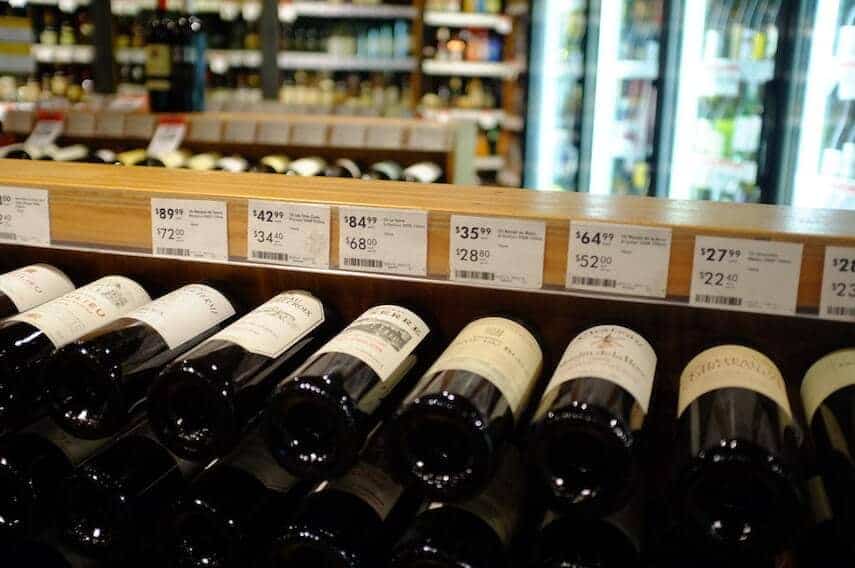
And if that concept doesn’t blow your mind, you also can’t buy alcohol from the supermarket (like in the UK), but have to go to a dedicated alcohol shop/liquor store. There are often smaller, separated buildings located next to the supermarket (and which often sell alcohol at a premium price for the convenience) and are owned by the supermarkets. Coles has Liquorland, Woolworths has BWS etc.
Or you can satisfy your alcohol needs (and get cheaper prices) with a visit to Dan Murphys – which is essentially a warehouse full of beer, wine & spirits. Affectionately known as Uncle Dan’s by many across Australia, these huge buildings are located on retail parks which you wouldn’t normally walk to – and can’t walk back from carrying your haul (case of wine/slab of beer etc) – as it’s typically always cheaper to buy in bulk.
Is Australia Safe for Solo Female Travelers?
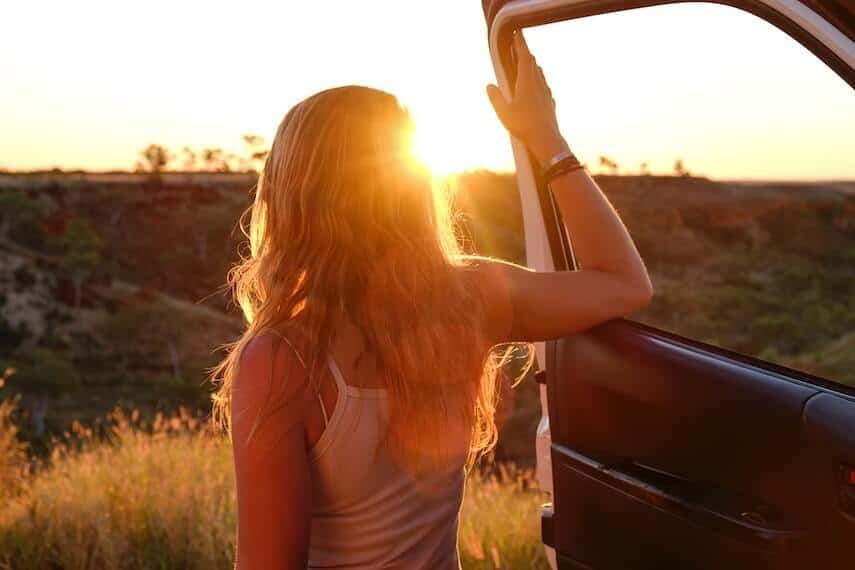
- Keep an eye on your belongings (bag/camera/phone etc) and be aware of your surroundings (for example, don’t have your head down glued to your phone)
- Be cautious and vigilant in busy areas or in crowds.
- Be wary of the ‘overly helpful’ local. The one who approaches you with stories and tips but seems to want nothing in exchange. And don’t feel obliged to give them anything.
- Be mindful of your drinking – that’s not to say not to drink, but alcohol lowers your inhibitions and reaction time. And a bag of Aussie Goon is a pretty standard item among the backpacker crowd and considered part of the Australian travelling experience!

- Walk with purpose – it will make you appear more confident and especially in Australian cities, will help you blend in with the locals.
- And finally, take note of where the exits are – wherever you are throughout Australia. You know, like you do on a plane. If there is an emergency, or you need to get away quickly, knowing where the exit is can be invaluable.
Top Australia Tips for Your First Visit: The Fun Stuff
Where are the best places to visit in australia.
Spread out across this vast country, Australia has eight city capitals, one within each State & Terriroty, which are all wonderfully unique packed with exceptional dining experiences, historic attractions, and non-stop shopping opportunities. Here’s why you need to visit each of them which will help in planning your trip:
- Canberra is situated in the Australian Capital Territory (ACT). It is the national capital, a city known for its cultural treasures and vibrant annual festivals.
- Sydne y is the largest capital in the country home to the famous Sydney Opera House, The Harbour Bridge, Bondi Beach and close to the Blue Mountains for a perfect day trip from Sydney!
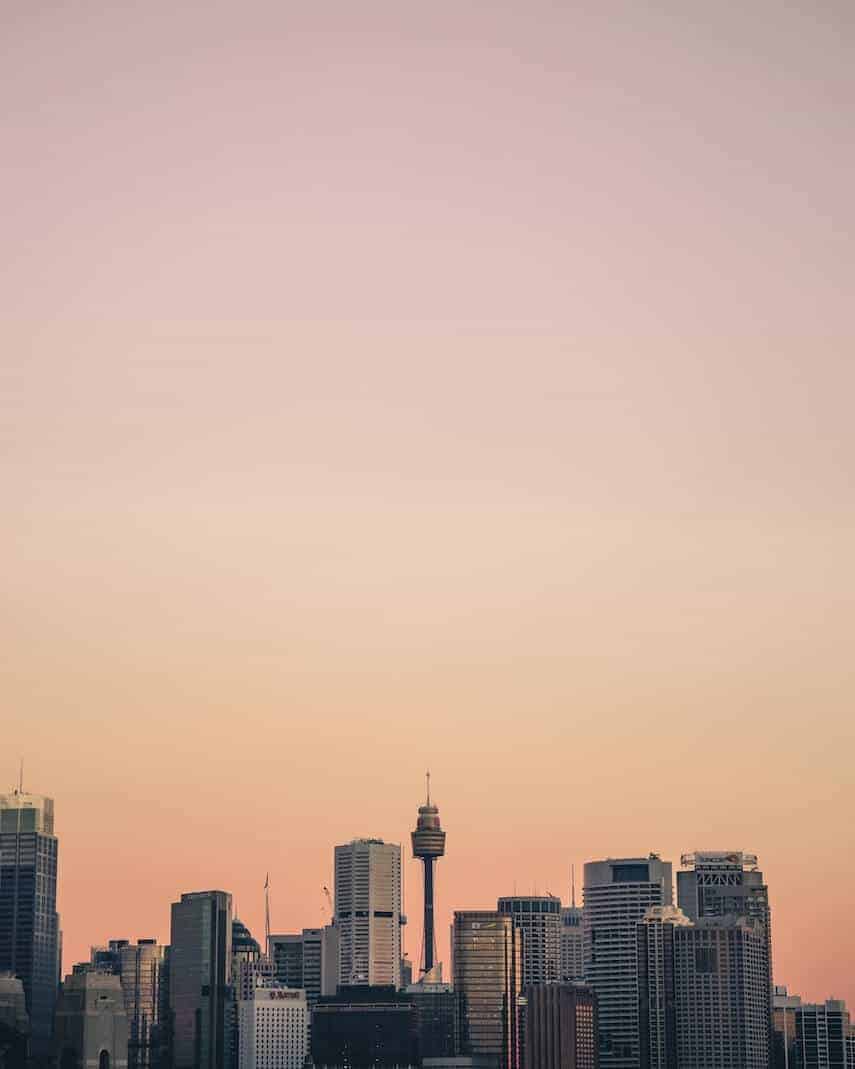
- Melbourne is the “Culture Capital of Australia” and one of the major cities in Victoria. From fashion to art, to film, to food, to sports, to music, to kids events, or to spiritual and multicultural festivals… Name it, Melbourne has it! (and some great day trips fro Melbourne too!)
- Hobart houses some of Australia’s convict era remnants adjoined with its panoramic coastal scenery. This picturesque city holds a number of interesting places to see including (but not limited to, of course) the charming Georgian era towns and villages!
- Cairns is Australia’s adventure travel paradise – with bungee jumps and jungle swings, scuba diving and snorkelling on the Great Barrier Reef, Skydiving over beaches and seaplane flights. For an adrenaline kick, head to Cairns.
- Adelaide is the perfect escape from the bustling crowds you might find elsewhere in Australia. It has surrounding hills to the east, beautiful beaches to the west (don’t miss Hervey Bay), luxuriously wide boulevards, and breathtaking park and garden views!
- Perth has a small population, the greatest weather year-round, and has a convenient location to stunning beaches. If this doesn’t make you want to visit Perth, I don’t know what else will!

- Darwin is the top end’s darling! From its World War II history to its very diverse food scene, to the best tropical lifestyle an Australian traveler could want, not to mention the different Outback tours through Kakadu National Park offered from the city – Darwin in the Northern Territory is the best place to be!
- Brisbane houses the liveliest subtropical paradise with ever-delicious food, coffee, as well as an epic music and arts scene. Not to mention the fact that it’s just an hour away from the world’s best beaches on the Sunshine Coast and Gold Coast.
How To Plan Your Budget for your visit to Australia
If there’s one thing you ought to know about Australia, especially if you’re a first-time traveler, is that it can be quite (sometimes really) expensive. To experience it at its best, you have to allot around $100-$200 per day for your accommodations, food, and activities.
Sad to say, though, transportation is a totally different conversation – meaning you need to allot a separate budget for it. Doing your research might do the trick in helping you get the best deals possible and that means everything!
What to eat in Australia
- Vegemite – a dark brown paste made from various vegetables, yeast extract and spice additives. Regardless of anyone telling you not to try it because it tastes weird , I say still do! Who knows, you might like it more than you can probably imagine.
- Tim Tams – a famous Australian chocolate biscuit, which, anyone hardly says no to. Do yourself a favour by grabbing one and snack on it to your heart’s content!
- Chicken Parmigiana – although not particularly of Australian descent, you will most certainly encounter this dish in most Australian pubs — and it’s worth the try!
- Fish and Chips – as the country is surrounded by oceans, it’s easy to say that their fish recipes are the bomb! This one’s definitely a must-try for the tourists.
- Pavlova – a meringue cake base topped with whipped cream and fruit that you can score from a cake shop, a bakery, or from major supermarket chains (directly look for it in the frozen dessert section).
Our Money Looks like Monopoly Money

Bet y’all want our funky money now, huh?!
Useful Tips & Friendly Advice for your First Visit to Australia
Australian border control is very strict.
Bringing prohibited items, whether or not you’re aware, will result in serious borderline problems. Included in the roster of forbidden things include fruits, vegetables, meat, eggs, feathers, weapons, firearms, and wildlife among other things. It’s best to double-check your things before embarking on a trip of your lifetime by doing your research.
Free walking apps for cities in Australia

Scams to avoid in Australia
Australia being a great country and a continent by itself makes it not vulnerable to travel-related scams. Sad, but true. Here are several things you need to watch out for and avoid when traveling to Australia:
Money changing
Yup, it sounds so old school but it still happens anywhere – might be at a restaurant where the cashier switches you $50 for $5 and tells you you didn’t give enough cash, at an attraction, or right at the money changer. When dealing with money, it’s always better to double-check and try to book your activities in advance so you have total control.
Credit card skimming
Basically, credit (or debit) card skimming is the act of illegal duplication of information from the magnetic strip of your card. As much as possible, be wary especially when the restaurant personnel collects your card and swipes it out of your sight.
Tours from unreliable guides or websites
To make sure you’re not booking some dodgy day tours, you have to make sure you’re booking from official travel agencies. Before clicking that purchase button, do your research. Check reviews, ask for recommendations from your friends and family – or particularly anyone you trust. Doing so will be helpful during the time of an accident or an emergency.
Learn the Lingo: Basic Language Tips for Australia
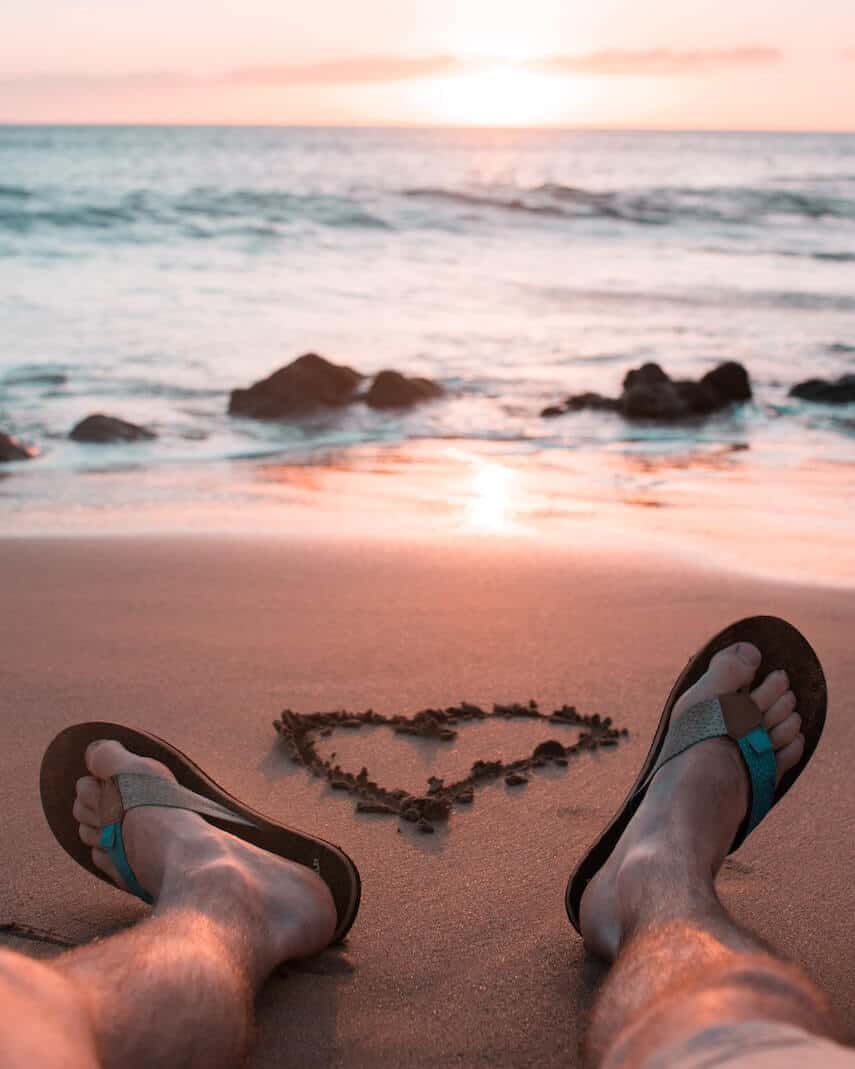
- Gas means petrol.
- Thongs mean flip flops.
- Chips (commonly called hot chips ) mean fries.
- Fortnightly means every two weeks.
- Boot means trunk.
- Bum bag means fanny pack.
- Lollies means candies/sweets.
Tipping Culture in Australia
In a country where the minimum wage is a lot higher compared to other countries, tipping isn’t that much of a necessity — most especially where service charges are included in the bill (typically for group or specialty bookings rather than a meal for 2). No one’s stopping you, though! You can still give tips if you want to and you feel like it.
Pre-book popular attractions in Australia
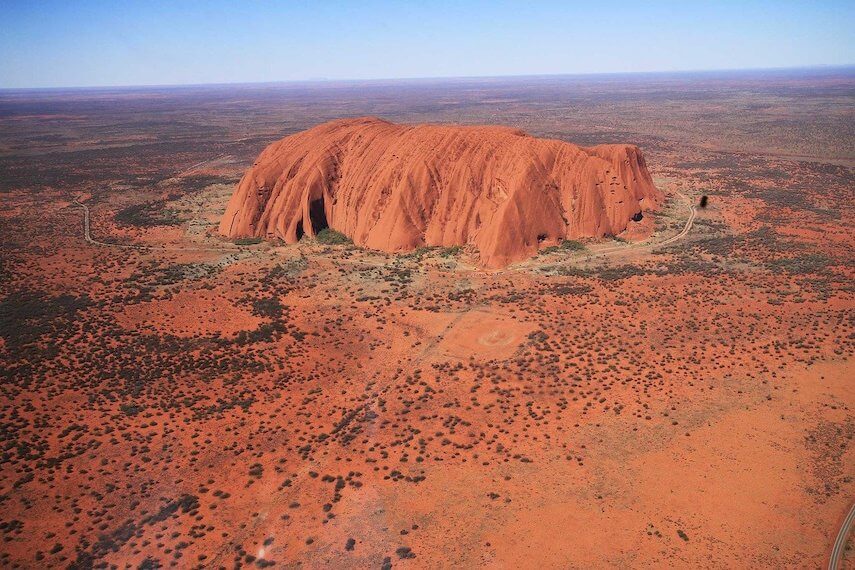
5 Quick Australian Dos and Don’ts
- Slip, Slap, Slop, Seek, Slide (That’s slip on a shirt, slop on sunscreen, slap on a hat, seek shade and slide on your sunglasses – if you’ve never heard the iconic Cancer Council slogan before. Fun fact – it was so successful in the 80s that there is a generation of Aussies with a Vitamin D deficiency!)
- Carry photo-ID
- Swim between the flags on Aussie beaches
- Watch out for drop bears …
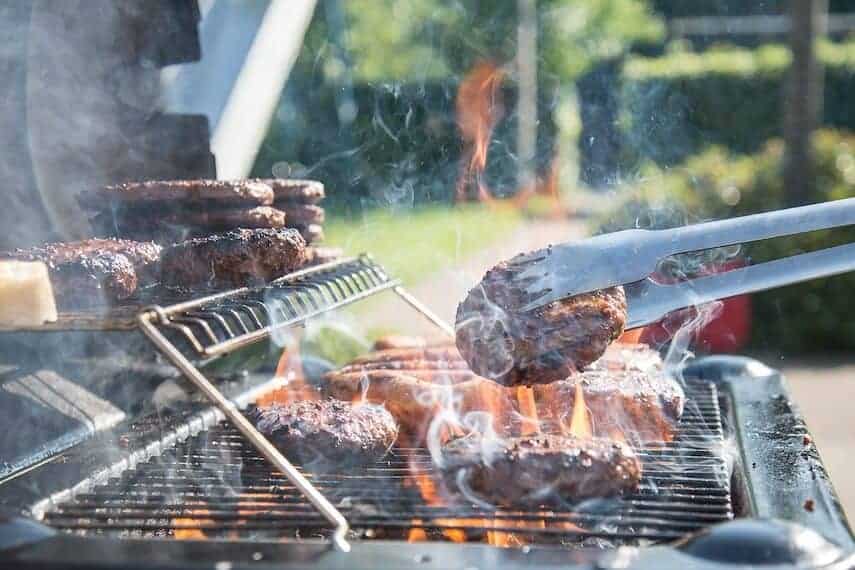
Don’t:
- Drink & Drive
- Climb Uluru (thankfully the are now rules to prevent people climbing the sacred rock, but it’s good to remind everyone that it shouldn’t be done, should that ever change)
- Eat, Drink or Smoke on public transport
- Turn up to a BBQ empty-handed (bring a bottle of wine or beer that the host will enjoy)
- Get offended when Aussies swear, it’s part of our national identity.
That’s a wrap, I hope our helpful tips for Australia (perfect for firsttime visitors) has got you all excited to explore Oz and this Australia travel guide has given you all you need to know to make it happen. We hope you have a wonderful time in Australia.
And if you know someone who could use these Australia travel tips for planning their trip to Australia, be sure to share this article with them on Facebook, Twitter, Flipboard or Pinterest. Sharing is caring and we thank you in advance.

READY MORE AUSTRALIA TRAVEL INSPIRATION? YOU MIGHT BE INTERESTED IN THESE TRAVEL TIPS, TRAVEL ARTICLES, DESTINATION GUIDES, TRAVELER RESOURCES AND RELATED POSTS ABOUT OTHER AMAZING PLACES IN AUSTRALIA:
- Test Your Aussie Knowledge: The Big Australia Trivia Quiz + 80+ Interesting Facts about Australia
- South Australia: Adelaide Travel Guide (Perfect for First Time Visitors)
- Australian Capital Territory: Top Things to do in the ACT
- Queensland: QLD Bucket List (inc. the some of the best spots on the East Coast Australia – think Gold Coast, Sunshine Coast, Airlie Beach, Fraser Island and the Great Barrier Reef) + 50 Things to do in Outback Queensland
- New South Wales: Top Things to do in Sydney (inc. The Sydney Opera House, Byron Bay & the Blue Mountains ) & Best Places to visit in NSW + Incredible Ski Resorts in NSW
- Victoria: Free Things to do in Melbourne , Melbourne Travel Guide (Perfect for First Timers), Best Time To Visit Melbourne (Month by Month Guide) + Best Day Trips from Melbourne (inc. the Great Ocean Road)
- General Australia Inspiration: 25 Best Places to Visit in Australia (inc. Alice Springs in the NT!) + Best Australian Travel Apps + Australia Travel Tips to Know Before You Go
- Beyond Oz: Looking for content outside of Oz? Head on over to MakeTimeToSeeTheWorld travels blog – they’ve got content on everywhere from Sri Lanka to South Africa , North America to South America & the Middle East to Europe .

Hi There! Thanks for reading our guide to 25+ Essential Travel Tips for Australia (What to Know Before You Go) I just wanted to let you know that this post contains affiliate links, which means if you purchase something after clicking a link, I may get a small commission – which is at absolutely no cost to you . If you enjoyed this article and are going to be searching for some of the things I mention anyway, I would love it if you could click through from the links above & thank you in advance! Read my full disclosure here .
1 thought on “25+ ESSENTIAL Travel Tips for Australia (Know Before You Go!)”
What a great collection of tips from travelers. I went through the list and nodded. Although I am still searching for all the right solid toiletries that work for me. And no matter how I try, I can’t travel with just a carry-on!
Comments are closed.
- GetInspired
As an Amazon Associate, I earn from qualifying purchases: “Big Australia Bucket List are participants in the Amazon Services LLC Associates Program, an affiliate advertising program designed to provide a means for us to earn fees by linking to Amazon.com and affiliated sites”
We acknowledge the traditional owners of the country throughout Australia and their continuing connection to land, sea and community. We pay our respect to them and their cultures and to the elders past, present and emerging.
Copyright © 2020-2022 Big Australia Bucket List . All Rights Reserved

Travel to Australia: Tips and Information 2024 Guide
Everything you need to know about planning travel to Australia in our epic destination guide.
Australia is a vast and bountiful country that offers beauty, leisure and adventure at every turn.
It consists of not only gorgeous and unique landscapes and wildlife, but also the famous outback culture, quirky small towns and well-developed coastal cities making travel to Australia a must.
Road trips are a great way to see the country. The same vastness that makes a road trip across Australia seem daunting is the very reason to explore it by vehicle.
Wildlife is one of the main reasons to travel to Australia. Approximately 90% of the animals that are native to Australia cannot be found anywhere else in the world.
Australia is also known for its world-class beaches . Whether you want to soak in the sun, catch a few waves or snorkel or scuba dive, there is plenty to do along the nearly 40,000 km of coastline!
And, of course, you could spend days or weeks exploring the stunning landscape of the Australian Outback .
In case you couldn’t tell, there are plenty of reasons to travel to Australia.
Now let us help you plan your trip!
There are so many exciting things happening in Australia right now, and it really is one of the biggest bucket list destinations on the planet! If you have any questions about travelling Australia that aren’t answered in this guide feel free to drop us an email.
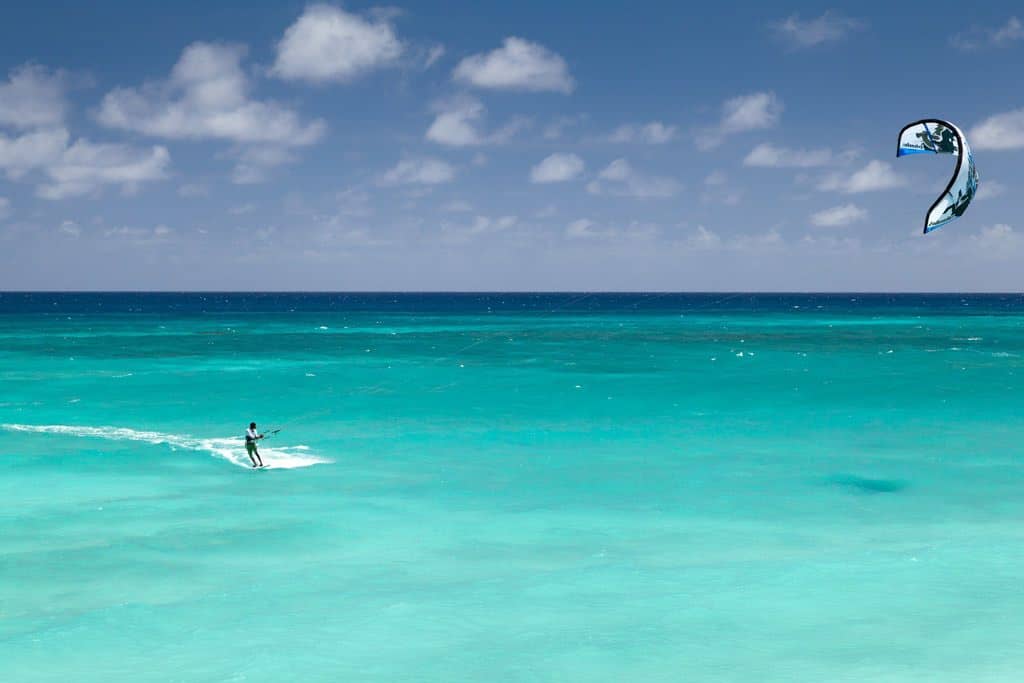
Getting Around Magnetic Island – ‘How to’ Transportation Guide
The ultimate guide to the best magnetic island beaches and bays, the perfect magnetic island day trip itinerary [2024 guide], travelling in australia: at a glance.
Here are the basics of travel to Australia.
OTHER MAIN CITIES:
Sydney, Melbourne, Brisbane
Australian Dollar. 1 beer = $8-9AUD (See current exchange rates )
ENTRY / VISA:
You will need a visa to travel to Australia unless you are a citizen of New Zealand. Most travellers to Australia will qualify for a free visa entitling them to stay in the country up to one year. Be sure to check this list of these eligible countries to determine if you can apply online for your 3 month travel visa.
Generally speaking Australia is regarded as a very safe country. The crime rates are pretty low and most crime against tourists is petty theft. In big cities such as Sydney and Melbourne you should take the usual precautions.
ELECTRICITY:
The standard voltage is 230V at 50 Hz frequency. Socket Type 1 (Be sure to get your universal travel adapter before you leave)
TRANSPORTATION:
Australia is huge. So you will likely travel by a combination of domestic flights, trains and buses. Although rental cars are great options for exploring Australia.
Important Note! Before you book any international trip, we honestly recommend getting travel insurance. You never know when things will go wrong, and medical bills can add up quickly if you get sick or injure yourself overseas.
Our personal recommendation based on our own experience is World Nomads .
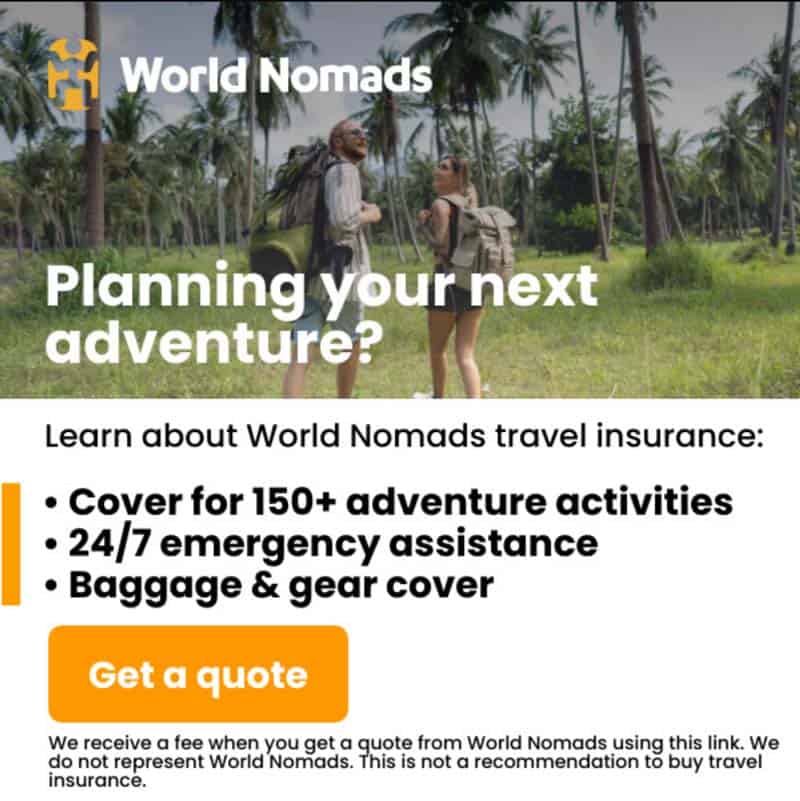
Top 5 Travel Experiences in Australia
With so much to see and do in Australia , it really is hard to pick the top experiences.
However, we think that to truly appreciate Australia you need to plan to add these 5 activities to your itinerary.
Go Snorkelling/ Diving
The underwater world is at its finest in the Great Barrier Reef. Whether you are certified to dive, prefer to snorkel or just want to experience the largest reef in the world by boat, a trip to the Great Barrier Reef should be near the top of your list of things to do when travelling in Australia.
Snorkel or dive the Great Barrier Reef .
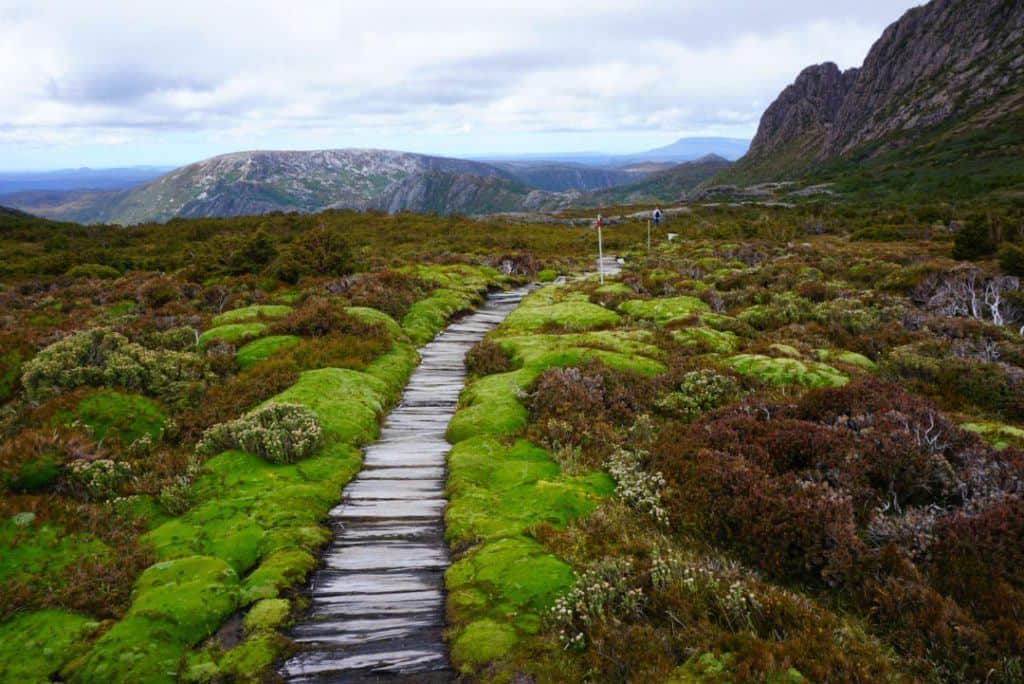
Hike Incredible Landscapes
Whether taking an excursion to Tasmania or a day trip to one of the many beautiful national parks, there are many great hikes to do throughout Australia.
Hike throughout Tasmania !
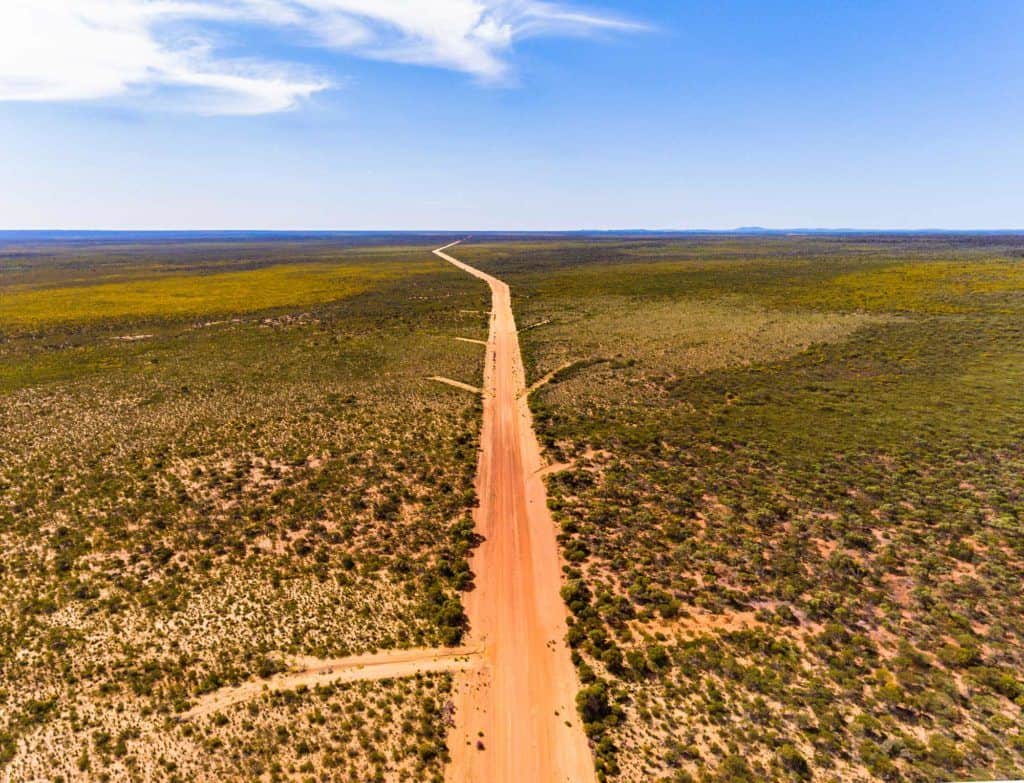
Take an Epic Roadtrip
Australia is ripe for driving expeditions. Whether you are a hardcore overlander, prefer to drive by rental car or want to experience van life at its finest, Australia offers some of the best road trips in the world. Drive along the Great Ocean Road, head inland to Uluru or pick any two towns and drive.
Tour the most famous Australian road trip along the Great Ocean Road .
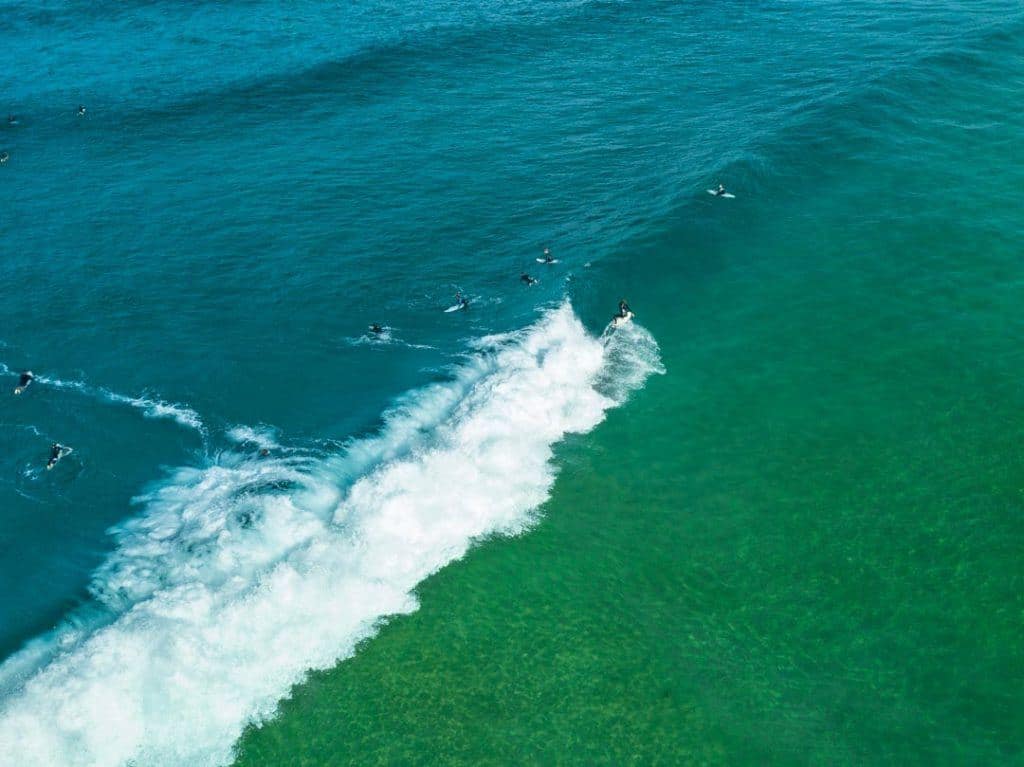
Catch a Wave
Bondi Beach is world-famous for its picturesque sand and clear blue water. Catch a wave on a surf or bodyboard or simply enjoy the beach for what it is. If you really want an experience world-class waves to surf your way up the Gold Coast.
Take a surf lesson at the famous Bondi Beach:
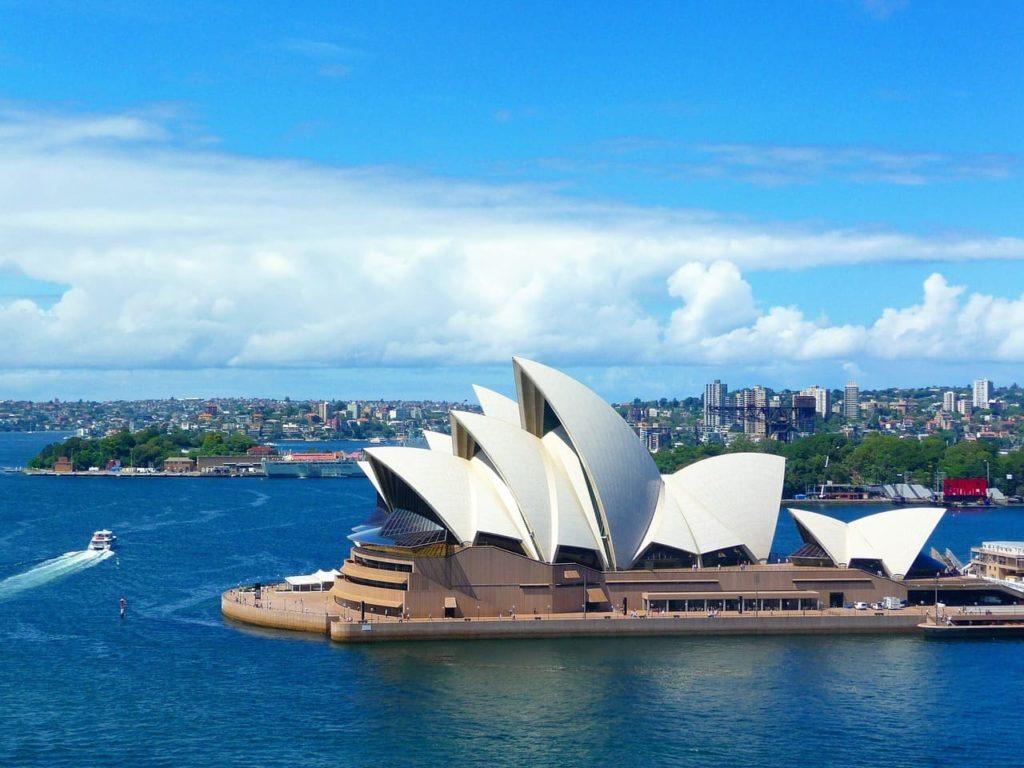
View Sydney from Above
Sydney Harbour is one of the world’s most iconic landmarks. Check out the busy city and bustling harbour by climbing to the top of the Sydney Harbour Bridge. The views of the city are sure to not disappoint!
See it all in this one-day Sydney itinerary .
Other Things to do in Australia
Swim with whale sharks . The Ningaloo Reef is the best place to swim with the gentle giants of the sea. A trip of this kind is not soon to be forgotten!
Explore the Blue Mountains . Just an hour outside of the busy streets of Sydney and you’ll find yourself surrounded by pristine wilderness .
Head out on a vineyard tour . Australian wine is some of the best in the world and you can sample several as your tour Margaret River .
Go Whale Watching. It is mystical and spiritual to encounter massive whales in the wild. Enjoy an experience from Hervey Bay among others in Australia.
Skydive . Sure you won’t see the entire country. But if you skydive at one of the most popular places in Australia you will see Rottnest Island and the beautiful surrounding waters.
Climb Mount Kosciuszko . This mountain in mainland Australia’s tallest peak at just over 2,200 meters. Add it to the list of continental peaks you have to summit.
Sail around the Whitsunday Islands . These islands are among the most diverse in the world offering rainforest hikes, white sandy beaches and the Great Barrier Reef. Touring these islands is an absolute must.
Take the train across the country . Splurge on a little scenic luxury trip and enjoy the countryside of Australia as you zip around the country, er continent.
Take a tour of Kangaroo Island . The island is Australia’s third-largest and taking a tour will reveal that it is home to a variety of animal species and a vast wilderness to explore .
Visit Wineglass Bay . There are many reasons to visit Tasmania and Wineglass Bay in Freycinet National Park is among the top. Be sure to give yourself enough time to explore the other great places to see in Tasmania .
Search for pearls in the sea . So you may not find any of your own, but Broome has a thriving pearl industry in its pristine waters and you are welcome to dive into the experience of making the world your oyster.
Hike the Larapinta Trail . This trail is among the top trails in all of the world and traverses the Northern Territory out of Alice Springs. Be sure to hike this trail as it is growing in popularity year after year.
Visit the Sydney Opera House . Perhaps the most iconic image of Australia, aside from a cuddly koala or kangaroo, that you can tour or take photos of from seemingly anywhere in Sydney.
Be Sure to Check Out These Other Amazing Things to do in Australia
READ MORE...
Brisbane to Cairns Drive – The Perfect Road Trip Itinerary
Atherton Tablelands Waterfalls – The 10 BEST Cascades to See
16 BEST Cairns Day Trips Not to Be Missed [2024 Guide]
Warrumbungles Walks – The Ultimate Hiking Guide [2024]
Grampians Walks – Ultimate Guide to the Best Hikes [2024]
Best Places to Visit in Australia
There are plenty of amazing places to visit in Australia. Depending on your interests, trip duration and time of year you will find plenty of things to do during any length of stay.
Narrowing down the best places to travel in Australia is difficult. From picturesque beaches to arid desert, Australia offers a wide range of places to visit and things to see and do.
Here are our top 5 places to visit in Australia.
Here is where you will find Australia’s most famous landmarks such as the Sydney Opera, the Harbour Bridge and its surrounded by plenty of national parks if you want a change from the city scenery.
Be sure to add these things to do in Sydney to your itinerary.
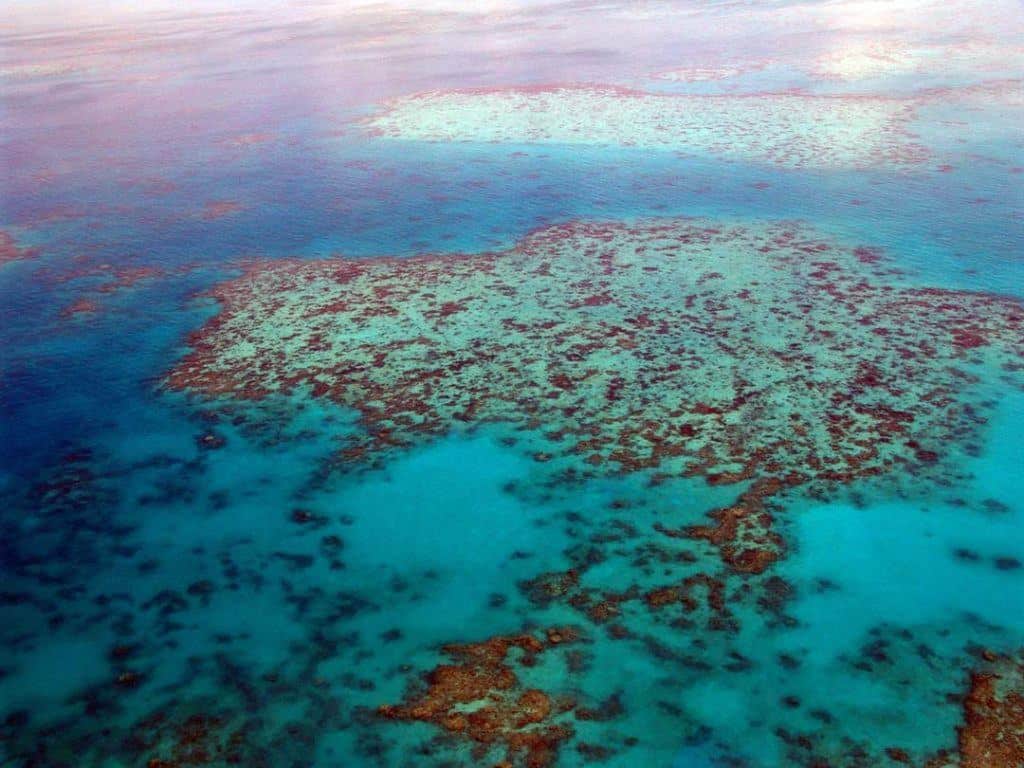
The capital of Queensland and one of Australia’s largest cities, Brisbane is a highly sought after destination for those coming Down Under. The city is rich with history, a vibrant food scene, beautiful views and so much to do.
Start planning with these awesome things to do in Brisbane .
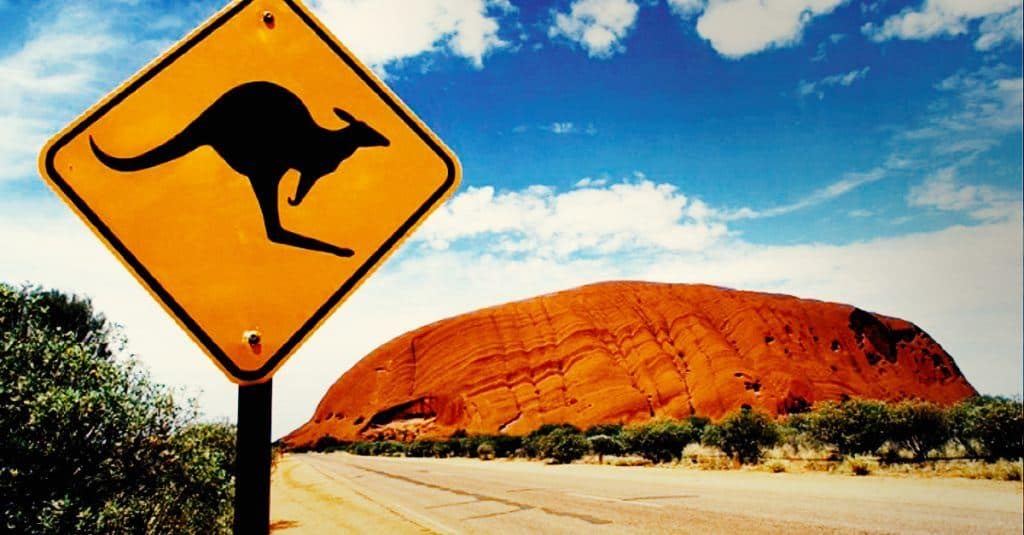
Uluru is located in the centre of the country and is unique for being very isolated. Known for natural wonders such as the massive monolith Ayers Rock, Uluru is full of spectacular scenery and beautiful landscapes.
See our guide on the top things to do in Uluru .
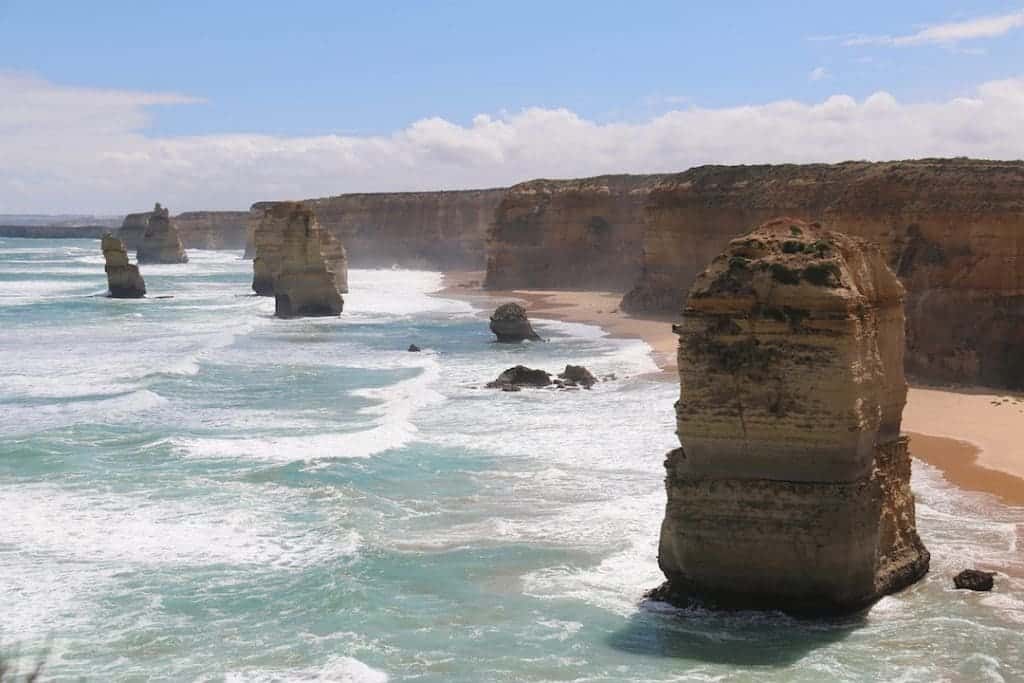
Of all the cities in Australia, Melbourne is seen as the cultural one. It is full of international visitors and residents, which is surely a testament to its attractive vibe. The city is equally adored by patriotic Melbournians; they will be the first to tell you how amazing it is, and they are usually happy to impart details of their favourite spots.
Spend the perfect 3 days in Melbourne with this itinerary.
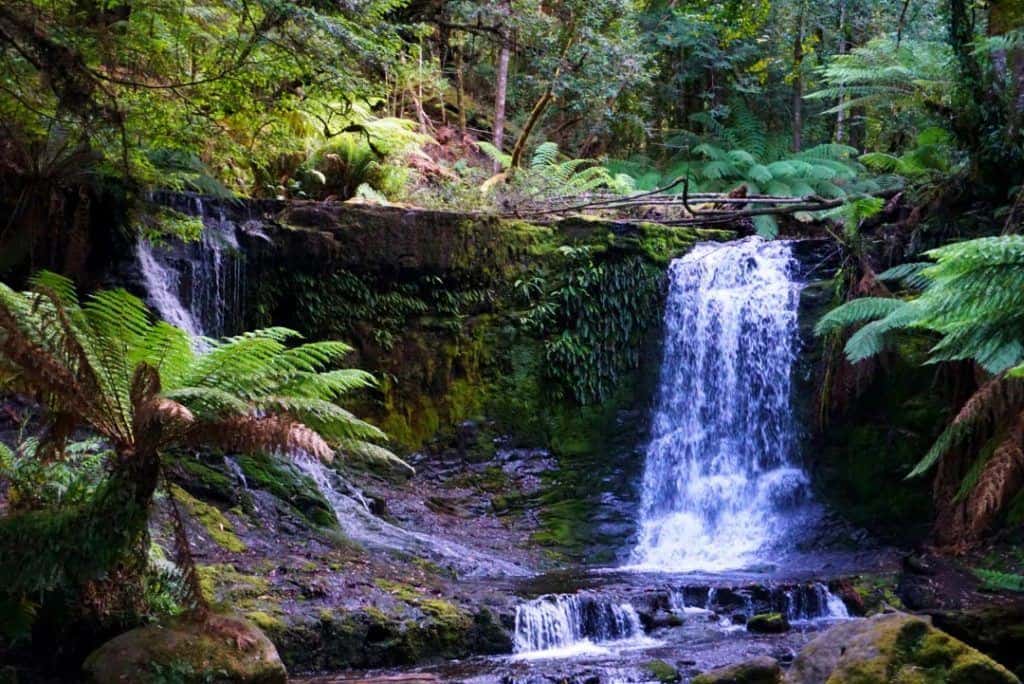
Tasmania is especially well known for its natural beauty in breathtaking Freycinet National Park, the Bay of Fires and Cradle Mountain. Simply put, there are so many things to do in Tasmania!
Plan your trip with the best 2-week Tasmania itinerary .
For more information on specific things to do in the top places to visit in Australia, reference our following city travel guides:
* City Guide * Itinerary * Day Trips
* City Guide * Itinerary * Day Trips
* City Guide * Itinerary * Day Trips
* State Guide * Places to Visit * Itinerary * Camping Guide
Gold Coast Adelaide Cairns Byron Bay Broome Noosa Blue Mountains Airlie Beach Kangaroo Island
Hervey Bay Esperance Fraser Island Port Stephens Great Ocean Road Uluru Exmouth Margaret River The Whitsundays Darwin
Be Sure to Check Out These Other Awesome Places to Visit in Australia .
Best Australia Travel Itinerary
Australia is huge and offers so many opportunities to explore its vastness. It would be easy to spend weeks or months in any one part of the country.
So trying to see the whole of Australia might seem overwhelming.
Depending on how long you have to travel to Australia, where you plan to visit and what you plan to do, you have plenty of options.
We’ve put together a few Australia itineraries that are sure to leave you wanting for nothing at the end of your visit.
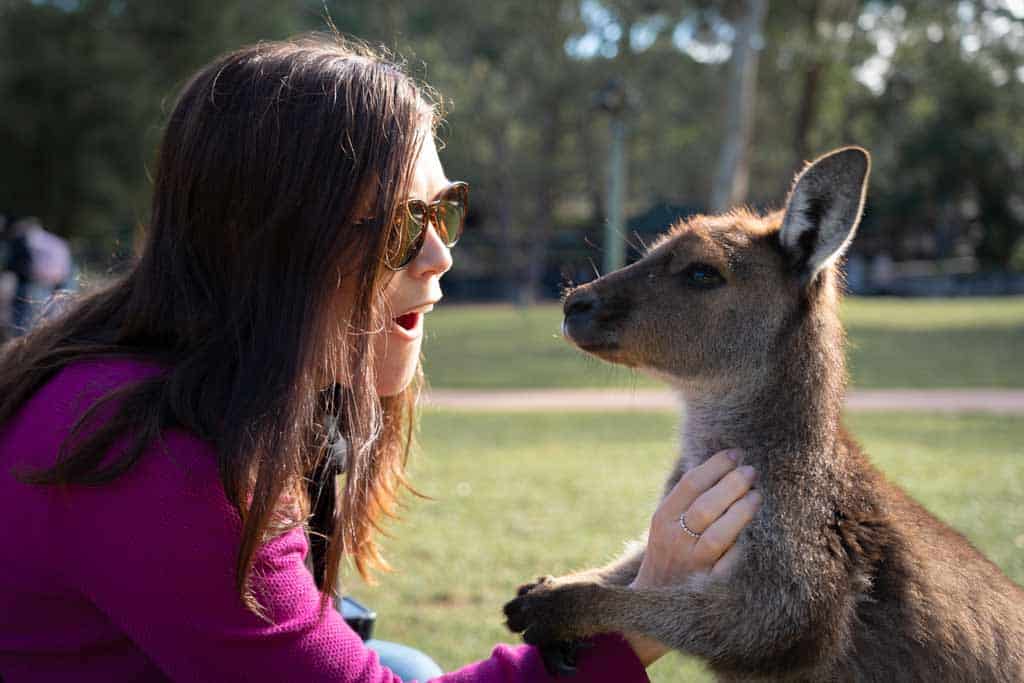
2-Week Australia Travel Itinerary Highlights
If you only have 2 weeks you’re going to have to choose which side of Australia to visit and you’re going to miss out on a lot. But that’s OK because you can always plan a return trip!
The more popular side will be New South Wales + Queensland on the eastern shore of the continent. However, there is also plenty to see in Western Australia as well.
3-Weeks to 1 Month Australia Travel Itinerary Highlights
If you have between 3 weeks and a month to explore Australia then you can combine both the New South Wales + Queensland and Western Australia loops with some reasonably priced domestic flights to connect you in the bigger cities.
Additionally consider adding on the following cities/activities:
6 – 8 Weeks + Australia Travel Itinerary Highlights
Most people who travel to Australia will spend approximately 2 months visiting the country.
If you are trying to get a taste of the entire country, the quickest and most thorough way to see the country would be to follow this itinerary.
Australia Trip Planning
Best time to visit australia.
Australia is located in the Southern Hemisphere and thus has opposite seasons from most of the world. This can be confusing, so make sure to plan accordingly!
Additionally, the country is so large and offers such varied climates and landscapes that the weather you experience depends on the region and time of year in which you’re travelling.
If you are planning to travel to Australia during summer (December – February), know that this is the most popular time to visit Australia.
But during fall and spring, the tourism and temperatures fall off. This makes this time of year perhaps the most ideal time to visit any place in Australia.
You can still enjoy most of the outdoor activities for which Australia is known without dealing with the large crowds and expenses of the busy tourist season.
This is also an ideal time to explore the Australian Outback or to swim with whale sharks along the western coast.
If you are interested in winter sports, Australia also offers plenty of opportunities to ski and snowboard. You can find yourself in great ski slopes within a few hours of landing at the airport.
So really Australia has it all! Depending on what you would like to see and do, you can plan to travel to Australia at any time of the year!
Australia Travel Budget Guideline
Travelling in Australia is not cheap, and many people are unprepared how expensive Australia really is.
However, if you plan accordingly you can find ways to have an amazing experience while not breaking the bank.
Be prepared with these Australia travel tips so that you do not end up spending more money than you should.
Some of the average costs you can expect in Australia are as follows:
Note that transportation costs will vary by how much you intend to travel and these include budgeting for various domestic flights in addition to standard metro transportation.
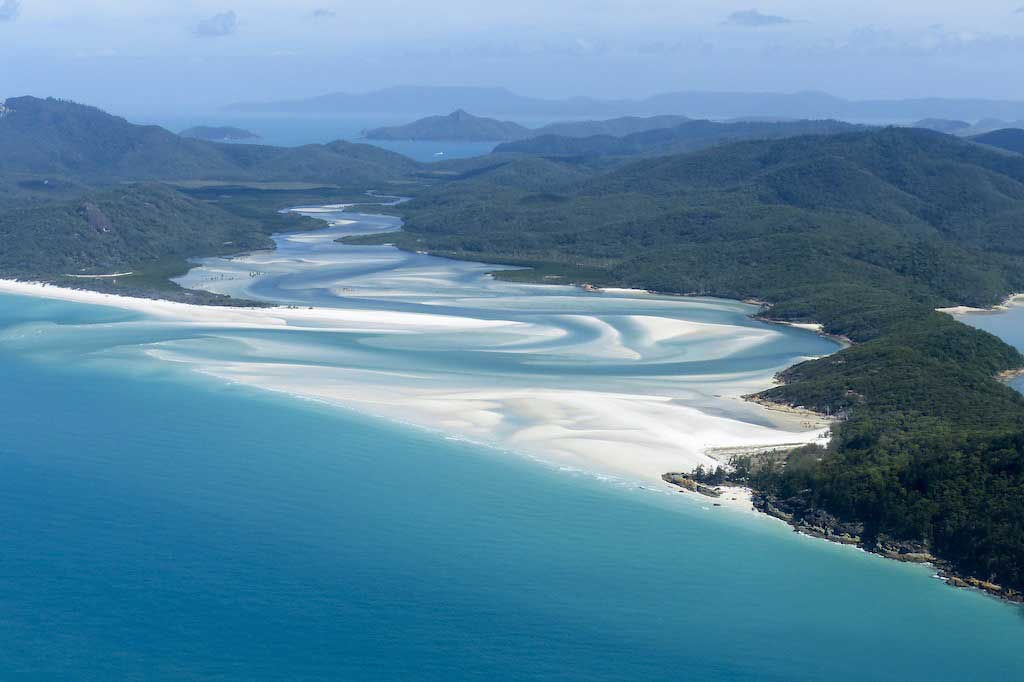
Budgeting Tips:
Here are some of our tips for spending less when travelling in Australia:
- Cook as many of your meals as possible
- Use local transport when available
- Couchsurf or look for AirBnB deals ( use our link to get $35 off your first Airbnb stay )
- Seek free wifi in public places
- Get a pre-paid phone plan from a supermarket. Telstra has the best coverage outside of major cities, but they are also the most expensive.
- Work for your room – some hostels let you work a couple of hours daily in exchange for free room
- Drink less (tough, we know!). The average price of a pint in Australia is AUD$8 -$9 and they can quickly add up!
- WWOOF – is a program that connects young travellers with organic farms. You work in exchange for free accommodation and board.
But there are a few things you should know about the different budgets at which you can choose to travel.
Note: Budgets shown as Single Traveller / Couples per day.
Budget Traveller ($60-90 Single / $100+ Couples)
If you’re a backpacker and you stay in hostels, use local transport and cook many of your meals – you could plan to spend around AUD$60-90/per day.
Mid-Range Traveller ($100-200 Single / $150+ Couple)
Couples will share some expenses, such as accommodation, but will also incur more individual expenses.
To stay on a budget you will want to follow the general budgeting tips but also look to possibly purchase a used vehicle or campervan for longer trips to Australia.
This can combine your transportation and accommodation costs.
Luxury Traveller ($350+ Single / $500+ Couple)
You can spend as much as you want to spend when you travel to Australia.
It is likely the biggest difference in your budget will be upgrading your accommodation, adding a few extra drinks with your meals or nights out and catching flights around the country instead of overnight buses.
Getting to and Around Australia
As an island nation, Australia is most accessible from flights arranged from many of the larger cities of Europe, North America, Asia and South Africa.
But depending on where you are travelling from, expect to spend a fair amount on the plane ticket and quite a bit of time in the air.
Our best advice is to do research and buy your ticket as soon as possible. Booking several months in advance will provide you the most consistently lowest fares.
Additionally, major airlines offer seasonal promotions and occasional discounts so stay alert!
One of the best ways to make sure you get the best deal is to sign up for email alerts to receive special offers from airlines such as Qantas, Virgin Australia, United and Delta.
It is also a good idea to browse for flights in incognito mode. Or alternatively, you can clear the cache in your browser periodically.
Many travel sites will charge you higher fares if they know you are visiting their sites frequently to search for flights.
Google Flights also offers some of the best initial research for fares from your destination.
However, be sure to check fares directly with the airline as there may be unspecified fees and regulations not listed in the Google Flights results.
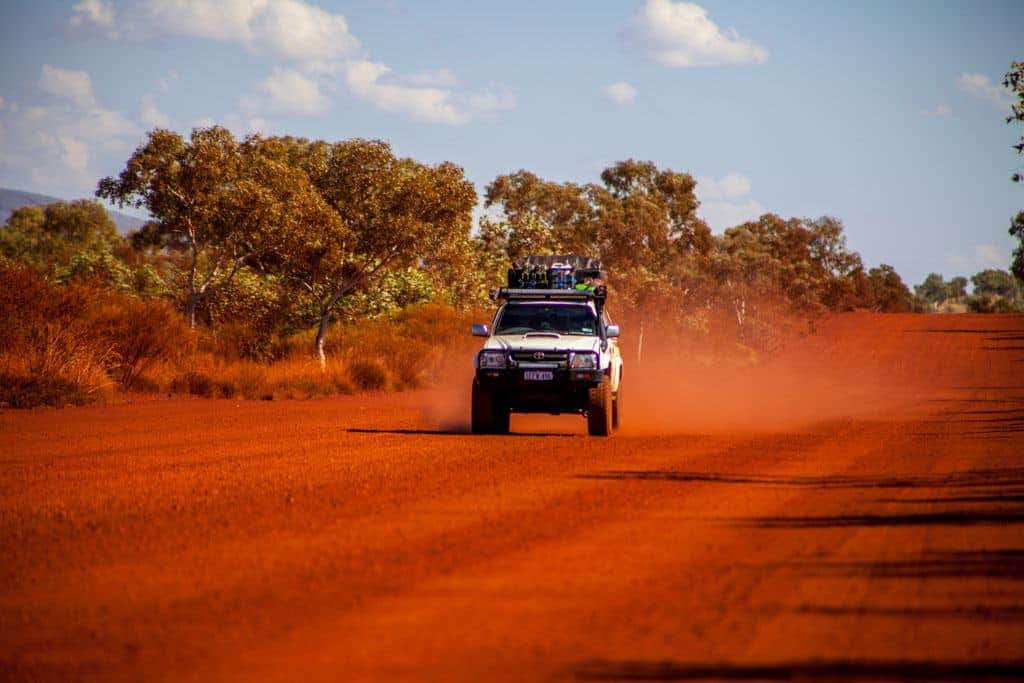
Entry Requirements
You will need a visa to travel to Australia unless you are a citizen of New Zealand.
Most travellers to Australia will qualify for a free visa entitling them to stay in the country up to one year.
Be sure to check this list of eligible countries to determine if you can apply online for your 3-month travel visa.
Getting Around Australia
Transportation in and around Australia is as varied as the country itself.
However, because it is so large you will likely experience a combination of transportation options wherever you plan to travel in Australia.
Australia has a fantastic domestic air network that allows you to connect to points all across the country. Some of the airlines that offer great deals to hop across the continent include:
- Virgin Australia
- Tiger Airways
The wide selection in airlines and routes offers fairly competitive prices especially when it comes to the Sydney-Melbourne leg of travel.
If you’re flying out to a remote destination such as Uluru, Hamilton Island or Darwin – your best bet is to book well in advance. But then still expect fares to be a little pricey.
If you have the time and want a truly unique experience you can cross the country aboard the Indian Pacific railway . Expect some of the best service, food and scenery you can imagine when travelling in Australia by train.
This is the only way to cross the country by train. However, it is very expensive.
Bus is the best way to travel in Australia on a budget. Greyhound buses operate in most of the capital cities and will connect you to pretty much anywhere in the country you would like to go.
The prices for intercity bus travel are modest. Additionally, many companies offer discounts for students.
The bus is also a great way to travel in many of the larger cities.
Not only can you cover a lot of ground by using the public bus system in places like Sydney, Melbourne and Perth but also it will save you quite a bit of money to spend on other things.
Rental Cars
If you’d like to travel in Australia at your own pace, renting a car is your best option .
However, it can be pricey especially if you plan to pick up the vehicle in one city and drop it in another.
But nothing will beat the freedom you have to go to the places you want to see and do them at your own pace.
If you are really into exploring the country with the most amount of freedom, consider renting a campervan .
Campervans combine the flexibility of driving at your own pace and itinerary with the freedom to stop and sleep pretty much anywhere along your journey.
Many campervans come fully equipped to be able to prepare your own meals and be self-sustainable for days on end as you explore the country.
Petrol prices vary, depending on where you are travelling from. For example, they are lower than those in the UK and Europe, but higher than in many places in North and South America.
One thing to keep in mind is that distances between places in Australia are large. So it is very likely that you will be driving long distances while travelling in Australia.
The same vastness that makes a road trip across Australia seem daunting is the very reason to explore it by vehicle. Some of the best attractions are only reachable via car because they are remote and well off the beaten path.
Depending on how much time you are willing to commit to driving across the country, you could take weeks or months to absorb the landscape, wildlife and culture of the Australian people.
The best way to get around is to rent a car and explore on your own! We recommend Rental Cars , which has the largest range of vehicles for the best value on the market.
Apps and Technology
Technology can help you stay safe and make the most of your travels to Australia.
Here are a few we think you should definitely acquaint yourself with prior to your travels:
- XE Currency – Transfer, monitor and calculate currency as the need arises. This app may not be totally necessary as you are typically tied into rates the banks charge for services. But it is handy to have around.
- Express VPN – This will protect your sensitive information wherever you travel – not just in Australia. Be sure to have this to keep your online information secure as you travel.
- The Happiest Hour – This app helps you find the best drink deals wherever you are travelling in Australia
- BeachSafe – Search every beach in Australia and know the hazards before you get in the water.
- Uber – Yep, you know what to use Uber for. Catch rides in any major Australia city for a fraction of taxi fares.
Best Things to Eat in Australia
Australia has a variety of dishes to represent the varied cultural and historical aspects of the country.
While known more for its beer than its food, there are several types of food that you do not want to miss when travelling in Australia.
Here are a few of the best options to explore:
The Lamington – This is the national cake of Australia. It is a square-shaped sponge cake that comes with chocolate icing and has coconut sprinkled all over it. Sometimes it has jam in the middle.
Vegemite on toast – Vegemite is a brown food paste that doesn’t look appetising at all. But Australians swear on it. It is most popularly used like jam on toast.
Grilled Kangaroo – While many people visit Australia to view wildlife such as kangaroo , it is also a pretty popular meal. While it tends to dry out so it’s usually cooked from rare to medium, it is delicious when served with rosemary, plums, oranges, peppers, juniper, garlic and red currant.
Meat pies – Meat pies are every Australian’s favourite childhood snack. It is nearly always on the menu, whether it be as an appetiser at a restaurant, house party or sporting event. You’ll find meat pies usually served with mashed potatoes and gravy.
Fish & Chips – One thing is for sure, Australia has plenty of fresh, delicious fish to create this traditional meal. Regardless of what part of the country you visit, it’s likely you’ll find this plate anywhere in Australia to compliment a nice cold beer.
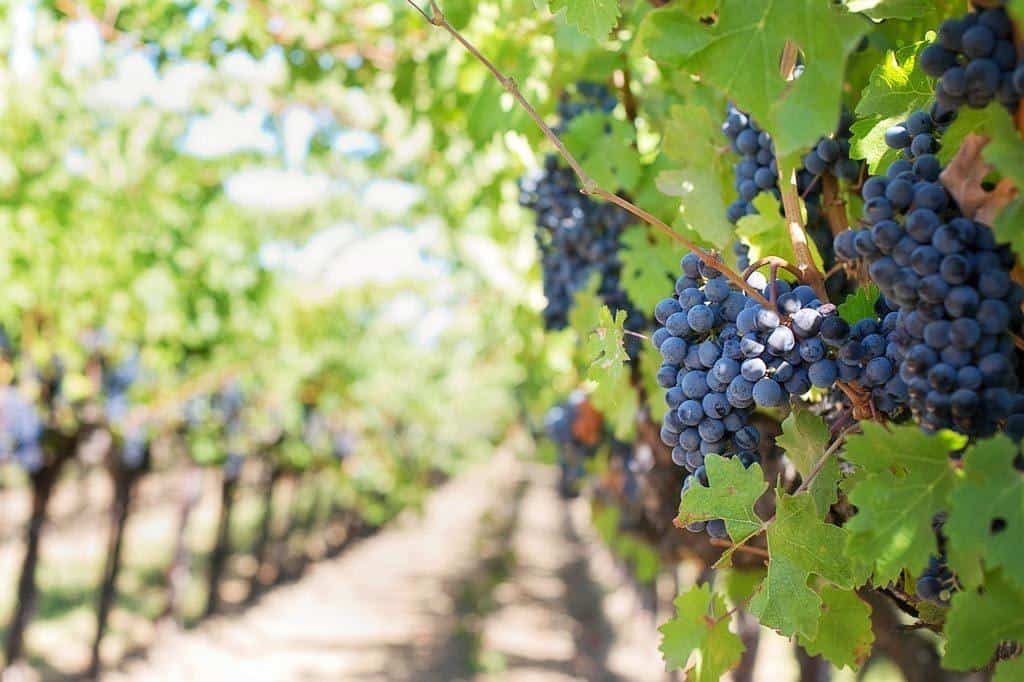
Places to Stay in Australia
Australia has a variety of types of accommodations for which you will find suitable for most budgets. In general, expect to pay more for a night in Australia than most other countries in the world.
But for what you are searching, it is likely you will find the perfect place and price.
Types of Accommodations
As in nearly all other places in the world, accommodation is Australia is varied and depends on your desires, budget and location.
When travelling in Australia you can find accommodation that ranges from bed and breakfasts to hotels, hostels and homestays.
Australian Bed & Breakfast & Guesthouses
You can find family-run guesthouses popping up all over Australia. They can vary a lot by style, from converted barns, bungalows to townhouses.
Rates vary as well depending on the location of the guesthouse and facilities offered.
They offer reasonably priced comfortable rooms and you can also enjoy the family feel, the home-cooked dinners and rely on information provided by the owners.
Hostels are the most popular way for budget travellers to find accommodation while travelling in Australia. However, they are no longer just for students and younger people.
Many hostels in the country offer the kind of amenities that attract people from all walks of life. Usually, they offer shared dorms, cooking facilities, communal area with TV, 24-hour reception and laundry facilities.
Additionally, hostels are a great way to meet people and learn about other places to visit and things to do in Australia.
Hotels can be considerably expensive in Australia. Even ones that are not deemed as luxury or boutique hotels can carry a pretty heavy cost.
If you’re looking for maximum comfort then staying in a hotel is the right choice. But be prepared to shell out for that comfort when travelling in Australia.
Camping & Caravan Parks
One of the most popular ways to see Australia is to travel by camper van.
Rent a camper or a caravan and you can go camping anywhere! Whether it be in national parks or outside of the city limits.
The best thing is that you will be able to experience the country more fully and save money that you’d otherwise spend on accommodation.
Another good option in recent years is AirBnB, and there are more and more amazing places popping up to stay for very affordable prices every day.
As is typical in many destinations where Airbnb accommodations are popping up, you’ll likely find great value and a little more personal space with an Airbnb stay.
If you’re looking for an awesome place to stay in the area, we personally love using Airbnb. If you’ve never used the platform before, sign up using this link to get USD$35 off your first booking .
Australia Travel Tips
General australia travel tips.
While there are many basic travel tips we suggest you use when travelling to Australia, there is also plenty of Australia-specific tips that will make your visit the best it can be.
Here are a few we recommend you consider as you plan your trip to visit Australia:
- Time . One of the most common mistakes that first time travellers make is trying to experience Australia within 2-3 weeks. This is a continent not just a country. It is best to choose just two or three areas to focus on your first visit. Otherwise, you will risk spending most of your holiday in transit.
- Cost . Australia is very expensive, make sure to either cut down your costs or apply one of our tips to get a decently priced accommodation – also make sure to bring twice as much money than how much you originally intended to.
- Tipping . Tipping for services in Australia is not mandatory and most of them are not used to it. Only tip if you exceptionally enjoyed the service.
- Sun Protection . The sun is very harsh – pack a lot of sunscreens!
- Distances . The distances between major cities are bigger than in Europe or the US. Once you’re out of the city you already feel like you’re in the wild!
- Seasons . Australia is in the southern hemisphere which means that all seasons are completely opposite of the northern hemisphere. That’s true for the southern part of the country but not the north. Which in returns means that it’s ideal to visit Sydney from November – April but it’s the exact opposite if they want to visit the Great Barrier Reef!
READ MORE: Our comprehensive list of Australia travel tips to make your journey safer, more enjoyable and more affordable!
Australia Packing List
We always travel with a core packing list wherever we go. And when it comes to Australia, many factors will affect what else you need to bring along with you.
Check out our travel essentials and be sure to add any of the other additional items listed below.
Staying Safe in Australia
Generally speaking, Australia is regarded as a very safe country.
The crime rates are pretty low and if by any chance tourists end up being victims of crime it’s usually a case of pickpocketing.
In big cities such as Sydney and Melbourne you should take the usual precautions:
- Do not walk alone at night in poorly lit areas
- Don’t leave your valuables unattended
- Don’t carry your wallet in your back pocket
The biggest danger when travelling in Australia actually comes from natural hazards and animals.
Every year dozens of tourists drown on one of Australia’s busy beaches because of strong waves and riptides. Wildlife attacks account for a handful more incidents.
But in general, you should feel very safe when you travel to Australia.
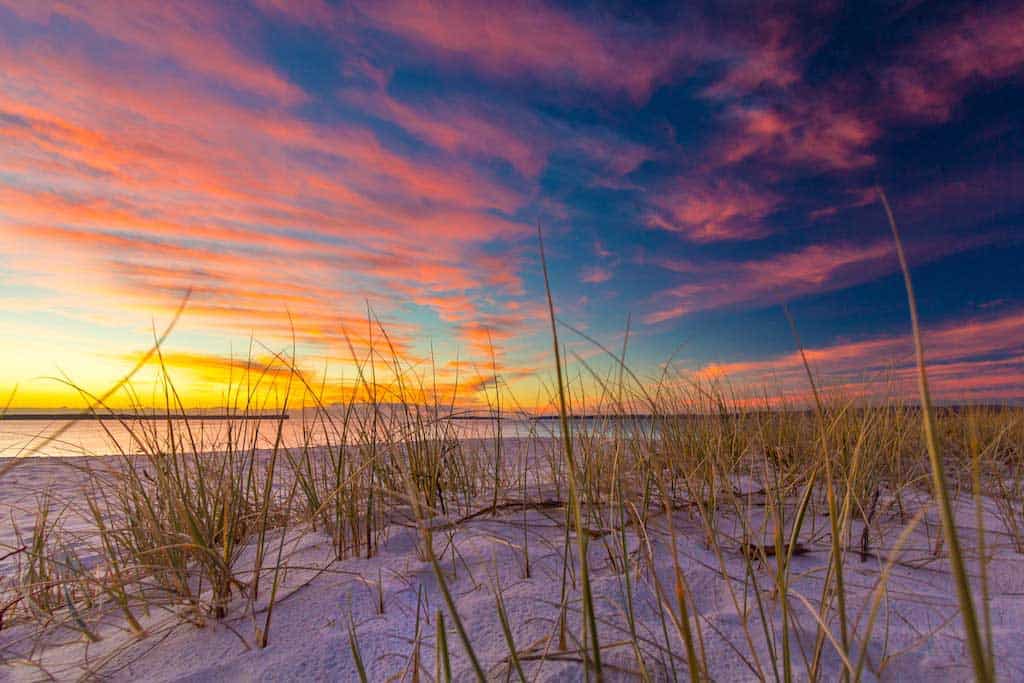
Medical System in Australia
The public health care system in Australia is called Medicare. Australian hospitals are renowned for world-class medical facilities and the highest standards of care.
The Australian government has Reciprocal Healthcare Agreements with a couple of countries which allow travellers access to subsidised health services.
Since there’s always a risk from natural hazards, dangerous animals and simple accidents while exploring the country, it is always advised to buy travel insurance.
Travel insurance will cover loss, theft, accidents and various medical problems.
It is especially recommended if you plan on doing activities that carry a certain degree of risk such as scuba diving, travelling to remote areas, bushwalking etc.
Staying Connected in Australia
Staying connected in Australia is harder than you think it would be. The country is known for abysmally slow internet.
So if you’re trying to keep up with work while you are on the road, it may be a bit difficult.
But there are definitely economical ways to stay connected while you travel in Australia.
We feel like your money will go a lot further if you consider a few other options.
Good Idea: Rent a Portable WiFi Device
There are a variety of portable WiFi device rental companies throughout Australia.
Most plans include unlimited data use – although this is typically limited 4G which then reduces to 3G after some small consumption.
Remember that the internet in Australia is notoriously slow so be patient and prepared to spend around $5 -$10 per day for the services.
Reserve your mobile WiFi device .
Better Idea: Access Free WiFI
One of the best, and certainly the most affordable, ways to stay connected when you travel to Australia is by taking advantage of the many free WiFi hotspots throughout the country.
Of course, these are most commonly found in densely populated cities and at private establishments like McDonald’s.
But if you time your desire to surf the web with the need to grab a bite to eat or a cup of joe then it will still likely work out cheaper than either purchasing a SIM card or renting a mobile WiFi device.
Best Idea: Purchase a SIM Card
SIM Cards make staying connected during international travel much easier. You can purchase prepaid SIM cards in Australia to use in any unlocked mobile device.
These will give you the greatest flexibility in staying connected while you travel.
Purchase a SIM card today .
Be a Responsible Traveller in Australia
As with most countries, when travelling to Australia there are several things you can do to be a responsible traveller.
Consider the following:
- Mind your use of plastics. This includes straws, bags and bottles. Consider carrying a reusable straw, waterbottle and bags for shopping.
- Buy local. Supporting smaller merchants helps local economies.
- Choose sustainable tour operators. This is especially true for all tours into nature preserves, those that deal with animals, or those that will take you to enjoy the Great Barrier Reef.
- Leave it better than you found it. Pack out any of your waste, mind the local rules, stay on trails and don’t touch or feed the wild animals.
- Avoid activities that involve touching wild animals. If a tour has to. pursue an animal in the wild, it is likely presenting more harm and discomfort to the animal than if you are approached by the animal.
Books to Read About Australia
You’ve seen Crocodile Dundee and think you know everything about Australia? Chances are you don’t!
But even if you are well-read, here are a few suggestions that might be worth your time while you’re on the plane to Australia.
- The Songlines (Bruce Chatwin) – Set in the Australian Outback, this novel documents the source of the “Dreaming Tracks” of the Aborigines. Buy here .
- The Secret River (Kate Grenville) – Historical fiction about the settlement of New South Wales by an English convict in the early 1800s as part of his sentence. Buy on Amazon .
- In A Sunburned Country (Bill Bryson) – Half scientific, half anecdotal account of the famous writer who set out to explore all of the wilderness of life in Australia. Buy on Amazon .
- The True History of the Kelly Gang (Peter Carey) – A historical fiction tale about the famous Ned Kelly from the perspective of letters written to his young daughter while he was on the run. Buy on Amazon .
- The Harp In The South (Ruth Park) – An Australian classic about life in Sydney during the Great Depression. Buy on Amazon.
Booking Resources
I know, I know – we’ve already mentioned these resources a bunch in this travel guide.
But here’s the thing… we know you’re going to want and need these resources to help you save money and have a more enjoyable trip!
DISCLAIMER: Some of the links in this article are affiliate links, which means if you book accommodation, tours or buy a product, we will receive a small commission at no extra cost to you. These commissions help us keep creating more free travel content to help people plan their holidays and adventures. We only recommend the best accommodations, tours and products that ourselves or our fantastic editorial team have personally experienced, and regularly review these. Thanks for your support, kind friend!
Table of Contents
Read our australia posts, the 18 best lamington national park walks, queensland, the 6 best nsw road trips – epic drive itineraries [2024 edition], 7 day gold coast itinerary (2024 guide), the perfect sydney itinerary for 3-5 days, the ultimate western australia road trip itinerary, mt field national park – travel guide and itinerary [2024], the ultimate travel guide to the tasman peninsula [2024], queensland road trips – 11 best drive itineraries [2024], the perfect 1, 2 or 3 week australia itinerary [2024], climbing mount kosciuszko – the roof of australia, the ultimate guide to the 10 best kiama beaches, the 12 best perth beaches – a local’s guide [2024].

Australia Travel Guide
Your ultimate australia travel guide, with tips, and things to see and things to do in australia. great for first-time and returning travelers..
G’Day Mate! Known for its teeming natural and cultural treasures, The Land Down Under has the perfect something for every type of traveler.
There are so many great things to do in Australia .
Relax on the gorgeous beaches along its extensive coastline; embark on an exciting adventure, like going on on a walkabout.
Or try Great White Shark cage diving, or head on over to the cosmopolitan cities of Sydney and/or Melbourne to enjoy shopping, fine dining, and a budding art scene.
This Australia travel guide and list of things to do will help you plan your next vacation.
The only problem with scouring through this Australia travel guide is that once you visit this massive island continent, you might not want to leave!
Popular City Guides
- Visit Australia
Our Highlight
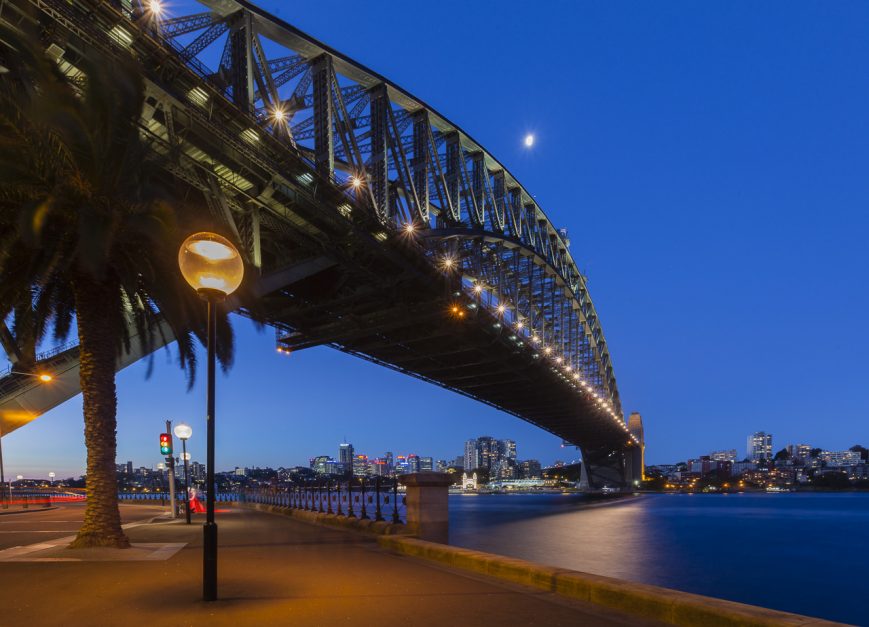
Table of contents
Table of Contents
Fast Facts about Australia
- Australian power voltage is 230 V 50 Hz; Power sockets I
- The local currency is the Australian Dollar (AUD) and is around 1.20 AUD to 1 USD
- Bush fires are common in Australia from late spring to summer; during this period please observe simple safety precautions. Make sure to research risks before travelling and when camping, use only designated fireplaces, while also complying with road warning signs and fire bans.
- The emergency services (police, fire, ambulance) number in Australia (equivalent to 911 in North America), is 000 (Zero-Zero-Zero)
- You can rent a mobile phone from such providers as RebelFone, Vodafone Rental, Landwide and Cellhire.
- In general, if you do not already have a GSM phone, it is less expensive to rent a phone for short stays.
Things to See and Do in Australia
- Take a Helicopter Ride over the Great Barrier Reef – A flight over the reef gives you the opportunity to appreciate just how massive this system is.
- Paddle Board in the Oldest Rainforest on Earth – What better way to spend an afternoon than a lazy float along the river?
- See the wildlife of Kangaroo Island
- Take Flight on a Hot Air Balloon – Step back in time and fly high in the sky as you take in sunrise over the Gold Coast. As you fly over farmland and wide open spaces you’ll spy kangaroos and finish off with a champagne breakfast at a local vineyard.
- Fly over the Flinders Ranges to view the spectacular Wilpena Pound
- Swim with some Great Whites – jump into the water with some of the most majestic creatures of the ocean world.
- Take a Dolphin Swim in Shark Country – get up close and personal with the dolphins of Baird Bay, but don’t stray too far from the guide!
- Take the Ultimate Scuba Adventure – explore this underwater paradise by joining one of the many dive expeditions that explore the reef system on a daily basis. From snorkeling near the safety of a pontoon on the inner reefs to extreme exposed ocean diving out at Osprey Reef, there’s something for everyone to enjoy.
More Australia Travel Guides
- Kangaroo Island Wildlife Sanctuaries
- 12 Amazing Australian Wildlife Experiences
- 23 of the Most Iconic Places to Visit in Australia
- Maria Island – Escape from Civilization in Australia
- Koala Sanctuary – Cuteness in South Australia
- Things to do in Brisbane – Everything You Need to Know
Accommodation
Budget : Hostels in Australia typically go for $20 – $25 AUD per night. But hostels can go as high as $100 AUD per night for a double room. Wake Up Sydney is a popular hostel
You can get private rooms in other hostels for around $50 UAD
Mid Rang e – You can get budget hotels around Australia for $150 AUD. They typically have basic amenities but are clean and modern and include free WiFi.
High End – Australia has some beautiful luxury accommodation around the country. From rainforest retreats to coastal estates. Prices can go for thousands of dollars per night, but you can get a luxury hotel for $300-$500 AUD
- Check out our favorite booking platforms Booking.com , Tripadvisor and VRBO for the best deals on accommodation.
Food : Australia has a wide variety of eateries including fast food, but it is all pricey. The good news is you don’t have to tip in Australia. But expect to pay $20 a meal so budget at least $50 AUD for food per day in Australia.
- Kangaroo meat can be purchased from the supermarket, butcher and is available on restaurant menus as a leaner and healthier alternative to beef or lamb with a 1-2 percent fat content.
- Vegemite, try some! This yeast spread has the same consistency as peanut butter and is an Australian food staple
- Fun Fact: Australia’s former Prime Minister held the Guinness World Record for beer chugging.
The Best Ways to Get Around Australia
Getting to australia:.
Getting to Australia: Australia’s major airports are Sydney, Melbourne, Perth and Brisbane.
Airline fly direct from London, South East Asia and the West Coast of Canada and the United States – Vancouver and Los Angeles
Flights: You can check for the best flights to Australia on Skyscanner .
Transportation:
Australia is a huge country and getting around can take time. We flew between states to get from one city to another with Virgin, Air New Zealand and Quantas.
Buses : Buses are a cheap way to travel between cities. Greyhound is the main busline. But be prepared for long journeys.
Taxis: Taxis start at $4.00 AUD depending on the city. (ranges from $3.50 – $5.00) and then charge 1.50 to $3.00 depending on the city. Check out NUMBEO for up to date fares.
Car Rental: Car rentals are the best option for traveling around Australia. Campervans and Caravanning is still a very popular way to explore the continent. Prices for car rentals start at $25 per day and can go up to $100 per day for a premium car. We’ve used VroomVroomVroom when traveling Australia. You can also compare prices here .
Many people purchase a van to travel around Australia and it is a great option to have the freedom to take your time and save money.
Uber: We have used Uber in Australia and it is an excellent option.
When to go To Australia
Australia has reasonable weather all year round. It is a large country though, so you want to check out each place region by region.
Some part of Australia have tropical or Mediterranean climates, while others are desert and temporal. Northern states are typically warm year-round with two seasons: wet or dry. Southern states have cooler winters.
Australia seasons are the opposite of North America and Europe: December to February: summer. March to May: autumn; June to August: winter; and September to November: spring. We always suggest traveling during shoulder season for cheaper prices and fewer crowds.
Queensland has two seasons, wet and dry. Wet runs from Nov-April and Dry is May-Oct Queensland is split up between two climates the Tropical North and Temporal Queensland. The wet season is hot and humid and you can expect tropical thunderstorms and even hurricanes. That said, we traveled to Queensland in Feb and had mostly sunny skies with just short, intense rains each day. There are far fewer tourists during the rainy season and we found our travels to be very pleasant. See all the things to do in Brisbane The dry season is still hot but there is less humidity: 28 degrees Celcius, (84 Fahrenheit) but nights are cooler. Swimming is better at this time of year with less chance of crocodiles and jellyfish. Crowds are much worse and rates are higher. So it is a trade-off.
South Australia
This is the driest state in the country and it is very large. The hottest and driest months are during the summer in Jan-Feb Late Feb-March is the best time to visit the Capital City of Adelaide Adelaide has wet winters. Summer and high season here is Dec – Feb with an average temperature of 28 degrees Celcius, (84 Fahrenheit) Spring and Autumn are best for shoulder season March-May and Sept – November, temperatures are pleasant and there are fewer crowds March-May is another great shoulder season travel time with temperatures dropping in 15 degrees Celcius (60 Fahrenheit) South Australia has a large portion of the outback in its borders and travel in shoulder season is much more pleasant than the hot summers
New South Wales, Sydney
Sydney typically sees 340 sunny days a year, so you can’t go wrong anytime. Summer and high season here is Dec – Feb with an average temperature of 28 degrees Celcius, (84 Fahrenheit) Spring and Autumn are best for shoulder season March-May and Sept – November, temperatures are pleasant and there are fewer crowds March-May is another great shoulder season travel time with temperatures dropping in 15 degrees Celcius (60 Fahrenheit) South Australia has a large portion of the outback in its borders and travel in shoulder season is much more pleasant than the hot summers
Melbourne possibly has the most changeable weather in Australia. March-May is the best time to visit with a lot of festivals going on. It’s shoulder season right after summer. Sept – Nov is second best. Temperatures are more moderate at these times of the year. Dec-Feb is summer and is peak season in Victoria. Temperatures are hot and the crowds are dense. Imagine having to jockey for a position to see the twelve apostles. That said, we visited Victoria in January and by doing the Great Ocean Walk, we avoided all crowds as we hiked the coast for four days. Go during shoulder season and you’ll be happier. June – August – unlike other cities in Australia – Melbourne is cold and dreary during the winter months.
Ayers Rock is a popular stop on the tourist trail. It’s at the top end of Australia and season are a bit different here. Ayers Rock Wet season : October to April Dry Season : May to September Winter can fall below freezing at night and summer can go above 100 degrees Fahrenheit.
Where to Stay in Australia
- Gold Coast – Peppers Beach Club
- Sydney – Grace Hotel
- Melbourne – Travelodge South Bank
- Daintree Rainforest – Silky Oaks Lodge
- Brisbane – Spicer’s Balfour
- Brisbane – Regatta Boutique Hotel
Australia Accommodation Guides
- Where To Stay In Melbourne – A Guide To The Best Neighborhoods
- 18 Great Things to do in Queensland, Australia
What to Pack for Australia
Due to the sheer size of the continent, the weather in Australia varies significantly depending on where you want to travel.
Northern states experience warm weather year-round while the southern states experience cooler winters.
Australia is also one of the driest continents on the earth with an average annual rainfall of fewer than 600 millimeters.
Remember that Australia’s seasons are opposite to those in the northern hemisphere!
- Pack sunscreen – Australian sun is very strong. Always wear a shirt, hat, sunglasses, and SPF 30+ sunscreen lotion, even on cloudy days.
- Layers – When traveling to different climates remember that layering is the key to effortlessly transitioning from cold to hot climates or vice versa.
- Bug spray – mosquitoes and sand gnats are a nuisance that can be prevented with bug spray and a handy mosquito net. If you visit the Outback, the latter is a must-have. Ticks are also common in the wilderness and, should you be bitten, a pair of tweezers will enable you to remove the pest from your skin.
- First Aid Kit – You may be traveling to remote areas, so have a good stocked first aid kit
- Hiking Gear – for travelers heading up to the Northern Territory, consider packing hiking shoes/trainers, a hat and a water bottle. Also, pack clothes that you don’t mind getting dirty (due to the red dirt of the desert) and avoid packing light colors.
- See our packing tips for travel for all travel gear, camera gear and clothing we pack for travel.
See our packing tips: packing tips.
- Sun is the biggest factor for safety. Drink plenty of fluids, wear sunscreen or sun hats and stay covered up.
- Beaches have a lot of rips and currents so always swim between the flags so lifeguards can see you.
- Swimming on the beaches of Tropical Queensland can have a risk of Crocodiles Talk to locals and follow the signs.
- Avoid swimming at mouths of rivers where crocodiles like to hang out.
- Deadly stingers are a real threat at certain times of the year (Nov-April)
- When bushwalking – wear long pants and high hiking boots to avoid snake bites
- When driving through the outback make sure your vehicle is in good shape and have extra food and water.
Australia Travel Guide: Best Booking Resources
Whenever we travel to we make sure to start with these companies. We have tried a lot of different ones over the years and all of these have consistently proven to be the best when it comes to offering great prices.
We have used every one of these personally and continue to do so.
- Booking.com : This is our go site to when comparing prices for accommodation. It usually has the cheapest prices, especially in Europe and we love their interface. Not to mention you get free cancellation and you are guaranteed the best price.
- Trip Advisor : What we like about Trip Advisor is that we can look at all the reviews and then book our accommodation. TripAdvisor is where we go when we want to compare prices with multiple accommodation providers.
- VRBO : is the main search engine we use when we are looking for a home or apartment rental. It can sometimes be cheaper than hotels and it is the best way to stay in areas that offer a more local feel.
- Hostelworld : With one of the largest databases of hostels in the world, Hostelworld is the go-to site when you are looking for budget accommodation.
- Skyscanner : This is the first place we check for flights. It consistently comes back with the cheapest and best options. It allows us to compare a lot of airlines to get the best price.
- Rome 2 Rio : If you want to see how to get somewhere by plane, train, bus, ferry or car Rome2Rio lays it all out for you as well as related costs.I love how they show it all to you on a Google Map and it works offline.
- Get Your Guide: For all your day trip and city guide needs, we use Get Your Guide. It has the world’s largest collection of things to do with more than 30,000 activities in 7500 destinations.
- World Nomads Insurance: When traveling to Italy you should always have travel insurance. We have found the best bang for your buck is by far World Nomads.
Australia Travel Guide: Related Articles
To browse all our articles and guides about Australia click here.
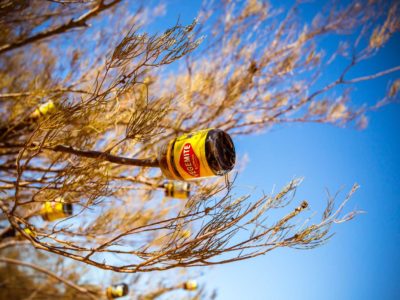
Australian Food: 24 Australian Dishes You Have to Try
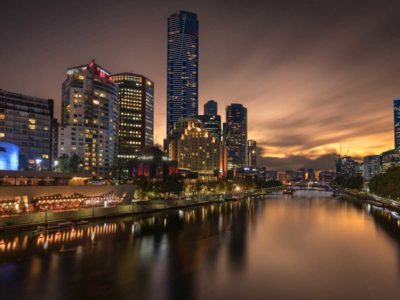
The Best Things to do in Melbourne, Australia
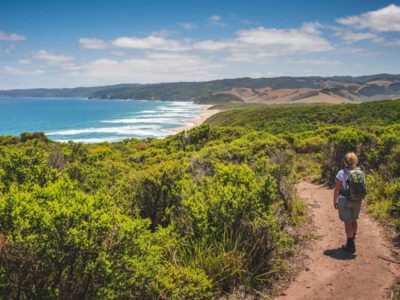
10 Fun Facts About Australia

The land down under may seem like a world away, but it’s a dynamic destination that caters to music lovers and fashionistas, urban adventurers and discerning gastronomes, the nature-intrigued and seasoned outdoors explorers. Now reopen to international travelers, Australia beckons with all that it offers. You may come for the very great barrier reef in Queensland and discover scuba diving led by Indigenous guides; or pair Victoria’s ski scene with its wine scene. Maybe you should consider a longer trip...
- Copy Link copied

When’s the best time to go to Australia?
It’s hard to find a wrong time to visit Australia. Winter is June to August, when most of Australia hits a low season. This is the time to ski in the Kosciusko National Park or on Victoria’s Mount Hotham. It’s also the best time to visit northern Australia.
Between May and September the Northern Territory, northwestern Australia, and Queensland offer ideal weather. In summer, these areas swelter, either too humid or too hot, inciting some travelers to make a U-turn to more friendly climes down south.
From September to May, southern Australia is at its peak. Every other traveler looking for antipodean escapades arrives at this time of year, but there’s plenty of land to go around. December to February have most Sydneysiders and Melbournians pumping up the air-conditioning, while braver tourists define new tan lines on Bondi and Manly beaches.
How to get around Australia
They don’t call Australia “the land down under” for nothing. It’s a long flight from just about anywhere. And once you’re here, the various must-see destinations are spread over vast distances, so some logistical planning is necessary.
As of 2022, there were nine nonstop inbound flights to Australia from the U.S., stopping in Sydney, Melbourne, Brisbane, or Perth. Interstate flights are easily accomplished via Qantas, Jetstar, Tiger, and Virgin.
To see the whole continent in under a month is a serious undertaking and will involve trains, planes, a few automobiles, boats, and a ferry or two.
A less daunting project would be to take on the East Coast in one trip, spending time in Sydney and Melbourne, exploring Adelaide and the Great Ocean road by car, taking a car-ferry or flight to Tasmania, popping in to Canberra, and jetting up to Queensland for the tropical experience.
Western Australia is simple to navigate by train, car, or tour bus, but don’t even think about going into the outback alone in summer.
The interior outback, known as the Red Center, is best reached by organized tour, available as luxury excursions, adventure operations, backpacker units, and every other imaginable collective. You can take four-wheel-drives off road, but carry water (five liters per day, per person), bring a high-frequency radio transceiver, and be sure to respect Aboriginal sacred land, national park rules, and animal crossings at dusk and dawn. (Neither party comes out well from an on-road clash with a large kangaroo.)
Food and drink to try in Australia
Foreigners’ overused jokey adage to “throw another shrimp on the barbie” no longer sticks. First of all, Australians call them prawns. Second, Australian gastronomy has surpassed the humble barbecue. It remains a happy summer stalwart in backyards across the country, but what happens elsewhere is more interesting. The country’s food scene has been largely overlooked abroad, and for the most part the global food media have shunned Australia’s culinary experience, focusing instead on its cuddly native critters and extraordinary landscapes. It’s also true that the nation’s food culture is really coming of age. What was a less than inspiring restaurant scene just a couple of decades ago has blossomed in recent years. Restaurants such as Attica, Quay, Sepia, and Flower Drum can stand up to the world’s best.
Culture in Australia
The new year kicks off the traditional cycle, and less than a month later the country celebrates Australia Day. Officially it marks the anniversary of the arrival of the British in Sydney on January 26, 1788. Mindful of the original inhabitants of the land, the day is now simply a celebration of being Australian. Folks light the barbecue, play cricket on the beach, and take to the outdoors. Every happy Australian stereotype comes out on one glorious public holiday. Parties don’t come much more mind-blowing than the Sydney Gay and Lesbian Mardi Gras Parade , the biggest of its kind in the world. Go along to cheer on the sequined, feathered, Lycra-wearing ensemble as they celebrate equal rights.
Hippies, rockers, folk fans, indie types, country listeners, jazz groovers: There are festivals across Australia for every sort of music lover. Travel north to Byron Bay to revel in the stunning bushland setting of Splendor in the Grass , and go to Victoria for the Falls Festival , relocated from Tasmania following a two-year pandemic hiatus. See where Keith Urban started his career at the Tamworth Country Music Festival . There’s Tropfest for film lovers, and the Sydney, Melbourne, or Byron Bay Writers Festivals for the more literary.
Local travel tips for Australia
Australia is a wide, stunning, varied land. To travel around it well requires great research and good advice. Locals love nothing better than spouting off about their favorite places, the best eats, the must-nots and must-dos. “Shout” (buy) a local a beer and you’ll get better insider advice than you could from a guidebook, and probably a really good laugh.
Guide Editor
Kate Gibbs and Laura Dannen Redman


Complete Australia travel guide (Everything you need to know)
By: Author Tracy Collins
Posted on Last updated: March 21, 2024
This essential Australia travel guide contains everything you need to know to plan your visit – where to go, what to see and lots of practical tips and resources to ensure your trip to (and around Australia) is everything you dreamt of.
Welcome to my guide to all things Aussie! Whether you are planning a short trip, a working holiday or a big move to Australia find out all you need to know in this post.
Obviously covering all the things you need to know when visiting Australia (or for prospective expats all the things to know before moving to Australia) makes this a rather extensive list so there are links to more detailed posts included in this post.
I have tried to include as much information about the important things to know about Australia before you arrive but if there is something missing please let me know in the comments!
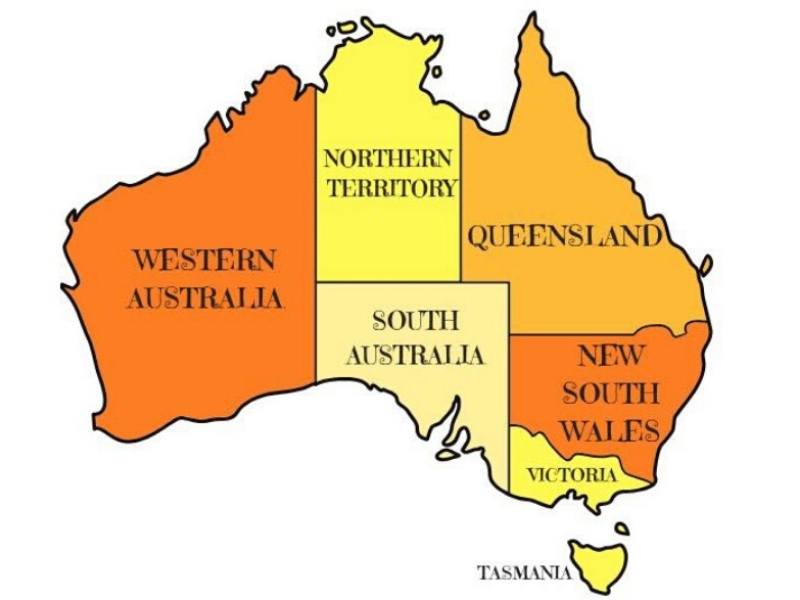
Facts about Australia
Do you need a visa for visiting australia, australian customs, mobile phones in australia, electrical plug fittings in australia, travel insurance for australia, things you need to know if you are moving to australia, driving in australia, airlines in australia, bus and coach companies, train travel in australia, the australian climate – when is the best time to visit, money matters in australia – currency and banking, public holidays in australia, shopping in australia, australian food, australian slang, australian sport, australian popular culture, australian education system, australian wildlife, unesco world heritage sites in australia, best beaches in australia, national parks in australia, books to read before you visit australia, christmas in australia, the gold coast & gold coast hinterland, sunshine coast & sunshine coast hinterland, the whitsundays, port douglas, new south wales, western australia, south australia, northern territory, australia capital territory, so you think you know australia why not take my quizzes and find out, australia travel guide.
Capital – Canberra
Area – 7,692,024 square kilometres
Population – 23 million
Currency – Australian Dollar
Language – English
Time zones – 3 in total (Eastern Standard Time. Central and Western Standard Time)
UNESCO World Heritage Sites – 19
There are six states in Australia: New South Wales, Queensland, South Australia, Tasmania, Victoria and Western Australia and 2 territories – ACT (Australian Capital Territory) and Northern Territory.
There are more kangaroos than people in Oz!!
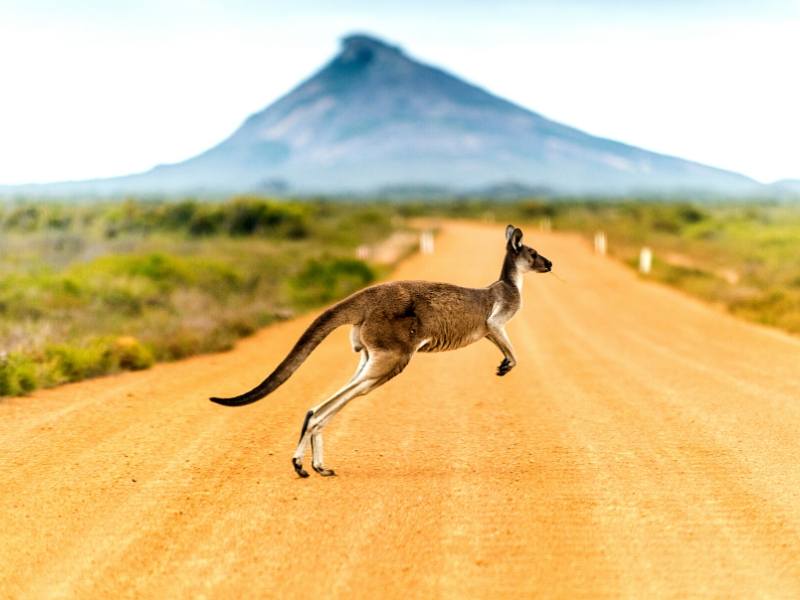
Things to know before visiting Australia – Practicalities
When visiting check the requirements for visiting Australia and check if you will need a visa.
The best way to find out what you will need is to check the Visa Finder on the Australian Government’s Department of Home Affairs Website. Click here to find out about your visa options!
If you are planning to make a more permanent move to Australia it may be useful to contact an agent to help with the application process (this is what we did) though I know many people prefer to save money and go through the process themselves.
All in all, just make sure you are aware of the visa you want/need and follow the correct procedures.
Read more – 15 things to know before moving to Australia
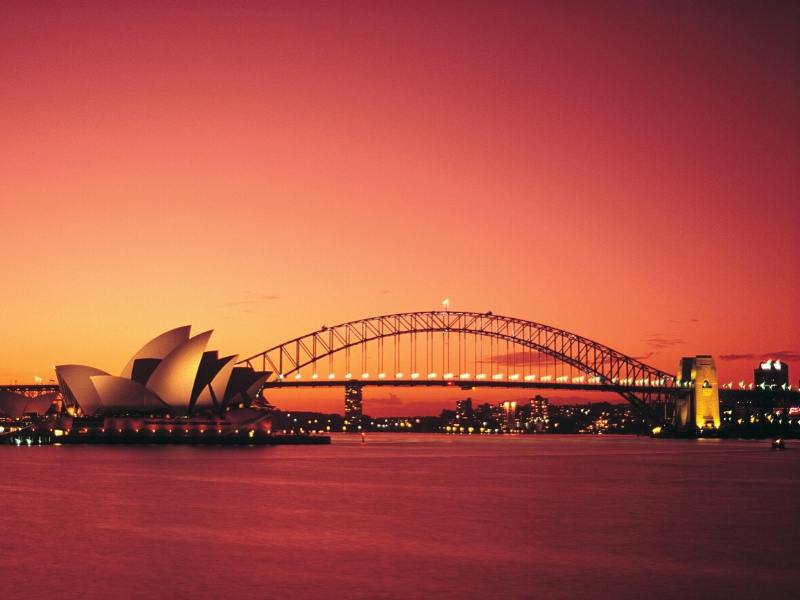
If you have seen episodes of the programme ‘Australian Border Control” you will know that there are items which can’t be brought into Australia.
There are obvious things such as drugs and weapons and also a lot of other items such as fruit, vegetables, meat, shoes with mud or clay attached, and some wooden items etc which you will need to be aware of.
For a full list of what you can and can’t bring into Australia with you check the Australian Government’s Department of Home Affairs for guidance.
If you have an unlocked mobile buying a prepaid sim card is relatively easy. If you are moving to Australia and need a longer term solution then pay monthly contracts are available.
I have found Telstra to have good coverage even in the more regional places I have visited but don’t rely on a mobile phone if you are planning to travel in the outback.
Telstra, Optus and now Vodafone seem to be the main providers in Australia. Virgin Mobile is also available and uses the Optus network.
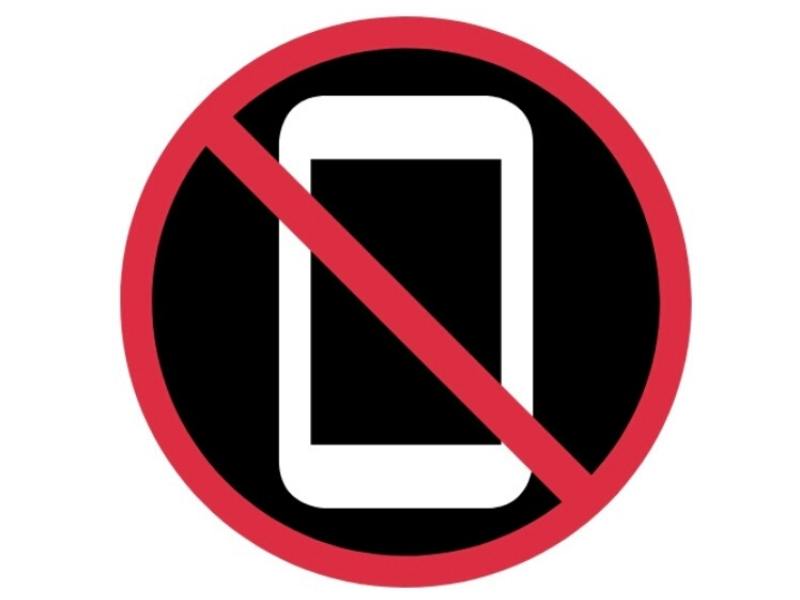
The plugs in Australia have two flat metal pins shaped like a “V” and some may contain a third flat pin in the centre. The standard voltage is 230 V.
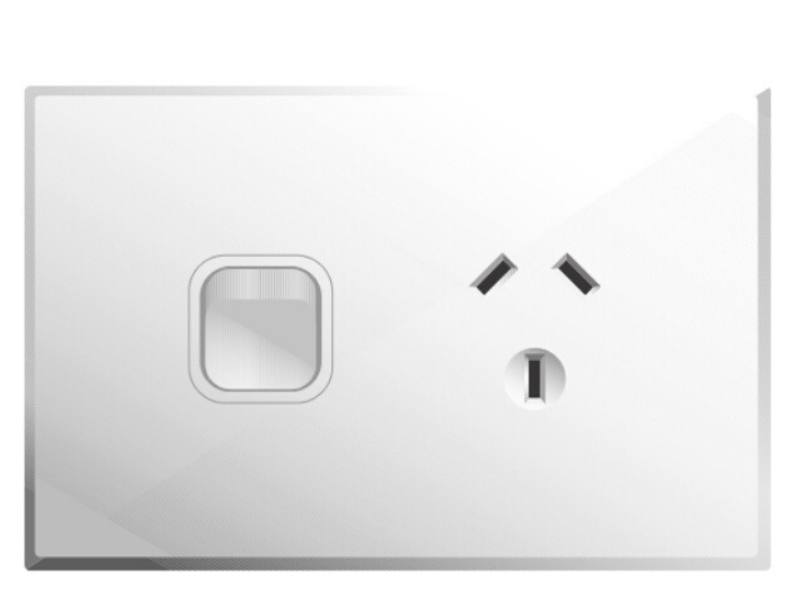
You will need to bring an adaptor with you if you want any electrical items to work.
You can buy them in Australia or at the airport but to save money why not purchase before you arrive ?
I never travel without insurance so recommend you take out appropriate cover before you leave for your trip/move.
If you are making a more permanent move there are things you will need to know before arriving in Australia and soon afterwards.
- How to move your money to Australia
- If you are working you will need a Tax File Number .
- If you are staying longer than 3 months you will need to apply for a state driving licence.
- Depending on the type of visa you may be able to apply for a Medicare card.
- If you are moving all of your belongings make sure you get the best quote for international removals .
Read more – Things NOT to do when you visit Australia
How to get around Australia
Do not underestimate just how large Australia is (the sixth-largest country in the world!) and the considerable distances between the major cities.
We drove from Brisbane to Cairns a few months ago and after 19 hours of driving we were still in the state of Queensland!
So what are your options for travelling around Australia?
- Australian’s drive on the LEFT! (Something some tourists forget apparently!)
- Around 70% of cars in Australia are automatic transmission.
- The metric system of distances and speeds is used in Australia.
- The road qualities vary greatly across Australia – make sure you check and plan carefully when taking a road trip e.g are all the roads sealed? Where are the petrol stations along the route? Be particularly clear when planning travel to more remote areas.
- Visitors can drive on a foreign (English language) licence for up to 3 months. After this you are required to get a state one e.g you have 3 months to change your drivers licence to a Queensland one after you move to Queensland. (If your licence is not in English you require an International Diving Licence)
- Everyone is required by law to wear a seat belt. Children under the age of 7 require an approved harness or booster seat.
- Speed limits are enforced throughout Australia and there are fines for those who speed. Be aware that there are strict speed limits imposed around school zones generally 7 – 9 am and 2 – 4 pm. Check the relevant state/territory for the speed limits.
- Parking is generally free but do check! Also park on the left side of the road – parking facing oncoming traffic is a fineable offence.
- Signposts will indicate if a U-turn is allowed.
- Driving at sunrise and sunset and at night is not recommended due to native animals such as kangaroos and koala being more active at these times.
- Classic driving trips to make in Australia include the Great Ocean Road , Melbourne to Cairns via Sydney and Brisbane, the Gibb River Road, the Savannah Way and the drive across the Nullabor to name just a few. Be aware of the vast distances involved when planning a road trip in Australia!
- Uber is available in Australia’s main cities.
- Hire cars are available from Avis, Budget, Enterprise, Europcar, Hertz, and Thrifty.
- Minimum age to hire a car is 21 and you must have had your licence for a year.
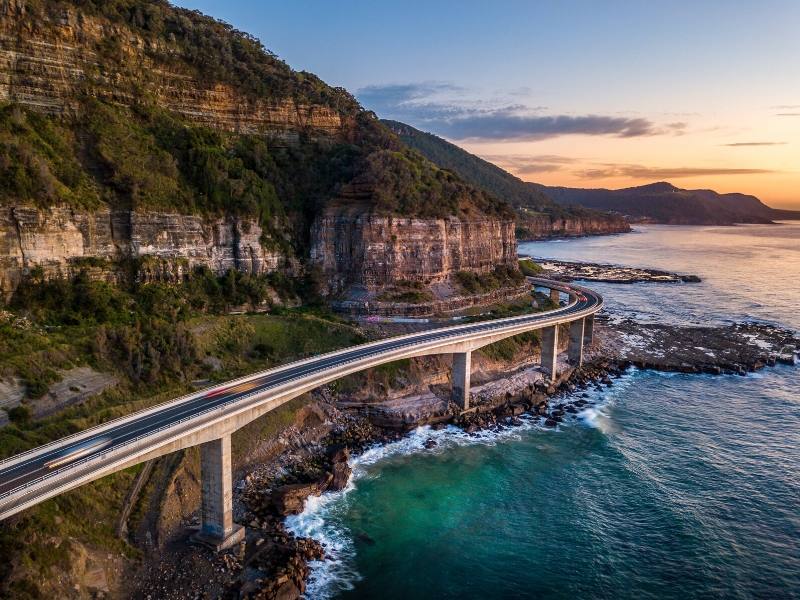
Australia is served by many international airlines. Once you are in the country and want to travel by air the main airlines are Qantas , Virgin Australia , Jetstar and Tigerair.
If you book well ahead of time fares can be relatively inexpensive (in my view though others may not agree!)
Flying times between some of the main destinations:
- Brisbane to Melbourne – 2 hours 30 mins
- Brisbane to Sydney – 1 hour 30 mins
- Perth to Brisbane – 5 hours 15 mins
- Brisbane to Adelaide – 2 hours 40 mins
- Sydney to Melbourne – 1 hour 30 mins
- Perth to Sydney – 5 hours
- Sydney to Uluru – 3 hours
- Melbourne to Darwin – 4 1/2 hours
If you are planning to fly quite often I would recommend joining the relevant Frequent Flyer programs with Qantas/Virgin Australia.
I have already used points to pay towards a flight from Brisbane to Melbourne and saved a few $100 in the process.
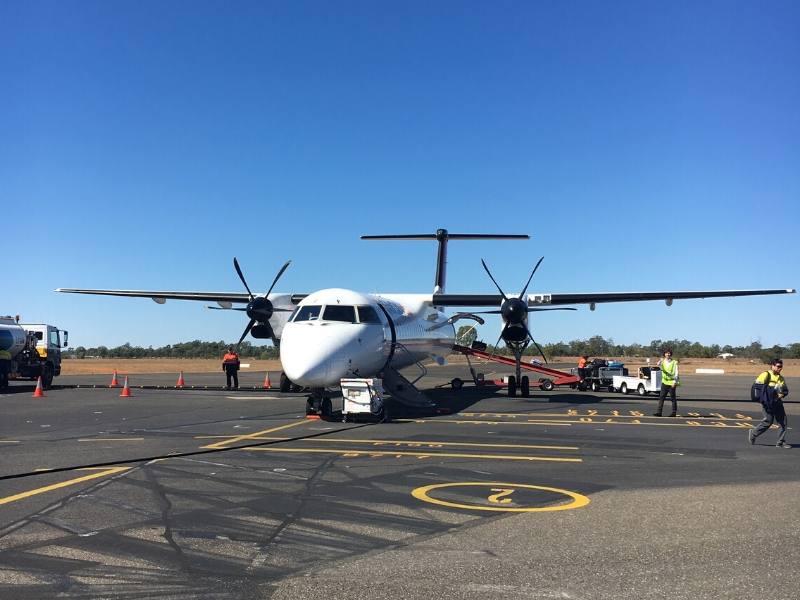
There are many coach companies that cross Australia so plenty of options – if you have the time and are OK with long journeys!
It can often be cheaper and definitely quicker to fly so I would recommend comparing costs if you are on a budget or short on time!
Greyhound Australia has a national network across Australia. You can purchase a Short Hop Pass which gives you 30 days to travel. You can get on and get off as many times as you like between two preselected major cities.
Greyhound offer other pass options so if traveling Australia by coach is something you are happy to consider I would recommend checking out their website for further information.
There are other bus companies around which provide tours including AAT Kings , Oz Experience and Adventure Tours Australia .
Home to two of the greatest train journeys in the world (both of which are HIGH on my bucket list) the Ghan and the Indian Pacific are journeys many Australians as well as visitors aspire to take.
As well as the iconic rail journeys there are other train services connecting the main cities in Australia such as the Spirit of the Outback between Brisbane and Longreach. Local services enable easy commutes into major cities and services are generally punctual and regular.
More coming soon as I plan to take some of these trips!
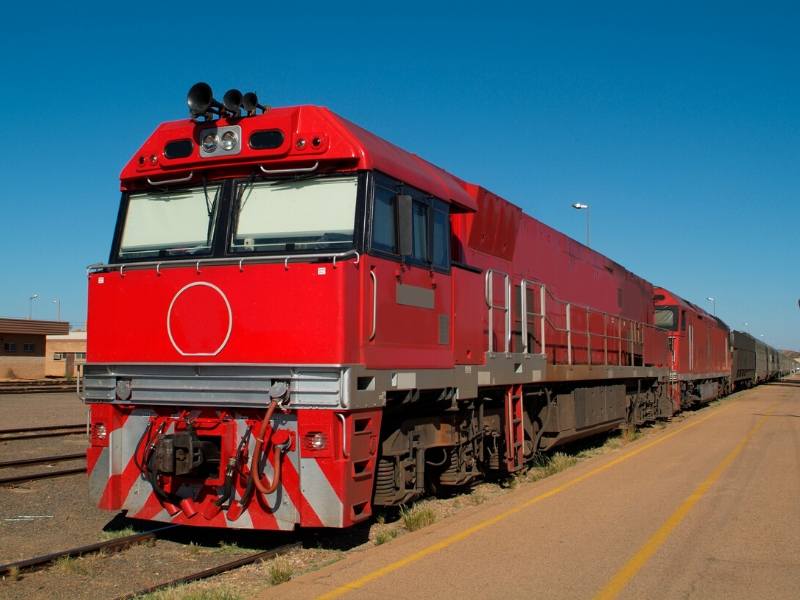
Australia is a huge country and the climate varies depending on where you are! The north of the country has a tropical climate while the south has a more temperate climate.
In the north there are 2 main seasons – the wet and the dry. If you want to experience 4 seasons then the southern states of Australia will provide that!
The high season for travel in Australia is in the December January/February (school holiday time). It is summer and is pretty hot everywhere! However this is not the best time to visit tropical areas.
Queensland has sub-tropical to tropical climate and can be humid (very humid the further north you go). If possible if you are planning a trip to northern Australia I would recommend to visit in the Australian winter (June to August when it will be warm and dry).
During the wet tropical cyclones are a possibility and this is also stinger season when deadly jellyfish infest the warmer tropical waters.
If you are heading to one of the many beaches around Australia the Gold Coast and Sunshine Coast in Queensland are warm and sunny for most of the year.
Keep the climate in mind when planning travel around Australia to get the best out of your trip. For example we visited Cairns and the Far North in July and Melbourne and Tasmania in January!
You will find lots of grey nomads in caravans and motorhomes make the trek from Victoria and South Australia to Queensland every winter to avoid the cool temperatures in those states.
TIP – The sun in Australia is very strong with high UV scores (all year round in tropical areas) so it is vital to remember to stay sun safe and wear a hat and sunscreen when out and about.
Useful website – Bureau of Meteorology (BOM)
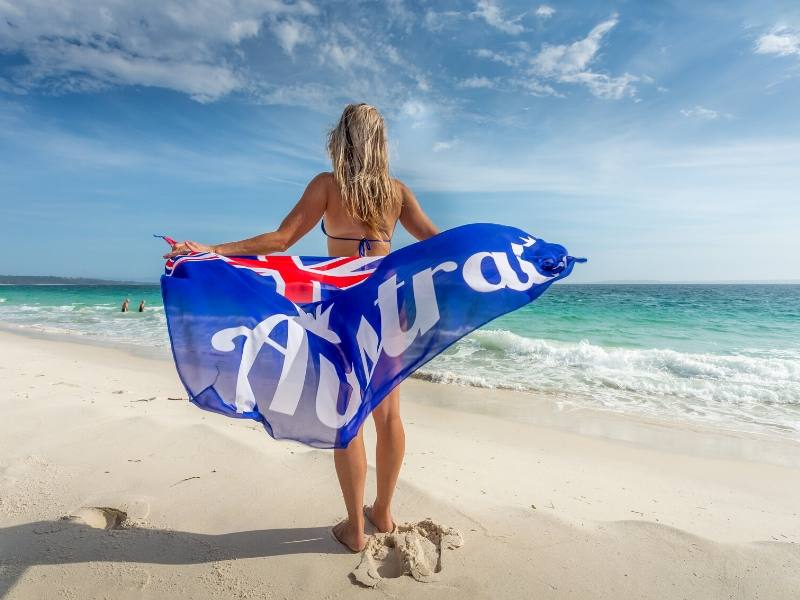
The currency in Australia is the dollar – the Australian dollar. It comes in notes of $5, $10, $20, $50 and $100. Coins available are $1, $2, and then the smaller values coins of 5 cents,10 cents, 20 cents and the rather large 50 cents!
Credit cards are accepted in most places but always carry some cash just in case!!
Cashpoints/ATM’s – It is not necessarily free to make withdrawals so do check!
The major banks in Australia are:
- National Australia Bank (NAB)
- Commonwealth Bank (CBA) (was owned by Australian Government until 1996)
- Australia and New Zealand Banking Group (ANZ)
- Westpac (WBC)
Banks are open 9:30 – 4pm Monday to Thursday and until 5pm Fridays. Larger banks are open on Saturday mornings but do check first!
USEFUL WEBSITE – Exchange rates
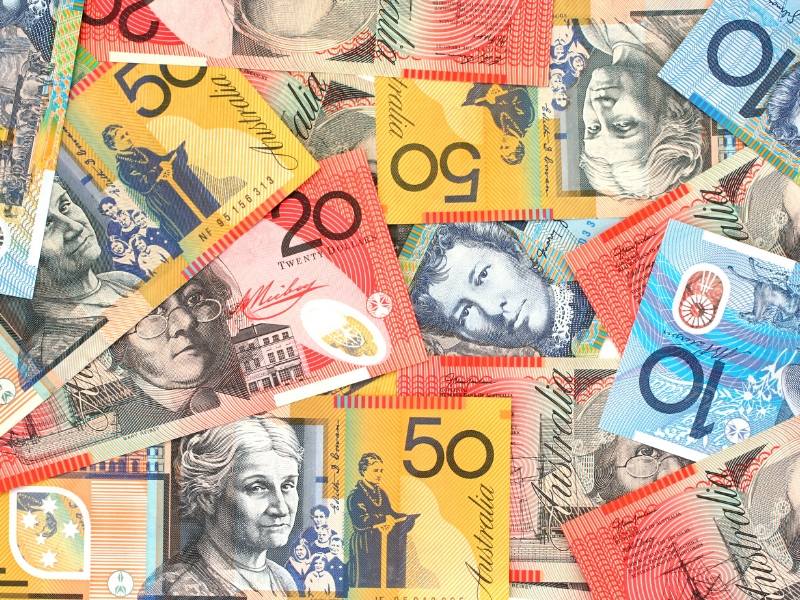
1 January – New Year’s Day
26 January – Australia Day
Easter – Good Friday to Easter Monday
25 April – Anzac Day
Queen’s birthday – varies from 2nd Monday in June to last Monday in September in WA to first Monday in October in QLD
25/26 December – Christmas Day/ Boxing Day
There are other holidays that are just state specific so check locally.
Shopping centres (malls) can be found in all major towns and cities across Australia. For food shopping Coles/Woolworths and IGA’s dominate though local markets are also a great source of fruit and vegetables. Aldi is now making an appearance too in some areas.
Major retailers include Big W, Target, Ikea and my own personal favourite K Mart!
Gumtree and Facebook marketplace are great sources of second hand goods. E Bay is popular and Amazon has also recently entered the on-line shopping arena in Australia too.
Credit cards are widely accepted and paying by ‘paywave’ (tap) is common too. If the cost is over $100 you will be required to enter your pin but for amounts less than this simply tap your card.
Read more – Shopping in Australia (all you need to know)
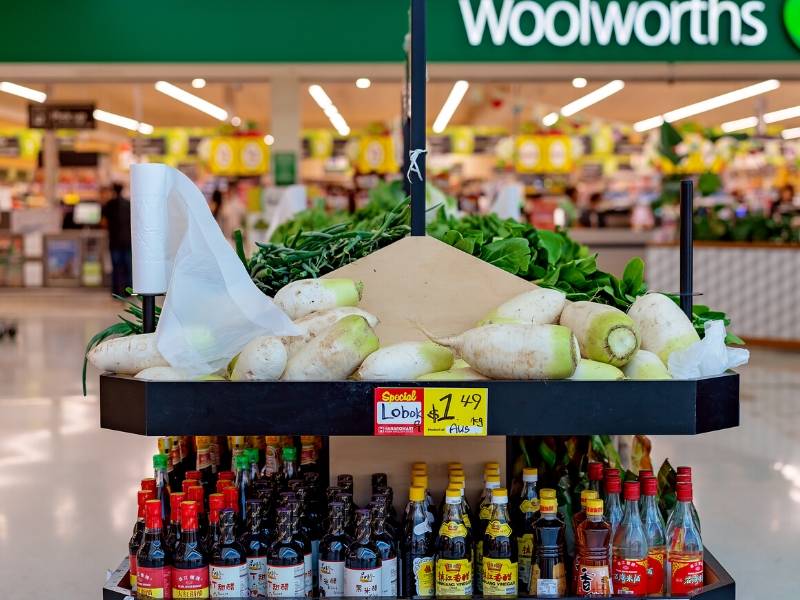
Think of Australia and a BBQ and eating outside will immediately spring to mind. Go out and about during the weekends or school holidays and you will see families enjoying a BBQ at the park, beach or lagoon.
Other popular Australian foods include Vegemite, Tim Tams, Lamingtons, and Anzac biscuits. Kangaroo meat can be purchased from most butchers and food shops.
Read more – Yummy! 10 interesting Australian foods you have to try!
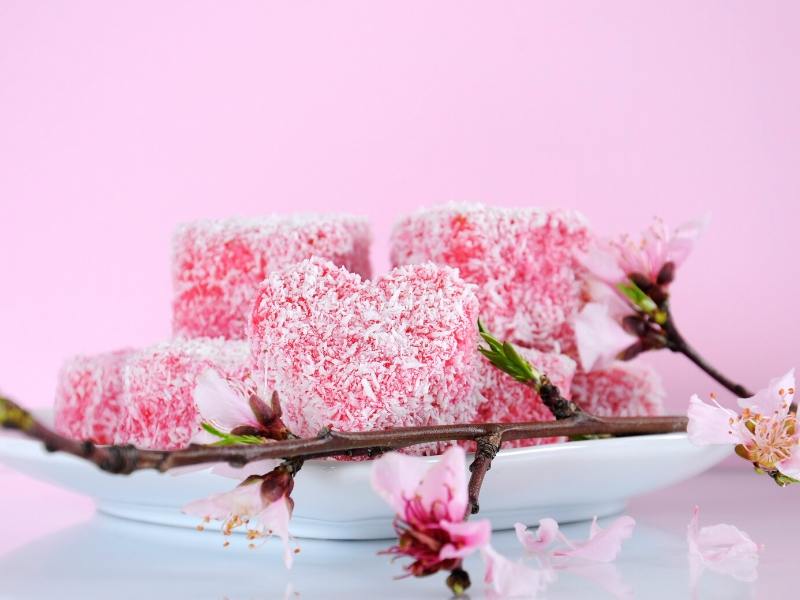
Most of us of a certain age will know one particular saying about a BBQ and a shrimp. Apparently no Aussie would ever use this phrase!
However you will hear some other phrases that will be familiar (especially for those Neighbours and Home and away addicts amongst us!)
So “G’day” and “No dramas” and shortened words ending in “o” like arvo and servo may enter your vocab! Just watch episodes of Summer Heights High and Kath and Kim and you’ll be right!
Read more – A Brit’s guide to understanding Australian slang
Read more – 6 common Australian myths debunked
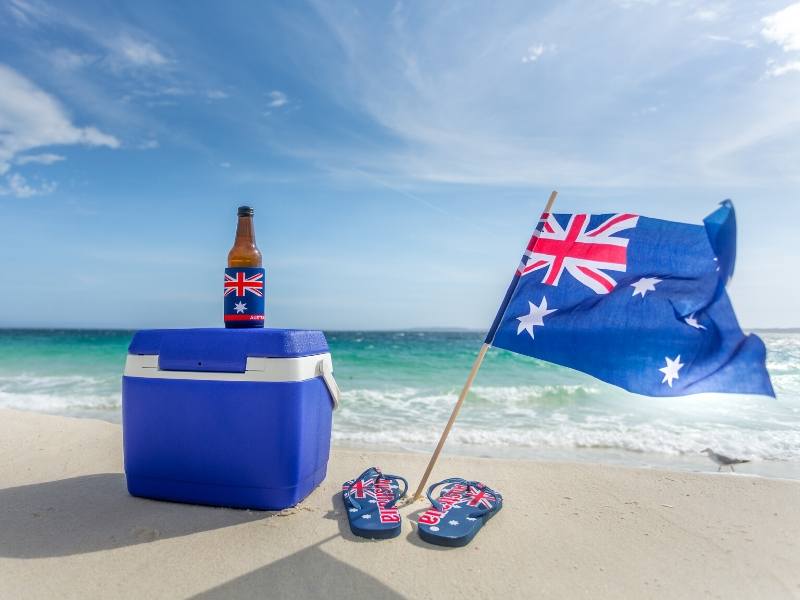
Aussie Rules Football.
Rugby League
Rugby Union
State of Origin (only NSW and Queensland) and the Maroons (pronounced Marown for some reason)
The Melbourne Cup
The Australian Open
Thats it for my total knowledge about Aussie sport. I will update this further one day. Maybe.
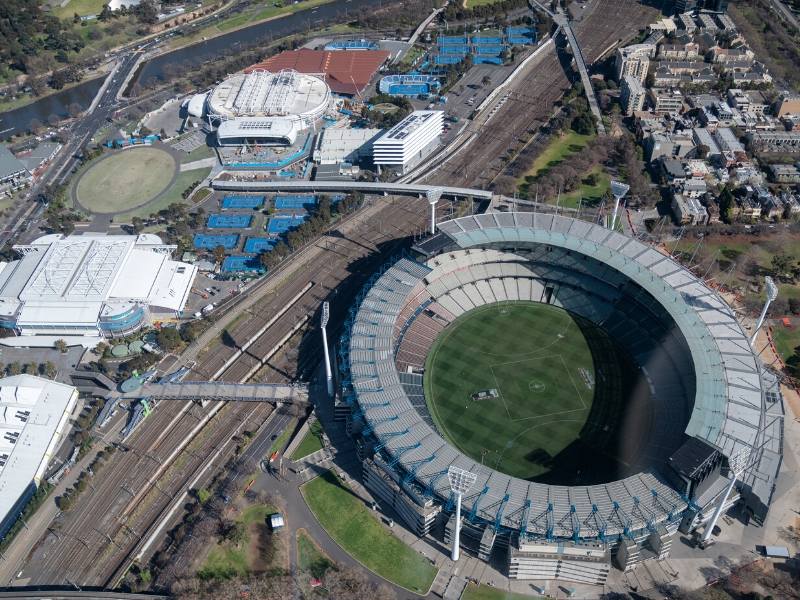
TV in Australia is not brilliant but with the outdoor lifestyle it doesn’t seem matter too much. And there is always Netflix and the Aussie version Stan to binge on!
There are some Australian films that I would highly recommend to people before they visit Australia. Whilst my list is by no means exhaustive it is a great way to get your head around Australian history as well as popular culture Down Under.
My top 3 are Muriel’s Wedding, Rabbit-Proof Fence and the wonderfully flamboyant Priscilla Queen of the Desert.
Read more – Australia’s best street art (and where to find it)
Read more – 10 Australian movies to watch before you visit!
Read more – A guide to 10 of Australia’s BIG things
Read more – Best Aussie TV shows on Netflix
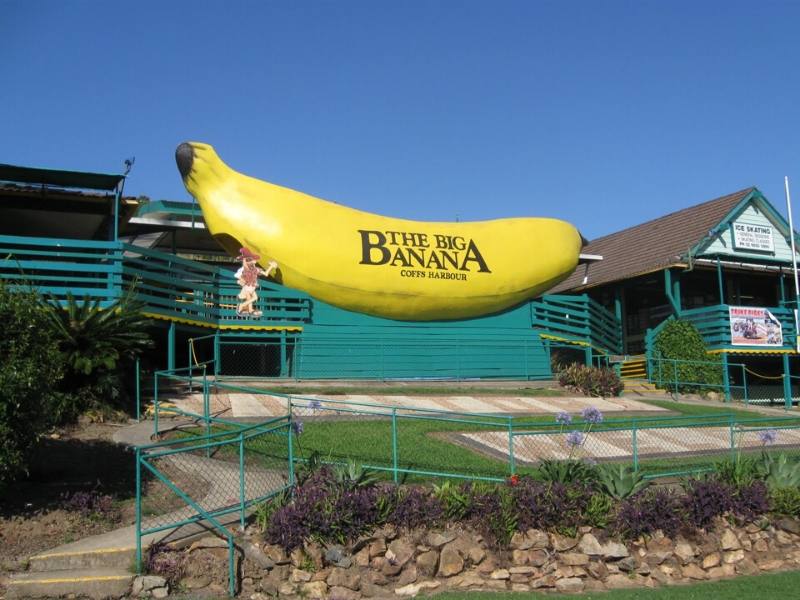
Read more – Tips for supporting children with the move to Australia
Read more – 25 books about Australian animals to share with children
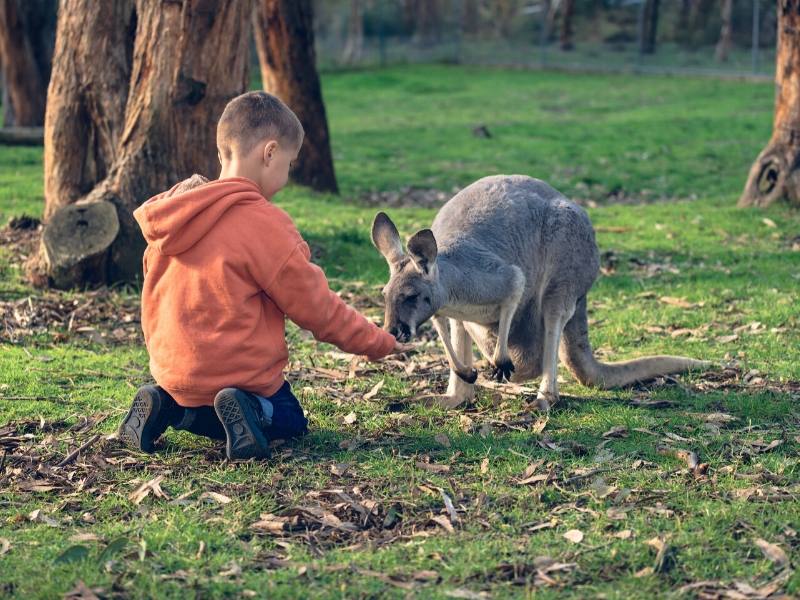
Kangaroos, koala, echidna, possum, wombats, and platypus. Just some of the animals you can see in the wild in Australia (and no-where else unless you head for a zoo!)
And of course yes snakes and spiders but hey lets not dwell on those critters too much!
I have written a lot about some of my encounters with Aussie wildlife so for more information check out some of these posts!
Read more – 7 Awesome books about Australian animals
Read more – A guide to seeing kangaroos at Cape Hillsborough
Read more – Finding platypus at Eungella National Park
Read more – How to see amazing Australian animals in Queensland
Read more – An unforgettable day with Brisbane Whale Watching
Read more – Visiting Lone Pine Koala Sanctuary in Brisbane
Read more – Tasmania animal guide
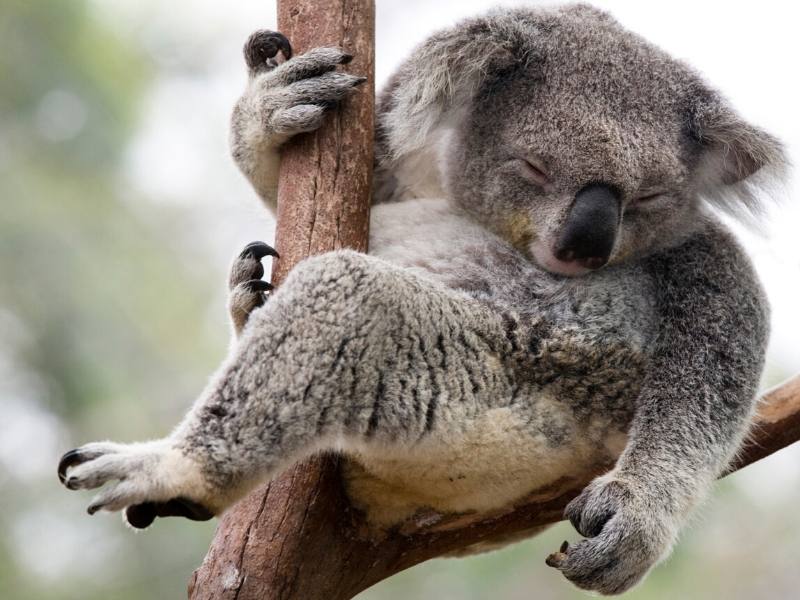
There are 19 Australian UNESCO World Heritage Sites .
Cultural (3)
- Australian Convict Sites (2010)
- Royal Exhibition Building and Carlton Gardens (2004)
- Sydney Opera House (2007)
Natural (12)
- Australian Fossil Mammal Sites (Riversleigh / Naracoorte) (1994)
- Fraser Island (1992)
- Gondwana Rainforests of Australia (1986,1994)
- Great Barrier Reef (1981)
- Greater Blue Mountains Area (2000)
- Heard and McDonald Islands (1997)
- Lord Howe Island Group (1982)
- Macquarie Island (1997)
- Ningaloo Coast (2011)
- Purnululu National Park (2003)
- Shark Bay, Western Australia (1991)
- Wet Tropics of Queensland (1988)
Mixed (4)
- Kakadu National Park (1981,1987,1992)
- Tasmanian Wilderness (1982,1989)
- Ulu r u-Kata Tju t a National Park (1987,1994)
- Willandra Lakes Region (1981)
Read more – A guide to Australian UNESCO World Heritage Sites & 29 Australian landmarks to add to your bucket list
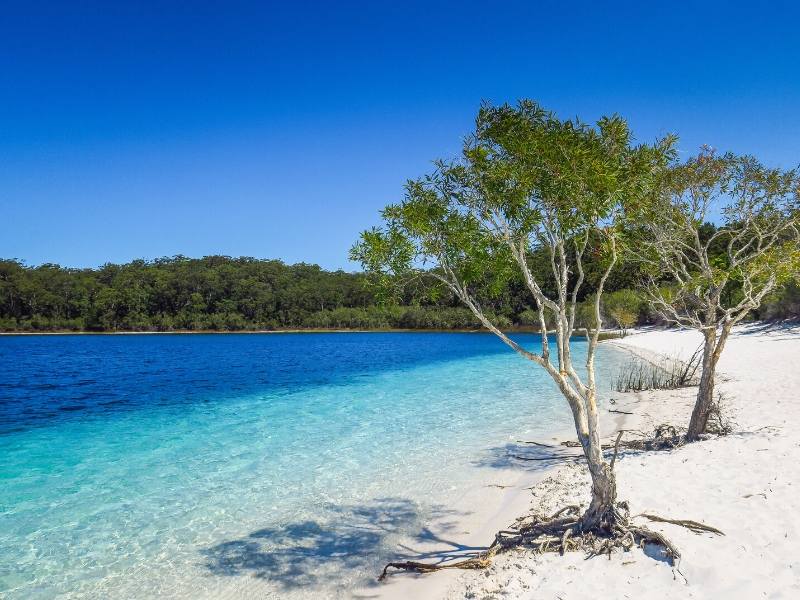
With a 50,000 km coastline and over 10,000 beaches you really are spoilt for choice!
The most famous beaches arguably include the following!
- Bondi Beach – Sydney
- Main Beach – Noosa
- Whitehaven – Beach Whitsundays
- Main Beach – Byron Bay
- Wineglass bay – Tasmania
- 75 Mile Beach – Fraser Island
- Burleigh Heads Beach – Gold Coast
- Cable Beach, Broome
- Scarborough Beach, WA
Read more – 25 of the best beaches in Australia
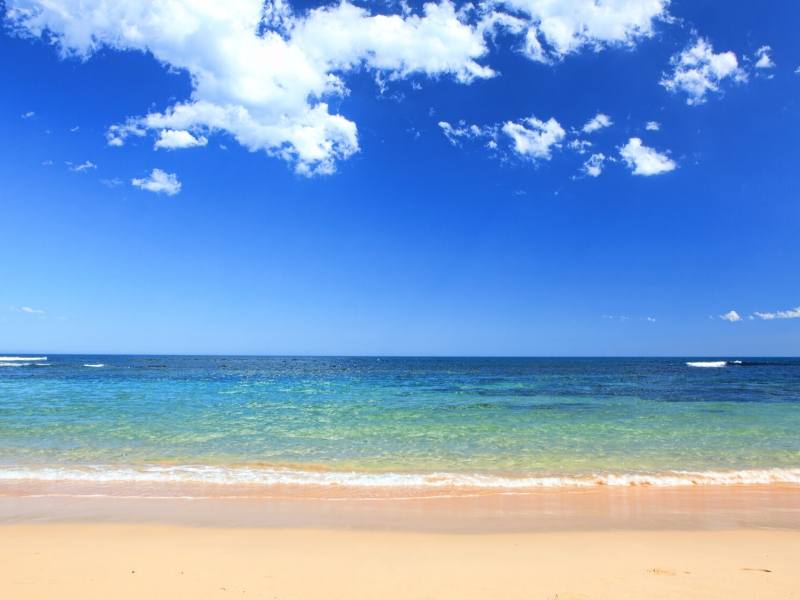
Coming soon!
Read more – 18 Books to read before you visit Australia
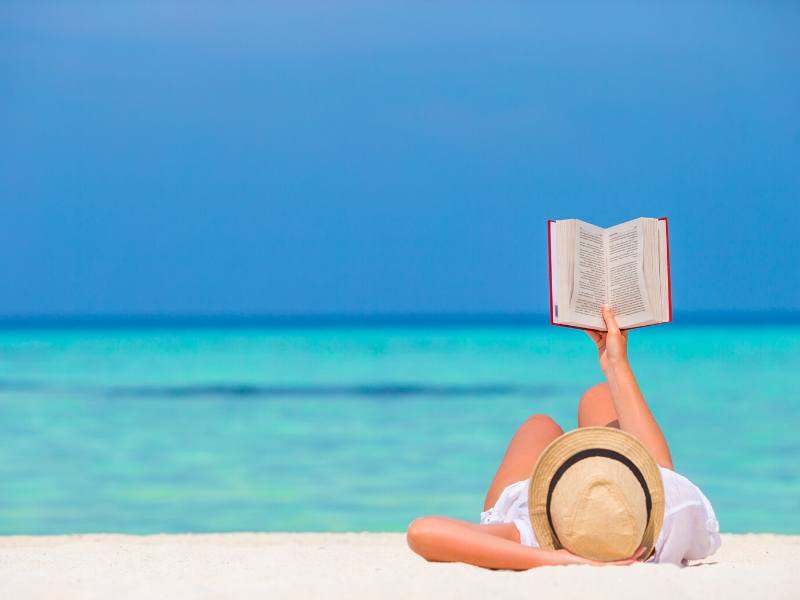
Read more – Spending Christmas in Queensland
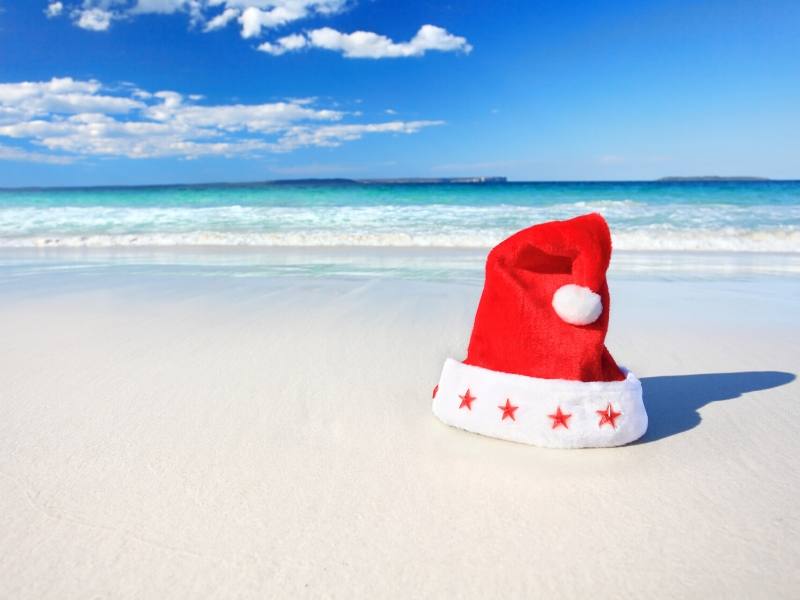
Where to visit in Australia
The capital of the state of Victoria is Melbourne. Melbourne has a population of 4.8 million which is nearly 25% of the countries entire population!
Recognised as being the most European like of all Australian cities it has a cosmopolitan edge and an enviable culinary scene and of course is the start of one of the most famous drives in the world – the Great Ocean Road .
It is a vastly cosmopolitan and multicultural city with large populations of Greek, Italian, Vietnamese, Chinese, Indian and British descent. There are lots of great things to do if you are visiting Melbourne.
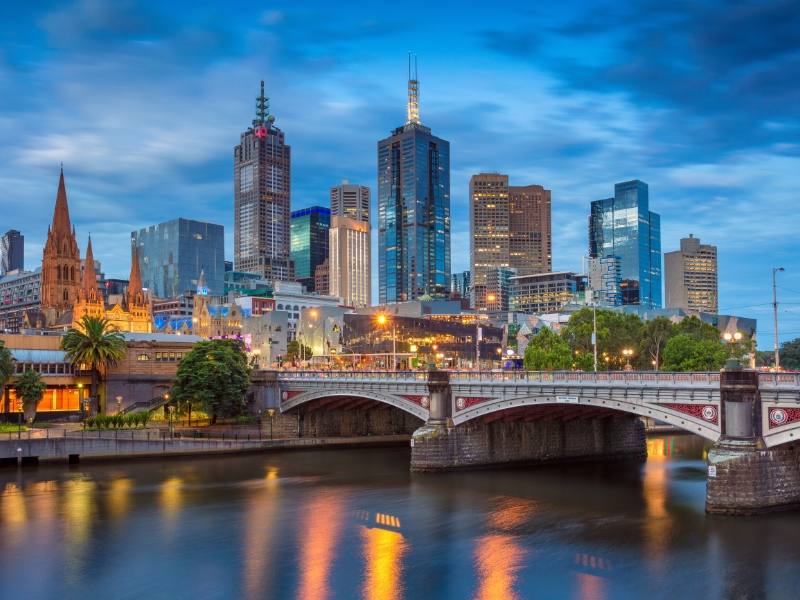
The Sunshine State is the second largest and third most populated state in Australia. Most of its 5 million inhabitants live along the east coast with Brisbane, Townsville and Cairns its largest urban conurbations.
Queensland has a mountain range which runs almost parallel with the coast and from lush green vegetation on one side the other is more arid and dry than its coastal counterpart.
There are six World Heritage-listed preservation areas in Queensland including Australian Fossil Mammal Sites at Riversleigh in the Gulf Country, Gondwana Rainforests of Australia, Fraser Island, Great Barrier Reef, Lamington National Park and the Wet Tropics of Queensland.
With over 12000 kms of coastline and 1955 offshore islands, the state boasts some of the most spectacular beaches in Australia.
Read – Queensland Bucket List
Read more – Queensland Quiz – How much do you know about Australia’s Sunshine State?

Brisbane is the capital of Queensland and with a population of nearly 2 1/2 million is the states largest city. With the beautiful Gold Coast and Sunshine Coast to the south and north of the city respectively there is plenty to keep visitors busy!
Read more – 20 things to do in South Bank Brisbane
Read more – Where to stay in Brisbane (Area and Accommodation Guide)
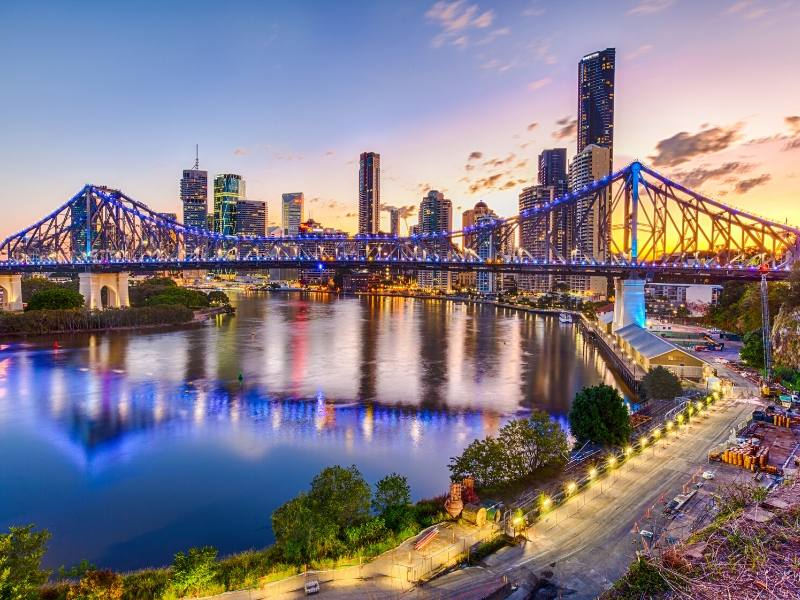
Read more – A guide to visiting Tamborine Mountain
Read more – A bewitching stay at Witches Falls Cottages on Tamborine Mountain
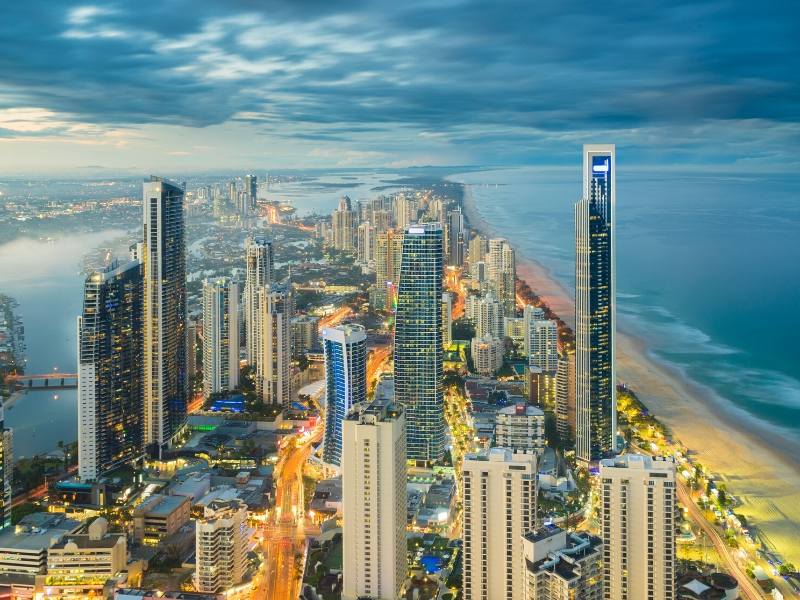
Read more – Things to do and see in the Sunshine Coast Hinterland
Read more – Staying at Yabbaloumba Retreat in the Sunshine Coast Hinterland
Read more – Romantic accommodation on the Sunshine Coast Hinterland
Read more – 10 beautiful Sunshine Coast Airbnbs
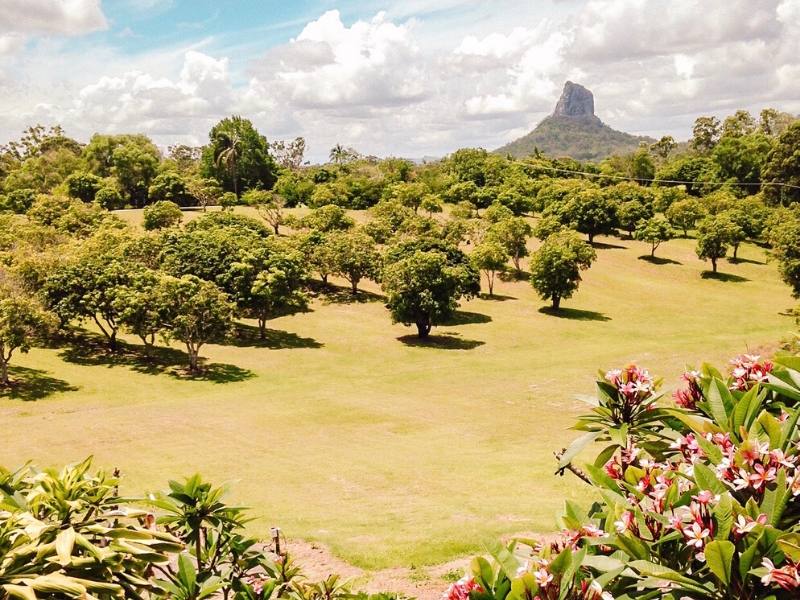
Read more – 5 things to do in Bowen
Read more – Visiting Whitehaven Beach at the Whitsundays
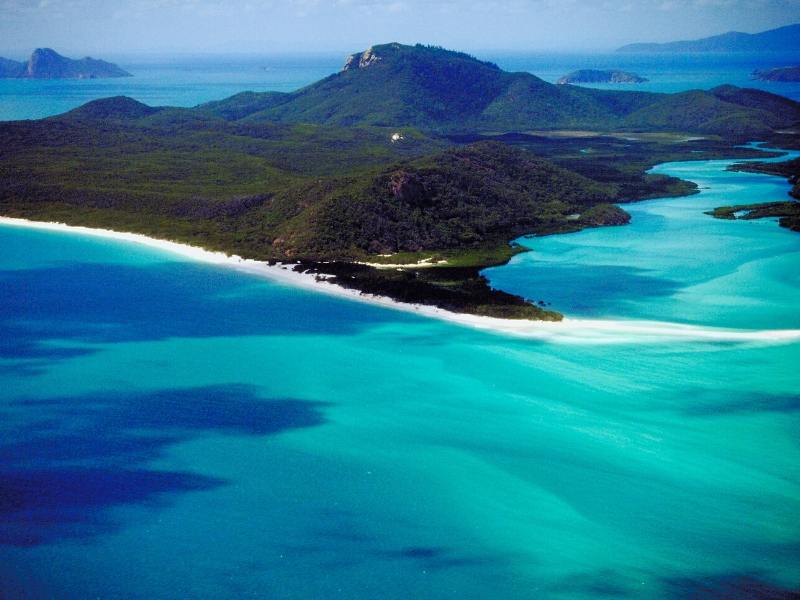
Read more – Things to know if you are moving to Mackay
Read more – Top 10 things to do in Mackay
Read more – Visiting a sugar cane farm in Northern Queensland
Read more – How to see kangaroos on the beach at dawn at Cape Hillsborough
Read more – Top 10 things to do in Port Douglas
One of the most recognisable cities in the world Sydney is a cosmopolitan city on the east coast of NSW. It is not (as is often assumed) the capital of Australia!
With the iconic Opera House and Harbour Bridge Sydney is the city most overseas visitors head to when they come to Australia.
Other attractions in NSW include the Blue Mountains, Coffs Harbour, Byron Bay and the Hunter Valley.
Read more – How to spend a day in Sydney (see/do/stay plus practical tips)
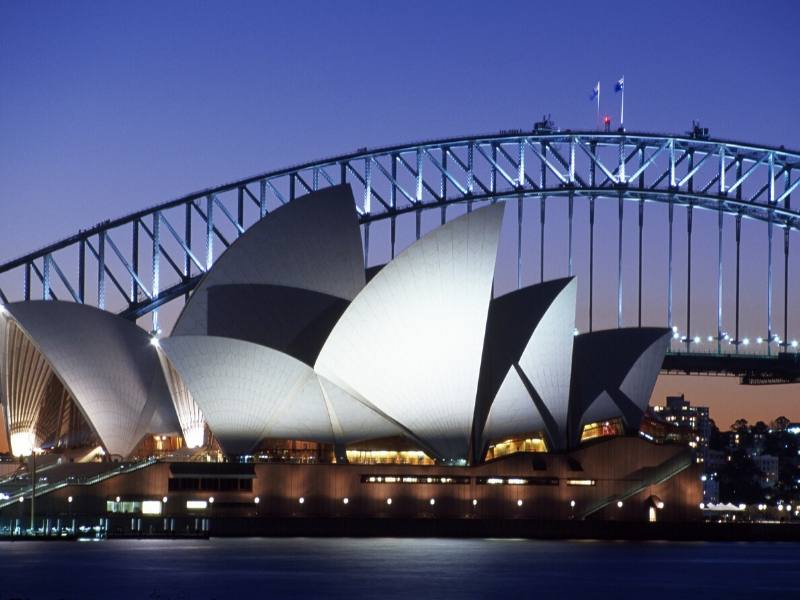
The capital of Western Australia is Perth the fourth largest city in the country.
Take a ferry from Perth to Rottnest Island to see the selfie happy quokkas. Shark Bay and Monkey Mania are home to dugongs, dolphins and beautiful beaches such as Shell Beach
Western Australian is a great state to take the kids on a road trip to fantastic places such as as Margaret River, and Exmouth and the Coral Coast.
Head to Broome for that iconic image on Cable Beach of camels walking along the shore at sunset. Take a drive down the famous Gibb River Road and visit Purnululu National Park to see the Bungle Bungles.
If swimming with whale sharks is on your bucket list then Ningaloo Marine Park must be on your itinerary.
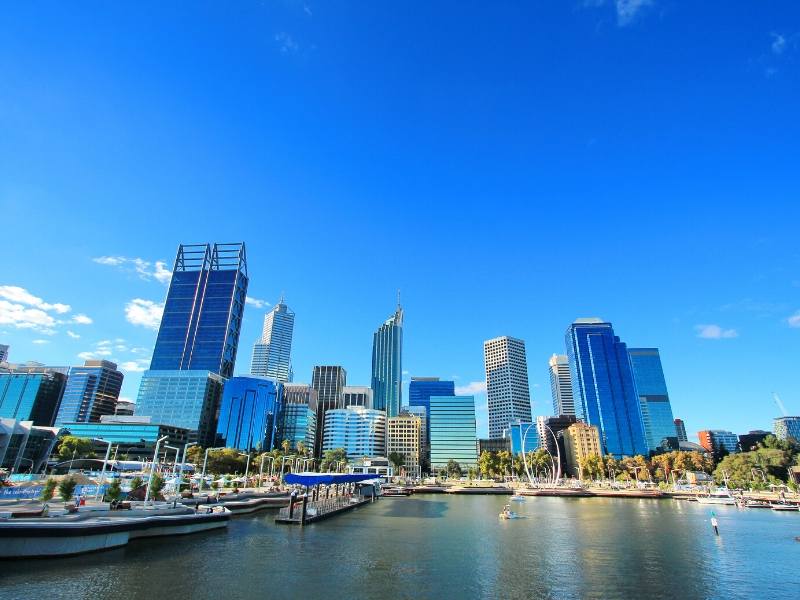
The capital of South Australia is Adelaide. Home to the Barossa Valley, the Yorke Peninsula , Flinders Chase National Park, and Kangaroo Island.
Read all about visiting the McLaren Vale Wineries – everything you need to know when visiting to make the most of your visit.
Read more – 10 Best things to do in Adelaide
Read more – 10 Best Day Trips from Adelaide
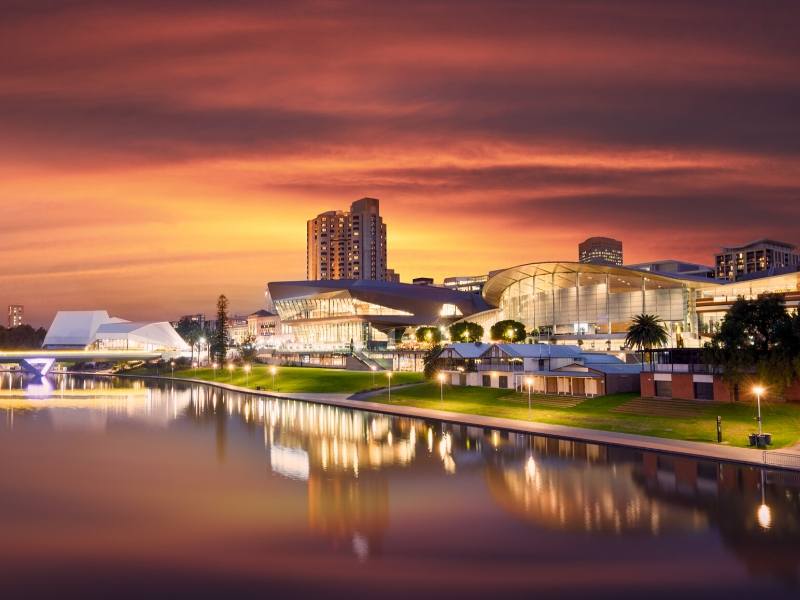
There are so many beautiful destinations in the Northern Territories. The main city is Darwin. Natural wonders to visit include Uluru, Kata Tjuta, King’s Canyon and Kakadu National Park.
Both Kakadu National Park and Kata-Tjuta National Park are listed as UNESCO World Heritage Sites.
Read more – Visiting Uluru the red heart of Australia
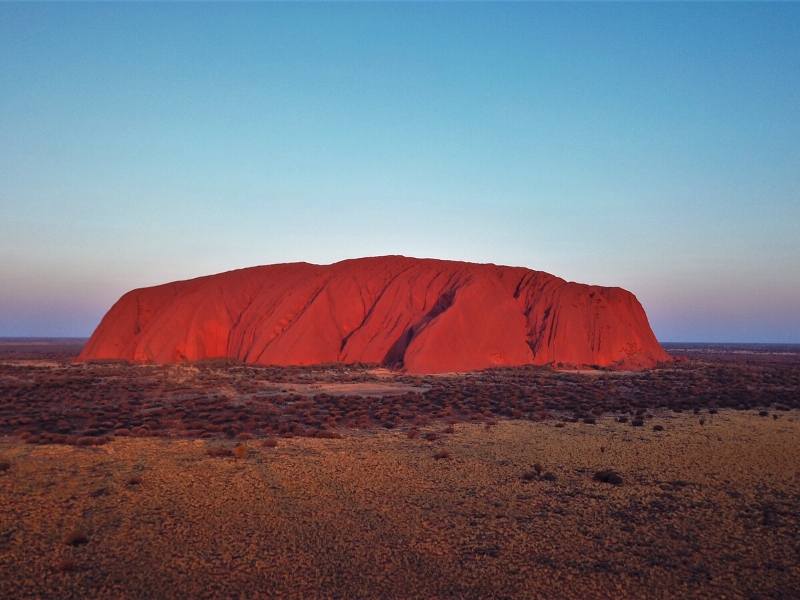
ACT is the territory where you can find the capital of Australia which to many people’s surprise (including people who live there!) is not Sydney but Canberra.
The location for the capital was chosen in 1908 as a compromise between Sydney and Melbourne.
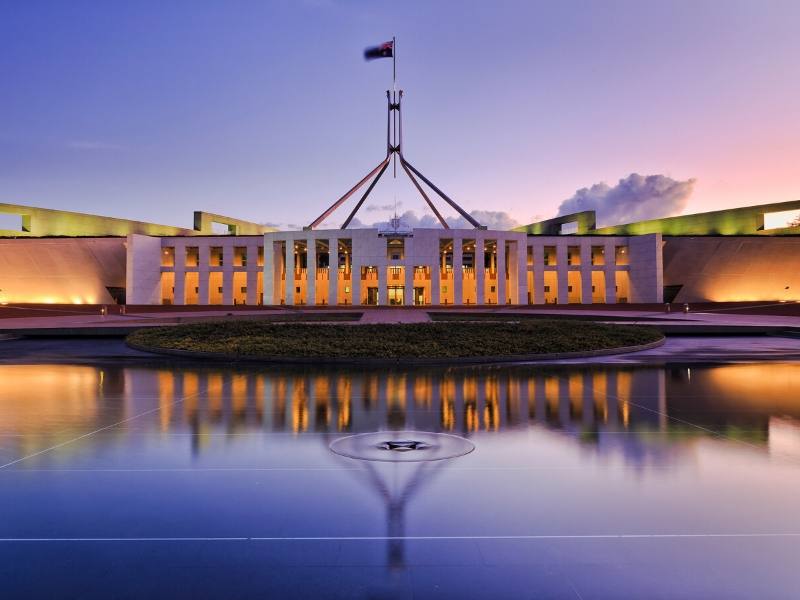
Tasmania is often described as the love child of Australia and New Zealand. And what a love child they have produced – a stunning island that has loads to offer nature lovers, hikers, foodies and those after a destination that really has it all!
Read more about Tasmania is my posts below!
Read more – Tasmania Road Trip Itinerary
Read more – 10 tips for traveling in Tasmania
Read more – Tasmania animal guide (and where to find them)
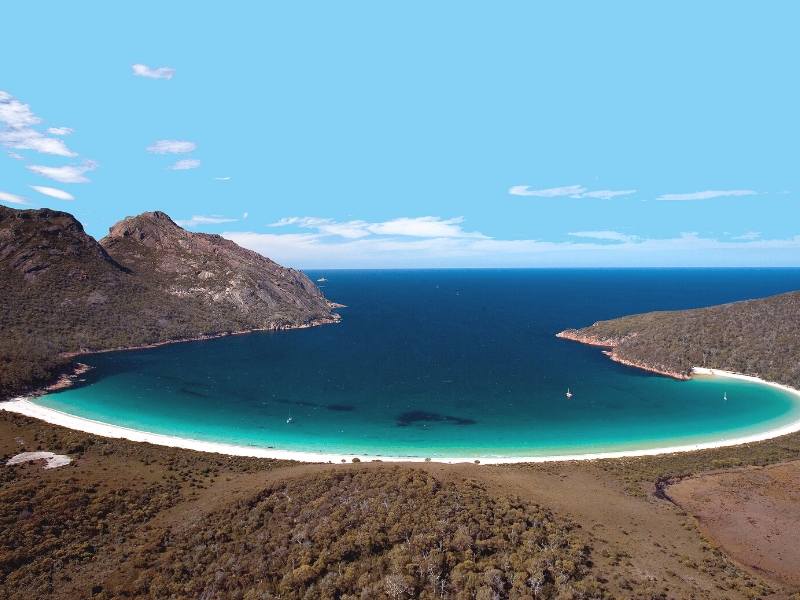
Read more – My Bonza Australian General Knowledge Quiz
Read more – Queensland Trivia Quiz. How much do you know about the Sunshine State?
Read more – Australian animals quiz – do you know your quokka from your quoll?
- EN - English
- PT - Portuguese
- ES - Spanish
- How it works
- Become a Host
- Download the app
Top Destinations
- United States
- United Kingdom
What type of experience are you looking for?
- Non-Profit School
- Permaculture project
- Eco Village
- Holistic Center
- Guest House
- How Worldpackers works

Learn from the most experienced travelers of the community
Traveling with worldpackers, planning and budgeting for travel, make a living while traveling as a lifestyle, travel with worldpackers.
- Using Worldpackers
- Work exchange
- Social impact
Plan your trip
- Women traveling
- Budget travel
- Solo travel
- Language learning
- Travel tips
- Get inspired
- Digital nomads
- Travel jobs
- Personal development
- Responsible travel
- Connect with nature
Top destinations
- South America
- Central America
- North America
- More destinations
- WP Life WP Life
- Exclusive discounts Discounts
- Explore the world
- Asia & Oceania
Australia travel tips for first-time travelers: when to visit and the best things to do
The best Australia travel tips to help you on your first visit to the Land Down Under! Including general Australia travel tips, budget travel tips, safety tips, and some advice on when to visit Australia and the best things to do there.
Gabrielle Budget Travel With Gabby
Apr 03, 2023
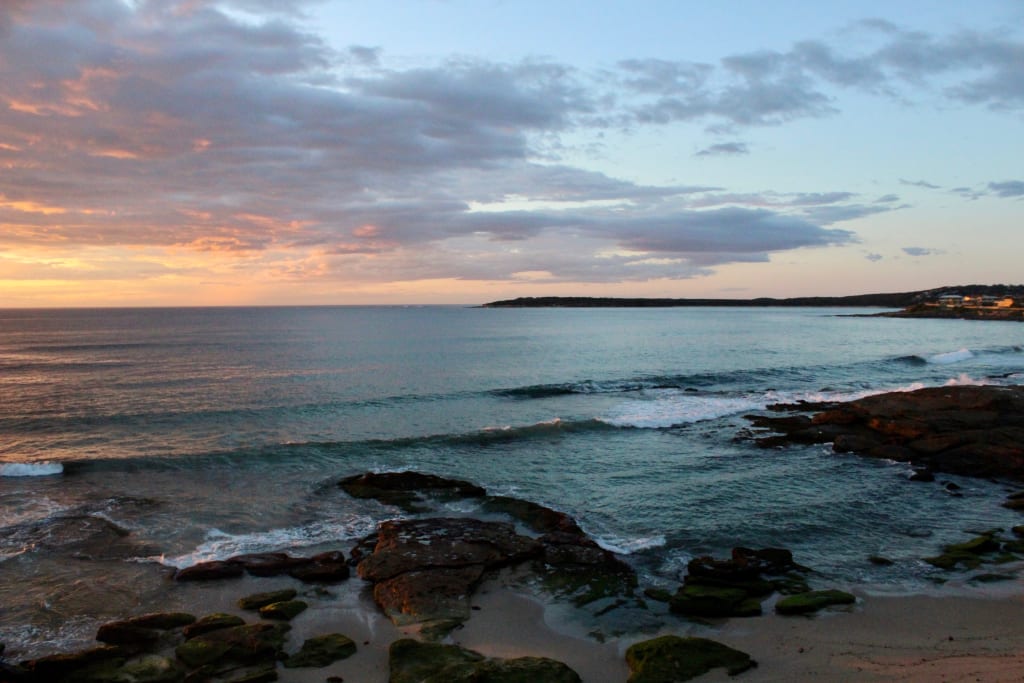
Australia is a huge country, so planning a trip there can seem daunting at first. But with a bit of preparation and research, planning an Australia vacation is so much fun!
The country is extremely diverse, with tropical rainforest in the north, wild desert in the center, and beaches, mountains, cities, and valleys scattered all around. So you can venture to whichever part of the country appeals to you the most!
These Australia travel tips will cover all the most important knowledge of visiting the Land Down Under. I’ll list some general Australia travel tips, budget travel tips, and important safety tips. I’ll also answer the questions: “What is the best time to visit Australia?” and “What are the best things to do in Australia?”.
So whether you’re backpacking around Oceania , planning a Worldpackers work exchange , or just taking an Australia vacation, here are the best tips for travel to Australia!
General Australia travel tips
Before traveling to any country, it is smart to brush up on some general knowledge.
You should know a few words in the local language , know which currency to use and which plug adaptors to bring , and know if you need a visa .
It’s also wise to educate yourself a little bit about the culture and customs . You want to show respect for the locals and ensure that you are adapting to the local environment.
Australia is very westernized, so it won’t feel too different from many countries in Europe or North America. Nonetheless, travel to Australia with an open mind and try to learn a bit about the local way of life.
So here are some general tips for travel to Australia that will help you prepare for your Australia vacation!
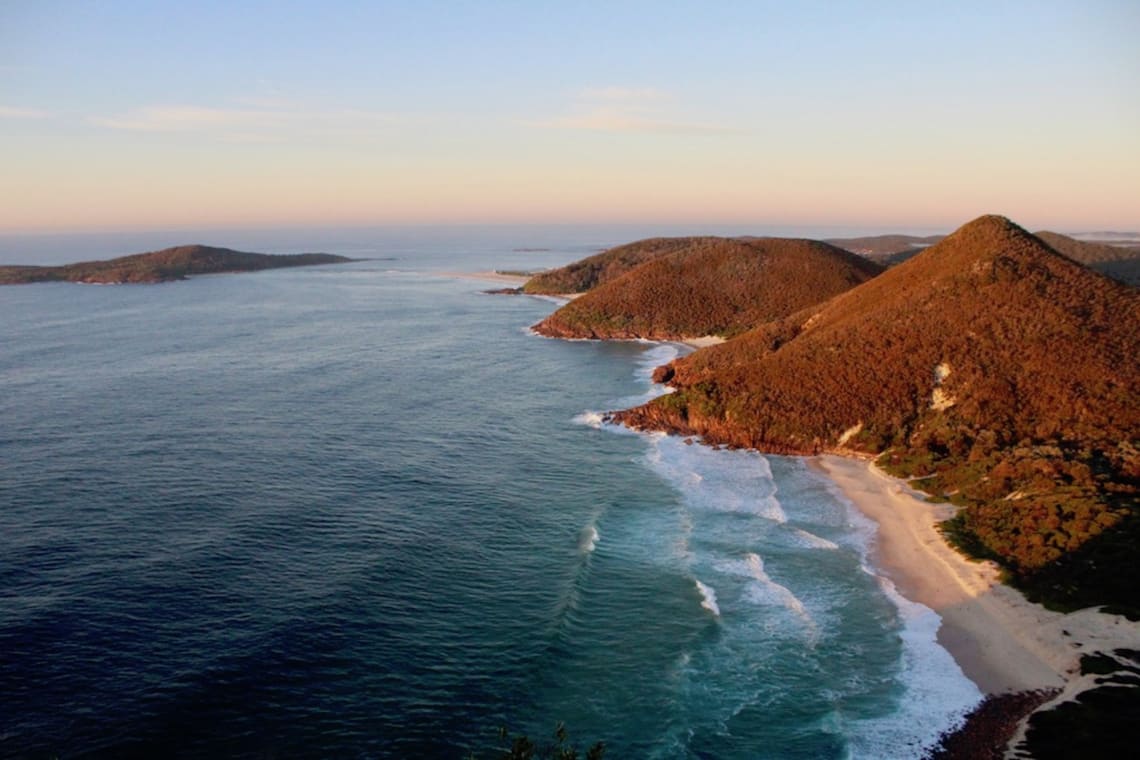
You will need a visa.
Every visitor to Australia needs a visa. Luckily, it’s very easy to apply for one online.
A visitor visa costs $145 and lasts for three months. Visa applications are done online using an ImmiAccount, which is very easy and straightforward to set up.
Apply for your visa as far in advance as possible before your trip. Some visitor visas are granted in a day, some take a few weeks. But you don’t want to leave it until the last minute because you won’t be able to enter Australia without a visa.
Visit the Australian Immigration official website for more information on Australian visas.
English is the local language (but watch out for the slang!)
One of the most common stereotypes about Australia is that the Aussies shorten every word and give everyone nicknames . Once you visit Australia, you’ll realize this is true!
English is the local language, though many Aussies speak quite fast and they do have a lot of slang words . Luckily, Aussies are generally super friendly and outgoing. So if you can’t understand someone, they’ll be happy to clarify or speak slower when you ask them to.
The most common slang words are just shortened versions of the normal word. Most of them are pretty easy to understand and you can catch on quickly. Here are some examples:
- Breakfast - brekky
- Laptop - lappy
- Registration - rego
- Afternoon - arvo
- Wetsuit - wettie
- Sausage - sauso
- Avocado - avo
- Board shorts - boardies
- Barbeque - barbie
- Mosquito - mozzie
Other common things have completely different words in Australia compared to other English speaking countries. Here are some examples:
- Flip Flips - thongs
- Bathing suit - cossie or swimmers or bathers
- Man - bloke
- Pharmacy - chemist
- Duvet - doona
- Liquor store - bottle-o
- Candy - lollies
- Trunk of a car - boot
So you may have to ask someone what a word means if you’ve never heard it before. I’ve been living in Australia for almost two years and I still have to ask for the meaning of words I don’t know!
The local currency is the Australian Dollar.
Australia’s currency is the Australian Dollar. They come in colorful, plastic notes (they say “notes” not “bills”) . They also use golden coins for $2 and $1.
Just as a reference, here is what the AUD looks like compared to other popular world currencies.
- 1 US Dollar = 1.39 AUD
- 1 Euro = 1.64 AUD
- 1 British Pound = 1.80 AUD
- 1 Chinese Yuan = 0.21 AUD
- 1 Japanese Yen = 0.013 AUD
- 1 New Zealand Dollar = 0.93 AUD
These values will fluctuate depending on exchange rates.
There are plenty of banks around Australia where you can exchange currency. However, you’ll have an easier time exchanging money in a city.
If you’re heading to a rural area or small town, you might not be able to exchange your currency. Just keep that in mind when traveling around!
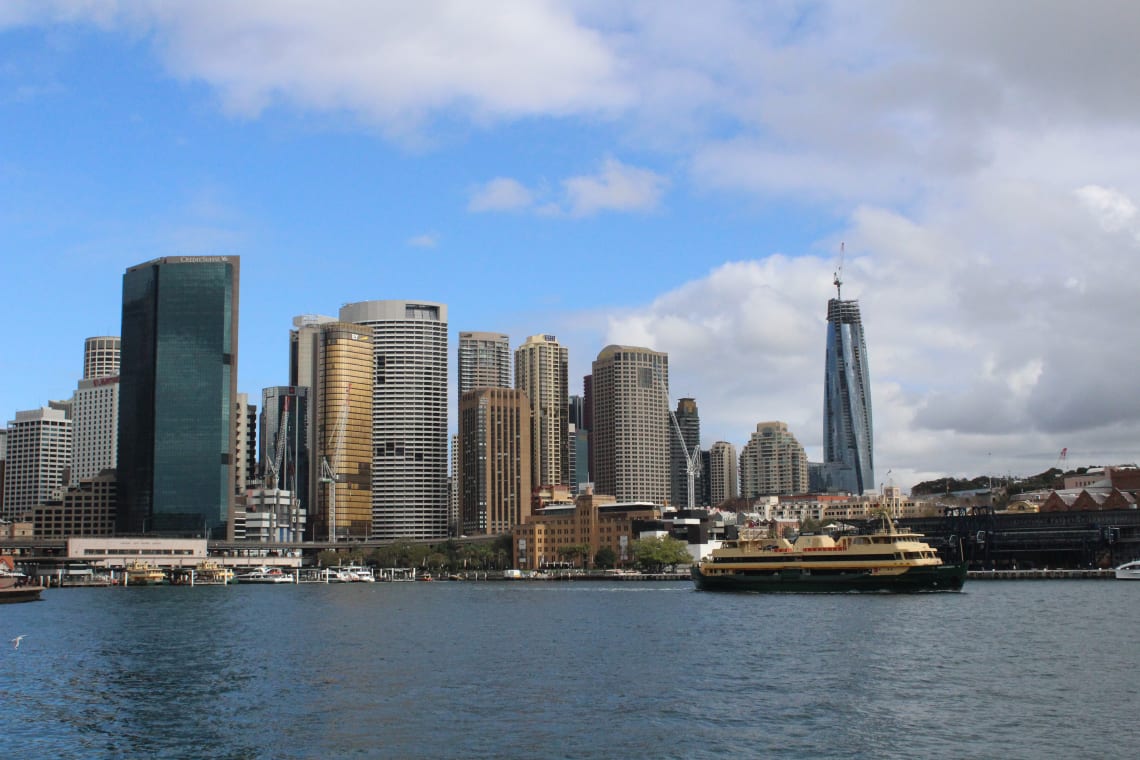
Australia is HUGE.
One of the biggest misconceptions about Australia is that you can see the whole country in a short time.
Remember, Australia is technically a continent in addition to just being a country. So it is massive!
Australia is the 6th largest country in the world. It has eight states, and each one is packed with sights to see and things to do. If you have less than a month to spend in Australia, I recommend sticking with only one or two states. You don’t want to rush around trying to see everything too quickly!
Australia is also very diverse.
Because Australia is huge, it has a very diverse range of landscapes and climates.
In the north, you’ll find hot, humid weather with rainforests, rocky gorges, deserts, and tropical beaches, islands, and coral reefs. In the middle, you’ll find a dry, hot desert with flat land and red sandstones.
Near the coastlines, you’ll find small mountains and lush forests, and of course picturesque beaches, rivers, lakes, marshes, islands, and any other water-related geographical feature you can think of. In the south, you’ll find a more moderate climate with cold winters and even snow .
Australia has pink lakes, strange rock formations, rugged cliffs, Eucalyptus forests, powerful waterfalls, sprawling coral reefs, and sacred indigenous lands full of history.
It is an incredibly diverse country with so many cool things to see.
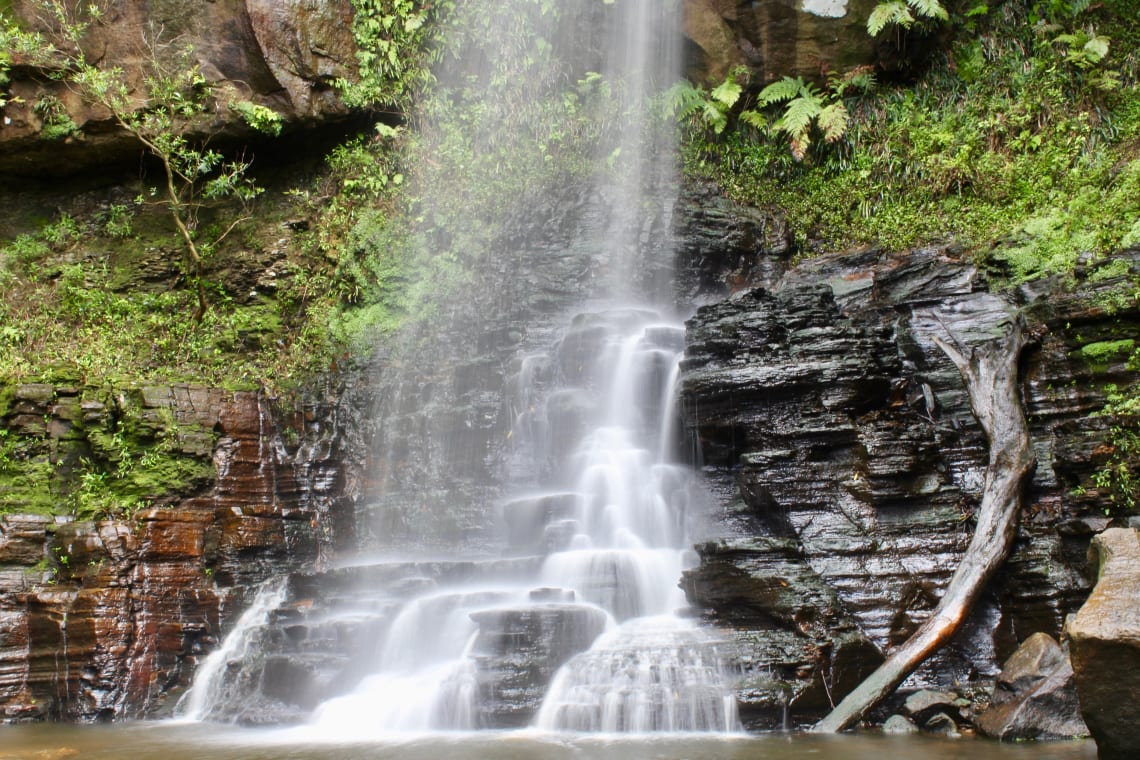
Tipping is not necessary.
The minimum wage in Australia is $19.49 per hour. So everyone makes a decent living wage, even waiters, bartenders, fast food staff, cleaners, and every other type of worker.
Because everyone makes an hourly wage that is high enough to live on, tipping isn’t necessary. No one relies on tips for their income, as is common in places like the USA.
You can tip someone if you really want to, of course. But you don’t have to. The cost of your bill is all you are expected to pay.
Australia has different plugs from most other countries.
Before traveling to Australia, make sure you know what type of plugs they use so you can charge your devices when you arrive.
The plugs have three flat prongs and the top two are slanted inwards. This is known as Type I.
Bring a travel adaptor with you on your Australia vacation. Or just buy one when you get there at a convenience store.
Drive on the left side of the road.
Australians drive on the left side of the road, as most former British colonies do. And the driver’s seat is on the right side of the car, with the gear shift on their left.
That also means that while walking, running, or biking on communal paths you are supposed to keep to the left.
So the flow of traffic always stays on the left. Remember that when crossing streets as well; make sure you look in the right direction to check for cars.
The best time to visit Australia
There is no bad time to visit Australia!
As I mentioned, Australia is huge and therefore the climate differs all around the country. So no matter what month you visit, at least one part of the country will have favorable weather. The temperature in Melbourne or Tasmania compared to the temperature in Tropical North Queensland can vary drastically at the same time of year.
So whether you plan your dates of travel first, or your destinations first, make sure that the weather in that place will be decent before booking your Australia vacation!
Remember, Australia is in the Southern Hemisphere so the seasons are opposite from the northern part of the world!
Here is a brief overview of the different seasons in Australia and which places will have the best weather at that time.
Spring in Australia (September, October, November)
Spring and Autumn are both considered “shoulder season”. That means the temperatures aren’t too extreme, making this an amazing time to visit Australia.
The weather is mild and pleasant in most of the country.
Spring is a great time to visit New South Wales , Southern Queensland, and Western Australia. So places like Sydney or Byron Bay in NSW, or Broome in North Western Australia will be gorgeous in the Spring.
Summer in Australia (December, January, February)
Australia’s summers can get extremely hot. This is when the country is most at risk for wildfires, and when travelers are most at risk for sunburn or heat exhaustion.
But, it’s also full of sunny beach days and positive vibes among the Aussies. Lots of barbecues, parties, and events happen in summer, so it’s a very fun time to visit.
Summer is the best time to visit the southern states of Victoria and Tasmania. Places like Melbourne and the Great Ocean Road can get quite cold in winter. And the best things to do in Tasmania are mostly outdoors.
So warm, summer weather is perfect for exploring Melbourne or Tasmania.
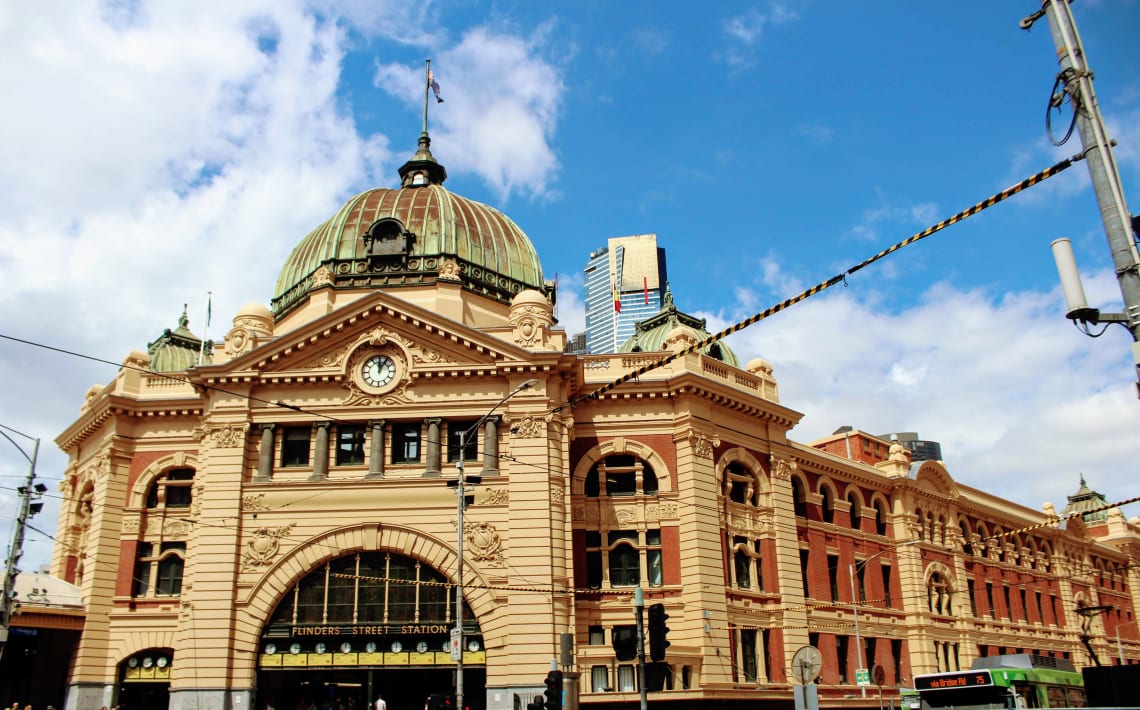
Autumn in Australia (March, April, May)
Similar to Spring, Autumn is a stunning time of year. The intense heat from summer subsides, but you still get lovely beach days and enjoyable temperatures.
Autumn is great for exploring South Australia, in addition to New South Wales, Queensland, and Western Australia.
So if you’re wondering what the best time of year is to visit Perth or Adelaide or Sydney, Autumn is the way to go.
Winter in Australia (June, July, August)
Winter is an amazing time to visit anywhere in northern Australia.
Because the northern states are closer to the Equator, their temperatures in summer soar so high that exploring loses its fun. So to see the Outback or the tropical rainforests, wait for winter when the weather cools to a favorable temperature!
Kakadu National Park, Darwin, and Uluru in Northern Territory, as well as Cairns and the Daintree Rainforest in northern Queensland, are all beautiful in the winter.
Helpful budget travel ttips for an Australia vacation
Australia is one of the most expensive countries to travel to. But don’t let this discourage you from visiting!
Though you need a fair bit of money saved for an Australia vacation, it is still possible to explore the country on a budget. So for those who want to thoroughly enjoy Australia without breaking the bank, here are some helpful budget travel tips.
Keep in mind, all the prices will be in Australian Dollars .
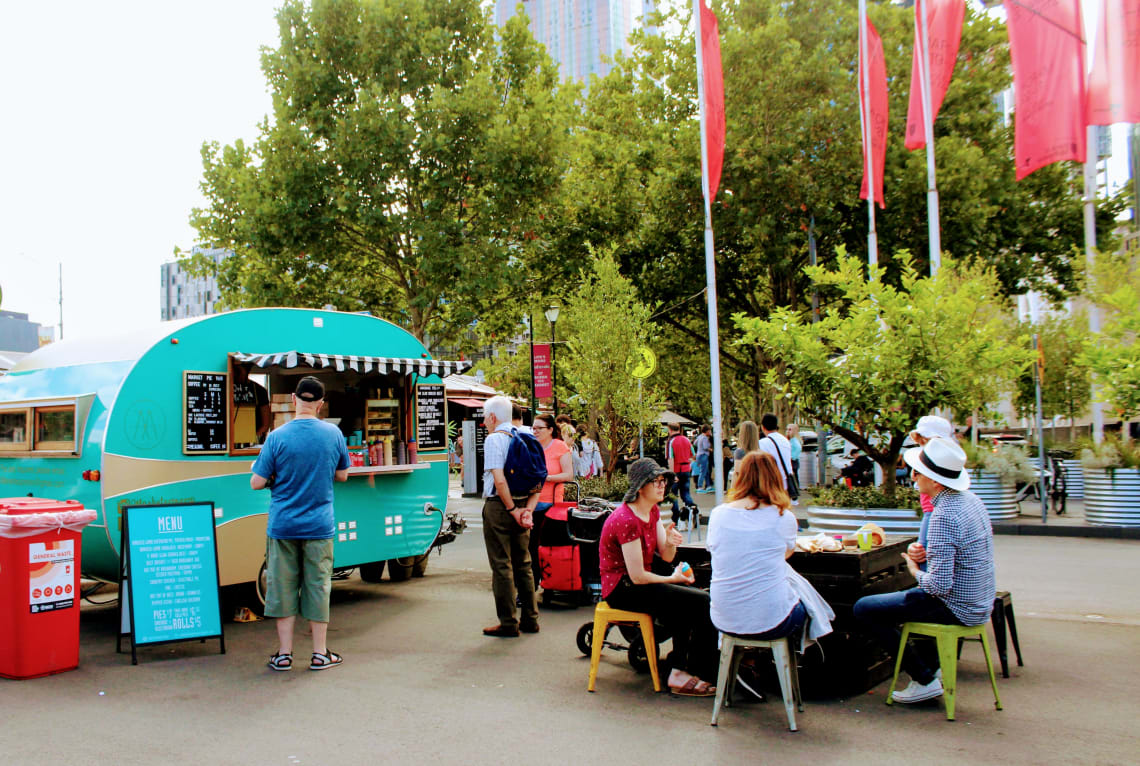
Seek out affordable accommodation
Any traveler knows that paying for accommodation can easily add up to be the biggest expense while abroad. Unfortunately, accommodation in Australia is not cheap. Cheap hotels can cost around $100 per night. Nice hotels or Airbnbs can cost around $200 per night.
Most young backpackers can’t afford to stay in nice hotels every night. Luckily there are lots of great hostels in Australia for budget travelers.
Hostels in Australia usually cost around $20 or $30 per night for a shared dorm room . Though that is pricier than most hostels around the globe, it’s still much cheaper than a hotel!
You could also try Couchsurfing and sleep on someone’s couch for free. Or you could camp in an RV, car, or tent. Though most campsites cost around $15 or $20 per night, so you may as well just stay in a nice hostel bed.
Do a work exchange!
The best way to save money on accommodation in Australia is to do a work exchange.
If you have a few weeks to spend in one place, why not work in exchange for your accommodation? You can gain work experience and learn some new skills, all while staying in a hostel or home for free.
You can volunteer in a hostel and live and work with other cool travelers. Or you can volunteer on a farm or with a family and live with locals. Either way, work exchanges are an amazing way to immerse yourself in the culture, have fun, and save money on accommodation.
Worldpackers is the best place to find a work exchange anywhere in the world. All you have to do is find the volunteering opportunity that best suits you , then apply to it, and in exchange for some hours of work per day you get free accommodation, and sometimes even free board. And of course you meet local people and travelers from all over the world which are volunteering just like you.
Worldpackers offer plenty of sustainable projects. For example, you can volunteer in an eco-program in Cairns and have a lovely time while helping out in the garden of a farm, or help renovating this garden in Byron Shire .
Browse more volunteer positions in Australia , there are more than 30 options all around the country.
Cook your own food when possible
Dining out in Australia is not cheap. However, groceries can be very affordable if you know where to go. So if your accommodation has a kitchen, save some money by cooking most of your own meals.
Buy your groceries at budget food stores like ALDI, or get produce from a local farmer’s market. Woolworths, Coles, and IGA are the biggest grocery store chains in Australia. They are pricier than ALDI, but they still have affordable food as well.
Treat yourself to a few nice meals out. While visiting a new country, you don’t want to miss out on any delicious meals! But to save money in the long run, save the restaurant meals for special occasions and cook at home most of the time.
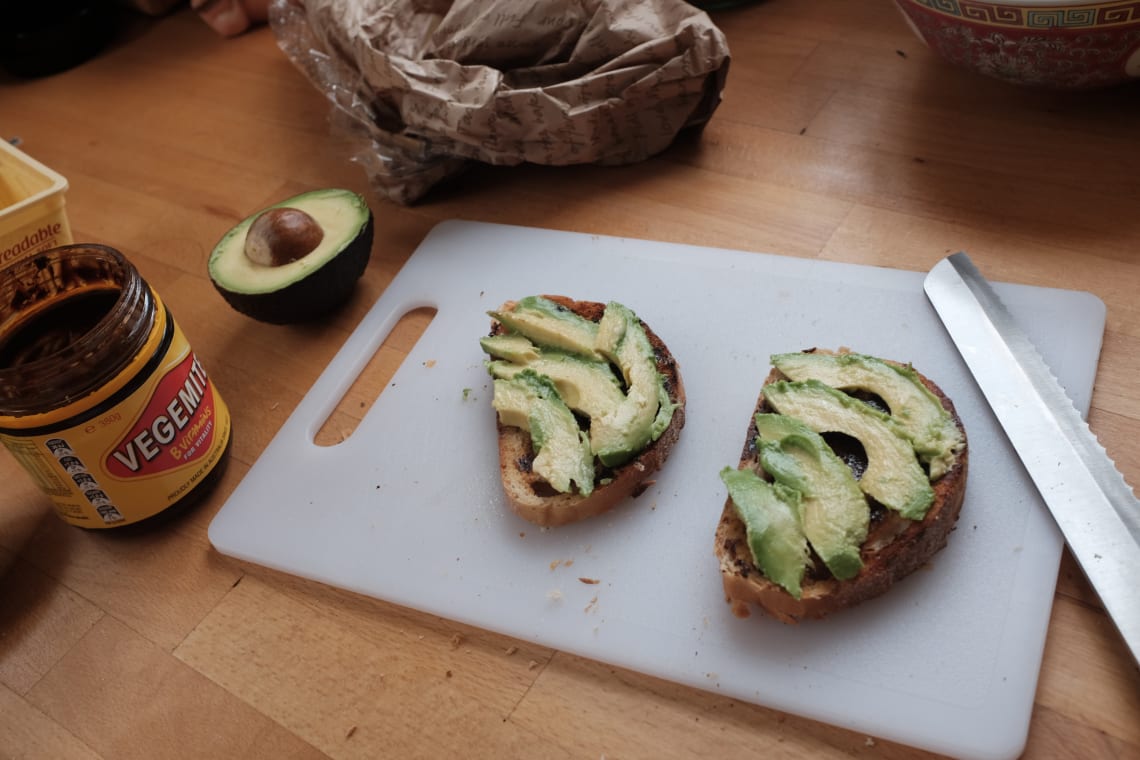
Join backpacker Facebook groups
If you’re on Facebook, search for some of the Australia backpacker groups. There are so many! This is just a free, easy way to connect with other travelers in Australia.
You never know what sort of perks or information you’ll find on there. Sometimes travelers are doing a road trip and are looking for people to join to split the cost of petrol. Or travelers are selling their surfboards or hiking boots for cheap prices .
You’ll also find some first-hand Australia travel tips and experiences on there! Travelers will share if they found an incredible spot to visit, or if they had a horrible experience at a certain hostel.
Fly budget airlines to cover long distances
Australia is so huge that driving between major cities can take multiple days. The easiest way to travel long distances is by catching a cheap domestic flight.
There are plenty of reputable budget airlines that offer affordable flights around the country. So if you plan on visiting a few different states, you’ll want to fly between cities to save yourself hours and hours in the car.
Tiger Air, Jet Star, Scoot, and Virgin Australia are some of the best budget airlines. Just be sure to check the baggage allowances, as budget airlines often charge extra for baggage.
A one-way domestic flight can cost around $50 to $100, and the flights are usually pretty quick. For example, flying from Sydney to Brisbane is only 50 minutes, and Sydney to Melbourne is 1 hour.
Flying from Sydney to Cairns takes around 3 hours, and Sydney to Perth is about 5 hours. So you can see how big the country is! But even those longer flights will be decently priced on a budget airline.
Take trains or buses within a city rather than taxis (And always remember to tap on and off!)
Within Australia’s cities, the public transport networks are great. You’ll find trams, metros, and public buses, but the trains are generally the best way to get around .
The train networks are extensive and generally quite affordable. Just get yourself a travel card from a convenience store and add money to it at the station . You shouldn’t have to take many taxis or Ubers. And you’ll save yourself lots of money by choosing public transport over a taxi!
A train journey in a city generally only costs a couple of dollars. You have to tap your card on the readers when you enter and leave the train platforms. If you don’t tap on, and an official happens to be on the train scanning cards, you can get hit with a hefty fine.
Rent a car for a road trip
A road trip is an amazing way to experience Australia. You can take your time, enjoy the flexibility of your own transport, and see all the small, local towns and attractions in between the big tourist cities.
Some of the best road trips to do in Australia are from Brisbane to Sydney in Queensland and New South Wales, from Perth to Ningaloo in Western Australia, around Tasmania, and along the Great Ocean Road in Victoria .
Car hire in Australia is quite affordable. A basic car rented in a city can cost around $30 per day, but that of course varies depending on the car you get. You can also check the Facebook Groups I mentioned earlier to see if anyone has extra seats for a road trip.
Another option is buying a cheap car if you’ll be in Australia for at least a few months. Facebook Marketplace and the website Gumtree are great for finding cheap, secondhand cars, and other goods. When you’re about to leave Australia, you can then sell the car again on one of those websites.
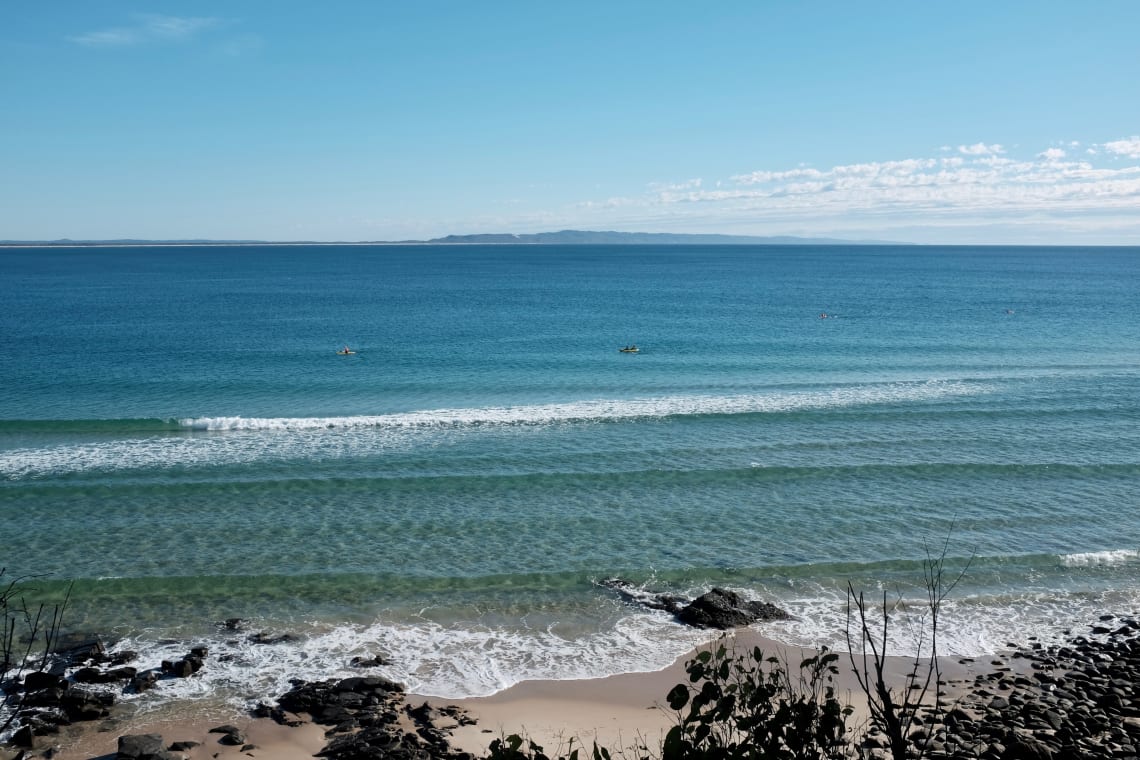
Safety tips for Australia
Before visiting any country, brush up on some safety tips so you can feel comfortable during your trip.
Some of the most important Australia travel tips are the ones about safety. From the extreme weather and natural disasters to the wildlife, Australia’s dangers get a lot of attention.
But in terms of the culture and the people, Australia is very safe. You don’t have to worry too much about pickpockets or getting into sketchy situations. Australia is a very safe country with people who are, generally speaking, genuine and friendly.
It’s mainly the natural world that you need to take precautions on in Australia.
And, of course, always carry your general street smarts with you. Just because Australia is very safe doesn’t mean the occasional mishap can’t happen.
So just be smart, be prepared, and you’ll have an incredible Australia vacation!
Use general travel knowledge to keep yourself safe
If you’ve traveled before, you’ve heard all about the general safety tips. Some of these include:
- Don’t walk alone at night.
- When going out partying or exploring, stay in groups.
- Lock up your belongings in hostels and hotels.
- Don’t bring all your money and valuables with you while exploring. Only take what you need for the day.
- Make copies of your passport and other important documents.
- Don’t wear flashy jewelry that could make you a target for pickpockets.
There’s more, but those are the basic, most important safety tips for traveling. They apply to any country you are visiting!
Luckily, Australia is a safe country culturally. There is a risk of problems, as there is anywhere, but overall you should feel at ease. Most of the Australia travel tips revolve around nature!
Watch out for the local wildlife
Australia is famous for its unique wildlife . Most of them are harmless and are fascinating to see in real life. Kangaroos, wallabies, koalas, echidnas, wombats, and all the colorful birds may make an appearance during your trip. So cherish those moments!
However, every wild animal should be treated with caution. It is wild, of course. Never approach or touch a wild animal unless you’re with a trained professional guide at a sanctuary or wildlife refuge. Always keep your distance and just let the animals be. Any adorable creature can get violent if it feels threatened by humans.
If you’re staying in cities and touristy areas, you won’t have to worry too much about any wildlife. But if you’re going hiking or visiting rural areas, brush up on your knowledge of snakes and spiders. There are lots of them, and some are deadly, some aren’t.
Either ask a local or do some research to see which snakes and spiders can be harmful. Obviously all of them should just be avoided. But some spiders look scary and are actually harmless, like Huntsman Spiders.
It’s also important to consider the wildlife in the ocean. You probably won’t encounter any sharks unless you’re surfing or swimming far out in the water. But do be mindful of sea urchins and jellyfish, which can come closer to the shore.
In the summer months, you’re not supposed to swim in the ocean in Tropical North Queensland at all. The ocean up here becomes full of jellyfish, stingrays, and sometimes crocodiles. So be smart and obey the signs that forbid swimming in those areas!
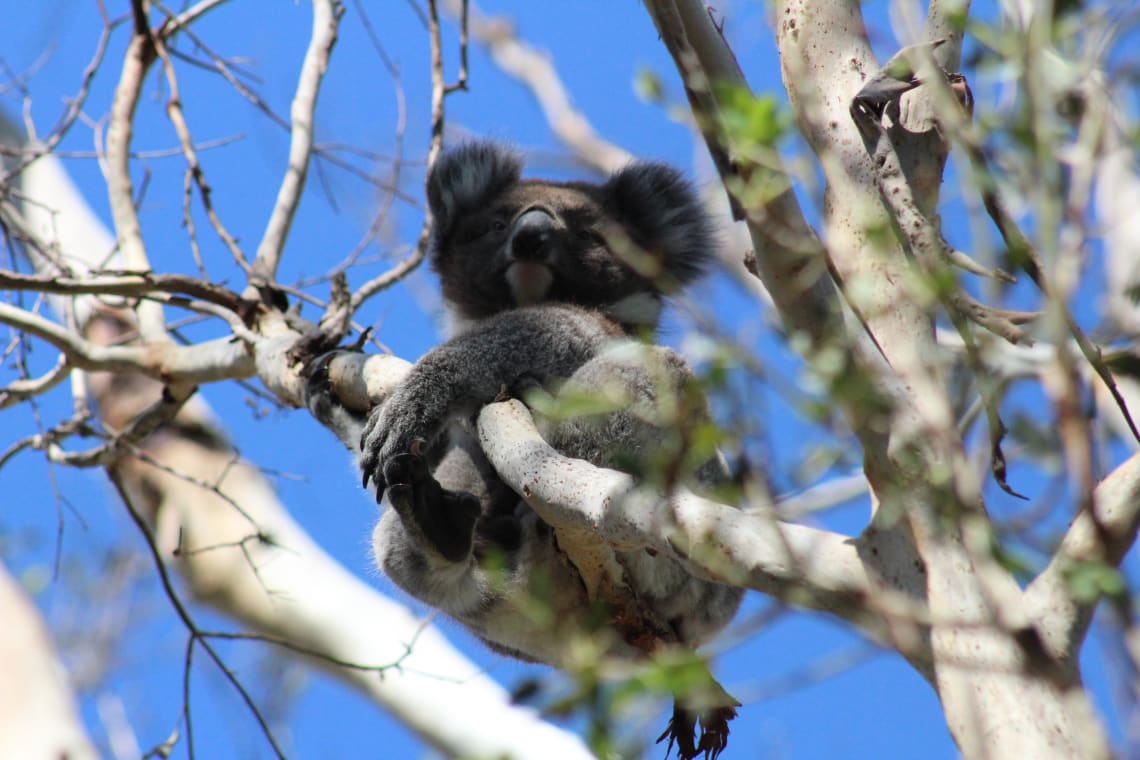
Swim between the flags on beaches
Speaking of ocean safety, most popular beaches have lifeguards and flags indicating where you can swim. The professionals set up these red and yellow flags in the areas of the beach that are safe for swimming.
That means there will be no rip currents, dangerous waves, and hopefully no urchins or jellyfish.
If you’re ever unsure about where is safe to swim, just ask a local. They’re usually very knowledgable about the ocean. And if you find yourself on a secluded beach with no one around, I wouldn’t recommend swimming completely alone.
Always wear sun protection
The sun in Australia is very strong and hot, especially in the northern regions and in the summer months.
It is super important to always wear sun protection. That includes good quality sunscreen, sunglasses with good UV protection, a hat, and preferably light, breezy clothes that keep you cool but cover up your skin as well.
Australia has the highest rate of skin cancer in the world, so always protect yourself to ensure you stay healthy. And a bad sunburn can ruin a trip!
Dial 000 for an emergency
Emergency phone numbers differ from country to country.
Luckily in Australia, it’s an easy, simple code of just 000. Hopefully, you won’t have to use that number, but in case there is an emergency it is good to know.
Be mindful during wildfire season
During the hot summer months, wildfires are a common occurrence in Australia.
Sometimes they are pretty small, but sometimes they are devastating. The most recent wildfire season in late 2019 and early 2020 was one of the worst in years.
As a traveler, you don’t have to worry too much about wildfires unless you’re venturing out into the bush. Avoid camping or trekking in hot, dry bushland during the summer months.
Don’t have campfires, light fireworks, smoke cigarettes, or do anything that could potentially create a wildfire. Sometimes the littlest flame can lead to a huge fire, so be smart and respectful of your environment and avoid contributing to the risk of fires.
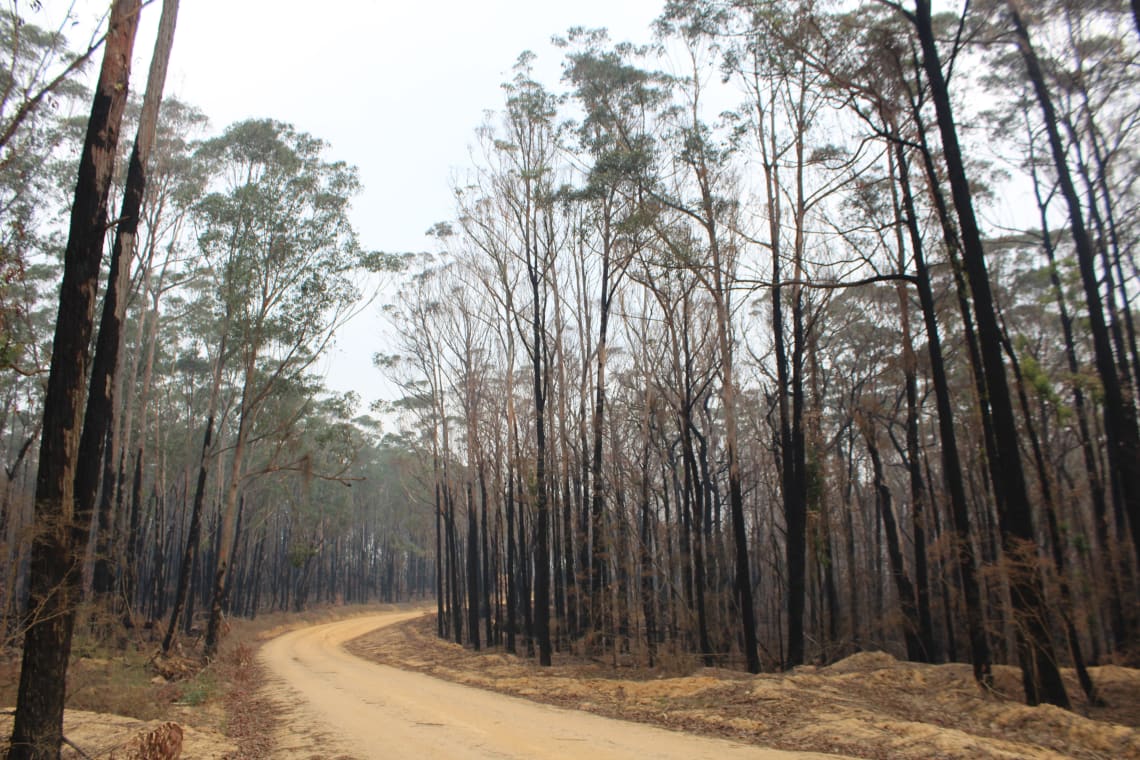
Tap water is safe to drink
Australia has clean tap water that is safe to drink. This is great for travelers!
So you don’t have to buy plastic water bottles. You’ll save money and help the environment .
Bring a sturdy, reusable water bottle and you can refill it anywhere during your time in Australia.
Best things to do in Australia
Once you’ve researched all the best Australia travel tips and you’re feeling prepared for your trip, it’s time for the best part of the trip planning.
What are the best things to do in Australia? There are SO many incredible activities and adventures to have on this continent. I talked a bit about how huge the country is and how diverse the landscape is. So the best things to do in Australia are extremely varied.
You can snorkel in the coral reefs of Queensland or Western Australia. Learn to surf in Sydney or explore the cosmopolitan city of Melbourne. Take day trips to exotic islands, go wine-tasting, go trekking through the outback, or go cliff jumping .
There are almost too many fun things to do in Australia. So figure out what type of trip you want and choose activities that suit your style.
You could have a laid-back, relaxing vacation or an action-packed, thrilling adventure. You can have an educational trip where you learn about the native flora and fauna and the aboriginal culture. Australia has something for everyone!
So here are some of the best things to do in Australia. There are many, many more not on this list, but these are the most popular activities among travelers.
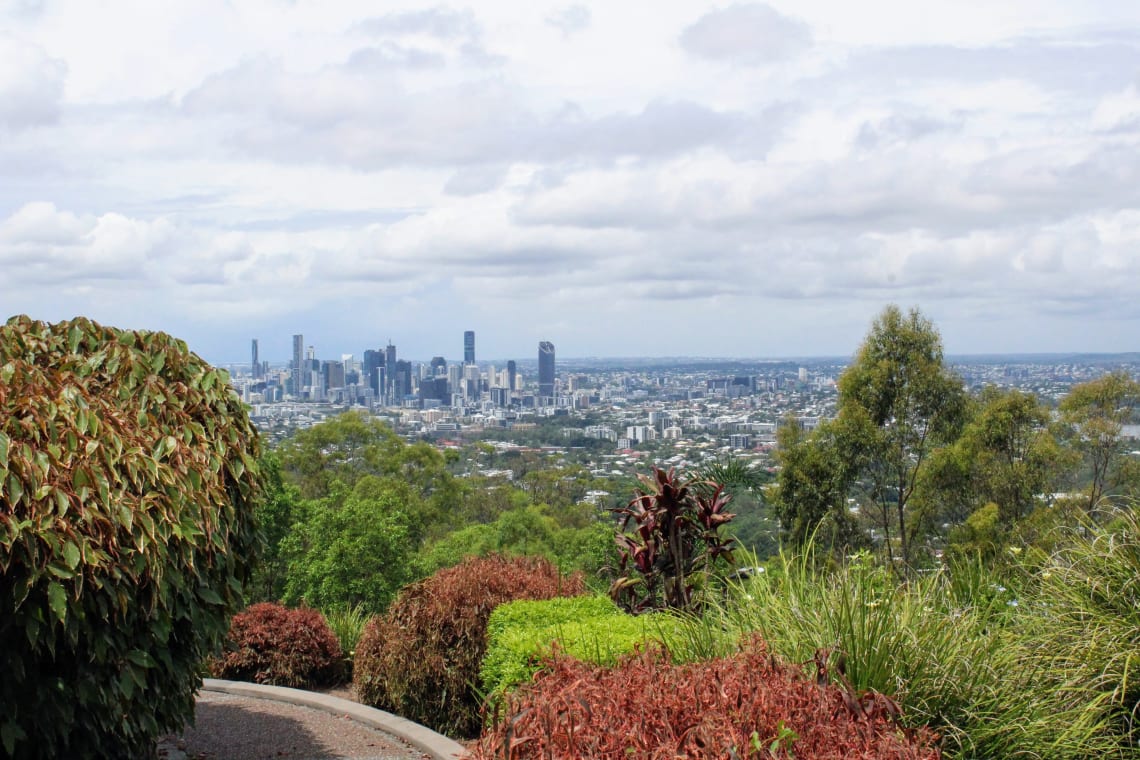
Snorkel in the Great Barrier Reef
The Great Barrier Reef may be the most famous attraction in Australia. As the world’s largest coral reef system , the Great Barrier Reef stretches along almost the entire length of Queensland for 2,300 kilometers.
Because the reef is so huge, you can access it from lots of different places. Cairns, Port Douglas, Cape Tribulation, Townsville, and Airlie Beach are a few towns with lots of different tour companies offering snorkeling and diving trips to the reef.
Tours are usually around $200 , so they’re quite costly but SO worth it! The reef is full of interesting marine life and it’s a once in a lifetime opportunity to snorkel here.
Walk around Sydney Harbor
The Harbor is the most iconic place to see in Sydney. From the famous Sydney Opera House to the Botanic Gardens to the massive Sydney Harbor Bridge, it is a must-see while visiting New South Wales!
You only need one day to fully explore Sydney Harbor. Wear comfortable walking shoes and bring a camera!
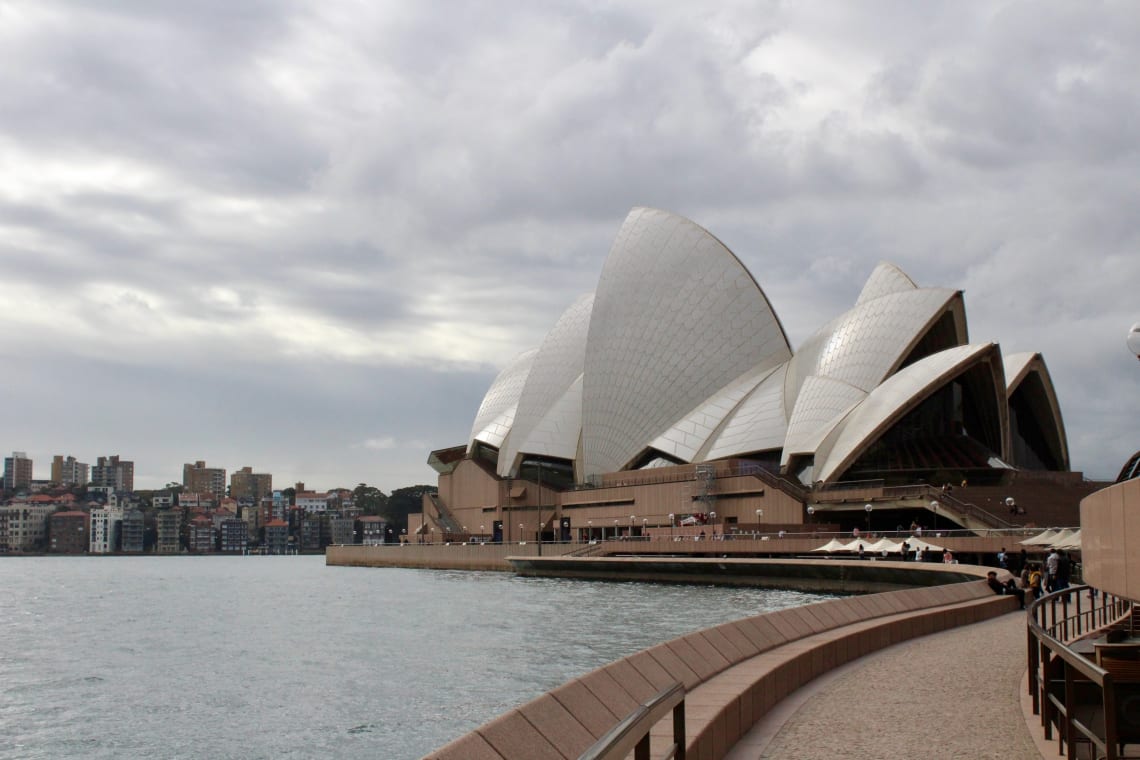
Explore Brisbane
As the capital city of Queensland, Brisbane boasts hot, sunny weather and lots of culture.
You can find street art, museums, food markets, live music, parks, gardens , and so much more.
I’d recommend spending at least 2-3 days exploring Brisbane. Be sure to check out the South Bank, walk along the river, shop at the Riverside Markets, and check out the view from Mount Coot-tha.
Watch the Sunrise or Sunset at Uluru
Also known as Ayer’s Rock, Uluru is the world’s largest monolith. It is basically a giant red sandstone in the middle of the Northern Territory.
The closest town is Alice Springs, where you can book tours and camping trips. Uluru is sacred to the indigenous people of Australia, and watching the sun rise or set over this massive piece of history is surreal.
Go wine tasting
Most people don’t know that Australia is an incredible wine country. It is up there with Italy, Argentina, France, Spain, and South Africa!
Australia has many vineyards scattered throughout the country , where delicious local wine is produced.
A wine tasting is a super fun way to spend a day in Australia. You can learn about the land, the local farmers, and the local wine-makers.
Margaret River in Western Australia, Hunter Valley in New South Wales, Yarra Valley in Victoria, and Barossa Valley in South Australia are some of the most popular places to go wine tasting.
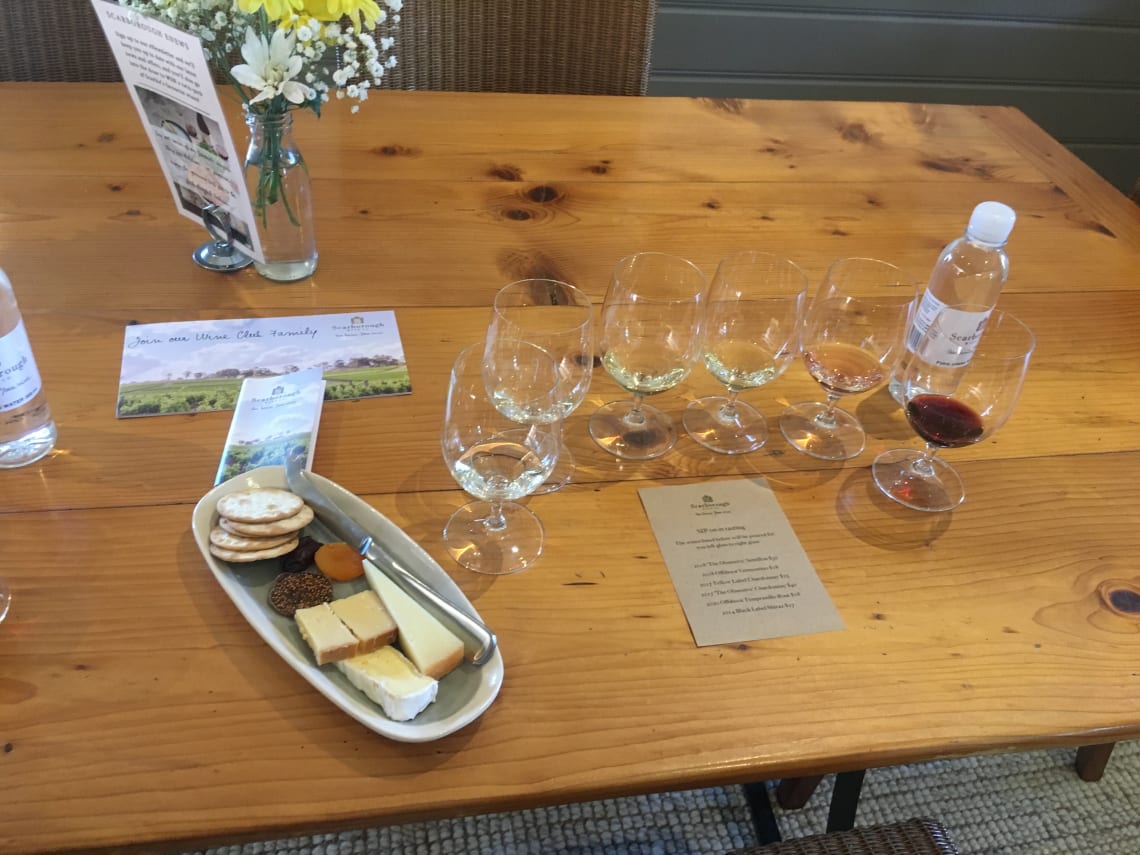
Learn to surf in the Gold Coast or Sydney
Surfing is one of the most beloved sports in Australia. The coastline is full of waves that suit surfers of all levels, and there are so many reputable surf schools with knowledgable instructors.
Areas around Sydney, northern New South Wales, and southern Queensland are great for beginner surfers. The Gold Coast, Noosa, Burleigh Heads, Byron Bay, Crescent Head, Wollongong, and Thirroul are some perfect spots to learn surfing.
Just do a quick online search for some of the best surf schools in those areas and you’re sure to find somewhere affordable where you can learn to surf!
Enjoy Melbourne
Melbourne is one of the world’s most famous cities. It’s the capital of Victoria, and it’s where lots of backpackers choose to base themselves.
The city is incredibly charming. There is plenty of art, music, architecture, history, nightlife, and culture to entertain anyone.
Road trip along the Great Ocean Road
Stretching along the southern coast of Victoria, the Great Ocean Road is one of the best road trips to do in Australia.
The road is 243 kilometers long and begins in Torquay, near Melbourne. If you don’t want to drive yourself, you can also book a 1 or 2-day group tour along the Great Ocean Road from Melbourne.
Along the route, you’ll see some breathtaking coastal scenery, complete with sandy beaches, rugged cliffs, and unique rock formations like rock arches and gorges.
The 12 Apostles is the most famous sight, where massive rocks have eroded away from the coast over time and are now scattered throughout the ocean.
Another highlight of the Great Ocean Road is koalas! There are lots of these furry animals living in treetops around here. They’re quite hard to spot and spend most of the day sleeping, but you just might catch a glimpse of one if you’re lucky!
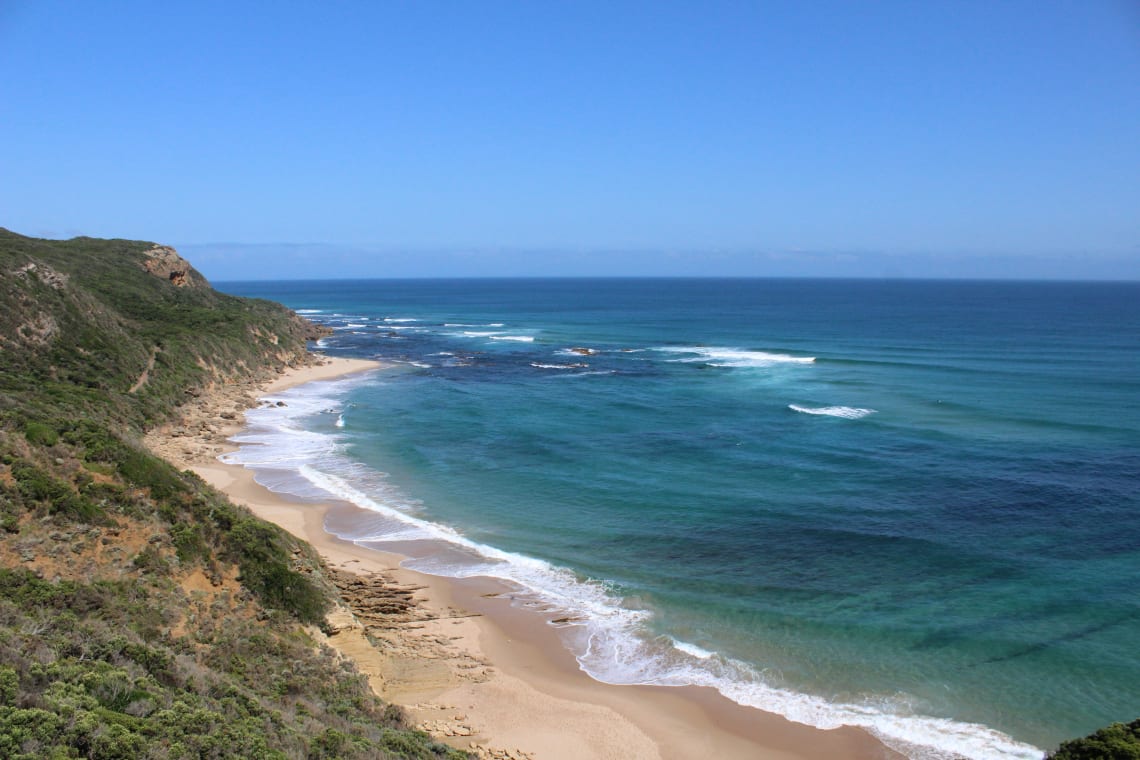
Visit Tasmania
Tasmania is a small island off the southern coast of Australia. It is famous for its wild and breathtaking natural beauty, its farmland, and its hiking opportunities.
The quaint capital city of Hobart is a great place to begin your adventure. After enjoying the cafes, galleries, and museums of the city, head to the wilderness for hiking, biking, surfing, and exploring.
Some of the most popular sights on the island are the white sands of Wineglass Bay, the colorful rocks of the Bay of Fires, and the peaks of Cradle Mountain or Mount Wellington.
Trek through Kakadu National Park
Located in the Northern Territory, Kakadu National Park is the largest national park in Australia!
If you’re looking to explore some raw, rugged wilderness and get off the beaten path, this is the place to go!
Here you can find aboriginal rock paintings dating back to prehistoric times , as well as countless swimming holes, waterfalls, gorges, and hiking trails with breathtaking views.
Kakadu National Park is also a great place to witness some cool wildlife, particularly crocodiles.
Sail around the Whitsundays Islands
Of all the best things to do in Australia, this one will make you feel the most spoiled! The Whitsundays Islands look like a scene out of a luxury travel magazine.
Sitting along the Great Barrier Reef, these islands have thriving marine life, crystal clear turquoise water, and soft white sand beaches.
There are 74 islands in total. You can explore the islands on any budget as well! Book a day tour with snorkeling, or treat yourself and book a boat tour where you sail around all the most beautiful islands.
This is an amazing way to combine a trip to paradise with a trip to the Great Barrier Reef!
Thanks for reading these Australia travel tips!
It is truly an amazing country with so much diversity. Any traveler can have an amazing Australia vacation if they just brush up on their knowledge of the country.
And with all the Worldpackers work exchange opportunities around the country, you can save money while exploring and experiencing the culture.
Want to learn more about planning your trip? By subscribing to the WP pack plan you have unlimited access to +120 courses at Worldpackers Academy, the travel school made by travelers!
Join the community!
Create a free Worldpackers account to discover volunteer experiences perfect for you and get access to exclusive travel discounts!
Gabrielle Boucher
Budget Travel With Gabby
Hello! I am a 25 year old from the USA with a knack for traveling on a budget. I fell in love with traveling while studying in Europe, and that love grew even more when I started volunteering abroad in South America. Since then, I've worked odd jobs and volunteered all over the globe while cultivating passions for hiking, wildlife photography, food, wine, animals, permaculture, and more!
Be part of the Worldpackers Community
Already have an account, are you a host, leave your comment here.
Write here your questions and greetings to the author
Mar 10, 2023
Triple I Business
Australia is a country with amazing natural beauty and rich cultural heritage. There is something for everyone, from its breathtaking coasts and lush rainforests to its lively cities and welcoming residents. Australia is among the most well-liked tourism locations in the world, which is not surprising.
More about this topic

Top 10 things to do in Indonesia: Bali and beyond
Where to stay in Thailand: 8 destinations that you can’t miss
Is Vietnam safe to travel to? What you need to know to discover this country
How do worldpackers trips work.
As a member, you can contact as many hosts and travel safely as many times as you want.
Choose your plan to travel with Worldpackers as many times as you like.
Complete your profile, watch the video lessons in the Academy, and earn certificates to stand out to hosts.
Apply to as many positions as you like, and get in contact with our verified hosts.
If a host thinks you’re a good fit for their position, they’ll pre-approve you.
Get your documents and tickets ready for your volunteer trip.
Confirm your trip to enjoy all of the safety of Worldpackers.
Have a transformative experience and make a positive impact on the world.
If anything doesn’t go as planned with a host, count on the WP Safeguard and our highly responsive support team!
After volunteering, you and your host exchange reviews.
With positive reviews, you’ll stand out to hosts and get even more benefits.
8 of the best places to visit in Australia

Dec 3, 2023 • 8 min read
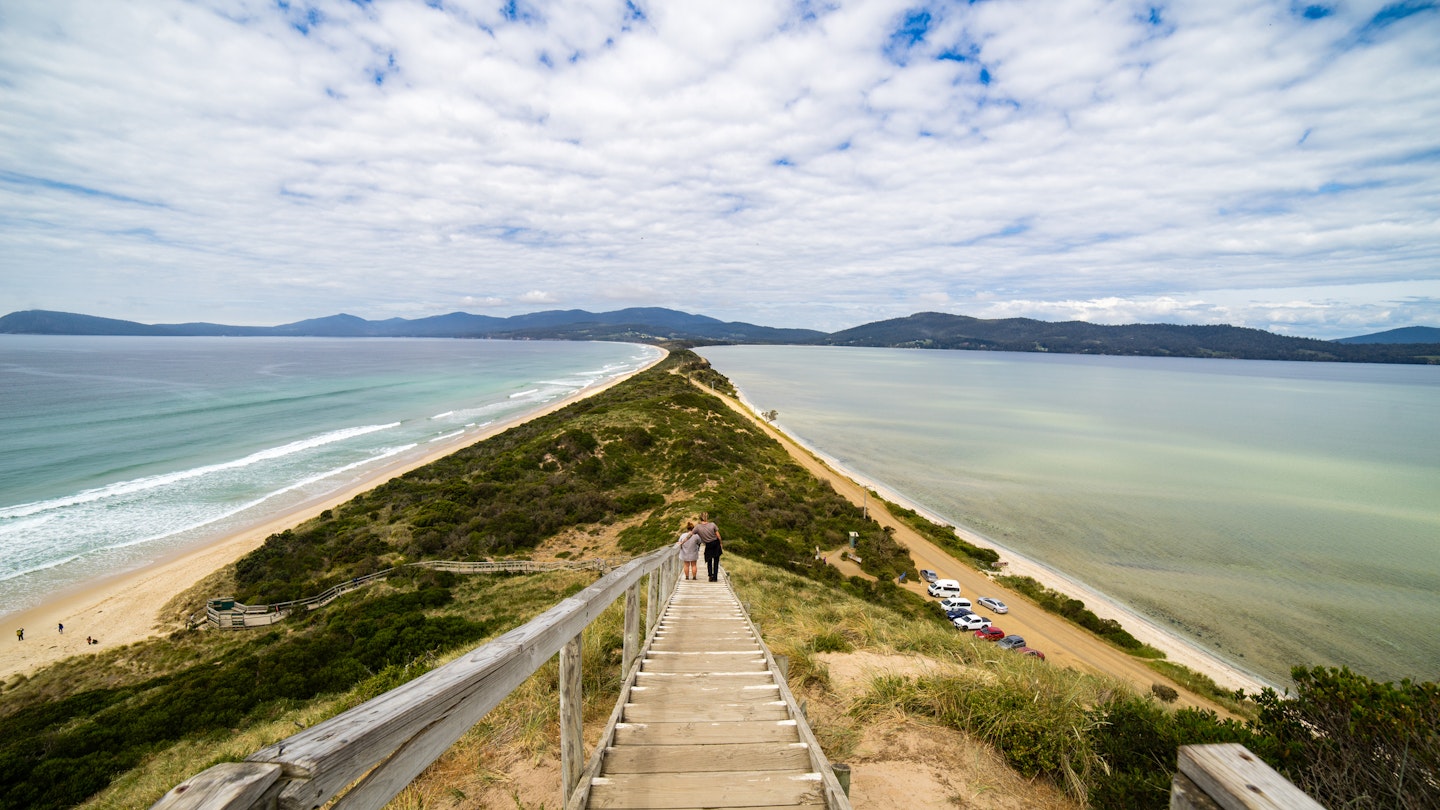
Narrow down the places you want to go with this guide to Australia © Nigel Killeen / Getty Images
Being tasked with choosing the best places to visit in Australia is no easy assignment.
There is no shortage of spectacular places that could make the potential shortlist, from culturally diverse cities with rich Aboriginal history dating back tens of thousands of years, to the Great Barrier Reef and the raw outback landscapes in between.
Unless you’ve got months – or even years – to spare, the country’s immense scale and the sheer diversity of experiences on offer means it’s impossible to do it all in one trip. That’s why we’ve rounded up just eight of Australia’s best places to go to help you make your own shortlist – and maybe even give you reasons to visit more than once.
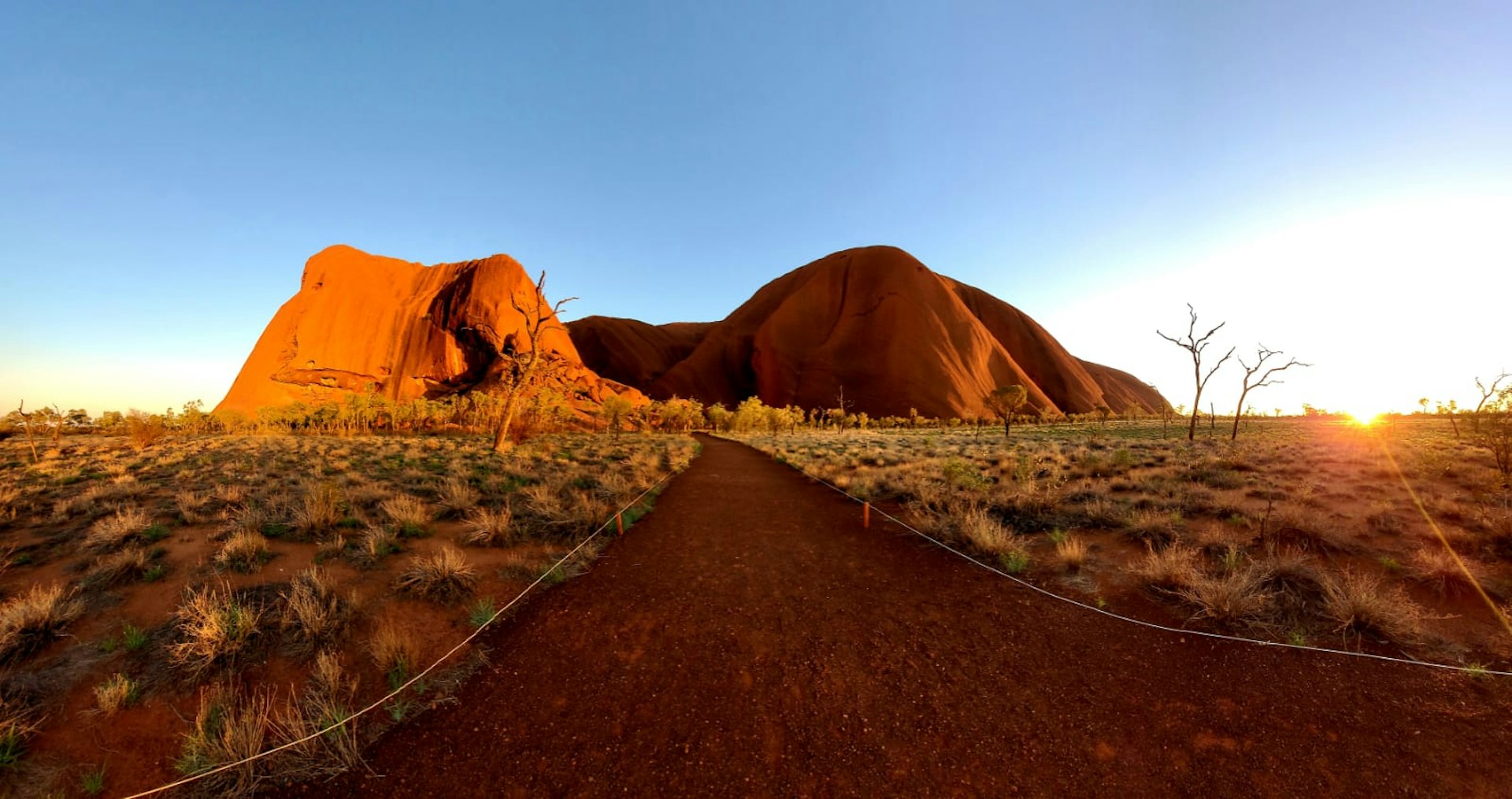
1. The Red Centre, Northern Territory
Australia’s most iconic outback experience
Nothing will take your breath away like a trip to the red heart of Australia in the Northern Territory . Here you can watch the sunset over Uluru – arguably the world’s most famous monolith, and spiritually significant site to the Anangu people – or be inspired by the sheer size of the 36 red domes at nearby Kata Tjuta, within the same national park. The desert’s natural beauty is only further enhanced by immersive art installations , like the new Wintjiri Wiru experience at Uluru (which tells part of an Anangu sacred story using more than 1100 drones), Bruce Munro’s Field of Light and the Light-Towers at King’s Canyon.
While there are plenty of adventure activities, like scenic flights and camel riding, don’t miss the opportunity to discover the world’s oldest continuously living culture. Walking tours and art lessons led by First Nations guides can be found near Uluru and Watarrka National Park.
Planning tip: Accommodation in the Red Centre, including campsites, is limited during the peak visitor season of June to September. Book ahead for tours and to secure accommodation.
2. Northern Rivers region, New South Wales
Best for exploring back roads
Bohemian Byron Bay – which has become a favorite destination for celebrities and backpackers alike – is probably the best known destination in northern New South Wales. But it’s just a small part of the Northern Rivers region. Head inland towards the hinterlands and you’ll find quaint villages and laid-back towns equally worth exploring. You can swim in Killen Falls, wander through the charming community of Newrybar, or sample the goods at the surrounding macadamia plantations and from farmgate stalls.
One experience not to miss is the Tweed section of Northern Rivers Rail Trail , which opened in 2023. The 24km (15-mile) abandoned railway corridor connects the region’s historic villages, best explored by bike.
Planning tip: Visit Mullumbimby Farmers Market on a Friday morning. Held at the showgrounds, you’ll be supporting micro-farmers and rubbing shoulders with locals.
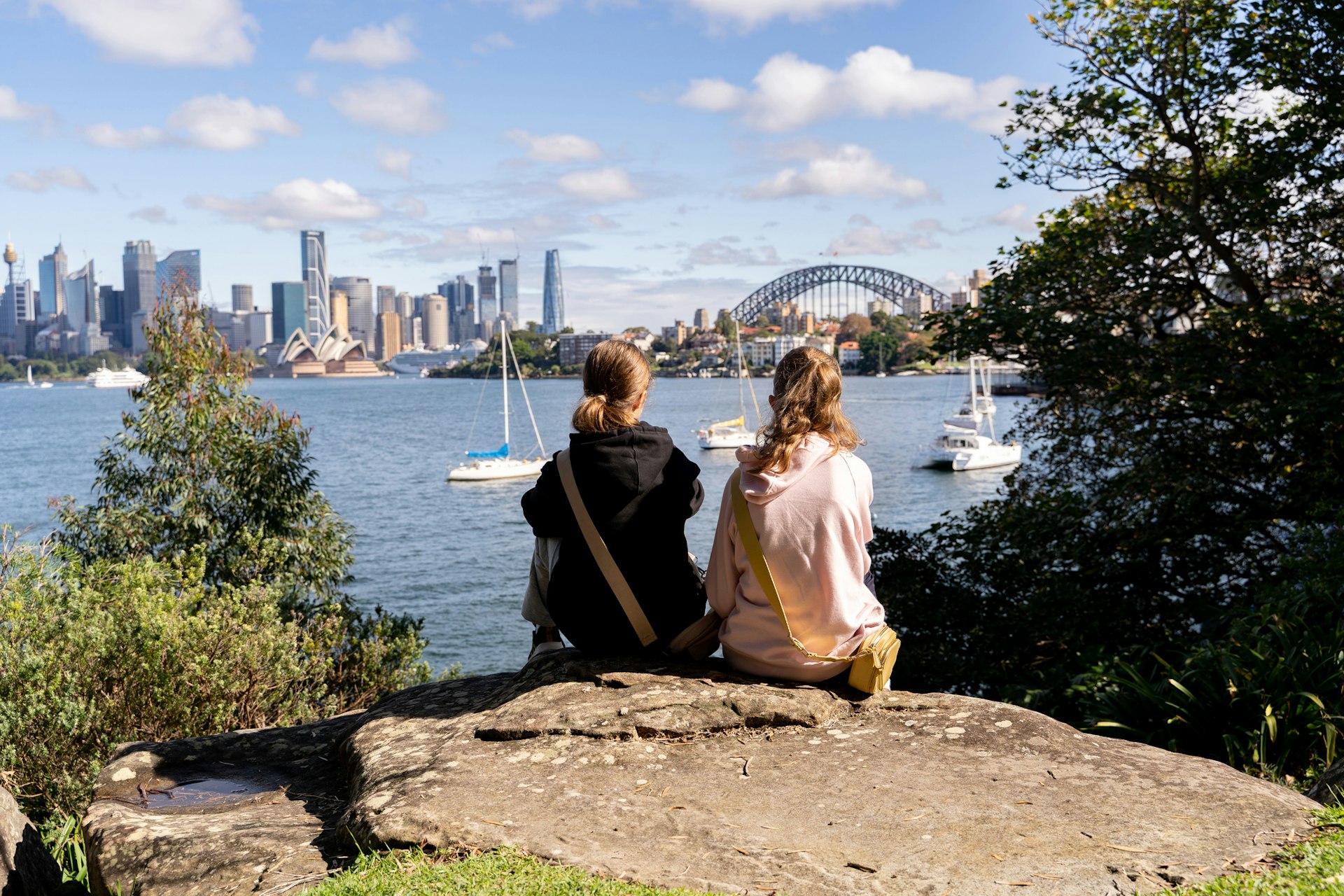
3. Sydney, New South Wales
Australia’s best city for outdoor activities
Sydney is rightfully considered one of the world’s most beautiful cities, where the natural splendor of cityside beaches collides with incredible urban architecture, including the Opera House . It owes much of its good looks to its massive natural harbor, which is surrounded by a blend of skyscrapers, national parks and multimillion dollar homes.
During the summer, you can cool off at one of the eastern beaches (such as perennial favorite, Bondi ) or in one of the harbor’s 20 sheltered swimming spots. Try Marrinawi Cove, a new terraced sandstone swimming spot. Since opening in 2023 at Barangaroo , it’s been widely embraced by nearby office workers on their lunch breaks.
In the winter, don’t miss seeing the harbor lit up for Vivid Festival . The foreshore is transformed into a canvas for light installations and projections. The cooler daytime temperatures also make this the perfect time of year to take on the Sydney Loop walk, which covers 26km (16 miles) of Harbour foreshore.
Planning tip: Don’t miss a journey to Manly from Circular Quay on the ferry . It's an incredibly budget-friendly way to explore the harbor, taking in Parliament House, Sydney Harbour Bridge and the Opera House.
4. K'gari, Queensland
Best for off-grid adventuring
With a return to its traditional name in 2023, K’gari – the world’s largest sand island – has seen a surge of visitors keen to connect with Indigenous Butchulla culture. Formerly known as Fraser Island, this UNESCO World Heritage-listed site is rich in history and culture, but it’s also one of Australia’s best 4WD adventures.
Abounding in natural attractions, this is where you can swim in the crystal clear waters of Boorangoora/Lake McKenzie, spot dingos playing on the beach, or relax in a natural ocean spa at the Champagne Pools. Visitors can camp, stay in one of the island’s resorts or even walk nearly the full length of the island on the 90km (56 mile) K’gari Great Walk . Whatever option you choose, you’ll soon understand why “K’gari” translates to “paradise.”
Planning tip: Always carry a list of tide times, as access to some of K’gari’s most popular spots is tide dependent. The sand on the island is deep and soft, so if you’re not familiar with driving a 4WD, it may be best to book a tour with a local operator.
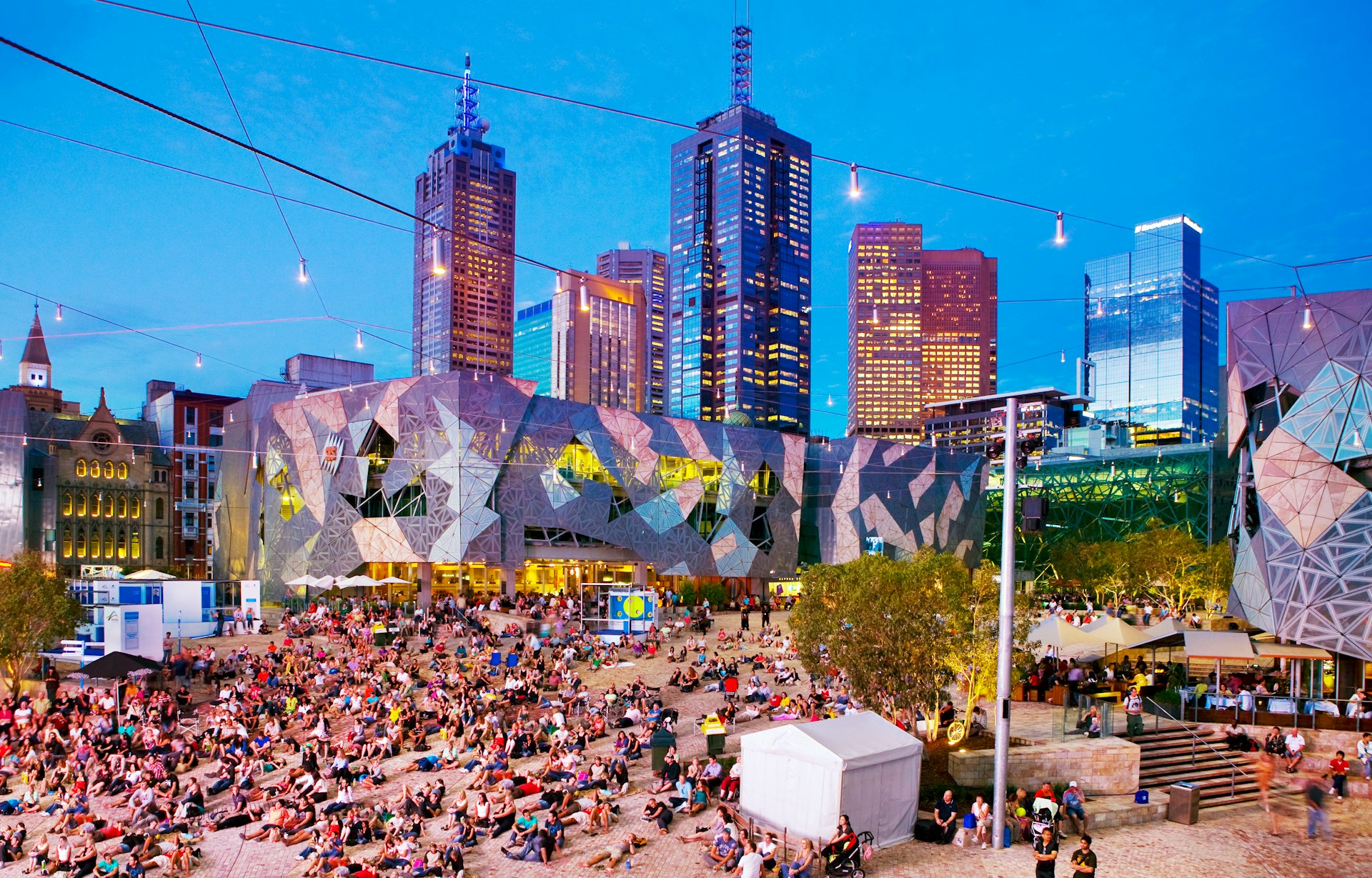
5. Melbourne
Best Australian city for nightlife
Melbourne is a 24-hour city, and come nightfall, the party gets started. Hit the laneway bars for drinks and bites, and don’t miss a live show: iconic St Kilda music venue the Espy offers three stages for live acts. Meanwhile over in Collingwood, the Tote is so beloved that locals crowdfunded to keep it open.
Melbourne is also famous for its comedy clubs. Check out Spleen Bar or Basement Comedy Club , or time your visit to coincide with the Melbourne International Comedy Festival , held every autumn (March to April).
When the gigs are done, settle in for a drink at one of Melbourne’s signature late-night bars like Nick & Nora's and Cherry Bar , or if you’re feeling hungry, fill up at Stalactites .
Planning tip: Melbourne has a specific set of Night Network trains, trams and buses , which operate on Friday and Saturday nights to make sure you can get from bar to bar safely and back home again with ease.
6. Margaret River, Western Australia
Best for wineries and adventure
From New South Wales to South Australia , Australia is spoiled for wine regions. What sets Western Australia’s Margaret River apart is that its food and wine offerings are complemented by incredible natural attractions. Located just south of Perth , this corner of Australia is considered one the world’s biodiversity hot spots. It has a high concentration of endemic species, including numbats (a marsupial with behavior similar to a meerkat), Western ringtail possums and around 8000 species of vascular plants, 80% of which are found nowhere else on earth.
The wine is just as notable, with roughly 95 wineries producing award-winning sauvignon blanc, cabernet sauvignon, semillon and chardonnay. And when you need to work off all the food and drink, you can paddle out in the legendary southwesterly swell at some of state’s best surf beaches, go deep underground on a tour of the region’s limestone cave systems, or walk a portion of the 123km (76-mile) Cape to Cape track along the coast.
Planning tip: Learn more about the traditional owners of the land, the Wadandi (Saltwater) people at Koomal Dreaming , which offers guided walks and food experiences.
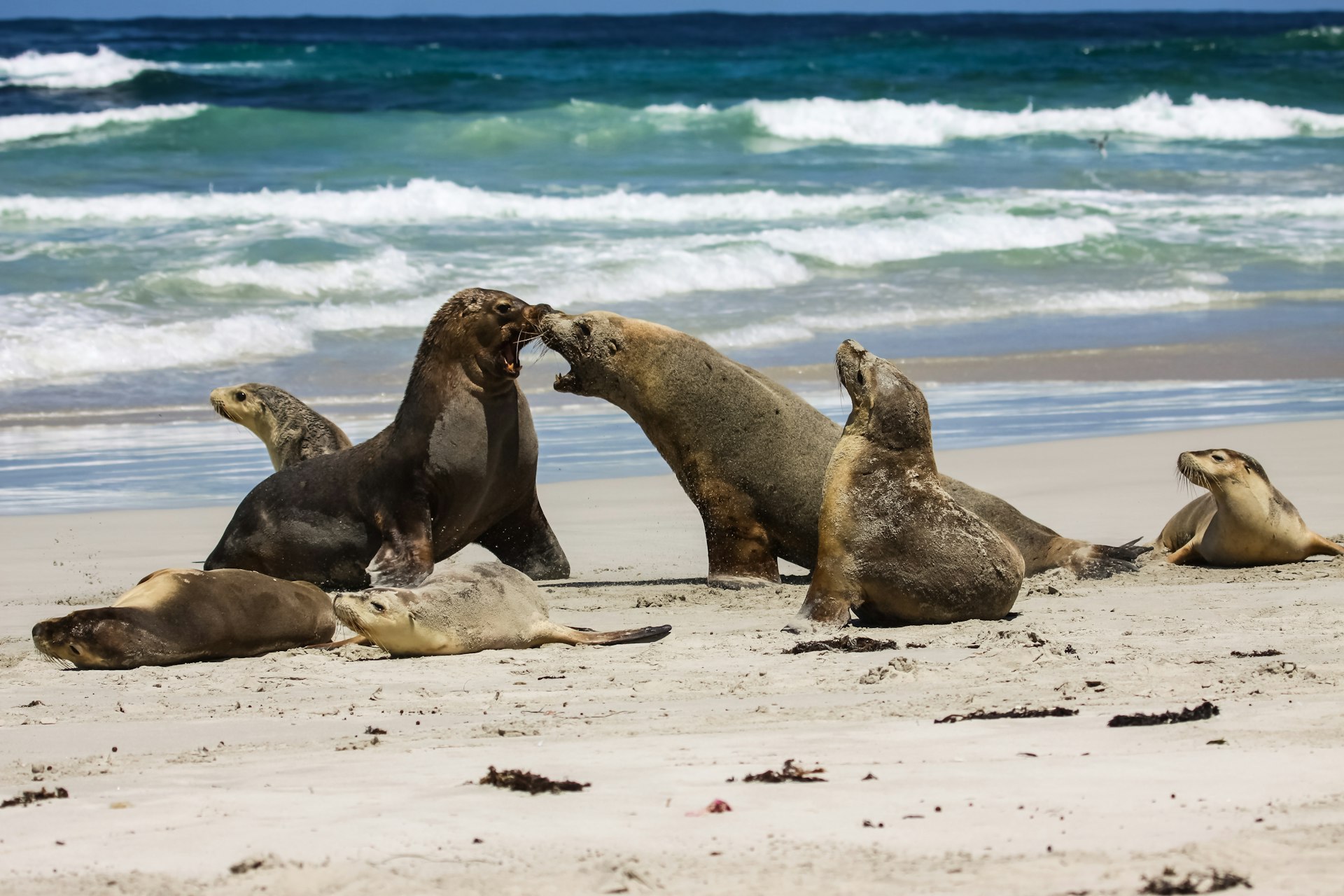
7. Kangaroo Island
The best place for an Australian wildlife safari
Just across the water from Adelaide is Kangaroo Island (KI), a haven for wildlife, including its namesake kangaroos alongside wallabies, koalas, echidnas and platypus. You can watch the island’s little penguins waddle to their dens at Penneshaw and see (and smell) the world’s third-largest sea lion colony lounge amongst the limestone cliffs at Seal Bay Conservation Area . If you’re lucky, you might also catch a glimpse of the endangered glossy black cockatoo with their red tails, or the exceptionally shy Kangaroo Island dunnart, a type of tiny marsupial endemic to the island.
KI isn’t just a refuge for wild things; though. It’s also home to countless local producers , including distilleries, wineries and beekeepers, the latter of whom produce honey made from the only purebred Ligurian bee colony left in the world. Needless to say, there’s a reason we named it one of the best places to visit in 2024 .
Planning tip: Many of Kangaroo Island’s native species, including kangaroos, are more active at night. As such, it’s advisable to avoid driving at this time.
8. Tasmania
Best for igniting all the senses
Home to a thriving festival scene, a world-class art gallery and an unbridled wilderness adored by nature lovers, Tasmania is one of Australia’s most diverse destinations, capable of stimulating all your senses.
Here, you can taste whisky at Lark Distillery , Australia’s first carbon-neutral distillery on Hobart ’s waterfront, eat freshly shucked oysters on Bruny Island , or dine at restaurants like Stillwater in Launceston , a UNESCO City of Gastronomy (one of only roughly 50 world cities to earn this accolade).
You can see weird and wonderful art at the controversial Mona (Museum of Old and New Art). You can hear international music at the popular Dark Mofo and Mona Foma winter and summer festival. You can feel the ground beneath your feet as you explore one of the state’s hiking trails. And you can smell the fresh sea air while on a boat tour around some of the world’s highest sea cliffs .
Planning tip: Renting a car can be tricky during Tasmania’s busy summer season, so it pays to book ahead. Likewise, if you plan to take the car ferry from the mainland , the route often sells out. Bookings may be made up to 11 months in advance.
This article was first published June 2021 and updated December 2023
Explore related stories
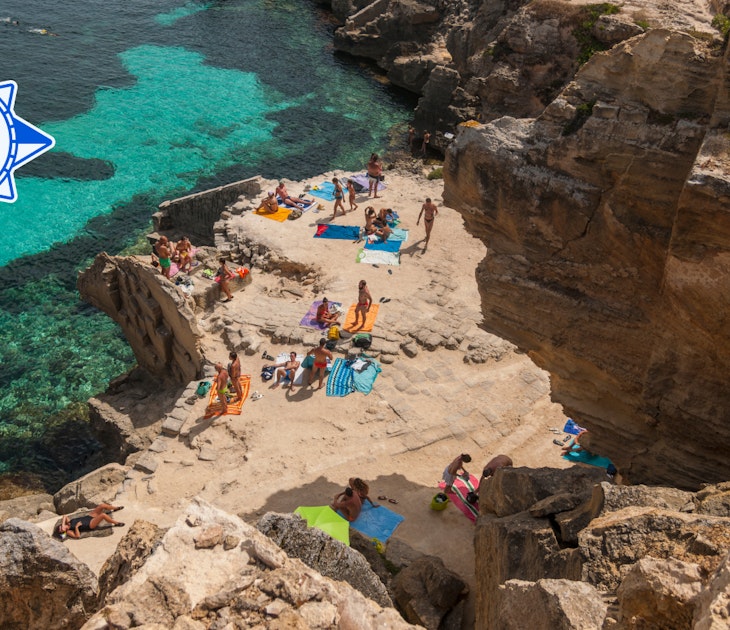
Tips & Advice
Apr 15, 2024 • 10 min read
From chilling on the beaches of Bora Bora to eating shellfish in Cape Cod, USA, here are the best places to visit in June.
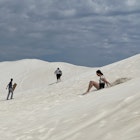
Apr 4, 2024 • 5 min read

Mar 30, 2024 • 4 min read
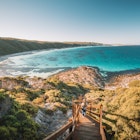
Mar 29, 2024 • 19 min read

Mar 26, 2024 • 8 min read
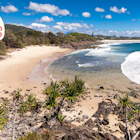
Feb 27, 2024 • 6 min read
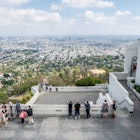
Feb 15, 2024 • 7 min read

Feb 9, 2024 • 12 min read
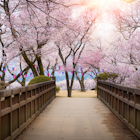
Jan 31, 2024 • 6 min read

Jan 30, 2024 • 9 min read
Nomadic Matt's Travel Site
Travel Better, Cheaper, Longer
Australia Travel Guide
Last Updated: April 1, 2024

Australia is one of the most popular travel destinations in the world. It’s known as a major backpacking, camping, road tripping, and diving destination.
Backpacking Australia is considered a “must do” for backpackers. It’s a central highlight on the round-the-world trail. I started coming to Australia in 2008 as a backpacker. It hooked me and, since then, I’ve visited over five times and have crisscrossed the country three times. Every single trip I discover something new about this country to love.
But this isn’t just a country for backpackers. Its huge diversity means every traveler can find something they love here.
Australia is filled with incredible natural beauty: Uluru and the Outback, rainforests and pristine white sand beaches, and of course, the Great Barrier Reef. Sydney’s Harbor Bridge and Opera House are iconic man-made wonders, and Melbourne’s café culture will make you feel like you’re relaxing in Europe . You have surfing, hiking, camping, boating, and a ton of other activities available to you. It makes some of the best wine in the world. Australia has it all.
However, the country’s size and limited transportation options, makes it hard to get around. And it’s not the cheapest place to visit, even if the currency is a tad weak right now.
Fortunately, this extensive Australia travel guide will show you how to save money, plan your trip, and make the most of your time Down Under. Because this country is worth taking the time to explore – and doesn’t need to cost a fortune!
Table of Contents
- Things to See and Do
- Typical Costs
- Suggested Budget
- Money-Saving Tips
- Where to Stay
- How to Get Around
- How to Stay Safe
- Best Places to Book Your Trip
- Related Blogs on Australia
Click Here for City Guides
Top 5 things to see and do in australia.
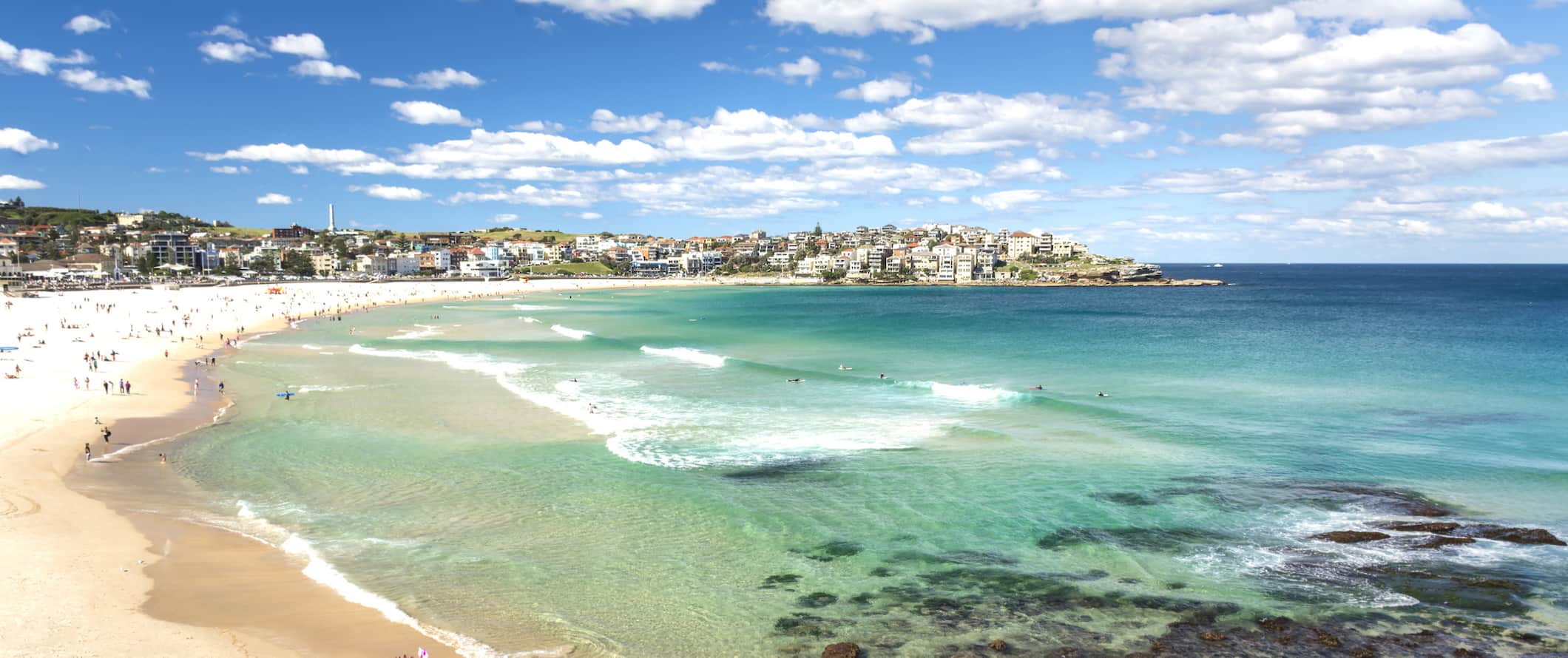
1. See Sydney
Australia’s largest city has a range of activities to keep you busy. Climb the Sydney Harbour Bridge, surf at Bondi Beach, party in King’s Cross, sail across the harbor, visit the Opera House, and take in world-class innovation in Darling Harbor. There’s a ton to see and do here and it’s worth spending a few days here to soak it all in. Other popular beaches nearby include Manly (wide and beautiful), Bronte (small and quiet), Coogee (fun), Palm (chill), and Dee Why (surfing). And, if you’re feeling adventurous, tours that climb the iconic (and massive) harbor bridge cost 250 AUD.
2. Visit Uluru
This beautiful red rock formed over 550 million years ago. Tourists have been visiting the rock since the 1930s and it’s of great spiritual importance to the local Aboriginal peoples. Formerly known as Ayers Rock, the best way to visit is by going as part of a multi-day tour of the area or driving on your own. You’ll be able to walk around the rock, learn about its cultural importance, and watch the rising/setting sun splash against it. Admission is 38 AUD per person and is valid for three days. Note: Climbing on the rock is prohibited.
3. Dive the Great Barrier Reef
Don’t miss diving or snorkeling the Great Barrier Reef. It’s the largest living organism on Earth, spanning some 344,000 square kilometers (133,000 square miles). The reef is brimming with wildlife, including giant clams, manta rays, sharks, turtles, clown fish, and more! Cairns is the most popular jumping-off point for dive trips to the reef. I was blown away by the abundant wildlife and coral. It did not disappoint! Dive trips start around 230 AUD.
4. Explore Melbourne
Melbourne is much more relaxed than Sydney (and, personally, I like it more). This is the place to relax by the river, walk through the city gardens, eat amazing food, enjoy the art, and party in St. Kilda. It’s a fun, chill city with a youthful vibe and a ton of backpackers.
5. Sail the Whitsundays
The Whitsunday Islands are a collection of 74 islands off the central coast of Queensland. They’re one of the most popular destinations in the country. It’s a popular region for sailing trips and since the vast majority of these islands are designated national parks, you’ll find numerous pristine beaches and dive sites here. It’s a postcard-perfect region. Expect to pay between 399-499 AUD per person for a three-day/two-night sailing trip. While expensive, it’s worth doing (I loved my trip).
Other Things to See and Do in Australia
1. explore fraser island.
The world’s largest sand island is a popular spot for camping, swim, hike, and seeing dingoes. You can hire your own 4WD car or take an overnight tour through the island that’s famous for its freshwater lake (and dingoes). The island is beautiful and filled with lakes, hiking paths, and sweeping vistas. Sadly, you can’t go in the water nearby as it’s rough and full of sharks, but there’s plenty of fishing, cool sand dunes, the stunning 75 Mile Beach, and a cool shipwreck for snapping photos. Camping on the island is super cheap too (less than 10 AUD per night!).
2. Visit Cairns
Cairns is Australia’s gateway to northern Queensland. From here you can visit the Great Barrier Reef, the Daintree rainforest, the Atherton Tablelands, Cape Tribulation, and much more. Cairns is a pretty typical tropical city and life here focuses on taking the time to smell the roses. With so much to see, the city deserves a very long stay. Plan to visit for a week, which should give you enough time to explore the area and allows some downtime by the city’s awesome pool.
3. Wander Brisbane’s South Bank
Brisbane is a “business city.” Unlike Sydney or Melbourne, there isn’t a lot of “culture” here. But it’s a popular stop on the backpacker trail due to its location. Be sure to explore South Bank, which has some nice restaurants and decent pubs. There’s also an educational koala sanctuary here as well as a relaxing botanical gardens.
4. Hike the Daintree
The world’s oldest rainforest (yes, it’s older than the Amazon) offers hikes that range from easy to challenging, with dense jungles, beautiful mountains, waterfalls, and lots of wildlife. Spend a few days hiking around and getting out of touristy Cairns. If you really want to get off the beaten path, head up to Cape Tribulation and enjoy some real peace and quiet (just watch out for jellyfish when you go swimming). There are all kinds of day and multi-day trips available here with two-day guided trips costing around 350 AUD per person.
5. See Perth
Perth is Australia’s west coast capital and is often overlooked by most travelers. It’s expensive to get out there from the east coast (it’s a 5-hour flight from Sydney) so most travelers avoid it. But I love it. In fact, it’s probably my favorite city in all of Australia. Perth feels more like a large town than a city and is the best place to have a “Sunday Session” (an Aussie tradition of drinking on Sunday afternoons). From the beaches, food, and beer (be sure to take a day trip to Freemantle), Perth is just awesome.
6. Explore the Outback
No trip to Australia is complete without a trip to the Outback to see crocodiles, valleys, lakes, and the red desert. Find your own Crocodile Dundee as you explore the Red Center and Western Australia. And be sure to visit some of the places I love: Karijini National Park, the Kimberleys, Kakadu, and Litchfield National Park. The landscapes are stunning and there are all kinds of epic hikes to enjoy.
7. Surf on the Gold Coast
Australia is famous for its surfing, and one of the best places to learn is on the Gold Coast near Brisbane. You’ll find world-class waves, a wide beach, and lots of available lessons. If you don’t like the Gold Coast , there is always Noosa, Byron Bay, Bondi Beach, Perth, and, well, you get the idea. There’s a lot of surfing in Australia! A two-hour group lesson costs around 75 AUD. If you don’t need lessons and just want to surf, you can rent a board for around 60 AUD per day.
8. Take a wine tour
Whether you go down to Margret River, Hunter Valley, or the Barossa Valley, you will have many chances to taste Aussie wine right from the source. Visiting the wine country should be on your list of things to do. If you rent a car, you can stay longer or you can do guided tours from major cities. I think it’s best to base yourself in the area and spend about 3-5 days in each area tasting as much wine as possible. Day tours with Colorful Trips that visit three wineries in the Hunter Valley cost 199 AUD.
9. Admire the Ningaloo Reef
The Great Barrier Reef gets all the hype, but the Ningaloo Reef on the west coast is a far better reef system. Because it’s less developed and attracts fewer tourists, there are actually more fish and wildlife here — you can even swim with whale sharks . Plus, at some points (like at Coral Bay), the reef comes so close to the shore that you can swim right up to it on your own. Half-day trips start around 120-225 AUD per person.
10. Visit Western Australia
The most overlooked area in the country is the west coast. Here you can escape the crowds of the east coast, explore the Outback, see the Ningaloo Reef, Coral Bay (one of my favorite spots in the world), Broome, Perth, and the Margaret River. It’s much less developed than the east coast but if you take one piece of advice away from this guide, it should be to visit this part of Australia. It’s the version of the country you picture in your head and is an amazing region for road trips, camping, hiking, and enjoying nature.
11. Tour Tasmania
Despite everyone knowing its name, hardly anyone ever makes it down here. (It’s far from the main tourist trail.) Tasmania has amazing hikes, beautiful bays (Wineglass Bay being the most famous), small towns, and excellent people. It’s just a ferry away from Melbourne too. The island is about the size of Ireland (or West Virginia in the USA) yet it’s home to just under 545,000 people. If you have the time, explore this terribly under-visited part of the country. It’s amazing. The ferry from the mainland costs around 100 AUD each way and takes 9-11 hours.
12. Hike the Blue Mountains
Right outside of Sydney , the Blue Mountains are an awesome place to explore. Over millennia, the ancient sandstone of this national park has been weathered into gorges lined by steep cliffs and separated by narrow ridges. The area is free to visit and you can get there by train, which takes around two hours. Spend the day admiring the magnificent rock formation of the Three Sisters (particularly stunning at sunset and under evening floodlights) and hiking along the paths that offer excellent views of the valley, sheer rock walls, tumbling waterfalls, and magnificent forests. For a guided tour, Get Your Guide offers full-day wildlife-spotting tours for 155 AUD.
13. Learn about pearling in Broome
Broome used to be the largest pearling port in the world. Founded around 1880, pearls were an important commodity used for making cutlery, buttons, and jewelry. By 1900, there were 300 ships here, though the industry fell into decline during World War II (and then, after the war, plastic was invented, which diminished the need for pearls). You can learn all about the region’s rich history at the Pearl Lugger Museum (tours for 30 AUD). If you want a more hands-on experience, Willie Creek Pearls also offers a two-hour boat tour for 129 AUD. You’ll learn about the risks and challenges of the industry while also getting to hold and touch all kinds of valuable pearls.
14. Visit the Kimberley
This area is known for its wilderness, so if you love the outdoors and don’t mind things getting rugged, add this to your itinerary. Located near Broome, this outback region is three times bigger than England that’s filled with stunning gorges, beautiful waterfalls, and a vast desert landscape. It was one of the first areas settled in Australia some 65,000 years ago (Europeans didn’t arrive here in the 1830s). There are all kinds of day trips and hikes here that you can do solo, as well as multi-day guided tours. Expect to pay around 1,200 AUD for a three-day guided excursion. If you’re going solo, popular overnight hikes include Piccaninny Gorge and Lurujarri Dreaming Trail.
15. Explore Kakadu National Park
The enormous Kakadu National Park is a biodiverse nature reserve in Australia’s Northern Territory. It encompasses wetlands and rivers and is home to saltwater crocodiles and flatback turtles, as well as many different bird species. Rock paintings (dating back to prehistory) can be viewed at Nourlangie, Nanguluwur, and Ubirr. You can find a lot of tours departing from Darwin. Be sure to spend at least a night in the park! Three-day tours cost around 735 AUD.
For more information on specific cities in Australia, check out these guides:
- Alice Springs Travel Guide
- Brisbane Travel Guide
- Broome Travel Guide
- Cairns Travel Guide
- Fraser Island Travel Guide
- Gold Coast Travel Guide
- Melbourne Travel Guide
- Perth Travel Guide
- Sydney Travel Guide
- Whitsunday Islands Travel Guide
Australia Travel Costs
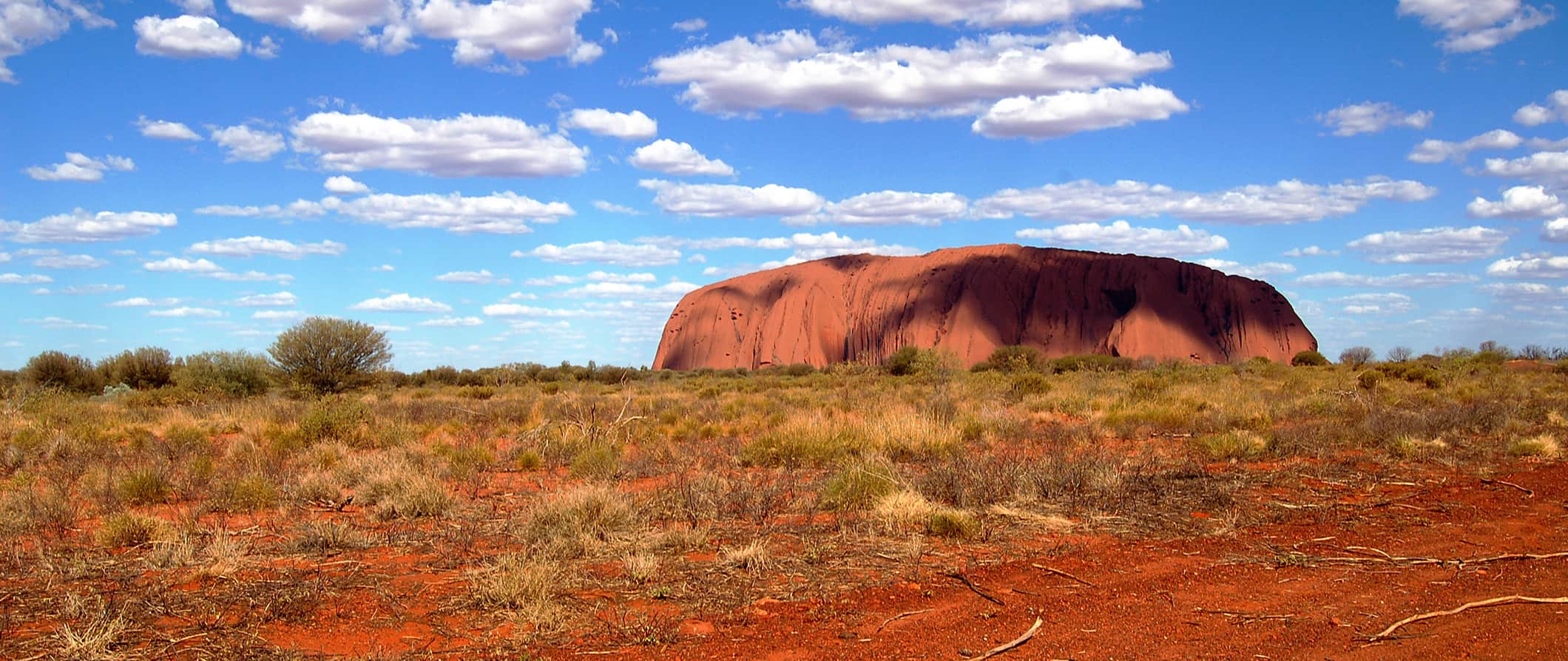
Accommodation – Hostels dorms start around 25-30 AUD per night, though they get as high as 40 AUD in the big coastal cities. Private rooms with a double bed and a shared bathroom in hostels range between 65-100 AUD per night, though in larger cities they can be as high as 150 AUD. Expect basic amenities like free Wi-Fi and self-catering facilities. Only some hostels include breakfast.
For those traveling with a tent, a basic tent plot without electricity starts around 7 AUD, though most are 10-25 AUD per night.
For budget hotels, expect to spend 100-120 AUD per night for a two-star hotel. Amenities usually include TV, Wi-Fi, and AC. Some hotels have a pool.
Airbnb is available around the country with private rooms starting around 40 AUD (though they average closer to 90 AUD). Entire homes/apartments cost at least 140 (though they are usually double or even triple that price so be sure to book early). Expect to pay about 10-20% more in the coastal cities.
Food – Food in Australia is diverse, with each region having its own specialties. While you can find cuisine of all types here, popular traditional choices include BBQ meat (especially sausages), meat pies, fish and chips, seafood, chicken parmigiana (chicken schnitzel topped with tomato sauce, ham, and melted cheese), and, of course, the infamous vegemite on toast.
Food prices vary per region, but generally, you can expect to pay 20-25 AUD for a meal at a casual restaurant. A fast-food combo from somewhere like McDonald’s costs 13-14 AUD while a pizza costs around 16-20 AUD. Chinese, Thai, and Indian food cost 12-20 AUD for a main dish.
If you want to splash out for something more upscale, a expect to pay around 55-70 AUD, including a drink, per person.
A beer is around 8 AUD, latte or cappuccino costs around 5 AUD, and bottled water between 2-3 AUD.
If you cook your own meals, expect to pay around 75-95 AUD per week for groceries. This gets you basic staples like pasta, rice, seasonal produce, and some meat.
Backpacking Australia Suggested Budgets
On a backpacker budget, you can visit Australia for 70 AUD per day. This assumes you’re staying in a cheap hostel, cooking all of your meals, using public transportation to get around, and doing mostly cheap or free activities like hiking and enjoying the beaches. If you camp, you can lower this budget by around 20 AUD per day. If you plan on drinking, add 10-20 AUD to your daily budget.
On a mid-range budget of 200 AUD per day, you can stay in a private Airbnb or hostel room, eat out for a couple of meals, enjoy a few drinks, take the occasional taxi to get around, bus between cities, and do more paid activities like taking surf lessons or going diving.
On a “luxury” budget of 385 AUD or more, you can stay in a hotel, eat out for all your meals, drink more, rent a car or camper van to explore, and do whatever tours and activities you want. This is just the ground floor for luxury though. The sky is the limit!
You can use the chart below to get some idea of how much you need to budget daily, depending on your travel style. Keep in mind these are daily averages – some days you’ll spend more, some days you’ll spend less (you might spend less every day). We just want to give you a general idea of how to make your budget. Prices are in AUD.
Australia Travel Guide: Money-Saving Tips
Australia can be a very expensive country to visit. If you aren’t careful, you’ll blow through your entire budget in no time as activities, food, and transportation all adds up fast here. Fortunately, there are lots of ways to save too. Here are some ways to save money when you visit Australia:
- Drink goon (box wine) – Goon is infamous on the Australian backpacker hostel trail. This cheap box of wine is the best way to drink, get a buzz, and save a lot of money at the same time. Drink this before you go out and save on spending money at the bar.
- Cook your own meals – The best way to reduce your costs is to cook as many meals as possible. Hostels and Airbnbs usually have kitchens and, while it’s not glamorous, it will save you a ton of money!
- Car share – Australia is a big country that can be expensive to get around. If you are traveling with friends, it’s smart to buy a used car or campervan (or rent a new one from one of the many rental companies in the country) and split the costs of gas. You can also hitch a ride with other travelers using sites like Gumtree, Jayride, or hostel message boards.
- Book tours as a package – This country has a lot of exciting activities and tours that eat into any budget. Booking activities together through a hostel or tour agency can get you a discount and save you hundreds of dollars.
- Work for your room – Many hostels offer travelers the opportunity to work for their accommodation. In exchange for a few hours a day of cleaning, you get a free bed to sleep in. Commitments vary but most hostels ask that you stay for at least a week. Check with the staff when you arrive to see if there are any opportunities available.
- WWOOF – WWOOFing is a program that allows you to work on organic farms in exchange for free room and board. Everyone I’ve met who stays in the country long-term does it for at least one month. It’s a great way to reduce your expenses and can a deeper look into local life.
- Stay with a local – Accommodation in Australia is pricey. If you plan ahead, you can usually find a Couchsurfing host that will host you for free. It’s the best way to connect with a local and get insider tips and advice.
- Camp – Camping is very affordable here, with basic tent plots costing as little as 7 AUD per night!
- Bring a reusable water bottle – The tap water in Australia is safe to drink so bring a reusable water bottle with you to save money and lower your plastic use. LifeStraw makes a bottle with a built-in filter to ensure your water is always clean and safe.
Where To Stay in Australia
I’ve been a backpacker here for ages and have accumulated a long list of places to stay. Here are my suggested places to stay in Australia if you’re looking for a hostel:
- Base St. Kilda (Melbourne)
- Space Hotel (Melbourne)
- Wake Up! (Sydney)
- YHA Rocks (Sydney)
- Bunk Brisbane (Brisbane)
- City Backpackers HQ (Brisbane)
- Kimberley Travellers Lodge (Broome)
- The Shiralee Hostel (Perth)
- Aquarius Backpackers (Byron Bay)
- Gilligan’s Backpacker Hotel & Resort Cairns (Cairns)
- Nomads Noosa (Noosa)
- Alice Lodge Backpackers (Alice Springs)
How to Get Around Australia
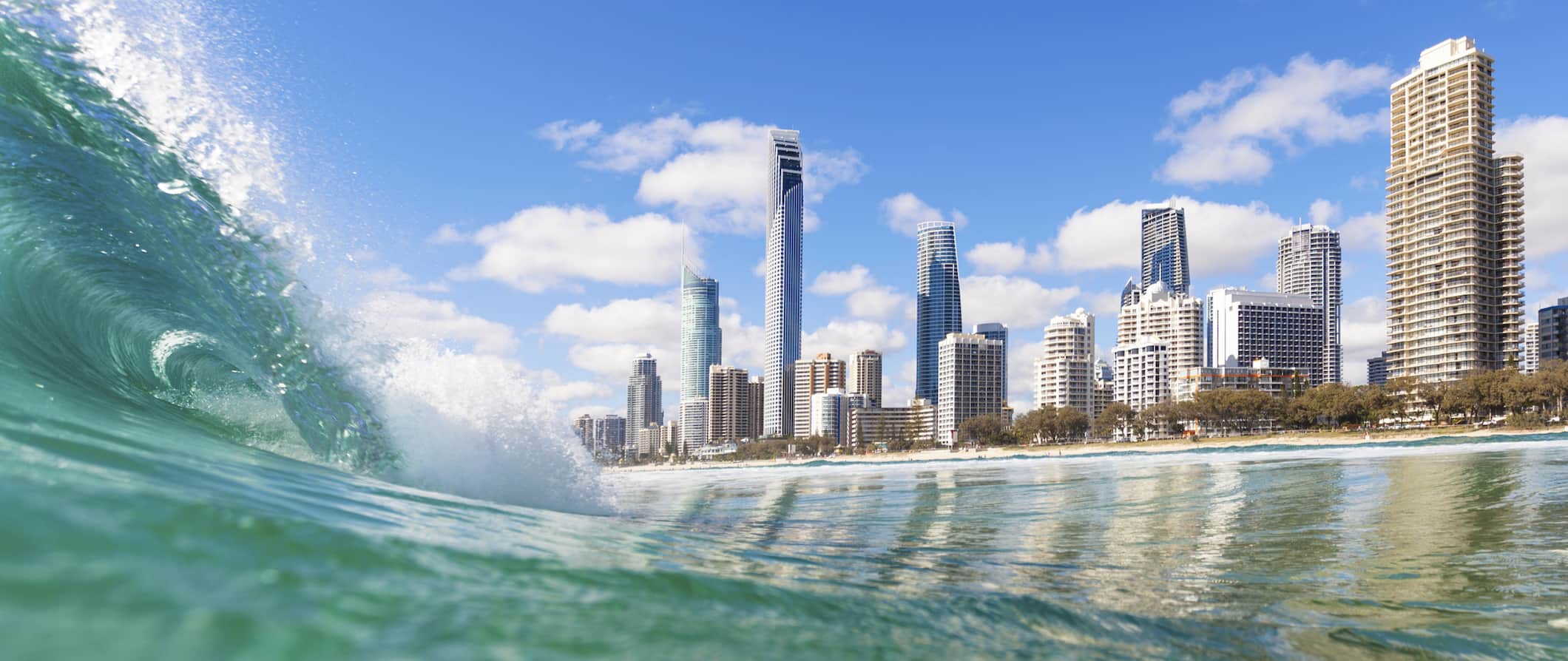
Public transportation – All of Australia’s cities have reliable, affordable public bus systems. In the bigger, cities such as Sydney, Melbourne, Brisbane, Adelaide, and Perth, you’ll even find subways and tram systems. This is the cheapest way to travel the cities. Fares cost between 2.75-4 AUD.
Many cities offer day passes that include unlimited public transportation for under 10 AUD.
Bus – After driving, this is my favorite transportation option in Australia. On the east coast, this will be your cheapest option too. On the west coast, buses are surprisingly expensive as there are not many people moving up and down that coast and there’s limited competition. However, on the east coast, you can find really cheap bus tickets, especially if you book in advance.
The two main bus companies in Australia are:
- Greyhound Australia
Greyhound also offers several bus passes. Their Whimit Passes range from 15-120 days of unlimited travel and are perfect for traveling around on a whim (hence the name). They come in 15, 30, 60, 90, and 120-day passes costing 349-729 AUD.
To find bus routes and prices, use BusBud .
Backpacker Bus – If you want to party with other backpackers as you travel, book a seat on the Magic Bus . This backpacker bus departs with 25 backpackers aged 18-35 for 3-4 weeks of exploring the country’s national parks, camping, bonfires, and non-stop parties and shenanigans.
Trips go from Perth north to Broome or east to Melbourne each month, so you have to time your trip accordingly to line up with the set departure. The itineraries are always flexible so every trip is unique. They try to keep a balance of 50% men and 50% women, as well as a balance of different nationalities, so there is always a diverse group. Prices vary so contact them for departure dates and ticket prices.
Train – Between city trams, commuter trains, and long-distance and trans-continental trains, Australia can be seen extensively by rail. Train lines exist mostly on the east coast with only two other major lines in the country: one goes north/south from Melbourne to Darwin and another east/east from Sydney to Perth.
For reference, Sydney to Canberra takes 5 hours and is 40-50 AUD while the 11-hour trip from Sydney to Melbourne costs over 200 AUD. Sydney to Brisbane takes 14 hours and costs 100-140 AUD.
Beyond the east coast, trains aren’t as plentiful and long-distance trains can be very expensive.
Flying – With Australia spanning over 7,000,000 square kilometers, it takes a long time to get around the country. Flying is one of the most efficient ways to city hop, but it’s not the cheapest. Australia’s major airlines include:
When booked in advance, flights can be very affordable here. Sydney to Melbourne is just 55 AUD and takes 90 minutes while Sydney to Cairns takes 3 hours and costs around 100 AUD each way. To cross the country, flights last around 5 hours. Sydney to Perth, when booked in advance, can cost as little as 150 AUD each way.
When not booked early, however, flights can easily double or triple these prices.
Rideshares – Every hostel has a bulletin board where travelers post rides and websites like Gumtree have active ridesharing sections where people look for cars or riders. I HIGHLY recommend this way of traveling when in the country. CoSeats is another good resource for finding rides.
Car rental – Car rentals start around 40 AUD per day. You don’t need one to explore any of the cities but if you want to travel the country then a car is best. Just remember that they drive on the left here.
Additionally, you can also purchase a car from backpackers leaving the country or locals selling used cars. You can usually find a used car for under 3,000 AUD. It might seem a lot, but there are always backpackers looking to share rides, which can cut down on our expenses.

When to Go to Australia
Temperatures vary across the country (it’s a huge landmass after all), but generally speaking, average summer temperatures range from 20-37°C (68-99°F). Remember that summer is from December-February here in the southern hemisphere. This is the most popular time to visit so expect big crowds and higher prices.
June-August (winter) is the low season. Prices are lower and there are fewer crowds. The temperature dips as well, hovering around 1°C (52°F) in the south while going as high as 30°C (86°F) in the north.
Spring and fall (March-May and September-October) are the shoulder season and the best time to visit. Crowds aren’t as big and prices aren’t as high and the weather is still enjoyable too, rarely dipping below 17°C (63°F).
Note that October to April is also “jellyfish season,” making waters unsafe for swimming or any other water sport. If you’re planning on enjoying Australia’s coast, this probably isn’t the best time to come. The season lasts from October to April in Northern Australia, and then from November to March elsewhere.
How to Stay Safe in Australia
Australia is an incredibly safe place to backpack and travel around. Violent attacks and petty theft are rare here so you’re unlikely to get into trouble.
Most incidents in Australia tend to occur because visitors are not used to the country’s unique climate and wilderness. Be sure you have plenty of sunscreen and stay as hydrated as possible. This is especially true if you’re driving through the Outback. There are long, long distances without any towns in sight, so if you break down, you’ll want to be prepared. Always make sure you have enough gas in your vehicle for long drives.
If you’re hiking, make sure you know what to expect ahead of time. Be on the lookout for snakes and spiders. If you’re bitten, seek immediate care.
If you’re swimming, heed the red and yellow flags. Yellow flags indicate swimming conditions may be dangerous; red flags mean the beach is closed.
Mother Nature in Australia is NOT a force to be reckoned with in this country. Don’t be a hero.
Solo female travelers are generally safe here, however, the standard precautions apply (never leave your drink unattended at the bar, never walk home alone at night intoxicated, etc.). Consult other solo female travel blogs for specific advice.
If you’re worried about travel scams, you can read about common travel scams to avoid here . There aren’t many in Australia though so I wouldn’t worry too much here.
If you experience an emergency, dial 000 for assistance.
The most important piece of advice I can offer is to purchase good travel insurance. Travel insurance will protect you against illness, injury, theft, and cancellations. It’s comprehensive protection in case anything goes wrong. I never go on a trip without it as I’ve had to use it many times in the past. You can use the widget below to find the policy right for you:
Australia Travel Guide: The Best Booking Resources
These are my favorite companies to use when I travel. They consistently have the best deals, offer world-class customer service and great value, and overall, are better than their competitors. They are the companies I use the most and are always the starting point in my search for travel deals.
- Skyscanner – Skyscanner is my favorite flight search engine. They search small websites and budget airlines that larger search sites tend to miss. They are hands down the number one place to start.
- Hostelworld – This is the best hostel accommodation site out there with the largest inventory, best search interface, and widest availability.
- Booking.com – The best all around booking site that constantly provides the cheapest and lowest rates. They have the widest selection of budget accommodation. In all my tests, they’ve always had the cheapest rates out of all the booking websites.
- Get Your Guide – Get Your Guide is a huge online marketplace for tours and excursions. They have tons of tour options available in cities all around the world, including everything from cooking classes, walking tours, street art lessons, and more!
- Rome2Rio – This website allows you to see how to get from point A to point B the best and cheapest way possible. Just enter your departure and arrival destinations and it will give you all the bus, train, plane, or boat routes that can get you there as well as how much they cost. It’s one of the best transportation websites out there!
- SafetyWing – Safety Wing offers convenient and affordable plans tailored to digital nomads and long-term travelers. They have cheap monthly plans, great customer service, and an easy-to-use claims process that makes it perfect for those on the road.
- LifeStraw – My go-to company for reusable water bottles with built-in filters so you can ensure your drinking water is always clean and safe.
- Unbound Merino – They make lightweight, durable, easy-to-clean travel clothing.
- Top Travel Credit Cards – Points are the best way to cut down travel expenses. Here’s my favorite point earning credit cards so you can get free travel!
Australia Travel Guide: Related Articles
Want more information? Check out all the articles I’ve written on Australia travel and continue planning your trip:
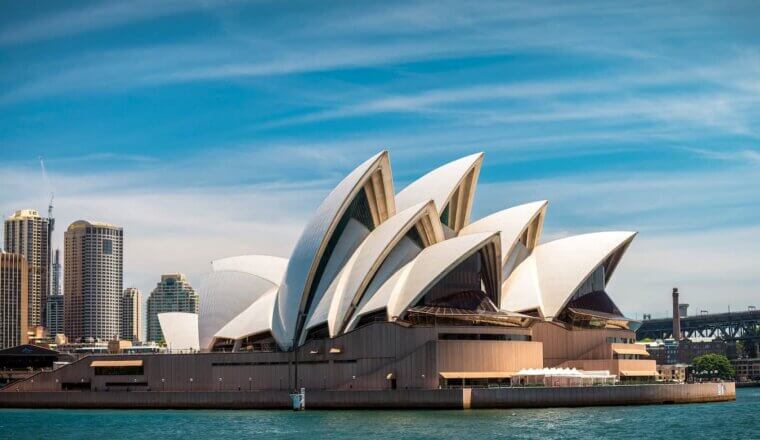
The 7 Best Hotels in Sydney
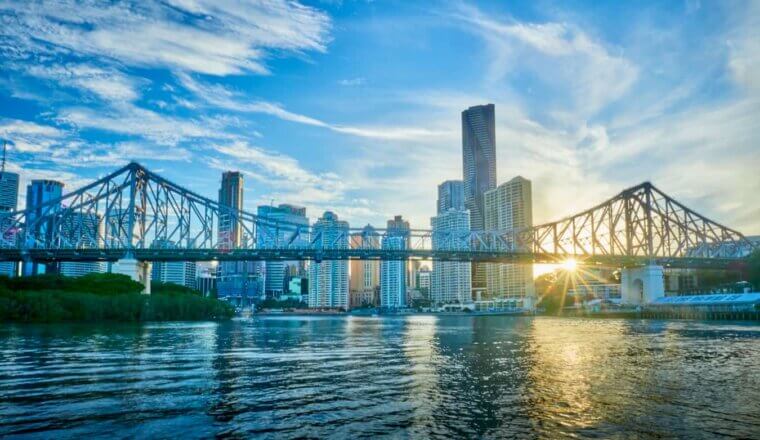
Where to Stay in Brisbane: The Best Neighborhoods for Your Visit
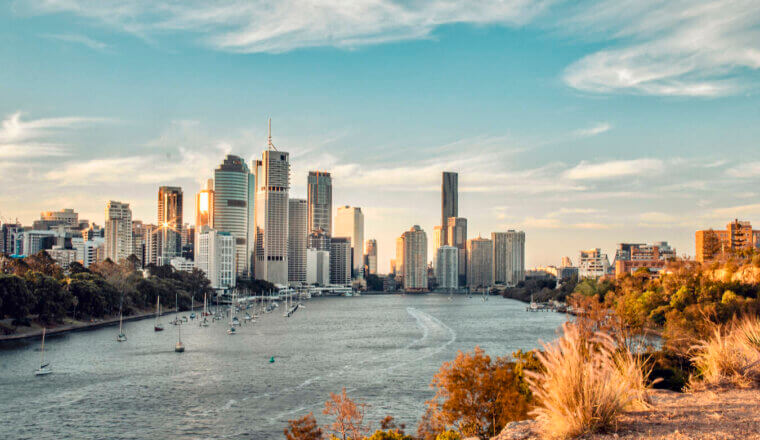
The 6 Best Hotels in Brisbane
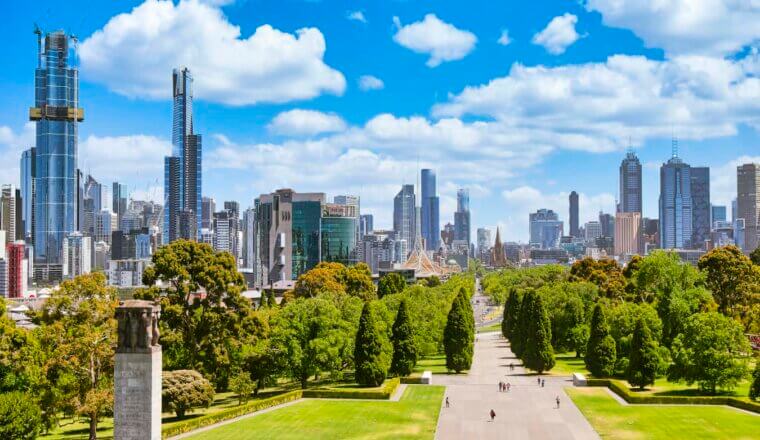
The Best Walking Tours in Melbourne
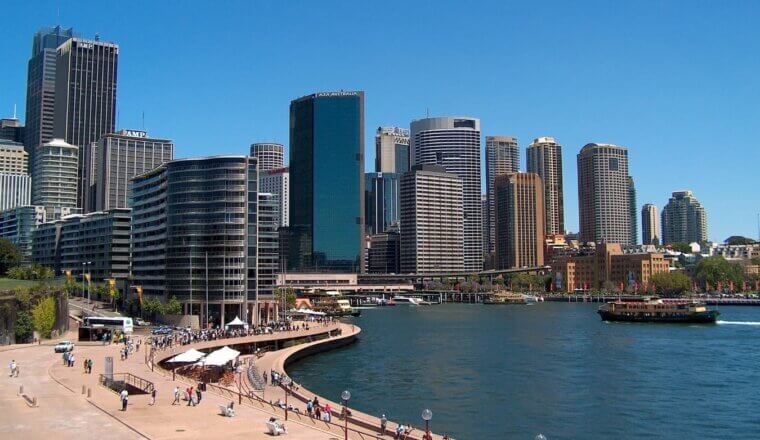
The Best Walking Tours in Sydney
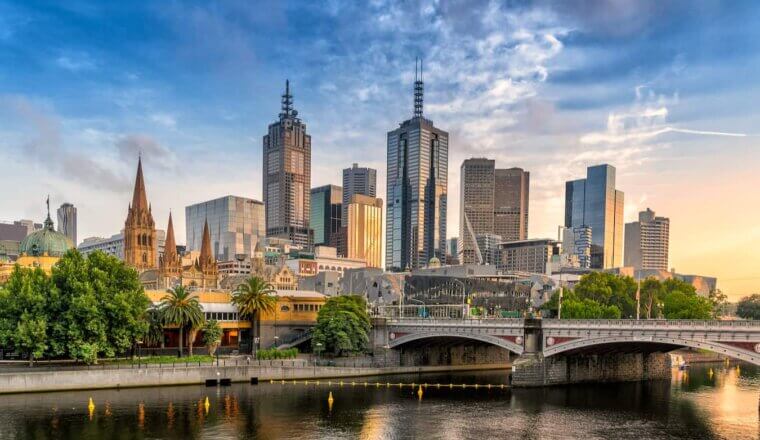
Where to Stay in Melbourne: The Best Neighborhoods for Your Visit
Get my best stuff sent straight to you, pin it on pinterest.
- Where To Stay
- Transportation
- Booking Resources
- Related Blogs
- International edition
- Australia edition
- Europe edition
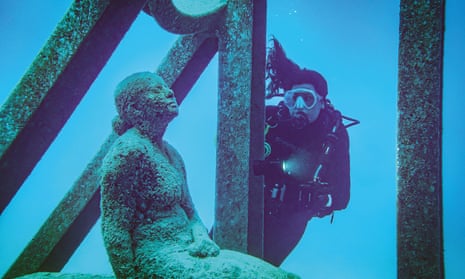
Australia’s 20 best travel experiences, ranked by Lonely Planet
Choosing Australia’s top travel experiences is not easy, and while many usual suspects appear in Lonely Planet’s list, some may even surprise locals
At 7.6m sq km, spanning eight climate and three time zones, Australia is a big country. So where do you start?
In making their new book, Lonely Planet’s Ultimate Australia Travel List, the travel guide publisher began by compiling every highlight in their existing books. “We then asked our writers, editors, designers and cartographers in Australia to reveal their favourite spots and experiences,” they say. From there, they solicited votes from a panel of travel experts and members of their community.
The result, “with hundreds of votes cast and a bit of mathematical alchemy, as well as a keen eye on sustainability practices”, is a new book of 500 experiences. They also ended up with “one very clear winner”.
Here is that winner, along with the rest of the book’s Top 20 experiences.
1. Fall silent before the majesty and gravitas of Uluru
Northern Territory/ Anangu Country
The landscape of Uluru changes dramatically with the shifting light and seasons. In the afternoon, Uluru appears as an ochre-brown colour, scored and pitted by dark shadows.
As the sun sets, it illuminates the rock in burnished orange, then a series of deeper and darker reds before it fades into charcoal. A performance in reverse, with marginally fewer spectators, is given at dawn.

Uluru is a beautiful, charismatic place. Its dimensions are one thing: it is 3.6km long and rises 348m from the surrounding sands (867m above sea level). If that’s not sufficiently impressive, remember this: two-thirds of the rock lies beneath the sand.
Uluru is a monolith textured with layers of profound spirituality and timeless beauty, the epitome of desert stillness and, in the plays of light and shadow that dance across its surface, one of the richest shows in nature. The sunset viewing areas are once-in-a-lifetime experiences understanding its singular beauty when surrounded by the vast desert around it.
You can also get up close by taking one of the walks that encircle the base. There are many options, but most fold into the Uluru Base walk, a 10.6km circumnavigation of the rock. Along the way, it passes caves, paintings, sandstone folds and geological abrasions and generally initiates you into the scope and detail of this remarkable place.
Sacred sites are everywhere; entry to and knowledge of the particular significance of these areas is restricted by local law, and knowing this only adds to Uluru’s mystery.
The walk takes you away from the crowds – very few visitors spend long enough here to get to know Uluru this well. There is no better way to experience the rock.
Around 1km from the rock itself, the Uluru-Kata Tjuta Cultural Centre adds depth and perspective to your Uluru experience. Displays and exhibits focus on Tjukurpa (Aboriginal law, religion and custom) and on the natural and human history of the park. Park rangers can supply the informative visitor guide, leaflets and walking notes, as well as other park information.
2. Be confronted and inspired by art at the extraordinary Mona
Tasmania/ Palawa Country
Undeniably eccentric, the Museum of Old and New Art (almost universally known as Mona) has ushered Hobart on to the world’s cultural stage.

Opened in 2011, and housed in a Nonda Katsalidis-designed three-storey bunker burrowed into the Triassic sandstone of a peninsula jutting into the Derwent River, Mona is a showcase for founder and owner David Walsh’s remarkable collection of ancient, modern and contemporary art, which is loosely curated under the themes of sex and death.
All cultural roads lead to Mona in January (for Mona Fofa, or Mofo for short) and June (for Dark Mofo) for Tasmania’s largest contemporary music festival.
SEE IT! Mona is 12km north of Hobart’s city centre. The best way to get here is on the museum’s ferry, which departs from Brooke St Pier.
3. Be mesmerised by the Great Barrier Reef
Queensland/Aboriginal and Torres Strait Islander sea country
The Great Barrier Reef isn’t just the world’s largest living organism. Visible from outer space, it’s also one of the planet’s most precious ecosystems – and a gobsmackingly beautiful one to boot.
Home to more than 600 hard and soft coral species and a colourful array of other marine creatures, from tiny nudibranchs (sea slugs) to huge manta rays, this World Heritage-listed area also has cultural significance to more than 70 local Indigenous groups, their connections to the reef dating back some 60,000 years.
It’s no secret, of course, that the Great Barrier Reef faces a number of threats. Yet from coral planting dive trips to Indigenous-led reef tours, there are more opportunities than ever to experience this fragile ecosystem sustainably, helping to ensure that this incredible slice of nature can be enjoyed for generations of visitors to come.
4. Find freedom on the Great Ocean Road
Victoria/ Gadubanud and Girai wurrung Country
As its name rightfully declares, the Great Ocean Road is no ordinary stretch of bitumen. This is one of the world’s bucket-list drives, a 243km blockbuster of breathtaking coastal vistas, koala-speckled gums, nostalgic holiday towns and rolling dairy farms. Officially bookended by Torquay and Allansford, the route takes in the arresting beauty of Port Campbell national park.
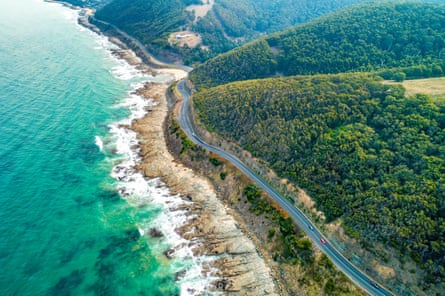
The entire drive can be tackled as a long day trip from Melbourne, though it pays to stay longer. Spend at least a few days riding waves and horses on Fairhaven Beach, chomping on fresh crayfish at Apollo Bay Fishermen’s Co-op and snooping around time-warped sites like Cape Otway Lightstation.
The Great Ocean Road weaves through Great Otway national park, where walking trails lead through temperate rainforest splashed by waterfalls. If you fancy a multi-day trek, ditch the wheels altogether and hit the 104km Great Ocean walk, the most intimate way to experience this fabled stretch of surf.
5. Walk alongside Australia’s highest sea cliffs on the Three Capes track
Tasmania/Palawa Country
Any list of epic Australian bushwalks is bound to contain the Three Capes track. Traversing a well-maintained path alongside the lofty sea cliffs in Tasman national park, this four-day, 48km trek kicks off after walkers are dropped by boat at the Denmans Cove trailhead.
The route links the cove with Cape Raoul, Cape Pillar and Cape Hauy before finishing on the sandy shores of Fortescue Bay. Scenery includes eucalypt forests, coastal heathland and ocean views for as far as the eye can see.
Accommodation is in ranger-supervised camps with architect-designed huts that are almost as good looking as the eye-popping coastal scenery.
You’ll walk up the slopes of Crescent Mountain and Mt Fortescue and down to Ellarwey Valley, seeing native flora and fauna aplenty. Daredevils can scale the well-named Blade Rock formation at Cape Pillar and plunge into the icy surf at Fortescue Bay. The track is described as being achievable for most ages and abilities, but some bushwalking experience is recommended.
WALK IT! Tasman national park is 100km south-east of Hobart. Boats collect walkers at Port Arthur. Daily walker numbers are capped, so book well ahead .
6. Explore the weird and wonderful rock formations of Bungle Bungles
Western Australia/ Jaru And Gidja Country The bizarre, ancient, beehive domes of the World Heritage-listed Purnululu national park will take your breath away. Known colloquially as the Bungle Bungles, these remote rocky ranges are the finest example of cone karst sandstone anywhere in the world.
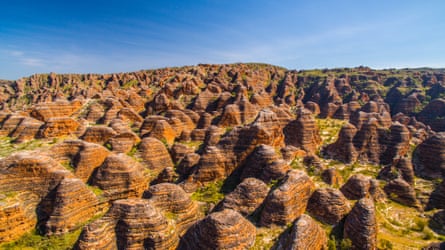
The distinctive rounded rock towers are made of sandstone and conglomerates moulded by rainfall over millions of years. To the local Gidja people, “purnululu” means sandstone, with Bungle Bungle possibly a corruption of “bundle bundle”, a common grass. The park is rich in fauna and flora, the walks take you through shady palm-fringed gorges, and the sunsets here are sublime. There’s refreshingly little infrastructure and it’s never crowded.
SEE IT! Access is via a rough, unsealed, flood-prone 4WD-only track from the Great Northern Hwy north of Halls Creek, or by air on a package tour from Kununurra or Warmun. For more information, visit www.parkstay.dpaw.wa.gov.au .
7. Enjoy the ultimate rainforest experience in Daintree national park
Queensland/Kuku Yalanji Country
The oldest tropical rainforest on the planet, the World Heritage-listed Daintree Rainforest is like a real life Jurassic Park, complete with living dinosaurs, from cassowaries to crocs.
South of the Daintree River, the Indigenous-run Mossman Gorge is the most accessible of the park’s two sections. Here an elevated boardwalk tracing the crystal-clear Mossman River connects to a scenic 2.4km rainforest circuit. Learn more about the Kuku Yalanji connections to this verdant oasis on a tour with Ngadiku Dreamtime Walks.
Some say you haven’t been to the Daintree until you’ve visited the Cape Tribulation section of the park north of the Daintree River, where rainforest meets the Great Barrier Reef. Allow several days to soak up this lush wilderness, dotted with rainforest boardwalks and idyllic croc-free swimming holes.
SEE IT! From Port Douglas it’s a 20-minute drive west to Mossman Gorge, and a 40-minute drive to the Daintree River Ferry.
8. Set sail for Kangaroo Island’s wilderness and wildlife
South Australia/Kartan Country
Kangaroo Island (KI) was scorched by bushfires in Australia’s “Black Summer” of 2019–20, but remains a veritable zoo of seals, birds, dolphins, echidnas and (of course) kangaroos. Island produce (wine, seafood, gin, beer), surf beaches and the kooky rock formations of Flinders Chase national park are also highlights.

These days, KI is rurally paced with a scattering of laid-back towns – the kind of place where kids ride bikes to school and farmers advertise for wives on noticeboards. The excellent five-day, 64km coastal Kangaroo Island Wilderness trail was ravaged by the fires, but trail reconstruction is under way: watch this space.
SEE IT! KI is big! You can’t see it all in a day. Bring your car on the ferry and explore over a weekend.
9. Marvel at the Milky Way in the Warrumbungle Dark Sky Park
New South Wales/Kamilaroi Country The night sky unrolls around you each night in the Warrumbungle national park, Australia’s first and only Dark Sky Park. The 233 sq km park has been internationally recognised for its stunning views of the stars due to its high altitude, low humidity and carefully monitored light pollution.

With four observatories to choose from, you can stargaze well into the night. Siding Springs Observatory is home to the largest optical telescope in Australia – with a mirror measuring 3.9m, the Anglo Australia telescope is capable of viewing quasars up to 12bn light years away.
The Warrumbungles still have plenty to offer once the sun rises. Avid bushwalkers are sure to enjoy the rugged volcanic landscape. The Breadknife and Grand High Tops walk will bring you close to the park’s most impressive formations. With over 190 bird species recorded within the park, birdwatchers should be sure to look out for emus, wedge-tailed eagles and the southern boobook owl.
For a more relaxing option, take a trip along the world’s largest Virtual Solar System Drive. The dome of the Siding Springs Observatory represents the sun, with scaled model planets stretching the whole 200km to Dubbo.
10. Light up your time in Sydney at the Vivid festival
New South Wales/Gadigal Country
During Vivid Sydney, video art and massive images are projected on to Sydney’s iconic architecture, with the sails of the Opera House, the arches of the Harbour Bridge and the sandstone buildings of the Rocks all transformed into leviathan canvases for a shimmering collage of spotlights, laser beams and electrified sky-high street art.
Journey on the harbour at night on the Manly Ferry for brilliant views, or join a chartered boat trip to take in the best of the glowing spectacle. Beyond the illuminations, music is also a stunning part of the Vivid experience, from big international artists to more intimate performances from the best of Australia’s emerging talent.
SEE IT ! The festival is held annually for three weeks. The 2022 festival will take place from 27 May to 18 June.
11. Go wild on mainland Australia’s southernmost point, Wilsons Prom
Victoria/Brataualung Country
Hitting rock bottom is a good thing when it involves Wilsons Promontory. Occupying the southernmost point of mainland Australia, the 305 sq km national park claims some of Victoria’s most varied, magnificent natural landscapes: salt-white Squeaky Beach, the Saharan dunes of the Big Drift, the lushness of Lilly Pilly Gully.

Walking tracks lead over ridges, across heathland and through headily scented bush alive with kangaroos, wombats, echidnas and iridescent birdlife. The Telegraph Saddle to Sealers Cove route (10.3km) is especially memorable, weaving through fern gullies and swampland to a forest-backed beach. It’s the first section of the challenging, multi-day Southern Circuit (59km), whose stops also include the monumental Oberon Bay.
A much quicker way to admire the bay’s sweep is from panoramic Mt Oberon, an easy 6.8km return hike from the Telegraph Saddle car park. Head up at sunset and pinch yourself. SEE IT! Tidal River is the park’s hub, with visitor information, a general store and accommodation. Avoid school holiday periods and book accommodation in advance at www.parks.vic.gov.au .
12. Experience wildlife and Indigenous history in Kakadu
Northern Territory/ Bininj/Mungguy Country
Kakadu ranks among the world’s great national parks. Its wetlands and escarpments shelter abundant wildlife and rock art that dates back 20,000 years. This is the land of the Bininj/Mungguy, whose presence brings soul and spirituality to any visit here.
In just a few days you can cruise on billabongs bursting with wildlife, examine millennia-old rock paintings under the care of an Indigenous guide, swim in pools at the foot of tumbling waterfalls and hike through ancient sandstone escarpment country. Ubirr and Nourlangie are the main rock-art sites, Jim Jim has the best falls, Cahill’s Crossing is terrific for crocs, and Yellow Water (Ngurrungurrudjba) is great for birds and other wildlife. Kakadu is very popular and can become crowded – in the Dry at least. But this is a vast park, and with a little adventurous spirit you can easily get off the beaten track and be alone with nature.
13. Be wowed by white sands and crystalline water at Wineglass Bay
The show-stealing centrepiece of Freycinet national park, curvaceous Wineglass Bay is Tasmania’s most famous beach for good reason. Its blindingly white sand and pink granite headlands splashed with flaming orange lichen are almost ludicrously photogenic, and a walk along its length to Hazards Beach is almost as rewarding as a swim in its gin-clear water.

Views of the bay are best appreciated from the Wineglass Bay Lookout, a 90 minute walk from the national park’s walking track car park. From here, 1,000 steps lead down to the beach. Those who choose to stay longer and walk further can set off on the Freycinet Peninsula Circuit, a three-day, 30km trek around the peninsula from Hazards Beach south to Cooks Beach, then across the peninsula over a heathland plateau before descending to Wineglass Bay.
SEE IT! Wineglass Bay is 200km north-east of Hobart, via the Tasman Hwy (A3) and C302.
14. Hit the Grampians for an epic hike in Victoria’s Garden of Eden
Victoria/ Jardwadjali and Djab wurrung Country
Hitchcock couldn’t have directed it better himself. A long, eerie crevasse; a sharp left turn, then – BAM! – Pinnacles Lookout and its knockout vista over ranges and plains.
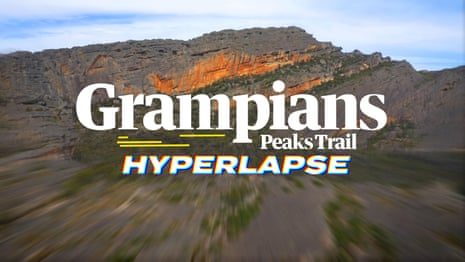
Gotcha moments are thick on the ground when hiking Grampians national park, its sandstone peaks rising like petrified gods. While there are plenty of short strolls – the 4km Mt William (Duwul) Summit walk is breathtaking – the Grampians Peaks trail is the ultimate lace-up adventure.
A 160km long, 13-day odyssey, it spans the entire length of the Grampians (Gariwerd), from Mt Zero (Mura Mura) in the north to the culinary hamlet of Dunkeld in the south. Along it, precious landscapes unfurl, from woodlands and waterfalls to cooling fern valleys. Harboured within: red-tailed black cockatoos, endangered pincushion lilies and the haunting handprints and figures of Aboriginal rock art shelters like Ngamadjidj and Gulgurn Manja.
HIKE IT! See www.grampianspeakstrail.com.au for trail information. Foodies should book a night at Dunkeld’s Royal Mail Hotel.
15. Elevate your Sydney experience on the Bondi to Coogee clifftop walk
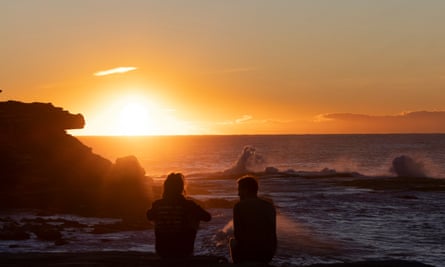
Say good morning to the perfect way to take in the best of Sydney’s coastal scenery. The simply sensational 6km Bondi to Coogee walk leads south from Bondi Beach along the clifftops via Tamarama, Bronte and Clovelly, interweaving panoramic views, patrolled beaches, sea baths, waterside parks and plaques recounting local Aboriginal stories. Pack your swimmers if the weather’s warm.
WALK IT! The trail begins at the southern end of Notts Ave near Bondi’s Hunter Park, and completes its view-friendly route near Dunningham Reserve at the northern end of Coogee.
16. Immerse yourself in the remarkable desert rocks of Kata Tjuta
There’s nowhere on earth quite like Kata Tjuta (formerly the Olgas), a striking group of domed rocks huddled together about 35km west of Uluru. The deep valleys and steep-sided gorges contain sites which are sacred to the local Anangu people.
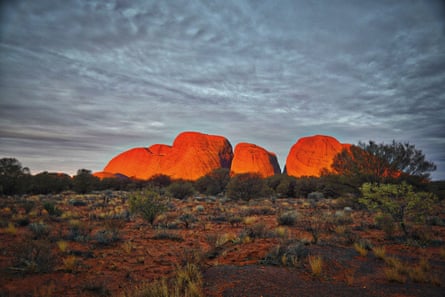
The tallest rock, Mt Olga (546m; 1,066m above sea level) is higher than Uluru. The Valley of the Winds loop, one of the most rewarding bushwalks in Australia’s Red Centre, winds through the gorges and past surreal domes in hues of the deepest red offset by the blue of the desert sky. Elsewhere, Walpa Gorge is especially beautiful in the afternoon, when sunlight floods the gorge. The views from the Sand Dune Lookout, off the road to Uluru, put everything in perspective.
17. Revere Port Campbell national park’s Apostles
Victoria/Girai wurrung Country
You couldn’t ask for a grander finale to the Great Ocean Road. As it shakes off the tortuousness of the Otway Ranges, forest turns to weather-beaten scrub, the sky bursts open and the route shoots west along a flat, narrow escarpment dropping away to terrifying ocean-pounded cliffs. This is Port Campbell national park, home to Victoria’s geological superstars, the Twelve Apostles.
Out of cold, savage waters they rise – monumental limestone stacks, abandoned by the retreating coastline. In truth, there are fewer than 12, but this fails to diminish their impact.
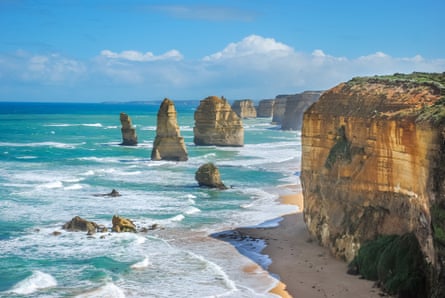
Less famous but no less spectacular are the Bay of Islands and London Bridge rock stacks, just west of sleepy Port Campbell township. Once a double-arched rock platform, London Bridge indeed fell down in 1990, leaving two terrified tourists marooned on the world’s newest island – they were eventually rescued by helicopter.
To the east of the Apostles, Loch Ard Gorge is where the Shipwreck Coast’s most famous and haunting tale unfolded, when two young survivors of the wrecked iron clipper Loch Ard made it to shore. From the clifftop, a path leads down to the cave where the pair took shelter.
The best time to visit is at sunset, not only for the optimal Instagram opportunities (and to beat the tour buses), but also to catch a glimpse of little penguins returning. Sightings vary, but generally the penguins arrive 30 minutes after sunset; don’t forget your binoculars!
18. Reconcile the laid-back splendour of Rottnest Island with its gruesome past
Western Australia/ Noongar Country
With warm water, sunken wrecks, diverse marine life and 63 beaches, it’s little wonder people flock to “Rotto” to swim, fish, laze, dive, snorkel, surf and sea-kayak their cares away. And of course, no trip to Rottnest is complete without the obligatory selfie with the incredibly cute, furry and all-too-trusting quokka.
Highlights include “The Basin”, a family- friendly seawater pool, and the 20m Wadjemup Lighthouse on the island’s highpoint. Wadjemup is a Noongar word meaning “place across the water where the spirits are” – rather apt, given at least 373 unmarked graves hold the victims of a harsh and cruel prison for Aboriginal people operating during the 1800s.
19. Catch the Manly Ferry across one of the world’s greatest harbours
New South Wales/Guringai Country
The Manly Ferry is one of Sydney’s best bargains for visitors to the city. Take in Opera House and Harbour Bridge views before sliding past the ritzy suburbs of Point Piper and Rose Bay and exiting the rocky promontories of the Sydney Heads.

Opposite Manly Wharf, refresh with a beer at the 4 Pines brewpub before strolling along the Corso to the surf, sand and Norfolk pine-lined esplanade of Sydney’s second-most famous beach. Pretty good for around $10.
CRUISE IT! The Manly Ferry departs from Wharf 3 at Circular Quay and takes around 20 minutes.
20. Dive into Queensland’s Museum of Underwater Art
Queensland/Bindal and Wulgurukaba Sea Country
As if the Great Barrier Reef wasn’t epic enough, you can now explore an underwater sculpture garden. The second instalment of the Townsville region’s Museum of Underwater Art, the Coral Greenhouse features 20 human figures performing conservation work in and around a submerged conservatory.
Designed by the renowned sculptor, Jason deCaires Taylor, in collaboration with Indigenous groups, the installation complements the Ocean SirTen sculpture.
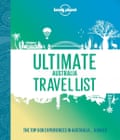
DIVE IT! Dive tours to the Coral Greenhouse run from Townsville and Magnetic Island.
This is an edited extract from Lonely Planet’s Ultimate Australia Travel List , $39.99. Available now.
- Australia holidays
- Australian lifestyle
- Queensland holidays
- South Australia holidays
- Victoria holidays
- Western Australia holidays
Comments (…)
Most viewed.

Ultimate AUSTRALIA Travel Guide
Australia is the World’s largest island and the smallest, flattest continent on Earth. It is located in the southern hemisphere just west of the international dateline. Our Australia Travel Guide is here to help take the guesswork out of planning your itinerary.
Officially part of Oceania , Australia is a diverse nation with stunning coastlines, more beaches than you could hope for, a desolate bush in the center and everything else in between.
We spent 8 weeks seeing Australia while we drove from Melbourne to Cairns , worked at a warmblood horse farm in Victoria and explored the humid city of Darwin.
The funny part, we had only planned to stay for 4 weeks. Australia sucks you in with the headline sights and keeps you wanting more with its diversity.
Destinations
Australia travel: quick tips, don’t visit australia without:.
GET A GUIDEBOOK

REUSABLE WATER BOTTLE

AUSTRALIA BUCKET LIST
Drive the great ocean road.
Heading west along the coast from Melbourne is one of Australia’s best drives, the Great Ocean Road . You’ll uncover the surfer culture, see plenty of wildlife and stare in wonder at places like the Twelve Apostles. Be sure to give it at least 2 nights.
DIVE THE GREAT BARRIER REEF
Heading underwater to explore the world’s largest barrier reef is almost a rite of passage when exploring Australia! The reef is accessible from Airlie Beach all the way up to Cairns and it’s possible to book diving trips for all levels.
BUSH CAMP ON FRASER ISLAND
While controlled camping is possible on Fraser Island, the best way to experience the island is by bush camping . Done with a permitted company, this will see you camping out in the wilds. It’s a refreshing adventure.
MORE THINGS TO TRY IN AUSTRALIA
There is no shortage of great things to do in Australia during your visit and the biggest problem you’ll face is fitting them all into your itinerary.
Each region has its own offering and unique things to check out during a visit, so be sure to look at our island guides once you decide where you’re itinerary will take you.
You could also consider a visit to Tasmania during your time in Australia, too. Right at the southern tip of Australia, the colder climes of Tasmania are perfect for anyone looking to travel to Australia and get off the beaten track. Take the ferry across from the mainland, or fly into Hobart – either way, you’ll quickly be immersed in the dramatic coastal scenery and wilderness of the interior. Visit the lakes of Cradle Mountain, hike to the top of Mount Wellington, explore the history and heritage of Port Arthur, and enjoy the cool weather and breezy atmosphere!
Plan your trip like a seasoned pro!
Popular regions in australia, new south wales.
New South Wales is the starting point for many first-time visitors who travel to Australia. This is where you’ll find Sydney , one of Australia’s most iconic destinations, as well as the stunning Blue Mountains and famous beaches such as Manly and Bondi. New South Wales is more than Sydney, though: you can road trip south to Jervis Bay , head north to Newcastle, Port Macquarie, and all the way to Byron Bay . Or you could head inland to the Australian Capital Territory and Canberra, or the tall peaks of Kosciuszko National Park.
Victoria is best known for its capital city, Melbourne , where you’ll find Australia’s quirkiest cafes, best coffee, and most intriguing galleries and museums. If you’re looking for culture when you travel, this is the destination for you. There’s more to see in Victoria though: you can road trip along the epic Great Ocean Road , see the penguins at Phillip Island, or hike through the wilderness of Wilsons Promontory.
Head north from New South Wales, and you can explore the tropical coastline of Queensland as part of your Australia travel itinerary. Start by relaxing on the Gold Coast beaches, where golden sands meet the city skyline spectacularly. Continue to Brisbane, one of the best cities in Australia. Here, you’ll find great bars and restaurants along the Southbank, the excellent Museum of Queensland, Lone Pine Koala Sanctuary, and much more. Keep heading north, and you’ll be able to visit the white sands of Fraser Island , the beautiful sandy islands of the Whitsundays, the Great Barrier Reef at Cairns, and the ancient Daintree Rainforest .
SOUTH AUSTRALIA
South Australia is home to both beautiful beaches and remote Outback scenery. It’s a great place to road trip and start a journey either east to Melbourne or north to Uluru. Adelaide is South Australia’s laidback and understated capital, home to wonderful botanical gardens and some interesting cultural museums and galleries. The Flinders Chase National Park has beautiful hiking opportunities, while the dusty, underground hotels and pubs of Coober Pedy are like nowhere else in the world.
NORTHERN TERRITORY
The Northern Territory is where you can find the iconic natural site of Uluru and the endless deserts of the Red Centre. This is the real Outback territory. Head to the far north, and you’ll discover a relatively understated part of the country in the tropical surrounds of Darwin . Visit the steaming hot jungles of Kakadu National Park, explore incredible canyons, see crashing waterfalls, and watch out for crocs in the rivers in this great addition to your Australia travel itinerary. If you seek adventure, you’ll want to head to NT.
WESTERN AUSTRALIA
Head west to explore the remote reaches of Western Australia. Start in Perth, the most remote capital city in the world, before heading south to the colorful wine region of Margaret River and the beaches and coastal scenery of Albany and Esperance. Or you could head north, traveling along the long coastal road to stop off at the Ningaloo Reef, where you might spot Whale Sharks, head inland to the gorges of Karijini National Park, and explore the sheer beauty of Broome and the Kimberleys.
AUSTRALIA TRAVEL BUDGET
Setting a budget for travel to Australia is highly dependent on your travel style. It is possible to visit just about anywhere in Australia on any budget and still have a great trip. That said, you can make your trip as basic or as luxurious as you desire.
To help you set your budget, we’ve included some base range price estimations for travel within Australia. Of course, keep in mind that prices can fluctuate based on seasons, availability and festivals.
ACCOMMODATION: Hostels will cost between AUD 20 and AUD 30 per night, although long-term backpackers can often organize deals on longer stays. Hotels will cost upwards of AUD 100 per night. Many travelers choose to rent a car and camp , which can lower accommodation costs dramatically.
FOOD: Eating out isn’t cheap in Australia. Even a meal in a pub or cafe will likely set you back at least AUD 20 per person, more if it’s an upmarket restaurant. You can stay in self-catering accommodation or cook on the beach barbecues to save on costs if road tripping.
TRANSPORTATION: Because of the vast distances between major destinations, you’ll need to plan your transport carefully as part of your Australia travel itinerary. The cheapest way to travel between cities is usually by flying budget airlines. Bus and train links exist on the east coast, and sporadically on the west, but are limited and costly. Many travelers prefer to arrange a car or campervan hire, which can be found for as little as AUD 50 per day.
ACTIVITIES: Activity costs vary – from free hiking in national parks and days spent lounging at the beach to expensive paid activities at famous destinations. Scuba diving will cost AUD 100 per dive, while a boat trip out to the Great Barrier Reef will cost a minimum of AUD 100 for the day from Cairns. A day tour of Fraser Island will cost AUD 150, while the Sydney Harbour Bridge Climb is a similar price.
75 AUD PER DAY
Staying in hostels, camping, and carpooling to get around, while mostly living off groceries from the supermarket. Make this AUD 100 to throw in the odd private room or day tour.
200 AUD PER DAY
Midrange travelers looking to stay in private accommodation, eat out regularly, and enjoy plenty of day tours will need to budget at least AUD 200 per day.
500 AUD + PER DAY
Travelers looking to enjoy the best restaurants, private tours, and upscale private hotels fit here. For this standard of vacation, you can expect to spend at least AUD 500 per day
WHERE TO STAY IN AUSTRALIA
Below you will find some of the places we have stayed during our travels in Australia. These are individual properties that we enjoyed and would recommend to other travelers.
HOW TO GET AROUND IN AUSTRALIA
Australia is a massive country so you definitely need to heed the warnings behind planned drive times and distances between cities. You’ll want to er on the side of a conservative plan unless you can be flexible and have unlimited time to explore.
The best ways to get around are by plane or car. If you can’t drive, you can often meet other travelers in hostels or online and pitch in for gasoline, or you could join an organized tour.
FLIGHTS: The quickest way to get around if you’re short on time is to fly between cities and rent a vehicle when you arrive at your destination. Most of Australia and Tasmania is well connected with flights.
BUS: Australia has an extensive Greyhound bus system that operates up the East Coast for travelers. If you don’t want to drive, this is a great option for getting around to the most popular areas of the country.
CAR RENTAL: If you have more time, the best way to experience Australia is to road trip. Rent a car or campervan and explore the many excellent road trip routes on the east and west coasts or down the middle! Check out Discover Rental Cars for great deals.
TRAIN: While there are a couple of popular and quite famous train routes in Australia, this is not a good way to rely on getting around. Connectivity between cities is limited and you’ll find that most train options are of the luxury variety.
TOP AUSTRALIA TOURS
Best of australia.
14 Days Cairns to Sydney Visits: Airlie Beach, Whitsundays, Brisbane, Byron Bay & Blue Mtns
MELBOURNE, OUTBACK & ULURU
12 Days Melbourne to Uluru Visits: Mornington, Port Campbell, Adelaide, Grampians & Uluru
EXPLORE AUSTRALIA-NAT GEO
12 Days Sydney to Melbourne Visits: Sydney, Cairns, Port Douglas, Uluru & Melbourne
WHEN TO VISIT AUSTRALIA
When you travel to Australia, don’t forget how vast this country is. Each region (and not just state) has its own climate, and some places are better to travel to at different times of the year.
Generally speaking, the further north you travel, the hotter and more humid it gets . Queensland and the north of WA have a tropical climate; you’ll want to visit in the dry season, between March and October.
Tasmania, Melbourne, Sydney, and Adelaide have a cooler climate and are best visited in summer when it’s hot!
ONE OF THE BEST PLACES TO SEE KANGAROOS!
Safety in australia.
Australia is a very safe country to visit in terms of crime; however, tourists need to be aware of the hazards that the harsh Australian climate might pose during their trip.
When planning an Australian travel itinerary, beware of the vast distances involved if you’re driving. Drivers also need to be aware of the dangers posed by animals, such as kangaroos bounding across the road.
Wildfires are common, particularly in summer, in rural areas. In tropical regions in the north, roads can quickly flood during storms and cyclones.
Travelers also need to be careful of poisonous snakes and spiders (although these rarely cause harm) as well as jellyfish and crocodiles in certain parts of the country (again, usually only a problem in the tropical north!).
Being informed and prepared is the best way to stay safe while traveling. Be sure to check out our safety tips & advice from more than 20 years of world travel.
AUSTRALIA TRAVEL: BOOKING RESOURCES
Australia travel guide: related articles.
Looking for more info? Check out all the articles we’ve written on travel to Australia and start planning your dream trip.
25 Top Things to Do in Australia (On Your First Visit!)
Ultimate east coast australia itinerary: best stops from melbourne to cairns, ultimate brisbane to cairns road trip itinerary, ultimate sydney to brisbane road trip itinerary, what to do in melbourne (30 melbourne attractions you cannot miss), ultimate sydney itinerary for 2 to 5 days, 15 things to do in jervis bay, australia, 15 unmissable things to do in airlie beach, ultimate sydney to melbourne road trip itinerary, 10 cool things to do in byron bay, 15 best things to do at the blue mountains national park in australia, daintree national park: best things to do & planning guide, is cape tribulation worth a visit, 11 best things to do in darwin, australia, are the atherton tablelands in queensland worth a visit, 28 great things to do in queensland, australia, 10 exciting things to do in cairns, 10 spectacular things to do on fraser island, 8 best stops on the great ocean road drive, backpacking in australia: 8 week recap & travel tips, getting goon ‘d in australia, should i rent a jucy campervan in australia, scuba diving on the great barrier reef: facing my fears, bush camping on fraser island (beware of the dingoes), how to visit the kangaroos in pebbly beach nsw.


Australia Travel Guide
Looking for an in-depth Australia travel guide ?
Then you’re in the right place!
If you’re looking for an adventure, it’s high time you booked a trip to Australia.
From beautiful beaches to breathtaking deserts to astounding mountains to unique wildlife, Australia really does have it all. You’ll find so many true bucket list experiences in this country, whether you’re surfing Byron Bay, exploring the Great Barrier Reef in Queensland, or marveling at Uluru and taking in the desert culture in Alice Springs.
You’re sure to come home with tons of memories and plenty of photos to show your friends and family.
Australia is a huge country and packed with so many incredible things to see and do that it’s hard to get the full experience in one short trip. You’ll want to set aside a fair amount of time to explore this unique part of the world, and there are many easy ways to do just that!
If you have a fair amount of flexibility or just want to take a little life sabbatical and go exploring, look into a working holiday visa. This visa allows 18 to 30-year-olds from certain eligible countries to travel through Australia for up to 12 months while working specific jobs in sectors like Australian tourism, farming, and construction.
This is a great way to really get to know the country while making some money to fund your travels. Head to the Australian Department of Home Affairs website to learn more.
If a working holiday is a bit too much of a commitment, look into tour companies and travel agents that offer travel Australia packages or youth travel backpacking tours around the country. In many cases, these companies will also help with many of the logistics involved in traveling to Australia, from visas to transportation between destinations.
Once you’ve figured out how you’re going to travel around Australia, it’s time to figure out where you’re going to go! Australia’s famous cities like Sydney and Melbourne are of course worth visiting, but there are plenty of other gems to check out.
Australian Capital Territory, a small territory carved out of New South Wales that is home to the capital city of Canberra, has plenty to explore and makes for one of the best day trips from Sydney. Visit the ski slopes of the Australian Alps in the winter, take a tour of Parliament House, or float above the city in a hot air balloon.
Over in Western Australia, you’ll find the lively city of Perth, where you can sip local wine and snap a photo with an adorable quokka all in one day!
Want to visit some of the most beautiful beaches in the world? Head to the Gold Coast on Australia’s east coast where you’ll find bright blue waters, incredible surf, and laid-back vibes.
And if you’re looking for the road trip of a lifetime, consider a drive down the famous Great Ocean Road , a scenic highway in Southern Australia that’s hard to beat.
Keep reading to dive into resources that will help you with planning a trip to Australia in Oceania .
Note: This ultimate guide to Australia travel contains affiliate links to trusted partners!

Australia Map
Use this Australia travel map to begin planning your trip to this incredible country!
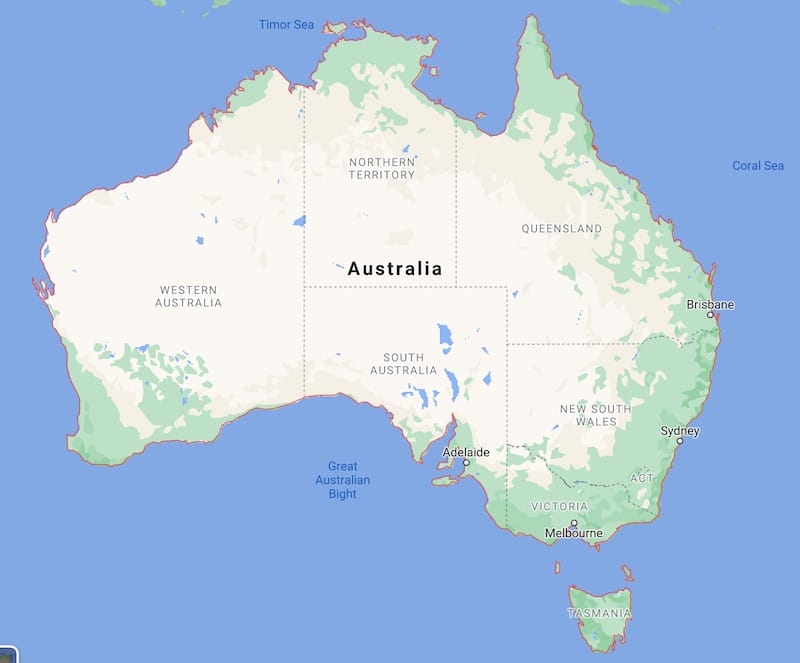
Click here for an interactive Google Map version of the above graphic.
Adventure & Hiking Holidays In Australia
Looking to have some active travel adventures in Australia? Don’t miss:
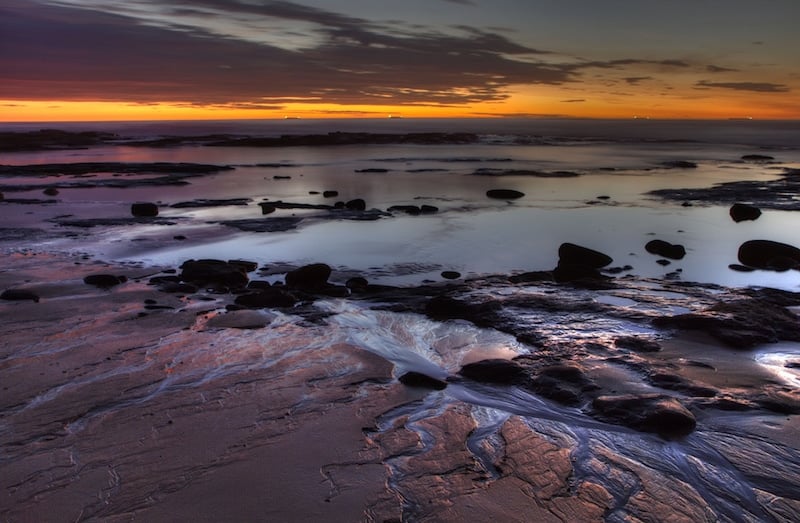
7 Reasons Wollongong Is The Perfect Destination For Adrenaline Junkies
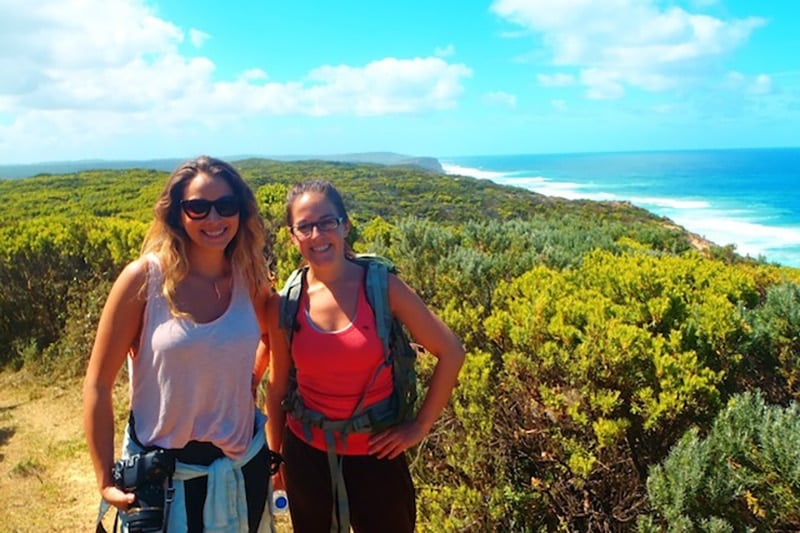
Moving Experiences: Hiking Safaris In Australia
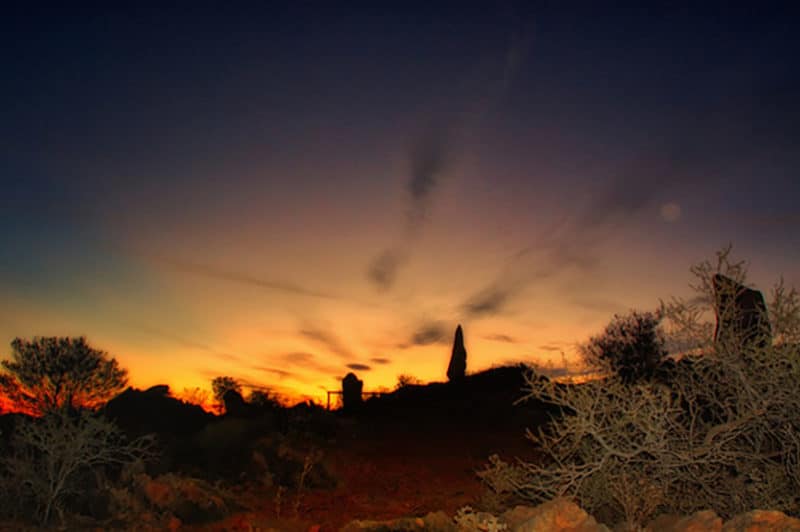
5 Of Australia’s Most Stunning Camping Destinations
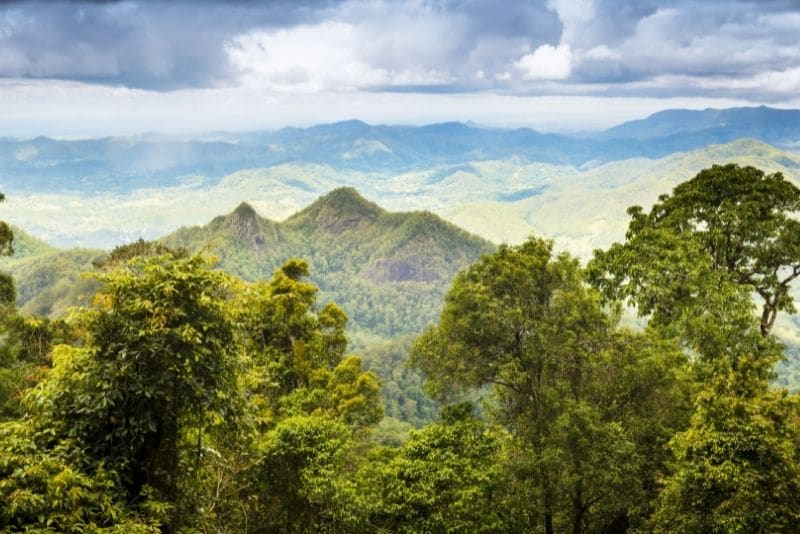
8 Best Hikes In Queensland You Shouldn’t Miss
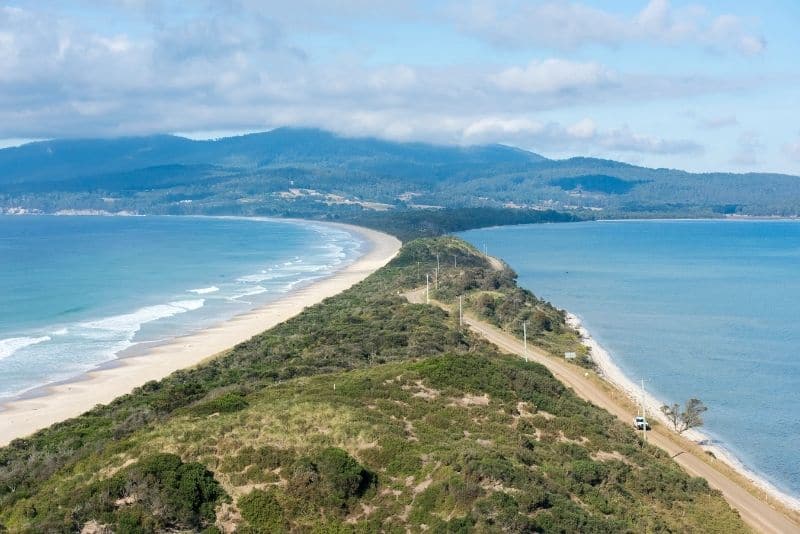
10 Amazing Bruny Island Hikes Not To Be Missed
Australia Road Trip Guide
Looking for the perfect Australia road trip itinerary? These posts can help!
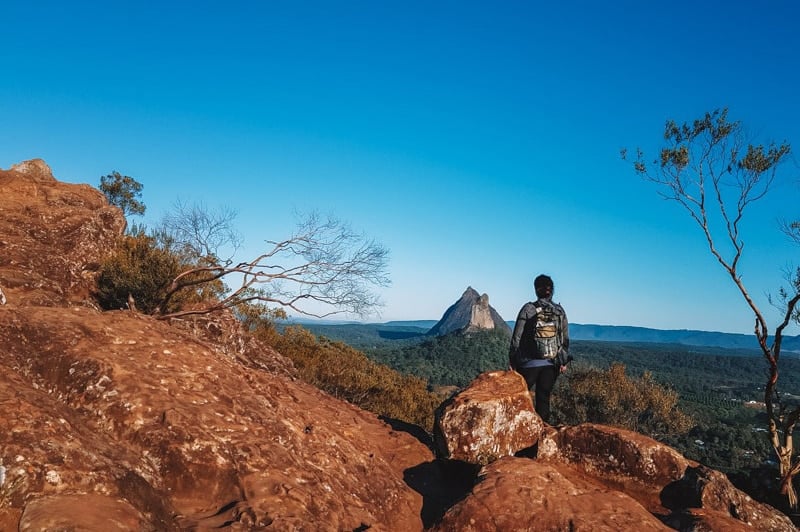
10-Day Brisbane To Cairns Road Trip Itinerary
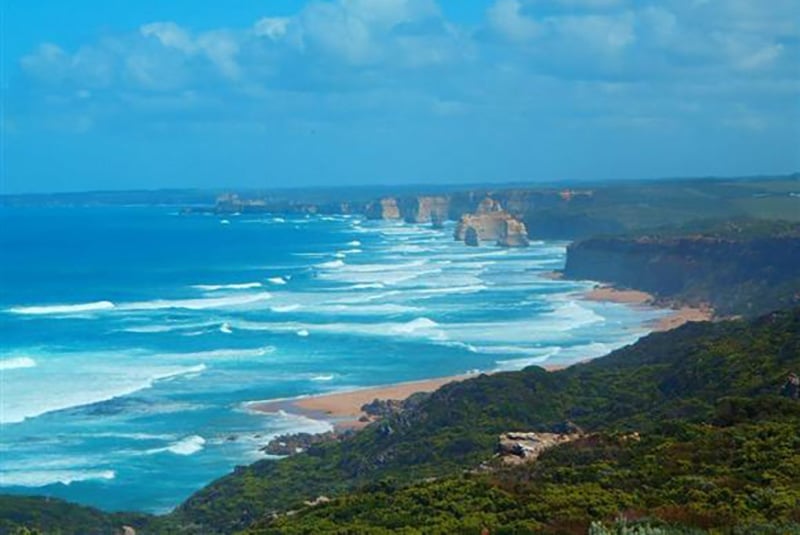
Road Trip From Through Australia: 10 Memorable Moments In Victoria
Australia Travel Tips
The following Australia travel advice can help you plan the perfect trip, whether you’re visiting to experience solo female travel or in a group!
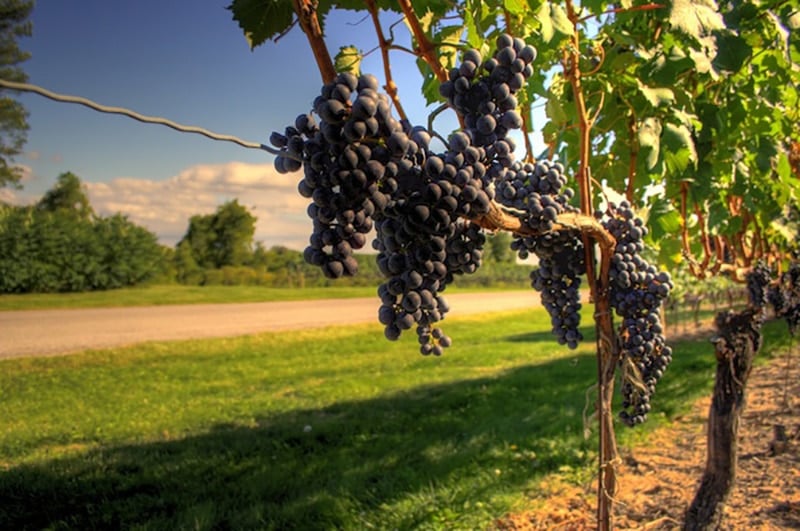
Travel Guide To Solo Travel In Australia
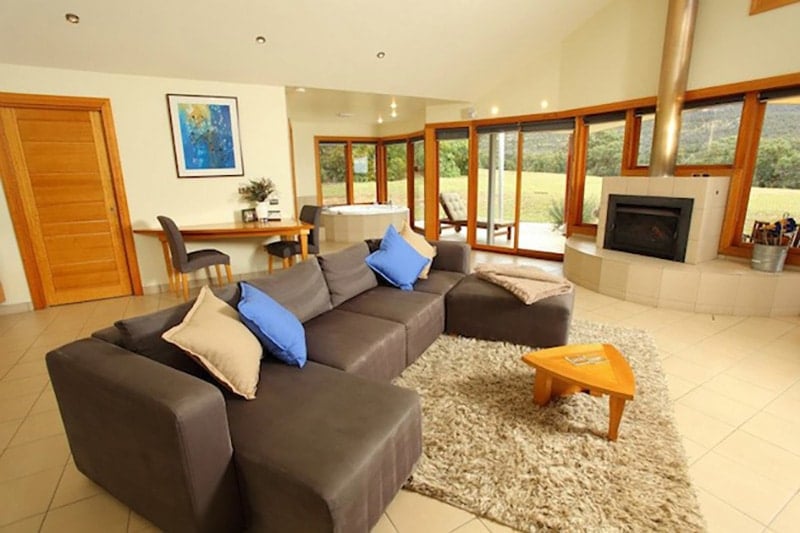
3 Must-Stay Eco-Lodges In Victoria, Australia
Barossa Valley Travel Guide
No Australia guide would be complete without mentioning the Barossa Valley and the many things to do there, like:
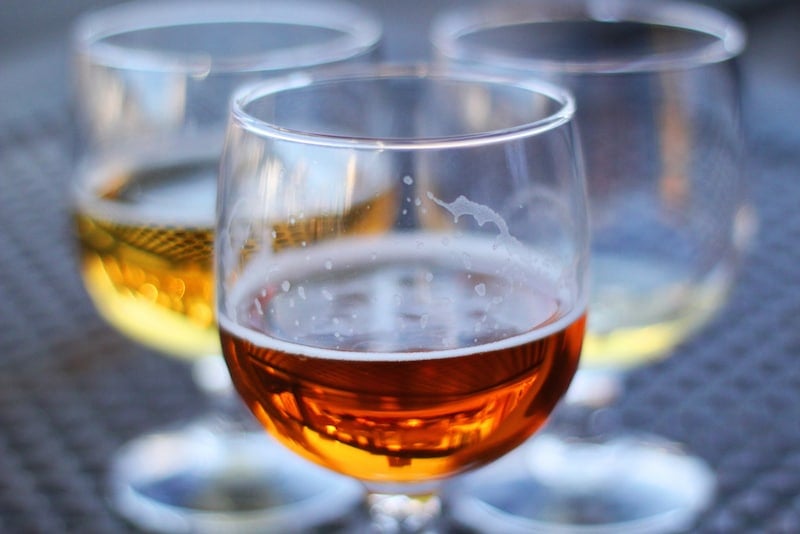
Australia Travel: 5 Things To Do In The Barossa Valley Besides Drink Wine
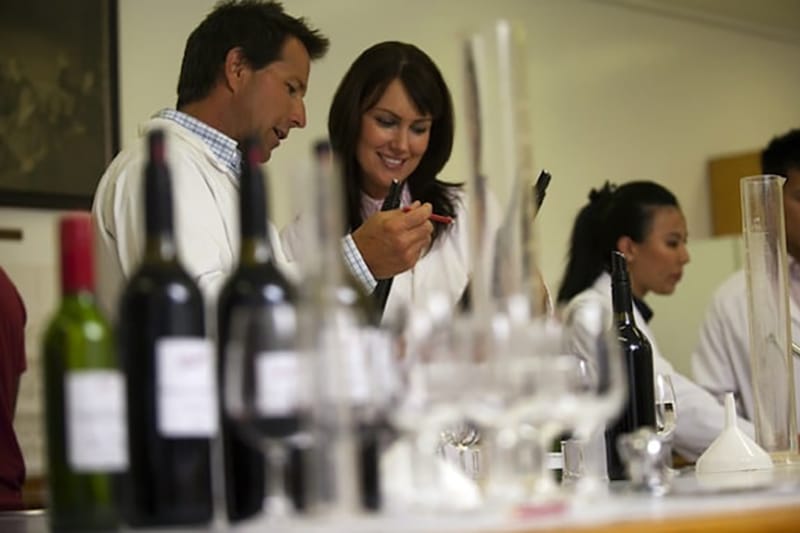
Making My Own Wine Blend In South Australia’s Barossa Valley
Melbourne Travel Guide
Looking for a Melbourne visitor’s guide that can help you plan the perfect trip? Check out:
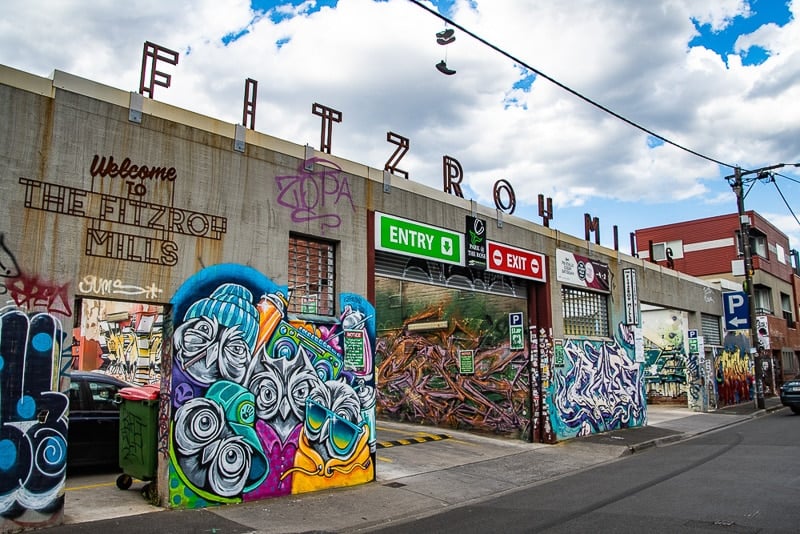
10 Melbourne Hidden Gems & Secret Places (From A Local Guide)
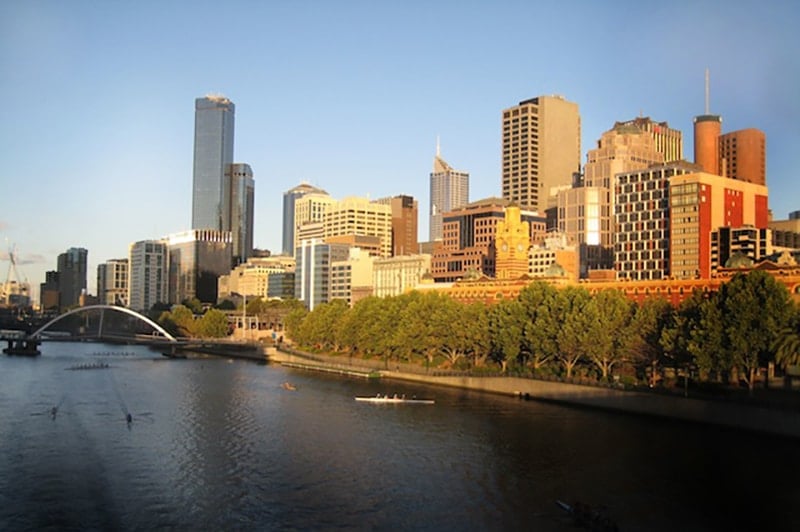
Budget Travel: Top Free Things To Do In Melbourne
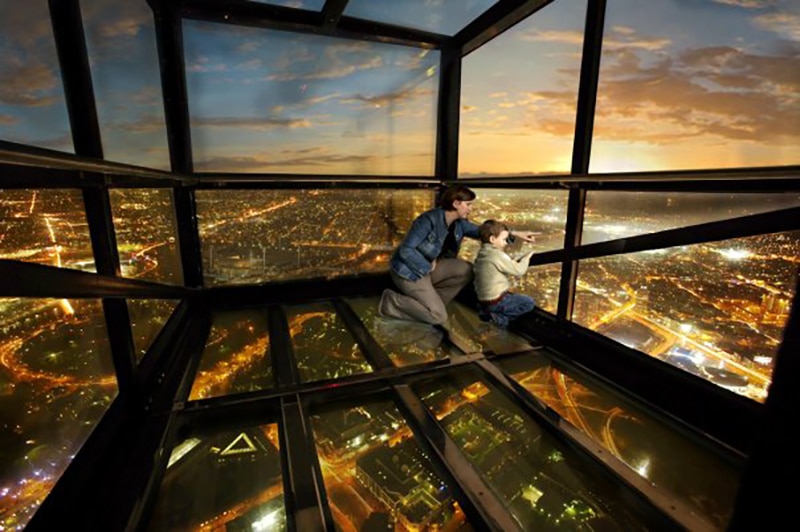
5 Ways To Get High In Melbourne, Australia
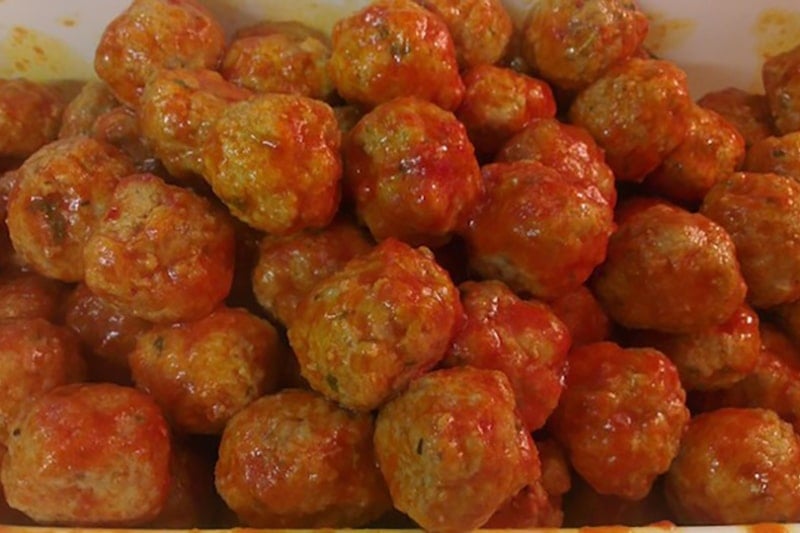
14 Quirky Things To Do In Melbourne, Australia
Sydney Travel Guide
Looking for a Sydney destination guide ? These Australia travel articles can help!
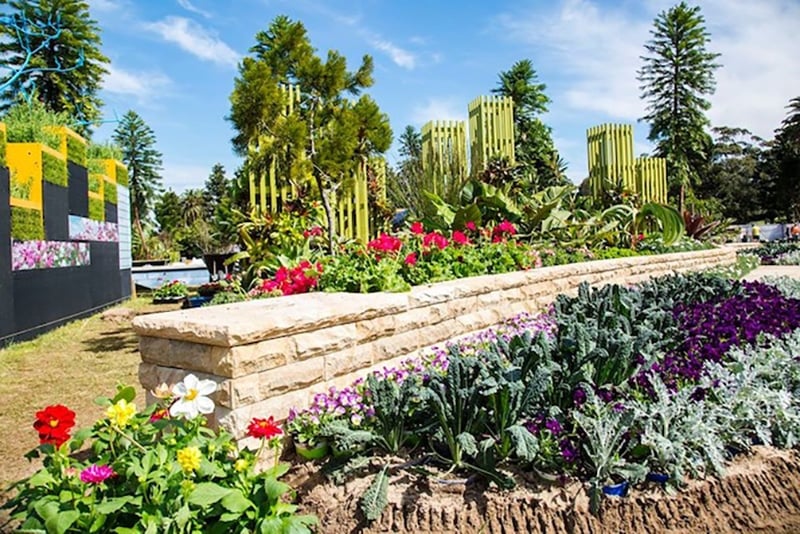
Cheap Australia Travel: Exploring Sydney On Less Than $25/Day

Solo Travel In Sydney: The Ultimate Guide (With Map!)
Kangaroo Island Travel Guide
When traveling Australia , you can’t miss Kangaroo Island. Here is how to have an incredible time!
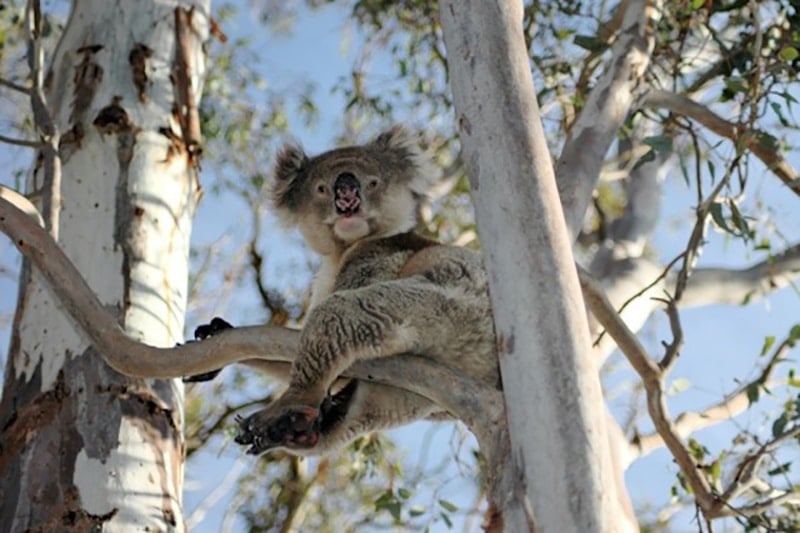
12 Quintessential Experiences To Have On Australia’s Kangaroo Island

Southern Ocean Lodge: Sustainable Luxury On Australia’s Kangaroo Island
Other Places To Visit In Australia
Looking for the best places to visit in Australia ? Here are some other unforgettable ideas:

10 Tasty Food & Wine Experiences To Have In Australia
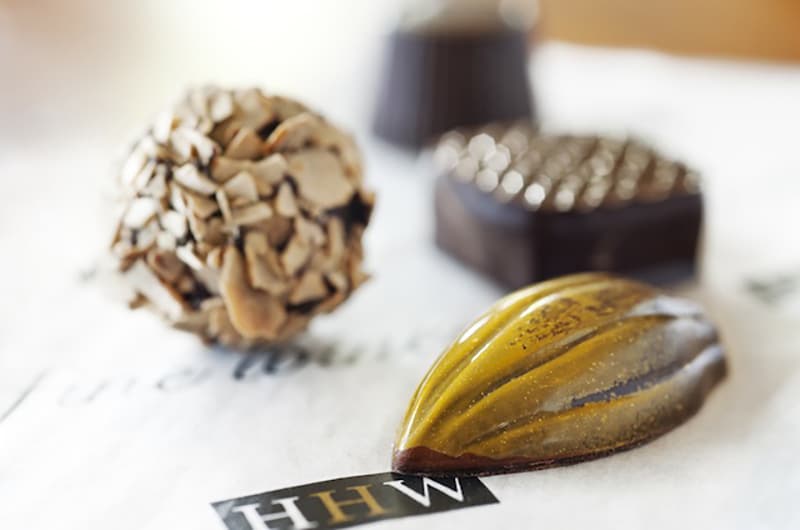
An Epicurious Experience In Adelaide Hills, South Australia
Best Tours In Australia
Explore local culture with an Australia tour guide through these unique excursions:
- Great Barrier Reef Snorkeling and Diving Cruise from Cairns
- Cape Tribulation, Mossman Gorge, and Daintree Rainforest Day Trip from Cairns or Port Douglas
- Kuranda Scenic Railway Day Trip from Cairns
- Uluru (Ayers Rock) Sunset with Outback Barbecue Dinner and Star Tour from Yulara
- Sunset 3-Hour Cruise from Darwin with Dinner and Sparkling Wine
- Sydney Opera House Beyond the Stage Tour & Harbourside Brunch from Sydney
- Sunset Blue Mountains Wilderness & Wildlife Tour (Without the Crowds) from Haymarket
- Kakadu National Park Full-Day Tour from Darwin with Lunch
Renting A Car In Australia
Need a rental car for your Australia trip?
Use Discover Cars to quickly compare your car rental options.
Australia Hotels
Click here to browse the best Australia travel hotels!
Prefer self-contained stays?
Click here to check out unique local rentals!
You can also use this map to search for local stays:
Australia Travel Insurance
It doesn’t matter if you’re traveling solo or with a group on an Australian tour. When visiting Australia — or any other country in the world — make sure to get travel insurance to protect your health and safety.
In my opinion, the best travel medical insurance for travelers is SafetyWing as they’ve got a large network and offer both short-term and long-term coverage — including coverage if you’re traveling for months as well as limited coverage in your home country).
Additionally, SafetyWing is budget-friendly and offers $250,000 worth of coverage with just one low overall deductible of $250.
With coverage, you’ll have peace of mind as you embark on your Australia travel itinerary.
Click my referral link here to price out travel insurance for your trip in just a few clicks .
Australia Travel Guide FAQ
Okay, now let’s answer some common Oceania travel guide questions that specifically pertain to traveling in Australia .
Q: What are the best things to do in Australia?
One of the best things to do in Australia is to explore the country’s incredible natural wonders. With tons of opportunities for hiking , diving, safaris, and more, you won’t forget the sights you see in this truly unique country.
Australia is home to the Great Barrier Reef, one of the largest living structures on the planet and one of the seven Natural Wonders of the World. The reef stretches along much of the state of Queensland and is so big that it can be seen from outer space.
While diving is probably the most immersive way to experience the reef, you can also explore this natural wonder while staying dry through glass-bottom boat tours and underwater viewing stations.
Australia’s Red Centre, or the Central Australian outback, is also world-famous for its beautiful desert views, iconic wildlife and Aboriginal culture. The desert’s main attractions are Uluru and Kata Tjuta, ancient rock formations sacred to the local Anangu people that have amazed visitors for centuries. Take a tour of the area with an Aboriginal guide to learn more about the land and its significance to the Anangu people.
What’s more synonymous with Australia than kangaroos? You can see these creatures (and many more) in their natural habitat on Kangaroo Island , a large island off the coast of South Australia where the local wildlife roams free. You’ll run into tons of classic Australian animals here, from koalas to wallabies to goannas.
Hike some of the island’s many trails, visit a local honey farm, or book an animal encounter at a wildlife educational park. The island is also well-known for its wineries and you’ll definitely want to do a tasting at one of the many cellar doors.
Now, Kangaroo Island isn’t the only Australian island worth visiting. Explore the many scenic Bruny Island hikes for a taste of adventurous Tasmania — and keep your eyes peeled for the rare white wallaby!
You can’t skip a trip to the beach when you visit Australia! Bondi Beach in Sydney is one of the most famous shores in the world, best known for its clear blue waters, clifftop walk, and world-class surf. Take a surf lesson yourself, or just catch some rays and do some people watching.
Australia is also the perfect place for an epic road trip! Along with the popular Great Ocean Road, a Brisbane to Cairns road trip introduces you to some of the country’s most incredible destinations.
Q: What is the best month to visit Australia?
December through February are generally the best months to visit Australia, as that is when the country experiences summer. This is the perfect time to visit southern Australian destinations like Melbourne and Sydney , as temperatures are usually warm and pleasant.
Things can get extremely hot in the summer in northern Australia, though, since this area is closer to the equator. If you’re looking to visit Darwin and other northern Australian destinations, consider visiting in the winter when temperatures are less brutal and not quite as rainy.
Q: How much does an average trip to Australia cost?
A week-long trip to Australia will generally run you about $2,000 for one person. Costs will depend on your destination, but the average traveler spends about $143 USD per day in Australia on accommodations, transportation, food, activities, and other day-to-day travel expenses.
Since the country is so isolated, your biggest expense will likely be your flight to Australia from your home country. Keep an eye on sites like Kayak to find deals on flights and bring the total cost of your trip down.
Q: Where should I go for my first trip to Australia?
Australia is a huge country and there’s quite a lot to see, particularly for first-time visitors, but there are a few places you absolutely shouldn’t miss.
Sydney , arguably Australia’s most famous city, offers tons of great things to see and do. The iconic Sydney Harbour area is home to the famous Sydney Opera House, probably the most recognizable building in the country.
Even if you can’t get tickets to a show at the Opera House, it’s worth strolling around the adjacent boardwalk and marvelling at the incredible architecture. The Opera House also offers daily tours for those who want a more in-depth look at the iconic building. For a taste of the city’s history, head down to The Rocks neighborhood, featuring 19th-century cobblestone streets and buildings filled with shops, restaurants, and galleries.
The city is also home to tons of great beaches, including the famous Bondi Beach, where you can soak up some sun and incredible views. For a nearby day trip out of Sydney, head to the Greater Blue Mountains Area, a UNESCO World Heritage Centre featuring incredible sandstone plateaus and more.
Looking to road trip your way along the country’s southern coast? Take a ride on the Great Ocean Road, a cliffside highway with amazing ocean views and tons of great stops along the way.
During your trip, you can visit the 12 Apostles , a series of limestone pillars carved out of the mainland cliffs that will take your breath away. You can also encounter local wildlife at several wildlife reserves along the way, or do some seal spotting along the shore. The Great Ocean Road will also lead you to Melbourne, Australia’s cultural capital, a lively city full of fun and quirky things to see and do.
No trip to Australia would be complete without a visit to The Outback. The ancient rock formation Uluru is a truly breathtaking sight and the surrounding Red Centre area offers tons of opportunities for adventure travel . Here, you can explore King’s Canyon, learn more about the local Aboriginal culture, get up close with kangaroos, and swim in real waterholes.
The nearby city of Alice Springs also has tons of great art to check out as well as trails for mountain biking and remnants of Australia’s storied past like original European settlements. Bring your sunblock and get ready to explore this iconic area.
Q: What should I avoid in Australia?
The biggest threat to your safety in Australia is Mother Nature. Thankfully, her wrath is pretty easy to avoid.
If you want to head out to the beach (which you absolutely should), make sure you stick to official beaches designated for swimming. If not, you may run the risk of encountering a shark, crocodile, or one of the other dangerous sea creatures local to the area.
You’ll also want to heed any warnings from lifeguards and always swim between the flags at the beach. Rip currents can develop quickly and cause even the strongest of swimmers to struggle to get back to shore.
And do not forget sunscreen and water! The Australian sun is notoriously strong and you don’t want to end up in the hospital with third-degree burns and a wicked case of dehydration.
If you’re not renting a car during your trip to Australia, you’ll want to avoid the suburbs and stay close to major cities and areas with reliable public transport. Public transit is spotty at best outside of the cities, so you’ll definitely have a hard time getting around.
If you do choose to rent a car, be sure to factor travel time into your itinerary. It can take quite a while to get from Point A to Point B in Australia however you choose to travel, and you don’t want to spend your entire trip on the road. A proper road trip around the country can also take months, so don’t get too ambitious with your plans unless you truly have the time.
This probably also goes without saying, but leave your Steve Irwin impression at home. Any references to Crocodile Dundee, “shrimp on the barbie”, and the like will (at best) earn you dirty looks from the locals.
And you probably wouldn’t appreciate it if someone did the same in your home country or hometown. Just be yourself and don’t be afraid to chat with people. Australians are quite friendly as long as you leave the fake accent at home.
Q: Is Australia safe to travel?
Australia is considered very safe for travelers. Rates of both violent and petty crime are low throughout the country, though it does help to stay vigilant for pickpockets in major cities like Sydney and Melbourne.
Natural disasters can be a bit of a risk here, though — riptides are common at beaches, wildfires are common in the summer months, and there are several dangerous animal species to look out for if you’re out in the wilderness.
UV exposure rates are also very high here, so be sure to use SPF every day, even if you’re not planning on spending a ton of time outdoors.
Keep an eye on the news, heed all road signs and beach warnings, and follow guides when venturing outdoors.
Q: How long can a tourist stay in Australia?
Tourist visas in Australia are generally granted for up to three months.
These can be extended to a full year under certain circumstances but three months is the length of an average stay period granted by the Australian Department of Home Affairs.
If you want to stay longer than your granted stay period, you’ll need to apply for a new visa.
Q: Do I need an Australia travel visa?
All visitors to Australia (other than citizens of New Zealand) need a visa to visit the country. You must apply for a visa before leaving home.
Visitors from most European countries can obtain a free eVisitor visa online and visitors from the United States, Canada and several other European countries can obtain an Electronic Travel Authority (ETA) visa online or through a travel agent for a small fee. If you are applying for an ETA visa, be sure to get your application in before you book travel to Australia.
It’s recommended to view your country’s Australia International Travel Information page for the most up-to-date information on entry and exit requirements. You can also contact the Australian Consulate-General.
Q: Where is Australia?
Australia is a country — that is also an island and a continent — located in Oceania between the Indian Ocean and the South Ocean.
Q: Are credit cards accepted in Australia?
Credit cards — particularly Visa and Mastercard — are widely accepted around Australia, though it is always wise to carry some cash for smaller establishments and in case of emergency.
Q: Can you drink the tap water in the Australia?
It is typically safe to drink the tap water in Australia, though do double check with your hotel to be sure as water sources — and water quality — vary from place to place.
Q: What is the local currency in Australia?
The local currency in Australia is the Australian dollars (AUD).
What would you add to this Australia travel guide?

Enjoyed this ultimate Australia travel guide? Pin it for later!
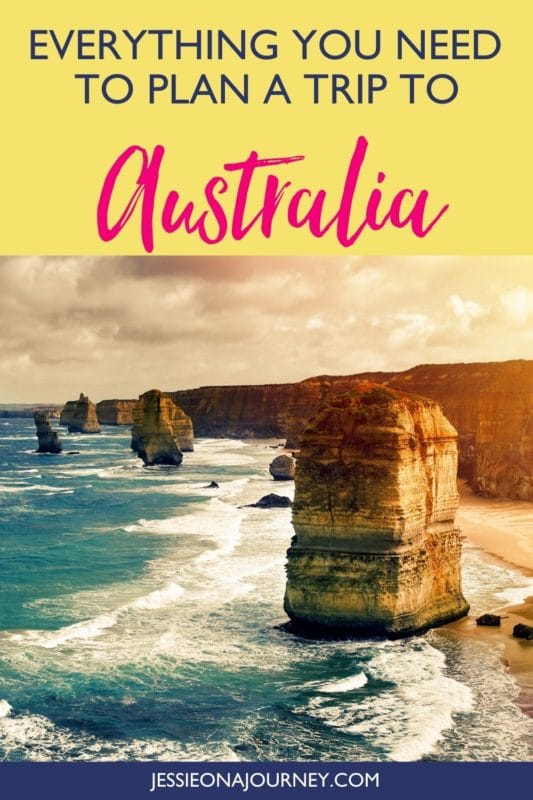

Australia Recommends 2024

Come and Say G'day

G'day, the short film

Discover your Australia

Travel videos

Deals and offers

Australian Capital Territory

New South Wales

Northern Territory

South Australia

Western Australia

External Territories

The Whitsundays

Mornington Peninsula

Port Douglas

Ningaloo Reef

Airlie Beach

Kangaroo Island

Rottnest Island

Hamilton Island

Lord Howe Island

Tiwi Islands

Phillip Island

Bruny Island

Margaret River

Barossa Valley

The Grampians

Hunter Valley

Yarra Valley

McLaren Vale

Glass House Mountains

Alice Springs

Uluru and Kata Tjuta

The Kimberley

Flinders Ranges

Kakadu National Park

Eyre Peninsula

Karijini National Park

Great Barrier Reef

Blue Mountains

Daintree Rainforest

Great Ocean Road

Purnululu National Park

Cradle Mountain-Lake St Clair National Park

Litchfield National Park

Aboriginal experiences

Arts and culture

Festivals and events

Food and drink

Adventure and sports

Walks and hikes

Road trips and drives

Beaches and islands

Nature and national parks

Eco-friendly travel

Health and wellness

Family travel

Family destinations

Family road trips

Backpacking

Work and holiday

Beginner's guide

Accessible travel

Planning tips

Trip planner

Australian budget guide

Itinerary planner

Find a travel agent

Find accommodation

Find transport

Visitor information centres
Deals and travel packages

Visa and entry requirements FAQ

Customs and biosecurity

Working Holiday Maker visas

Facts about Australia

Experiences that will make you feel like an Aussie

People and culture

Health and safety FAQ

Cities, states & territories

Iconic places and attractions

When is the best time to visit Australia?

Seasonal travel

Events and festivals

School holidays

Public holidays
How to get to Australia's most iconic cities

How long do I need for my trip to Australia?

How to travel around Australia

Guide to driving in Australia

How to hire a car or campervan

How to plan a family road trip

How to plan an outback road trip

Acknowledgement of Country

We acknowledge the Traditional Aboriginal and Torres Strait Islander Owners of the land, sea and waters of the Australian continent, and recognise their custodianship of culture and Country for over 60,000 years.
- International (English)
- New Zealand (English)
- Canada (English)
- United Kingdom (English)
- India (English)
- Malaysia (English)
- Singapore (English)
- Indonesia (Bahasa Indonesia)
- Deutschland (Deutsch)
- France (Français)
- Italia (Italiano)
- 中国大陆 (简体中文)
*Product Disclaimer: Tourism Australia is not the owner, operator, advertiser or promoter of the listed products and services. Information on listed products and services, including Covid-safe accreditations, are provided by the third-party operator on their website or as published on Australian Tourism Data Warehouse where applicable. Rates are indicative based on the minimum and maximum available prices of products and services. Please visit the operator’s website for further information. All prices quoted are in Australian dollars (AUD). Tourism Australia makes no representations whatsoever about any other websites which you may access through its websites such as australia.com. Some websites which are linked to the Tourism Australia website are independent from Tourism Australia and are not under the control of Tourism Australia. Tourism Australia does not endorse or accept any responsibility for the use of websites which are owned or operated by third parties and makes no representation or warranty in relation to the standard, class or fitness for purpose of any services, nor does it endorse or in any respect warrant any products or services by virtue of any information, material or content linked from or to this site.
Travel Guide Australia
Book your individual trip , stress-free with local travel experts
- roughguides.com
- Australasia
- Travel guide
- Itineraries
- Local Experts
- Travel Advice
- Accommodation
Plan your tailor-made trip with a local expert
Book securely with money-back guarantee
Travel stress-free with local assistance and 24/7 support
More than most other countries, Australia seizes the imagination. For many visitors its name is synonymous with endless summers where the living is easy. This is where the adventures are as vast as the horizons and the jokes flow as freely as the beer – a country of can-do spirit and laidback friendliness. No wonder Australians call theirs the Lucky Country.
Interesting facts about Australia
Where to go in australia, best places to visit in australia, best time to travel to australia, australian life and culture, the outback, australia’s indigenous people, eccentric australia, gay and lesbian australia, tailor-made travel itineraries for australia, created by local experts.

12 days / from 2900 USD
Explore Western Australia from Perth to Broome
Western Australia is the country's largest state, covering more than a third of Australia. This self drive itinerary allows you to explore sunny Perth, stunning national parks and waterfalls, the remote wild west outback, empty beaches and much more.
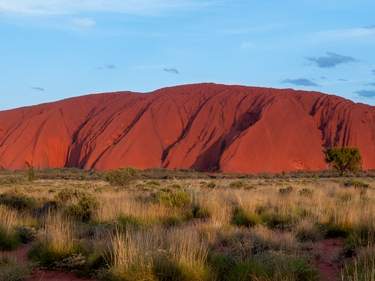
16 days / from 3300 USD
Explore South Australia and the Northern Territory
Explore South Australia and the Northern Territory on this self-drive adventure. Start in Adelaide and make your way over the Ayers Rock, Kings Canyon, and Alice Springs to the Kakadu National Park and ultimately Darwin.

23 days / from 4150 USD
Cross Western Australia to Darwin
Western Australia offers wonderfully remote outback experiences: from spectacular national parks to sandy deserts, pristine beaches to working cattle stations. This itinerary allows you to explore the way from Perth to Darwin in depth and at your own pace, in your own rental car.
- With an area of just over 7.5 million square kilometres, Australia is the sixth-largest country in the world.
- Australia’s population is estimated at just over 22 million, of whom some 85 percent live in urban areas. About 92 percent are of European origin, two percent Aboriginal, and around six percent Asian and Middle Eastern.
- Much of Australia is arid and flat. One-third is desert and another third steppe or semi-desert. Only six percent of the country rises above 600m in elevation, and its tallest peak , Mount Kosciuszko, is just 2228m high.
- Australia’s main exports are minerals, metals, fossil fuels, cotton, wool, wine and beef, and its most important trading partners are Japan, China and the USA.
- At 5614km the dingo fence is the longest in the world, stretching from Jimbour to the cliffs of the Nullarbor Plain. It’s around twice the length of the Great Wall of China.
- Australia ranks proudly ranks second in the Human Development Index , which measures a country’s progress by its life expectancy, education and income. Norway comes first.
- Around 22 percent of Australians are descended from convicts .
For visitors, deciding where to go can mean juggling distance, money and time. With an expanse of places to visit, Australia’s tourism means that you could spend months driving around the Outback , exploring the national parks, or hanging out at beaches; or you could take an all-in, two-week “Sydney, Reef and Rock” package, encompassing Australia’s outstanding trinity of must-sees. These are just some of the top places to go in Australia.

Both options provide thoroughly Australian experiences, but either will leave you with a feeling of having merely scraped the surface of this vast country. Visit Australia and experience the two big natural attractions: the 2000km-long Great Barrier Reef off the Queensland coast, with its complex of islands and underwater splendour, and the brooding monolith of Uluru (Ayers Rock), in the Northern Territory’s Red Centre.
Sydney is the jewel in Australia’s navel. Famous as one of the world’s great gay cities, it attracts LGBTQ visitors from around the world. Melbourne closely follows, but there are scenes in Brisbane and the Gold Coast, and to a lesser extent in Perth, Adelaide, Hobart and Darwin.
Away from the cities, things get more discreet, but a lot of country areas do have friendly local scenes – impossible to pinpoint, but easy to stumble across. However, Outback mainstays of mining and cattle ranching are not famed for their tolerance of homosexuality, so tread carefully in remote destinations.
Discover more places in Australia

- Outback Queensland Travel Guide
- South Australia Travel Guide
- Sydney Travel Guide
- Tasmania Travel Guide
- Victoria Travel Guide
- Western Australia
Blue Mountains (New South Wales)
World Heritage-listed, the Blue Mountains are a wonderland of ancient forests, deep valleys and lookouts from sheer cliffs, all just an hour or so from Sydney.
Travel advice for Australia
From travel safety to visa requirements, discover the best tips for traveling to Australia
- Eating and drinking in Australia
- Getting around Australia: Transportation Tips
- Travel Health Australia
- Sports and Outdoor activities in Australia
- How to get to Australia
- Travel Tips Australia for planning and on the go
- Travelling with children in Australia
- Best time to visit Australia
Tall Timber Country (Western Australia)
These primeval karri forests are one of WA’s greatest natural sights. Get a bird’s-eye view from the Tree Top Walk.
Wilpena Pound (Southern Australia)
There are some fantastic hikes in the Flinders Ranges National Park but few top the spectacular scenery at the elevated basin of Wilpena Pound.
Sport at the MCG (Victoria)
Taking in a game of cricket or, better still, Aussie Rules football at the venerable Melbourne Cricket Ground (MCG) is a must for any sports fan.
Fraser Island (Queensland)
The giant dunes and freshwater lakes of the world’s largest sand island form the backdrop to popular 4WD safaris.
Sydney harbour (New South Wales)
Scale the bridge, take a harbour ferry to Manly or just marvel at the Opera House sails at the most iconic location in Sydney, a shorthand for Australia itself.
Atherton Tablelands
With its rainforest, crater lakes and abundant wildlife, you could spend days exploring the Atherton Tablelands.
You’ll find reliably warm summers at the coast with regular, but brief, heatwaves in excess of 40°C. Head inland, and the temperatures rise further. Winters, on the other hand, can be miserable, particularly in Victoria , where the short days add to the gloom. The best time to travel to Tasmania is year-round: while weather in the highlands is unpredictable at all times, summer is the best time of year to visit Tasmania to explore the island’s outdoor attractions.
Every aspect of Australian life and culture, whether its matey attitudes or its truly great outdoors, is a product of the country’s scale and population – or lack of it. Australia rivals the USA in size, but is home to only 24 million people, giving it one of the lowest population densities on earth. The energy of its contemporary culture is in contrast to a landscape that is ancient and often looks it: much of central and western Australia – the bulk of the country – is overwhelmingly arid and flat. In contrast, its cities, most founded as recently as the mid-nineteenth century, burst with a vibrant, youthful energy.
The most iconic scenery is the Outback, the vast fabled desert that spreads west of the Great Dividing Range into the country’s epic interior. Here, vivid blue skies, cinnamon-red earth, deserted gorges and geological features as bizarre as the wildlife comprise a unique ecology, one that has played host to the oldest surviving human culture for up to 70,000 years (just 10,000 years after Homo sapiens is thought to have emerged from Africa).
This harsh interior has forced modern Australia to become a coastal country. Most of the population lives within 20km of the ocean, the majority of these occupying a suburban, southeastern arc that extends from southern Queensland to Adelaide. Urban Australians celebrate the typical New World values of material self-improvement through hard work and hard play, with an easy-going vitality that visitors, especially Europeans, often find refreshingly hedonistic. A sunny climate also contributes to this exuberance, with an outdoor life in which a thriving beach culture and the congenial backyard “barbie” are central.
Although visitors might eventually find this low-key, suburban lifestyle rather prosaic, there are opportunities – particularly in the Northern Territory – to experience Australia’s indigenous peoples and their culture through visiting ancient art sites, taking tours and, less easily, making personal contact. Many Aboriginal people – especially in central Australia – have managed to maintain a traditional lifestyle (albeit with modern amenities), speaking their own languages and living by their own laws. Conversely, most Aboriginal people in cities and country towns are trapped in a destructive cycle of racism, poverty and lack of meaningful employment opportunities, often resulting in health problems and substance abuse. To give just one example, life expectancy rates for Aboriginal Australians are ten years lower than those of the rest of the population. There’s still a long way to go before black and white people in Australia can exist on genuinely equal terms.
Aboriginal art
Aboriginal art has grown into a million-dollar industry since the first canvas dot paintings of the central deserts emerged in the 1970s. Though seemingly abstract, early canvases are said to replicate ceremonial sand paintings – temporary “maps” fleetingly revealed to depict sacred knowledge. In the tropics, figurative bark and cave paintings are less enigmatic but much older, though until recently they were ceremonially repainted. The unusual X-ray style found in the Top End details the internal structure of animals. The Northern Territory – and Alice Springs, in particular – are the best places to look.
It could be part of the Australian psyche that celebrates renegades. Perhaps it is just the standard set by such utterly odd wildlife as the platypus. Whatever the cause, Australia enjoys eccentricity like few other first-world nations, even down to the playful rough-and-tumble of its slang, Strine. The further you go from the big cities, the quirkier Australia gets. You could base an entire visit around a tour of kitsch sights like the Big Banana at Coffs Harbour, the Big Pineapple at Nambour or the Big Prawn at Ballina; for more inspiration see wilmap.com.au/bigstuff. Country and especially Outback pubs are often reliable outposts of the weird and wonderful. Yet for true glorious weirdness head to small festivals like the World Cockroach Races staged in Brisbane every Australia Day, or Darwin’s riotous Beer Can Regatta in July, with boat races in craft made entirely from beer cans.
Australia is a fixture on the Queer map thanks to its great climate and laidback lifestyle. Sydney is Australia’s gay-friendly capital, especially in March when hundreds of thousands of people pour in for the Sydney Gay & Lesbian Mardi Gras. Despite its reputation as a macho culture, the country revels in a large and active scene: you’ll find an air of confidence and a sense of community that is often missing in other parts of the world.
Sydney is the jewel in Australia’s navel. Famous as one of the world’s great gay cities, it attracts lesbian and gay visitors from around the world. Melbourne closely follows, but there are scenes in Brisbane and the Gold Coast, and to a lesser extent Perth, Adelaide, Hobart and Darwin.
Gay and lesbian contacts
- Pinkboard pinkboard.com.au . Popular, long-running website with useful “Graffiti Walls” full of parties, personal ads and classifieds sections with everything from house-shares, party tickets for sale, employment, and a help and advice section. Posting ads is free.
- The Pink Directory thepinkdirectory.com.au . Online directory of gay and lesbian business and community information.
- DNA dnamagazine.com.au . The nation’s best-selling Queer title, an upmarket lifestyle magazine for gay men.
Tourist services and travel agents
- GALTA (Gay and Lesbian Tourism Australia) galta.com.au . An online resource and nonprofit organization that promotes the gay and lesbian tourism industry with good links.
- Gay Travel gaytravel.com . Online travel agent, concentrating mostly on accommodation.
- International Gay and Lesbian Travel Association iglta.org. Trade group with lists of gay-owned or gay-friendly travel businesses.
The Rough Guides to Australia and related travel guides
In-depth, easy-to-use travel guides filled with expert advice.
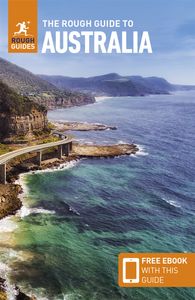
Find even more inspiration here

Planning your own trip? Prepare for your trip
Use Rough Guides' trusted partners for great rates

written by Andy Turner
updated 26.04.2021
Ready to travel and discover Australia?
Get support from our local experts for stress-free planning & worry-free travels.
- Where to stay
- Travel advice

Australia Travel Tips & Destination Guide (2023)
- Christopher Aiello
- June 16, 2023
Start planning your next adventure down under with our Ultimate Australia travel tips destination guide!
This sunburnt continent is known worldwide for its beautiful beaches, national parks ecosystem, amazing coral reefs and wildlife found nowhere else.
Come see the waves and surf at Bells beach , enjoy the coffee culture of Melbourne, snorkel the Great Barrier Reef or hike through the worlds oldest temperate rainforest there are so many things to see in Australia.
Planning a trip to Australia is an exciting and fun time full of planning and packing, but there are quite a number of things you should know before you pack your suitcase and travel to Australia.
Whether you’re a backpacker, seasoned traveller or prefer your eggs benny we’ve created this guide to ensure you are best prepared for EVERYTHING Australia can throw at you.
We hope you find this guide on how to travel to Australia helpful in planning your next trip.
Chris and Laura Travels acknowledges the Bunurong people as the traditional custodians of the land, and we pay our respects to Aboriginal elders past and present.

READ MORE>> Check out these INCREDIBLE activities in Australia in 2023
Australia travel tips summary
If you don’t feel like reading this whole guide then this Australia travel summary will give you a basic understanding of what to expect.
The Australian dollar is the currency that comes in both coin and polymer plastic form. There’s also an extensive range of ATMs and banks to withdraw money from.
At the time of writing 1AUD = 0.67USD , 0.54 British Pounds and 0.61 Euro
Entry/Visa Requirements
From countries other than New Zealand you will require a Visa to enter Australia and may need to meet certain health requirements like vaccines that will be declared before arriving.
Make sure you check the latest update on Australian entry requirements.
A type 1, 3 flat pined adaptor in a triangular fashion using 230V supply voltage in 50Hz is what is used nationwide.
Australia is a huge country, however its made easier for travel with a range of public transport options such as trains and city trams, taxis and Ubers with ride share options.
Most major train lines in major cities originate in the central business district and flow out to the suburbs and beyond.
Safety tips
Generally speaking Australia is a very safe country for travellers, with a fairly low crime rate and almost non-existent gun issues, the most common crime amongst travellers is petty theft.
Take normal precautions when walking around cities and avoid dark scary alleys at night time!
The spoken and written language is English, or at least a version of it! If you’ve ever heard Australian slang before you would question if it really is or not.
Best time to Visit Australia
The summer months run from December to February with average daily temperatures sitting at 25 degrees Celcius. Of course there is a lot of variation to that with temperatures reaching 40C +, or below 20C.
It also happens to be the busiest time of the year to visit Australia as school holidays run from mid December to end of January
Cost of living
Generally speaking it is very expensive to live in Australia, and travellers should expect to pay anywhere from $50-$100 a day on 3 meals in most major cities. That being said it costs nothing to visit the beach and lounge all day.
There are 6 states and 2 territories in Australia, with Canberra being the capital. Melbourne, Sydney, Adelaide, Perth, Brisbane, Hobart and Darwin being the capital of all the other states.
Health Care and Travel Insurance
Australia has one of the best health care systems in the world, seriously! Citizens enjoy free access to public health care, and travellers from certain countries are entitled to this under the Healthcare Reciprocal.
You can check if your country is on the benefit list here .
If you’re not covered under the agreement, we strongly recommend purchasing Travel Insurance when you visit Australia.
Home to the most amount of top 10 venemous snakes in the world , a sprinkling of spiders drop bears (just kidding), you don’t want to risk serious medical illness or trauma and be out of pocket a house deposits worth!
Thats why we trust World Nomads Insurance, with a wide range of coverage at the best price on the insurance market, we do not pack our bags without it.
INSURANCE HTML
Top 5 Travel Experiences in Australia
The lucky part about exploring Australia is that because it’s so vast and diverse, with ever changing landscapes and climates the top travel experiences are all so different from each other and unique in their own way.
With so many things to see and do in Australia we’ve curated the Top 5 most popular activities in Australia.

Go Snorkelling/Diving
It goes without saying that snorkelling the Great Barrier Reef is a one of a kind adventure situated on the north east coast of mainland Australia in the tropical north of Queensland.
Whether you choose to snorkel, go scuba diving or simply admire the reef from the boat, this 2300km stretch of biologically diverse marine ecosystem is home to thousands of species of fish, turtles, sharks and colourful coral reef.

Visit Uluru
The cultural heart of Australia and known to postcards worldwide, this gigantic sandstone rock formation in the Northern territory attracts thousands of tourists from across the globe and has to be included in your Australia travel itinerary.
Roughly 550 million years old and sitting within Uluru Kata Tjuta National Park, Alice Springs is the closest town to the red centre some 450km away.
It’s of great spiritual importance to the local Indigenous people of Australia and one of the best ways to explore the red centre is by seeing it from above, or doing one of the hikes around the base.

Sydney Opera House
Sydney is the capital city of New South Wales on Australias eastern coast where the architecturally impressive multi-venue performing arts centre sits in the canals of the south pacific ocean within the Sydney CBD.
Every New Years Eve the world watches the firework display from the Opera House overlooking Sydney harbour bridge which you can also climb.
While you’re in Sydney why not surf at Bondi Beach, walk up the Sydney Harbour Bridge, sail across the harbour, party in Kings Cross or explore the other beaches like Coogee, manly or Bronte Beach.
Get your Sydney Opera admission ticket below

Go on a road trip, anywhere!
Okay so we’re getting a little vague here, but WHY we included this in the top 5 best experiences in Australia is that you can choose any city or town, get yourself a rental car and hit the road to anywhere!
Australia offers some of the best road trips in the world like the Great Ocean Road in Victoria, the Flinders Ranges in South Australia or go inland to central Australia.

Island hop the Whitsundays
When travelling in Australia there are few places that akin to the Whitsunday islands, a group of 74 island off the central coast of Queensland (mostly uninhabited) where the perfect winds allow for world class sailing.
Sail the Whitsunday islands
Other things to do in Australia
When planning a trip to Australia make sure you consider the following places as these are some incredible bucket-list activities found nowhere else in the world.
Explore Ningaloo Reef
Almost one third of the entire Australian continent is western Australia where an abundance of marine wildlife awaits you at every corner.
The perfect place to go diving along the Coral Coast and swim with Whale sharks, Manta rays, Humpback whales and the largest fringing coral reef anywhere in the country.
Wander further north and visit Exmouth for its white sand pristine beaches, Coral Bay, Monkey Mia and Shark Bay for stand up paddle boarding on the west coast.
Make sure you head out to Lucky Bay in Cape Le Grand national park on the southern coast of western Australia to sun bath with Kangaroos.
Take a selfie with Quokkas on Rottnest island
Head to the capital city of Perth for free walking tours of the city, a must do when you visit Australia before heading out to Rottnest Island off of the Coral Bay coast to meet the only Australian animal that will smile for a photo.
Take the 25 minute Rottnest Island ferry to experience this one of a kind wildlife encounter and combine it with an all day bike rental for $114AUD from Get Your Guide.
Search for Pearls in Broome
The rich waters of Roebuck Bay in Western Australia is known as the largest pearling port in the world, having begun operations in the 1880’s, by the turn of the century there were in excess of 300 ships (known as luggers) involved in the pearling trade.
Although business declined at the end of WW2, you can still learn about the rich history of pearling by joining a pearl farm tour for $145AUD
Hike the oldest rainforest in the world- Daintree Rainforest
Older than the Amazon rainforest, the Daintree rainforest sits in tropical north Queensland.
Sir David Attenborough described this place as the most extraordinary place on earth, celebrating its 180 millionth birthday.
Be sure to give yourself enough time to join a full day 4WD tour from Cairns.
Explore the Northern Territory
Abundant in wildlife like saltwater crocodiles, explore the region by taking a Kakadu wilderness escape tour whilst staying in eco-friendly sustainable accommodation.
Just north of Cairns and Port Douglas this place should be high on your Australian itinerary.

Learn to surf on the Gold Coast
The reason you visit Australia- let’s be real here, is to learn how to tackle world class waves, and the Gold Coast in Queensland makes for a great day trip.
Why not try a 2 hour surf lesson at Broadbeach on one of Australia’s most beautiful beaches, just remember to stay between the red and yellow flags.
See turtles hatch in Bundaberg
Is there anything more cuter than baby turtles hatching on a beach? Why not see for yourself and experience the largest concentration of nesting Loggerhead turtles anywhere in the south pacific.
Bundaberg is the place to go which is conveniently close to Hervey Bay, Fraser island and the southern Great barrier reef islands of Great Keppel, Heron Island and Lady Musgrave Island.
Venture off the coast and visit Lady Musgrave island from Bundaberg .
Stroll down the Southbank of Brisbane
Brisbane may not be the ultimate Australian city that comes to mind when booking an Australian vacation but it’s very handy as a major city stop between Sydney and tropical north Queensland.
Stroll the city streets for a local pub meal or check into one of the many hostels before making your way north.
Camp out in the Blue Mountains
A short 2 hour train ride from Sydney is the epic Blue Mountains, getting its name from the blue haze that sweeps across the limestone formations when Eucalyptus vapours mix with water in the air.
Take a scenic luxury trip to the Blue mountains from Sydney
Katoomba falls is one of the many waterfalls of the region where you can stay for the night in the town.
The three sisters are a popular natural tourist destination best viewed from Echo point lookout at sunrise or sunset, or take an eco friendly guided walking tour with Aboriginal Blue Mountains walkabout.
Spend a week in Lord Howe island
A 2 hour flight off the coast, Lord Howe Island is a tiny island that only ever welcomes 400 visitors at a time, because it’s so small! Beach hop or bird watch, this part of New South Wales will blow your mind.
Climb Mount Kosciuszko
At over 2200 metres tall Mount Kosciuszko is mainland Australia’s highest mountain situated in the ACT (Australian Capital Territory) that you have to try on your way from Melbourne to Sydney.

Navigate through the Australian outback
Synonymous with thoughts of Australia, the aussie outback is an incredible display of what harshness and raw beauty of our land. Head to Australia’s northern territory to explore the land still inhabited and revered by Indigenous Australians on a scenic flight.
Beautiful national parks such as Kakadu national park , Karajini and Litchfield national park as well as the Kimberley region in western Australia. Find local waterholes to spend an evening whilst admiring the sunset.
Train in luxury across the continent
The Ghan train runs between Adelaide and Darwin through both western Australia and the northern territory as one of the worlds finest great train rides.
The full length journey will take 4 days across 2979km of rich history and landscape operating April to October, but it’s not cheap!
If you choose to get off in Alice Springs you should consider hiking the Larapinta trail also, one of the best hikes in Australia.
Discover Melbourne laneways and coffee culture
Spend days traversing the maze of alleys and laneways of the central business district of Melbourne, taking the train to the iconic Flinders street station and immersing yourself in the world renowned coffee culture.
We love a good espresso, why not try a Melbourne Magic!
A scenic boat cruise on the Yarra river is the best way to see the Melbourne city highlights.
Tasmania’s Wineglass bay
Freycinet national park on Tasmania’s east coast is home to Wineglass Bay (for obvious reason) where you can hike to the best vantage point overlooking the Tasman Sea.
Take the ferry from Melbourne to Tasmania , see the sights in Hobart but be warned, Tasmania looks small but it’s a very big state.
Take a wine tour
None better than the wineries of South Australia , explore world famous vineyards in Barossa valley , McLaren vale, or the Hunter Valley in New South Wales.
Margaret River in western Australia is another fantastic option here, better yet book a wine tour bus and save yourself from driving!
Skydive for the best veiws
No travel to Australia is complete without seeing it from the sky above- and this skydiving tour in Rottnest Island or the Great Barrier Reef is the ultimate way to see the country in all its glory.
Suggested Australia Travel Itinerary
The 6th largest country in the world with the 6th largest coastline can take A LONG TIME to travel around which is why we’ve created multiple itineraries and road trip suggestions to help you plan.
By far, the east coast receives the majority of Australian tourism as it is the most densely populated region so if you plan on staying for two weeks it’s best to pick one area and stay there, unless you have more than a month!
2 week Australia travel itinerary highlights
If you choose to explore the east coast there are a number of options and very helpful tips we personally recommend.
One month travelling Australia
This is the best amount of time to visit Australia because you wont feel so rushed and if you find somewhere you love you can choose to stay longer and still cover enough ground.
Keep in mind your mode of transport will dictate how many days you stay in one place, obviously flying between cities is quicker but a lot more expensive.
The above table is your best resource for a rough planning idea however if you stay in one state for the whole month then consider adding these to your travels..
Combine WA and South Australia
You can choose to fly direct from Adelaide airport to Perth for just over 3 hours with Virgin Australia, or drive the longest straight road in the country, the Nullarbor plain.
Victoria Itinerary + Far North Queensland itinerary
Hit all the main spots in Victoria and add on this far north itinerary to your trip.
More than one month travel Australia highlights
If you’re staying longer than a month you will need a pre-approved visa before flying into the country. Locals tend to stick to one state and explore a certain region, other will take 6 months to a year to do “The Lap” of the country.
This whole itinerary will take on average 60 days to complete not allowing for travel days as per any itinerary here.
Dive deeper into some of the above cities with our in-depth travel guides.
Melbourne city guide
Melbourne itinerary
Best day trips
Great Ocean Road itinerary
South Australia:
Adelaide city guide
Day trips in SA
Western Australia:
Best Exmouth attractions

READ NEXT >> Learn more about the BEST Places to Visit in Australia
Australia Travel Tips
To build trust with you, our reader..one half of this dynamic duo was born and raised in Melbourne, so when we share our top tips for travelling to Australia you know it’s coming from a very reliable source!
We’ve collated a number of topics to set you up for success the next time you plan a trip to Australia.
Best time to visit Australia
The summer months of Australia run historically from December to February, however many places like Far north Queensland often describe the seasons as the ‘dry and wet seasons’.
Average temperatures in summer range anywhere from 20°C to 30°C, (68°F to 90°F) and mostly dry conditions.
In far north Queensland however, when the rest of the country experiences dry weather, the tropical systems bring lots of rain with an average of 2000m of rainfall expected through summer with generally more humid conditions.
Northern Australia summer months also bring about the ‘Jellyfish season’, where large masses of different varieties of Box Jellyfish flood the warm, tropical waters of Cairns and the Great Barrier Reef.
Renting a lycra/stinger suit before diving or snorkelling is strongly advised and the Cairns tourism board to an excellent job of circumnavigating this as it is also the best time of year to go scuba/diving the GBR.
NB: at 2 am on the first Sunday of October, Australia winds the clock forward one hour, giving you an extra hour of sunlight to hang on the beach and party. It then ends on the first Sunday in April where we wind the clock back again one hour.

Travelling in Australia suggested budgets
Australia is a very expensive country to live and travel in, which is why we suggest having a half decent budget sorted before you land.
The cost of living is one of the highest in the world, and at the time of writing, (post covid) its very expensive. However there are ways to travel on a budget and not miss out on things you’d like to do.
Summer is also the most expensive time to visit, coinciding with school and university holidays, prices become VERY expensive.
The cost of flights, accommodation and activities also increase so if you’re looking for a cheaper time to travel Australia to save money then look at the shoulder seasons of October to December , or March to May when the crowds die down.
The Australian currency is the Australian dollar, represented in both gold and silver coins, and polymer (plastic) notes in 5, 10, 20, 50 and 100 denominations.
Backpacker budget
You could live on a tight backpacker daily budget of roughly $100/day , including meals, accommodation and public transportation. Assuming you choose cheap city walking tours, spend your days at the beach and enjoy nature you could get away with this.
A standard drink in Australia costs $9AUD so add anywhere from 10-20 AUD to your daily budget.
Mid-range budget
On this budget of $200-$300AUD/day hotels and Air Bnb’s become more enjoyable, a few meals out ($15-20 AUD per meal) as well as some awesome day trips and cheap activities in and around the city or by the water like surfing or diving.
Luxury budget
The sky is the limit with this budget and you can really splurge on eating out for every meal, doing daily activities as well as stying in 4-5 star hotels. Choose to rent a car or a van to get between cities or out to the coast and enjoy road trip around the Australian cities.
Budget tips to make your money last
-Cook your meals in if you have a kitchen available
-Use public transport and walk to places, avoid taxis and use Uber if you need
-Purchase a pre-paid SIM card
-Find free wifi in public places like McDonalds, certain cafes will also offer free wifi
-Cut back on alcohol! Seems like poor advice but your hip pocket will thank you
-Bring a re-useable water bottle like this one from ‘ That Eco Lifestyle ‘
– WWOOF – An Australian program where you work on organic farms in exchange for free rooms and free board. It can make your stay last longer.

Getting in and around Australia
Not only is Australia huge its one of the largest, most isolated continents in the world and prices to fly into the country are often not cheap.
The single biggest advice is to not leave booking your flights to the last minute, instead doing your research well in advance to find the cheapest flights.
The cheapest and easiest way to travel in Australia is by hiring a car and doing self-drives around the states. It’s also the most convenient way to explore.
Companies like Virgin, Jetstar, Qantas, United and Delta all fly into all Australian international airports.
It helps if you put your web browser into Incognito mode, or purchase a VPN from NordVPN .
Airline companies track the IP address of your computer consistently offering higher rates every time you search, so it helps to keep your information safe and away from peering eyes.
Domestically, Jetstar, Scoot and Tiger airways are the most budget friendly companies to fly with, and they all offer seasonal promotions and discounted flights so keep an eye out.
NB: Post Covid, airline companies have raised the cost of airfares significantly worldwide so expect to pay a lot more for your flight than you would have pre 2020.
To find the cheapest flights all in one place we recommend going with Aviasales.com below
Prices for petrol, diesel and gas are currently high so its important to factor this in ma your travels and weigh this up against the freedom of self driving vs bus tours.
Lots of car rental places operate out of the international airports or close to which makes it easy when you first fly into the country.
Another great option is to hire a campervan and double down on both accommodation and transport.
We have used this option a couple of times and particularly for Australia road trips we find it the most incredible way to see the countryside.
Your initial outlay to hire the van is more expensive than a car, and may require more fuel than a car, but you will save on the cost of additional accommodation every time you stop in places.
All major Australian cities have an intricate network of public bus transportation in the city, as well as out to the outer city suburbs.
Melbourne city also has a unique tram network that runs around the central business district known as the ‘city circle tram loop’.
Greyhound Bus service is the most extensive and popular bus tour operator in the country, partnering other local bus companies to provide cheap, affordable and comfortable bus travel.
This is definitely the way to go when it comes to budget friendly travel in Australia, meaning you can save money to explore Australia more.
Uber / taxi
Yes, Uber definitely exists in Australia and next to catching a taxi is the most convenient way to get around in short bursts and trips.
Public transportation in the form of trains is also another cheap, reliable and convenient way of getting around cities, as well as making your way out to more rural areas.
Some famous train routes in Australia are ‘ The Ghan ‘ which travels from Darwin to Adelaide through remote outback in luxury style .
The Indian pacific railway system is one of the worlds longest and oldest train network, running 4352km from the east coast in Sydney to Western Australia’s Perth, bypassing some of the most unique landmarks like Uluru, the Blue Mountains and the Nullabor plain.
Both of these options are fairly expensive and luxurious so expect to pay anywhere from $3-4000AUD.

Australia trip planning
Entry requirements for visiting australia.
With some of the strictest borders in the world, having a visa before entering Australia is a requirement for all travellers (except for New Zealand citizens).
Many countries around the world have an agreement with the Australian government that they do not require a visa to enter, but must obtain an Electronic Travel Authority (subclass 601) that usually grants stays up to 3 months at a time.
Check the approved ETA countries here.
If you want to stay longer in Australia, then the Tourism Stream (Subclass 600) can grant you more than 3 months stay, pending eligibility criteria and applicable fees.
Find out from this link here which visa is right for you .
Currently the Australian border is open post covid-19 pandemic, though there may be a number of health requirements to meet before boarding, check with your local airline.
Tipping culture
Thankfully the minimum wage in Australia is high enough that a liveable wage is achievable and tipping culture does not exist. Unless your service was fantastic, there is no expectation you tip your hospitality staff.
Safety travel tips
Overall Australia is a very safe country operating in a democratic society without political tyranny or civil unrest.
Solo Backpackers and couples need not fear walking the streets alone, but there are some simple guidelines to observe, and they don’t all revolve around people!
– Don’t walk dark streets alone at night, if you do make sure someone knows where you are.
-The sun in Australia can be brutal, check the UV radiation and always wear sunscreen and make sure to swim between the red and yellow flags at beaches that are patrolled
-Snakes and spiders are a real thing and they are venemous. Make sure you are prepared when out hiking
-Distances between places are longer than you think, plan ahead.
-We drive on the left hand side of the road and give way to the right.
-Be wary of animals crossing the road, be patient and avoid driving at night.
-Drinking and driving is illegal and you must stick to a Blood Alcohol Concentration of 0.05% or below
-The legal drinking, gambling and driving age is 18 years old
Apps and Technology
Technology has come along way in changing how we travel and we’ve found these apps to be the most supportive when it comes to travel in Australia.
– xCurrency – a great app that lets you convert your own currency into whatever else you’d like
– Uber – the most convenient way to get around major Australian cities to avoid taxi fares
– NordVPN – a cheap and secure way to browse the internet with top notch security wherever you go
– BeachSafe – know the best beach to visit nearest to you, including hazards, rips and surf reports
– WikiCamps – A fantastic app that lets you find free camp spots, drinking water, dump points and points of interest
– Campermate – similar to Wikicamps but also New Zealand’s hottest free camps, paid camps and attractions
-FindMY – whilst this is an inherit app to iphones, make sure it is ON incase your phone goes missing.
-Baggage etags -I’m sure you’ve seen instagram stories of this before, but having air tags, or similar location trackers that helps you find luggage or items from flights, buses or general travel can save you big time!
Australian Medical system
Home to the most amount of top 10 venemous snakes in the world, a sprinkling of spiders and drop bears (just kidding), you don’t want to risk serious medical illness or trauma and be out of pocket a house deposits worth!
We have one of the best health care systems in the world, and the good news is that if you’re from one of the countries listed here Australia has a Reciprocal agreement whereby the cost of medically necessary care is covered at no expense to you.
If you’re not from these countries then we still personally recommend taking our travel insurance.
We we trust World Nomads Insurance, with a wide range of coverage at the best price on the insurance market, we do not pack our bags without it.
Australia Packing list
The weather here can vary greatly depending on which region you choose to visit at which time of the year so use this as a rough guide to packing your bags
-swim suit (s)
-flip flops
-closed toe shoes
-hiking boots
-hiking shorts and shirts
-collared shirt (some club requirements)
-beach towel
-rain jacket
-thick + thin socks
Miscellaneous
-laptop + charger
-broad brimmed hat
-sunglasses
-mosquito repellent
-Power bank/travel adaptor with Type 1 plug

Places to stay in Australia
With a range of accommodation options to fit different budgets, one of the best Australia travel tips is to really consider the range of options available to you.
Everything from hostels, air bnb’s, bed and breakfasts, camp grounds and 5 star luxury hotels the prices here can vary from
The benefit to staying in hostels is that your accommodation costs less than $50/night, with access in most places to a kitchen, cleaning facilities and the central location of hostels, meaning you have more money to spend on activities and extend your trip.
A great way to make your Australia travels last as long as possible, this is by far the cheapest way to travel.
Most are centrally located in major cities making ease of access to popular tourist attractions quite simple through use of public transportation.
A mix of both mixed gender dorms, private rooms and female only dorms, full amenities including tv’s, a bar, pool room & guest services, hostels can be the perfect backpacker budget accommodation.
All the cities in Australia offer a selection of both budget motels as well as mid-range to luxury hotels and suites to sleep very comfortable in.
Travel to Australia can be as luxurious or as barebones as you like it to be, with hotel chains like Mecure, Sofitel or Swissotel all apart of the Accor hotel chain group across Australia and New Zealand.
They’re very nice but they’re also very expensive, however if travelling in style is up your alley then why not check out these great deals over at Booking.com
Camping and Caravan parks
Now if you want to go one further and really cut down costs on your trip to Australia then camping is the way to go.
A lot of caravan parks offer tent camping only options for as little as $15-$20/night with use of the water and showers.
Campervans are a very popular way to see Australia and save money, as you get to cook your own meals on site, or eat at restaurants if you wish.
Bed and Breakfasts
The original air bnb, you generally find bed and breakfasts in the outer regions of the city closer to both small and larger regional towns.
Traditionally offer a more intimate level of accommodation with breakfast cooked for you in the morning by your hosts.
They can often be slightly cheaper than air bnb’s and one of our top tips for Australia is to not shy away from these cute family run cottages as they often make for the comfiest of stays and offer quality travel advice for the region you’re visiting.
How to be a responsible traveller in Australia
This great land is not impervious to the effects of over tourism and plastic pollution, so being mindful of where you are and your footprint as a traveller and visitor is essential to both the economy and the environment.
Tip#1 – Don’t buy plastic bags. Substitute plastic bags for paper bags or cotton tote bags that can be reused over and over again.
Tip#2 – Avoid recycled water bottles, eventually they end up as landfill if not done properly. Purchase reusable bottles like this one here.
Tip#3 – Choose ethical activities. Any tour provider that lets you hold or touch animal are best kept away from and avoided. Instead choose certified, ethically minded tours that also give back to conservation.
Tip#4 – Buy local food from local growers. If possible and in budget, avoid the likes of Woolworths and Coles and support local Aussie farmers and shops that sell organic fruit and veg, or family run stores.
Best things to eat in Australia
Certain cities have a very multi-cultural background and hence the food scene matches each city, but innately we have a bunch of weird and wacky dishes that definitely don’t exist outside of the continent!
Vegemite is top of the list when it comes to acquired tastes; a salty, scrumptious spread that should be used lightly!
Smashed Avo – this is one of the most popular breakfast dishes in Australia, served at most cafes in the country. A smashing of avocado on toast with poached eggs sprinkled with dukkah
Kangaroo – Yes, unfortunately we cull and eat our national emblem but some restaurants serve up a tasty version of this gamey meat
Meat Pies – traditionally served up at football matches or local bakeries, we don’t personally eat meat pies as the meat inside is not often of the highest quality but feel free to try this Aussie pie
Staying connected in Australia
Compared to countries like Canada Australia has some of the cheapest mobile phone plan in the world and this also extends to their SIM card purchases.
A great way to stay connected on your Australia vacation is to bring your unlocked phone and purchase a SIM card from the airport that will have 4G WiFi capability.
Another option is to find free wifi from one of the local cafes or restaurants.
Sometimes you’ll have to buy a coffee or small snack to get the wifi password but then you get free wifi for often an hour at a time.
The other way thats less frequently used is to purchase a portable wifi device that you can get from a number of companies like Telstra, Optus or Vodafone.
Most plans start at around $20/month for 20GB of data and increases from there.
Best booking resources in Australia
One of the best Australia travel tips we can give you is to leave you with some of the most popular sites for travel planning that we personally use.
They consistently have the best deals on the market and cover your everyday essentials for travel to Australia and beyond.
Sky scanner – cheap and reliable website used to book flights all over the world often with handy cancellation policies.
Agoda – A super comprehensible that combines thousands of discounted accommodation options by city or place
Get Your Guide – The perfect website for on-selling the best activities from all over the world , which can be viewed by specific city or by activity. We use this resource a lot!
World Nomads Insurance – We never leave home without ensuring we’re financially safeguarding ourselves against the unforeseeable events when travelling in foreign countries.
This post contains affiliate links where we earn a small commission from the sale of the purchase to continue providing our read ers with the latest information and help you plan your holiday
Leave a Reply Cancel reply
Your email address will not be published. Required fields are marked *
Save my name, email, and website in this browser for the next time I comment.

Chris & Laura
Australian and Canadian freelance photographers & storytellers addicted to travel, inspiring you to travel the world.

27 Best Places to Visit in Australia 2023

12 Best Things to do in Uluru (2023 Guide)
Table of contents, related posts.

EPIC guide to hiking in the Grampians national park
Dominating the Wimmera region of north west Victoria lies the Grampians national park; home to Victoria’s fourth largest mountain range that’s known for its incredible sunsets and overhang cliff faces.

The Most Popular ways on how to get to Kangaroo island – 2021 Guide
With so many options on how to get to Kangaroo island, this was by far the easiest, most convenient and most popular way! So you’ve spent some time on mainland

The 3 Best Wineries in McLaren Vale
With over 18 wine regions spread across the vast landscape of South Australia’ s south east region you are certainly spoilt for choice when it comes to world class wines.

5 INCREDIBLE WINERIES ON THE MORNINGTON PENINSULA
We’ve scoured the coast far and wide to bring you 5 incredible wineries on the Mornington Peninsula. A road trip across Victoria should consist of a few things, great beaches,

13 Sensational Islands in Australia for Your Next Getaway
W hen you think of Australia, your mind might be conjuring up images of white-sand beaches, expansive Great Barrier Reef, and Aussie’s riding the best surf in the world. Australia is a huge country, but for sun-worshippers and nature lovers, Australia’s coast is the place to be.
If you’re dreaming of a sun-filled getaway, then you might want to consider one of Australia’s islands.
Australia actually has 8,222 islands, and it’s not possible to see them all (well, you can try!), so if you’re not sure what are some of the best islands in Australia that you should consider for your next getaway, then you’re in the right place.
We have visited our fair share of the islands around Australia, and have picked our favorites based on our personal experience, so you can decide which one is right for you. We’ve picked ones that cater to every type of travel experience, and for every budget, so there should be an island for everyone on this list.
The Best Islands In Australia To Visit
So without further ado, here are my top island escapes in Australia that make a great getaway destination or even just a day trip!
1. Rottnest Island, WA
Rottnest Island, or “Rotto” as the locals call it, is just spectacular. I would rank it as one of our top 3 favourite islands in Australia.
Located 18 kilometres off the coast of Perth, it has over 60 picturesque beaches and bays. It’s one of the top spots for snorkeling, diving, kayaking, swimming and fishing – a true island paradise.
The best way to explore is by hiring a bicycle (there are no cars on the island) and go exploring. Don’t forget your snorkelling gear, as you’ll want to stop off at some of the beaches to see the thriving marine life that shares the waters here.
Because Rottnest Island is so small, it can be seen as a day trip, but we recommend you stay over a weekend to really relax and unwind.
You’ll be sure to meet lots of the true locals getting around, the QUOKKA . The Quokka is a small macropod (rat-like animal) about the size of a domestic cat. They are so cute and friendly.
Read more: Why Rottnest should be on your Australia bucket list
2. Fraser Island, Queensland
As the world’s largest sand island, stretching 123 km long and 23 km wide, Fraser Island is a mecca for 4WD enthusiasts.
Driving along the 75 Mile Beach, which is also the island’s only highway, in a four-wheel drive jeep is a thrill like no other. It extends for the entire eastern side of the island and offers coastal views. You may see some humpback whales breaching from the shore, and watch out for the island’s native dingos.
Fraser Island also offers so much more than 75 Mile beach. You can drive along the sand tracks through towering rainforest, swim in one of the many freshwater lakes like Lake Mackenzie, or take a dip at Champagne Pools or float down Eli Creek.
Visit the famous shipwreck, spot whales migrating, and wake up to sunrise at Eurong Beach – the list of things to do on Fraser Island is endless. Here’s some insights on how you can visit Fraser Island on a day trip . We also recommend staying at Kingfisher Bay Resort.
3. Phillip Island, Victoria
We thought Phillip Island was all about the penguins and the Grand Prix Motor Cycle Race, but after spending a relaxing eight days on the island, we can assure you it offers much more!
The main town of Cowes Beach is a good place to base yourself and has a decent cafe and restaurant scene. The beach here is family friendly with gentle waves and clean sands. If you prefer scenic beaches, don’t miss Smiths Beach.
When you take in the Penguin Parade Experience , get there early and explore The Nobbies, which has spectacular views over Bass Straight – it will be windy though!
Phillip Island is one of the best getaways from Melbourne for those who want to escape the honking and chaos of the city for a few days. It’s only a 90-minute drive from Melbourne.
Other things to do on Phillip Island that’s worth exploring are The Koala Conservation Centre, Chocolate Factory, A Maze N Things Theme Park, and the Grand Prix circuit.
4. Daydream Island, Queensland
Looking for a family-friendly island getaway in the Whitsundays ? Then Daydream Island has got you covered!
The small island is exactly what it says on the tin – a dream! The island is one big family-friendly resort, and has kayaks, SUPs, and other watersport equipment you can rent.
There’s plenty of water activities for all members of the family, including snorkeling, wind surfing and more.
Alternatively, you can laze around one of the pools with a cocktail in hand or watch the sunset with a sundowner.
It’s also easily accessed from Airlie Beach by ferry, making it a really accessible weekend destination from the mainland of Australia.
5. Moreton Island, Queensland
Moreton Island was one of our biggest surprises from travelling around Australia, and after spending a fun filled three days exploring the island, I’m happy to say that it’s well worthy of this list.
It’s like a mini Fraser Island, but with easier to access from Brisbane and the Gold Coast.
You’ve got the four-wheel driving action, camping, fishing, sand boarding, freshwater lakes, a lighthouse, and even a shipwreck!
One of the unique experiences you can do here is feed the dolphins at Tangalooma or go snorkelling or kayaking around the Tangalooma Wrecks.
6. Bruny Island, Tasmania
We only spent a few hours on Bruny Island , but it left a lasting impression and was a highlight of our month long trip around Tasmania.
Bruny is an easy day trip from Hobart , from where you can jump on a tour. Alternatively, you can self-drive (like we did) and catch the vehicle ferry over from Kettering.
Bruny is home to rugged coastline, rock formations and sea caves. It also has a colony of fur seals, fairy penguins, an abundance of bird life. If you time your trip right the opportunity to see migrating whales.
The best way to see Bruny Island is on a 3-hour cruise with Rob Pennicott Wilderness Journeys – he’s a legend down there!
7. Great Keppel Island, Queensland
Queensland does island getaways better than most, but there aren’t too many islands in the Great Barrier Reef where you can escape the crowds.
If you’re thinking of a more romantic island getaway, then you can get your own beach bungalow for a reasonable price on the Great Keppel Island !
Just a short 30-minute ferry ride from Yeppoon gets you to Keppel and the Southern End of the Great Barrier Reef.
Here you’ll find pristine and healthy coral teeming with brightly coloured fish and marine life like star fish and turtles.
Great Keppel has charm – no cars or high-rise buildings, just beach bungalows that look like they belong on a chilled island beach. Perfect for an island getaway that won’t break the bank.
8. Magnetic Island, Queensland
Slip into a hammock between palm trees and you’re experiencing a little “Maggie Time” off the coast of Townsville in North Queensland.
Magnetic Island is that chilled out island that’s good for a day trip or an extended getaway when you just need to switch off from life and breathe a sight of release. We actually spent a week in Maggie time, because the soothing atmosphere was too hard to say Googbye to!
You can lay on a beach, take a dip in one of the picturesque bays, go on a hike and see koalas in the wild, take in a snorkeling or fishing trip around the island, feed the rock wallabies, zip around the island in a mini moke.
Whatever you plan to do, make sure to finish off with sunset drinks at Horseshoe Bay. It’s the perfect sunset spot to end a day at.
9. Hamilton Island, Whitsunday Islands, Queensland
I mentioned The Whitsundays earlier, it’s where Daydream Island is located, but did you know it’s actually made up of a group of 74 islands surrounded by the Great Barrier Reef?
If you’re looking for an island to base yourself at to explore more of these other island, then Hamilton Island is the go-to choice.
It’s a bit more developed than Daydream Island, which is essentially just one resort, and so it has more options available to you for tours and boat trips.
The island still has a relaxing atmosphere though, with a car-free ethos and much of its rugged bushland untouched. As well as being a base for island hopping, it’s also home to native animals such as koalas, kangaroos, wallabies and kookaburras.
But of course, the reason you go to Hamilton Island is to get out on the water. Imagine sipping champagne on your sailing boat, eating the freshest seafood imaginable, dropping anchor in picturesque bays and diving over board to swim in the warm tranquil waters and digging my toes into the white powdery sand on some of the most amazing beaches in Australia…
You can do all that and more. Just make sure you don’t miss our favourite beach in Australia, the world famous Whitehaven Beach !
10. Hayman Island, Queensland
Looking for a luxurious island getaway in The Whitsundays? Hayman Island will blow your mind!
Only 8 of the 74 islands are inhabited, with the northernmost of those being Hayman. This seclusion makes it perfect for those who want to escape the crowds and dip into luxury.
It’s also where you’ll find Australia’s premier luxury nature resort the Intercontinental Hayman Island Resort .
The moment you set foot on Hayman after being picked up via private boat or helicopter, you know you’ve landed in paradise.
If it’s tranquillity and natural beauty, and a little piece of Aussie paradise you’re after, look no further than Hayman!
11. Cockatoo Island, Sydney
Cockatoo Island is a short day trip from Sydney and is known for being the place used to house convicts in the colonial era. The island is being somewhat reclaimed as it’s covered with red gums and frequented by the sulphur-crested cockatoos, which gave the island its name.
It’s now a World Heritage Site that is home to historic buildings, an old navy shipbuilding yard, and a campground right on the edge of the harbour.
Imagine waking up to magnificent views of one of the world’s best harbours, from your tent site, at budget prices?
Even if just for a day trip, jump on the short ferry ride from Circular Quay and take in the amazing Sydney skyline along the way.
12. Tasmania
Ok, I know Tasmania is a state, and it’s far from being a tropical island getaway. However, I love Tasmania as an island destination and it’s small enough to explore in a relatively short period of time, so I’m adding it to this list.
Before visiting Tassie, I knew it had the history, but I didn’t know the food and wine scene was so incredible.
It has some of the best, freshest produce we’ve had anywhere – and well, the scenery, the beaches, the wildlife, and the hiking is something else too!
Do yourself a favour and incorporate a Tassie island getaway into the mix.
Read more: Places to Visit in Tasmania
Kangaroo Island
Kangaroo Island off the coast of South Australia is a lessor-known island renowned for its stunning landscapes from beaches to sand dunes and forests to rolling farmlands.
Not only that, it’s often called Australia’s Galapagos Island because of its wild array of Australian animals – dolphins, kangaroos , koalas, seals and more. The food and wine is also incredible here. Use our 4 day Kangaroo Island road trip guide to help you plan.
More Australia Travel Tips
Need more inspiration for a trip to Australia? Here are some other helpful guides…
- 9 ways to experience the magic of Uluru
- 25 Outstanding National Parks in Australia
- 14 Best Road Trips in Australia
- 50 Stunning and Adventures Things to do in Queensland
- 50 Amazing Things to do in Western Australia
- 20 Places to Put on your Australian Bucket List
- 45 Things to know before visiting Australia
- How to visit the Great Barrier Reef, Queensland
- How to Explore Kakadu National Park in the NT
- Road Trip from Port Douglas to Cape Tribulation
- 28 Sensational Things to do in Broome, WA
Save It On Pinterest
Can you suggest any islands in Australia for a getaway? Please share in the comments below!
![When you think of Australia, your mind might be conjuring up images of white-sand beaches, expansive Great Barrier Reef, and Aussie’s riding the best surf in the world. Australia is a huge country, but for […] When you think of Australia, your mind might be conjuring up images of white-sand beaches, expansive Great Barrier Reef, and Aussie’s riding the best surf in the world. Australia is a huge country, but for […]](https://img-s-msn-com.akamaized.net/tenant/amp/entityid/AA1nNxi7.img?w=768&h=512&m=6)

Search Smartraveller

Stay safe with the latest travel advice
Everything you need to know before you go
Providing international travel advice for Australians overseas
Learn more about Smartraveller

Travel Advice for Israel and the Occupied Palestinian Territories
There's a high threat of military and terrorist attacks against Israel and Israeli interests across the region. The ongoing military action in the Occupied Palestinian Territories could lead to increased tensions in other locations in the Middle East. The security situation could deteriorate quickly, with little or no notice.
Consular assistance
The Consular Services Charter outlines the consular services and assistance provided by the Australian Government to travellers overseas. Read the Charter to understand how we can and can't help.
Consular Services Charter (PDF 195.79 KB)
Notarial services
Do you need a document legalised, or a Certificate of No Impediment for your upcoming marriage? The Australian Government can provide some notarial services.
Travel insurance
If you're going overseas, travel insurance is as important as a passport. If you can't afford travel insurance, you can't afford to travel. Read our advice, and download the CHOICE travel insurance guide before you go.
CHOICE travel insurance buying guide 2023 (PDF 3.52 MB)
News and updates
Anzac day 2024.
On 25 April, Anzac Day services will be held in major cities and at international war memorials. If you're travelling to attend a service, be prepared and know what to expect.
- Major events
Sun, sand and surgery: travelling for medical tourism
Planning to go overseas for a medical procedure? Do your research before you commit. Don't decide on cost alone.
Have adventures, not regrets
Recent research found that Smartraveller is a trusted source of advice. But it also found that Australians still take unnecessary risks when they head overseas, especially with travel insurance.
Travelling during Ramadan
Muslim countries around the world will soon be observing Ramadan. If you're visiting a Muslim country during Ramadan, research your destination before you arrive to learn what to expect.
- Middle East
We've reviewed our advice for Vietnam and continue to advise exercise normal safety precautions. You can apply online for an eVisa for tourism or business. You must have a visa before travelling to Vietnam (See 'Travel').
Travel advice explained
Learn what our advice levels mean and how we decide what level to apply to each destination.
Passport services
With passport demand on the rise, don't leave your application to the last minute.
Allow a minimum of six weeks to get a new passport or renew one.
Coming back to Australia
Know what to do and what expect when you're heading home from your trip overseas.
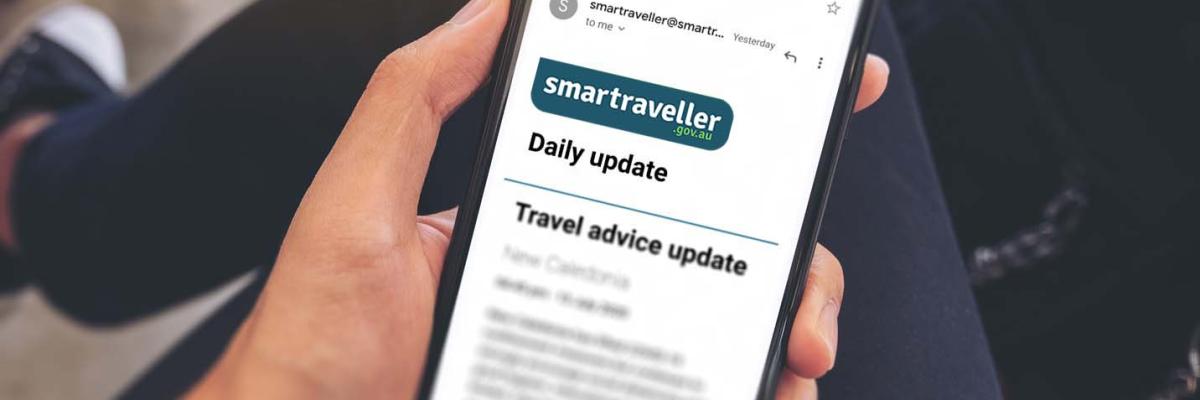
Before you go...
Subscribe for updates.
Sign up to receive travel advice updates for your destination direct to your email, or manage your current subscription preferences.
A Step-By-Step Guide To Applying For An Australian Travel Visa Online
- Last updated Apr 29, 2024
- Difficulty Beginner
- Category Travel
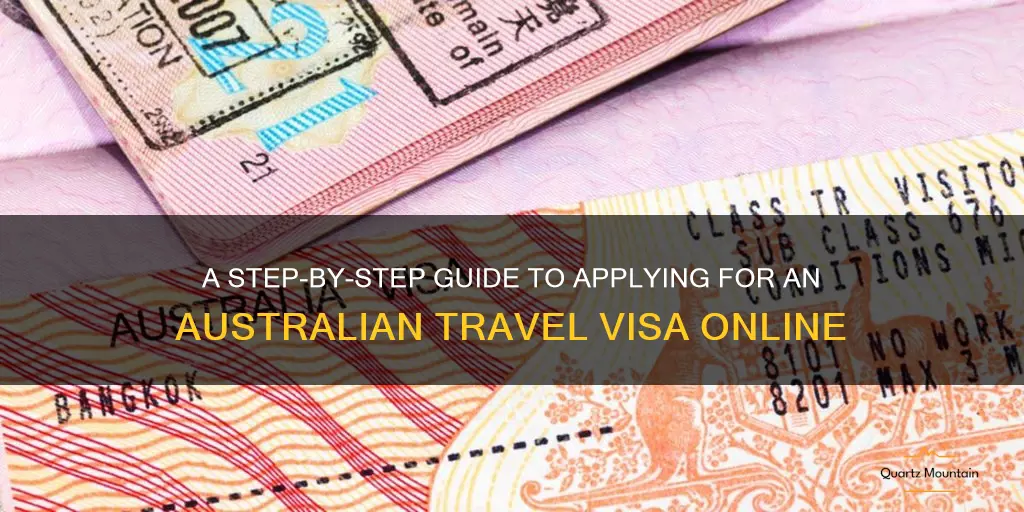
If you have been dreaming of exploring the beautiful landscapes and vibrant cities of Australia, the first step towards your adventure is obtaining a travel visa. Applying for an Australian travel visa can often seem like a daunting task, but with our step-by-step guide, you'll have all the information you need to navigate the online application process with ease. From gathering the necessary documents to filling out the online forms, we will walk you through each stage of the application, ensuring that you have everything you need to make your travel dreams a reality. So, grab your passport and get ready to embark on an unforgettable journey Down Under!
What You'll Learn
Introduction: applying for an australian travel visa made easy online, step 1: gather the necessary documents for your visa application, step 2: complete the online visa application form accurately and thoroughly, step 3: pay the visa application fee and submit your application online.

Are you planning a trip to Australia? One of the first things you need to do is obtain a travel visa. Luckily, the process has been made easy and convenient with the option to apply for an Australian travel visa online. This means you no longer have to go through the hassle of visiting an embassy or mailing your application.
Applying for an Australian travel visa online can save you time and effort. In this blog post, we will guide you through the steps required to apply for an Australian travel visa online, making the whole process a breeze.
Gather your documents:
Before you start the online application process, make sure you have all the necessary documents ready. This may include your passport, proof of accommodation in Australia, proof of financial means to support your travel, itinerary, and possibly an invitation letter if you are visiting family or friends.
Create an account:
Visit the official website of the Australian Department of Home Affairs and create an account. This account will allow you to start your visa application and track its progress.
Select the appropriate visa type:
The Australian government offers various types of visas depending on the purpose of your visit. Choose the visa type that suits your travel plans. The most common visa types for tourists are the eVisitor visa (subclass 651) and the Electronic Travel Authority (ETA) visa (subclass 601).
Fill out the application form:
Once you have selected the correct visa type, you will be directed to the online application form. Fill out all the required information accurately and truthfully. Make sure to double-check your passport details and contact information before submitting the form.
Pay the visa fee:
After completing the application form, you will be required to pay the visa fee. The fee varies depending on the type of visa you are applying for. You can make the payment online using a credit or debit card.
Submit your application:
Once the payment is made, review your application one last time and submit it. You will receive a confirmation email with a reference number, indicating that your application has been submitted successfully.
Track your application:
Using the reference number provided, you can track the progress of your visa application through your online account. It is important to regularly check for updates and respond promptly if any additional information or documentation is requested.
Receive your visa:
Upon approval of your visa application, you will receive your visa electronically. It is recommended to print a copy of the visa and carry it with you during your travel to Australia.
Applying for an Australian travel visa online has made the process more convenient and efficient. By following these simple steps, you can easily navigate through the online application process and obtain your visa hassle-free. Remember to gather all the necessary documents, create an account, select the appropriate visa type, fill out the application form accurately, pay the visa fee, and track the progress of your application. Once approved, you'll be one step closer to an amazing trip to Australia.
Understanding the Visa Requirements for Traveling to Norway
You may want to see also
Before you start applying for an Australia travel visa online, it is essential to gather all the necessary documents to ensure a smooth and successful application process. Here is a list of the documents you will typically need to submit:
- Passport: Make sure your passport is valid for at least six months beyond the intended stay in Australia. It should also have at least two blank pages for visa stamps.
- Visa application form: Fill out the online visa application form accurately and completely. Provide all the required information, including personal details, travel plans, and contact details.
- Passport-sized photographs: Prepare two recent passport-sized photographs of yourself. Ensure that they meet the specific requirements mentioned in the visa application guidelines, such as size, background color, and pose.
- Proof of travel arrangements: Include copies of your confirmed flight tickets or itinerary, showing the dates of arrival and departure from Australia. If you have already booked accommodation, provide confirmation for that as well.
- Proof of financial support: Show evidence of sufficient funds to cover your expenses during your stay in Australia. This can be in the form of bank statements, pay slips, or a letter from your employer stating your income and leave approval.
- Proof of health insurance: Provide evidence of valid health insurance that covers your entire duration of stay in Australia. Make sure it includes medical and hospitalization expenses, as well as medical evacuation if required.
- Character documents: Depending on the type of visa you are applying for, you may need to provide documents proving you are of good character. This can include police clearance certificates from the countries you have lived in for more than 12 months in the past ten years.
- Additional documents: If you are applying for a specific type of visa, such as a student visa or a work visa, you may need to provide additional documents specific to that visa category. These can include acceptance letters from educational institutions or employment contracts.
Make sure to photocopy all the documents you are submitting and keep the copies in a safe place. It's also a good idea to scan all the documents and save digital copies for easy access during the application process.
Remember, the requirements may vary slightly depending on your country of residence and the type of visa you are applying for. It is crucial to check the official Australian Government website or consult with a qualified migration agent to ensure you have the correct and up-to-date information before submitting your visa application.
Traveling Abroad with an H1B Visa: What You Need to Know
When applying for an Australian travel visa online, it is important to complete the online application form accurately and thoroughly. This step is crucial as any errors or omissions can lead to delays or even the rejection of your visa application. Here are some detailed instructions on how to complete the online visa application form correctly:
- Start by visiting the official website of the Australian Department of Home Affairs. Locate the section for visa applications and select the appropriate visa category for your purpose of travel. Make sure you choose the option that best suits your needs, whether it is a tourist visa, business visa, or any other type of visa.
- Read the instructions carefully before you fill out the application form. Ensure that you have all the necessary documents and information on hand, such as your passport details, personal information, travel itinerary, and any required supporting documents.
- Begin the application by providing your personal details accurately. This includes your full name, date of birth, gender, nationality, and passport number. Be sure to double-check the information you enter to avoid any mistakes.
- Specify the purpose of your visit to Australia and the desired visa subclass. Provide a detailed explanation of why you are traveling to Australia, whether it is for tourism, business, or any other purpose. Also, indicate how long you intend to stay in the country and if you have any specific plans during your visit.
- Fill out the travel details section accurately. Enter your intended arrival and departure dates, as well as the cities or airports you will be using. Provide a detailed itinerary of your activities during your stay, including the places you plan to visit and any accommodations you have booked.
- Answer the health and character-related questions honestly and accurately. These questions are designed to assess your eligibility for a visa and your compliance with Australian health and character requirements. If you have any medical conditions or criminal records, you must provide all relevant details and supporting documents.
- Declare any previous visa refusals or cancellations, if applicable. If you have had any visa-related issues in the past, it is important to disclose them in the application form. Failure to do so can result in the rejection of your current visa application.
- Review and double-check all the information you have entered before submitting the application form. Make sure there are no spelling errors or missing details. If possible, get someone else to review the form as well to ensure its accuracy.
- Pay the visa application fee online using a valid credit or debit card. The fee amount will depend on the type of visa you are applying for. Keep a copy of the payment receipt for future reference.
- Submit the application form electronically. Once you have reviewed all the information and made the payment, click on the "Submit" button to complete the application process. You will receive a confirmation email with a unique application ID, which you should keep for tracking purposes.
Remember, it is essential to complete the online visa application form accurately and provide all the requested information. Failure to do so can delay the processing of your visa application or result in its rejection.
Understanding the Importance of the F1 Visa Travel Document Number
Once you have completed your visa application form for an Australian travel visa, the next step is to pay the visa application fee and submit your application online. This step is crucial as your application will not be processed until the fee has been paid.
To pay the visa application fee and submit your application online, follow these steps:
- Gather the required documents: Before proceeding with the payment and submission process, make sure you have all the necessary documents ready. These may include your passport, a scanned copy of your passport information page, a copy of your visa application form, and any supporting documents required for your specific visa type.
- Access the Department of Home Affairs website: Visit the official website of the Department of Home Affairs at www.homeaffairs.gov.au. Look for the section related to visas and find the option to apply for a visa online.
- Select the visa type: Choose the appropriate visa category for your travel purpose. Common visa types include tourist visas, business visas, student visas, and work visas. Read through the requirements and conditions for each visa type to ensure you select the correct one for your needs.
- Create an ImmiAccount: If you don't already have an ImmiAccount, you will need to create one. An ImmiAccount is an online portal that allows you to manage your visa applications and related services. Provide the required information during the registration process and create a secure login.
- Log in to your ImmiAccount: Once you have created an ImmiAccount, log in using your username and password. You will be directed to your account dashboard, which provides options for different visa services.
- Start a new application: Click on the option to start a new visa application. Follow the prompts and select the appropriate visa subclass and type that you determined earlier.
- Complete the application: Fill in all the required details accurately and truthfully. Provide personal information, travel details, employment history, and any other information relevant to your visa application. Ensure you double-check all the information before proceeding.
- Upload supporting documents: Attach any required supporting documents to your visa application. These may include proof of funds, proof of health insurance, and travel itinerary. Follow the specified document format and size requirements.
- Calculate the fee: Use the fee calculator provided on the website to determine the exact amount of the visa application fee. Make sure you have the necessary funds available to complete the payment.
- Make the payment: Choose a payment method from the available options, such as credit card or PayPal. Enter the required details and proceed with the payment. Keep a record of the payment transaction for your reference.
- Submit your application: Once the payment has been successfully processed, review your application one last time to ensure all the information is correct. Submit your application online by clicking the appropriate button in your ImmiAccount.
- Check your email: After submitting your application, you will receive a confirmation email with a receipt and details of your visa application. Keep this email safe for future reference.
Congratulations! You have now successfully paid the visa application fee and submitted your Australian travel visa application online. Your application will be processed by the Department of Home Affairs, and you will be notified of the outcome via email. Be sure to check your email regularly and respond promptly if any additional documentation or information is requested.
Exploring Croatia: Visa Requirements for Travelers
Frequently asked questions.
To apply for an Australia travel visa online, you will need to visit the official website of the Department of Home Affairs or the Australian Government's visa application website. You will need to create an account, fill out the online application form, and submit it along with the required documents and payment.
The documents you will typically need to include when applying for an Australia travel visa online include a valid passport, a recent passport-sized photograph, proof of travel arrangements such as flight tickets, proof of accommodation, bank statements or financial evidence to show sufficient funds to support your stay, and any additional documents specific to the type of visa you are applying for.
The processing time for an Australia travel visa application submitted online can vary depending on various factors such as the type of visa you are applying for, the volume of applications being processed at the time, and the accuracy and completeness of your application and supporting documents. Generally, processing times can range from a few days to several weeks. It is recommended to submit your application well in advance of your planned travel dates.

- Naim Haliti Author Editor Reviewer Traveller

- Viajera Compulsiva Author Editor Reviewer
It is awesome. Thank you for your feedback!
We are sorry. Plesae let us know what went wrong?
We will update our content. Thank you for your feedback!
Leave a comment
Travel photos, related posts.
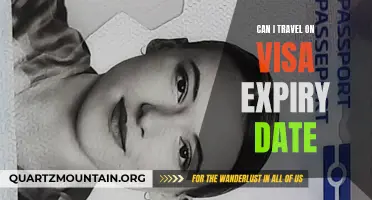
Is It Possible to Travel on the Day Your Visa Expires?
- Mar 18, 2024
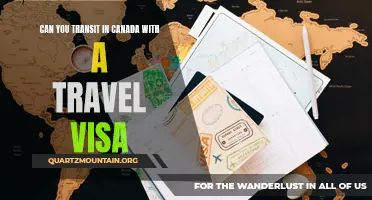
Navigating Travel Visas: Can You Transit in Canada with a Travel Visa?
- Mar 27, 2024
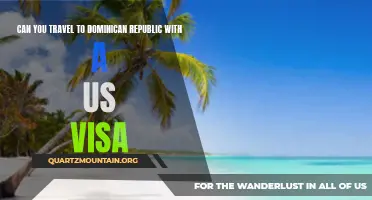
Traveling to the Dominican Republic with a US Visa: What You Need to Know
- Mar 28, 2024

Does VRBO Qualify for Costco Visa Travel Rewards?
- Apr 13, 2024
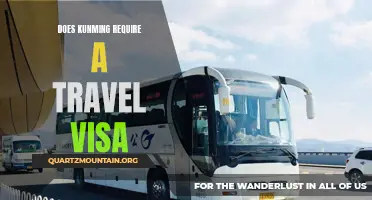
Exploring the Visa Requirements for Traveling to Kunming
- Apr 09, 2024
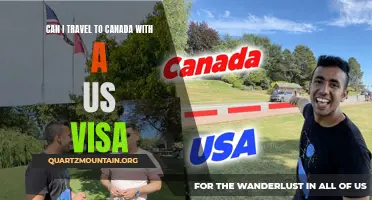
Traveling to Canada with a US Visa: What You Need to Know
- Mar 20, 2024

IMAGES
VIDEO
COMMENTS
14. People walk on the left. On sidewalks, trails and stairs, sticking to the left helps maintain a smooth flow of foot traffic and prevents any awkward dance moves with strangers trying to pass. Some train stations have arrows to direct the flow. This practice also aligns with Australia's left-hand driving tradition.
Make a booking. Deals and travel packages. Find a travel agent. Find accommodation. From the outback to the coast, there's nowhere quite like Australia. Start planning your trip Down Under with our first-timer's guide to travelling Australia.
2.2 How To Plan Your Budget for your visit to Australia. 2.3 Our Money Looks like Monopoly Money. 3 Useful Tips & Friendly Advice for your First Visit to Australia. 3.1 Australian border control is very strict. 3.2 Free walking apps for cities in Australia. 3.3 Scams to avoid in Australia. 3.3.1 Money changing.
Accessible travel around Australia. Travellers of all abilities can enjoy Australia's incredible adventures. Find resources and tips for your trip Down Under. Learn more.
Australia Travel Tips General Australia Travel Tips. While there are many basic travel tips we suggest you use when travelling to Australia, there is also plenty of Australia-specific tips that will make your visit the best it can be. Here are a few we recommend you consider as you plan your trip to visit Australia: Time. One of the most common ...
Planning your ultimate trip to Australia? Here is everything you need to know before you go, from entry requirements to must-visit destinations and itineraries. ... Deals and travel packages. View more. Visa and entry requirements FAQ. Customs and biosecurity. ... A handy guide to the Australian lifestyle. Australian states, territories and ...
Travel like a local in Australia with these under-the-radar vacation destinations. Tips & Advice. 8 of the best places to visit in Australia. Dec 3, 2023 • 8 min read. Beaches. 12 of the best beaches in Australia. Dec 2, 2023 • 7 min read. Articles. Visa requirements for visiting Australia.
Car Rental: Car rentals are the best option for traveling around Australia. Campervans and Caravanning is still a very popular way to explore the continent. Prices for car rentals start at $25 per day and can go up to $100 per day for a premium car. We've used VroomVroomVroom when traveling Australia.
Local travel tips for Australia. Australia is a wide, stunning, varied land. To travel around it well requires great research and good advice. Locals love nothing better than spouting off about their favorite places, the best eats, the must-nots and must-dos.
Complete Australia travel guide (Everything you need to know) This essential Australia travel guide contains everything you need to know to plan your visit - where to go, what to see and lots of practical tips and resources to ensure your trip to (and around Australia) is everything you dreamt of. Welcome to my guide to all things Aussie!
Spring and Autumn are both considered "shoulder season". That means the temperatures aren't too extreme, making this an amazing time to visit Australia. The weather is mild and pleasant in most of the country. Spring is a great time to visit New South Wales, Southern Queensland, and Western Australia.
3. Sydney, New South Wales. Australia's best city for outdoor activities. Sydney is rightfully considered one of the world's most beautiful cities, where the natural splendor of cityside beaches collides with incredible urban architecture, including the Opera House.
I spent nearly two months living on the East coast of Australia and visiting everywhere from The Great Barrier Reef, the Outback, to the street-art-saturated city of Melbourne. My one true travel love is the city of Sydney. It's the birthplace of "The Blonde Abroad.". That's right; I came up with the concept of this very blog while ...
Australia Travel Guide. Last Updated: April 1, 2024. Australia is one of the most popular travel destinations in the world. It's known as a major backpacking, camping, road tripping, and diving destination. Backpacking Australia is considered a "must do" for backpackers. It's a central highlight on the round-the-world trail.
A Coast-to-Coast Guide to the Best New Things to Do in Australia Australia re-opened to American travelers on February 21 with a host of new restaurants, hotels, museums, and more. By Ashlea Halpern
Bring your car on the ferry and explore over a weekend. 9. Marvel at the Milky Way in the Warrumbungle Dark Sky Park. New South Wales/Kamilaroi Country. The night sky unrolls around you each night ...
Guidebooks. Our worldwide travel correspondents bring you the best and most up-to-date coverage of over 7,500 global destinations. Get information on Australia Travel Guide - Expert Picks for your ...
Ultimate AUSTRALIA Travel Guide. Australia is the World's largest island and the smallest, flattest continent on Earth. It is located in the southern hemisphere just west of the international dateline. Our Australia Travel Guide is here to help take the guesswork out of planning your itinerary. Officially part of Oceania, Australia is a ...
Adventure & Hiking Holidays In Australia. Australia Road Trip Guide. Australia Travel Tips. Barossa Valley Travel Guide. Melbourne Travel Guide. Sydney Travel Guide. Kangaroo Island Travel Guide. Other Places To Visit In Australia. Best Tours In Australia.
Plan your dream holiday. From ancient rainforests and famous reefs to outback deserts and mountain peaks, there's a whole world of experiences to discover Down Under. Use our trip builder to plan your perfect adventure in just a few taps. Get started. Use our trip planner to find your dream Australian holiday.
Sydney Travel Guide. Tasmania Travel Guide. Victoria Travel Guide. Western Australia. Best places to visit in Australia. Blue Mountains (New South Wales) World Heritage-listed, the Blue Mountains are a wonderland of ancient forests, deep valleys and lookouts from sheer cliffs, all just an hour or so from Sydney.
Australia Travel Tips & Destination Guide (2023) Christopher Aiello. June 16, 2023. Australia. Start planning your next adventure down under with our Ultimate Australia travel tips destination guide! This sunburnt continent is known worldwide for its beautiful beaches, national parks ecosystem, amazing coral reefs and wildlife found nowhere else.
Australia is a huge country, but for […] y Travel Blog. 13 Sensational Islands in Australia for Your Next Getaway. Story by y Travel Blog ... More Australia Travel Tips.
The Consular Services Charter outlines the consular services and assistance provided by the Australian Government to travellers overseas. ... you can't afford to travel. Read our advice, and download the CHOICE travel insurance guide before you go. View details. CHOICE travel insurance buying guide 2023 (PDF 3.52 MB) News and updates. 04 Apr ...
Applying for an Australian travel visa online can save you time and effort. In this blog post, we will guide you through the steps required to apply for an Australian travel visa online, making the whole process a breeze. Gather your documents: Before you start the online application process, make sure you have all the necessary documents ready.